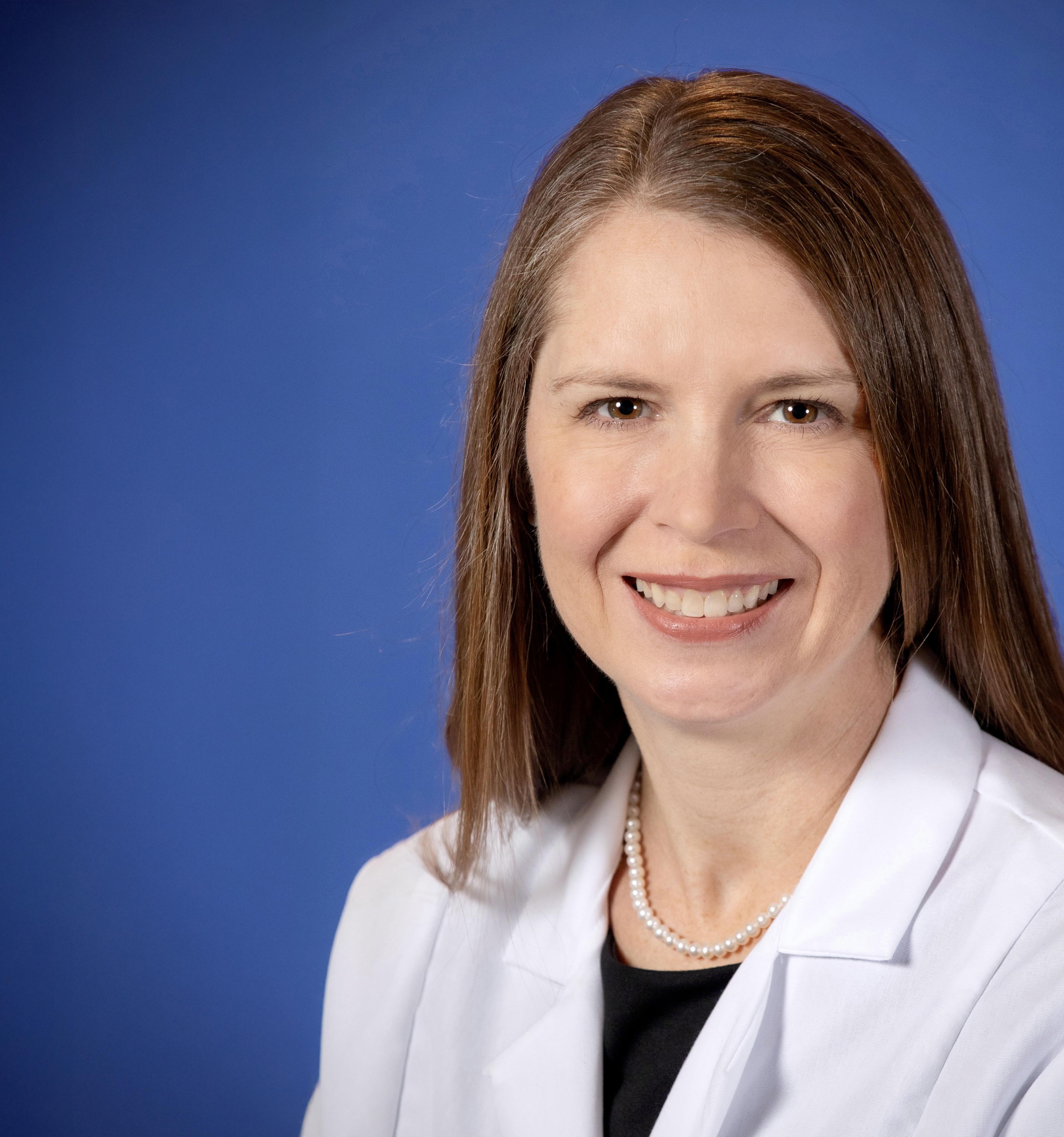

2025 –2026 SAEM BOARD OF DIRECTORS
EXECUTIVE COMMITTEE
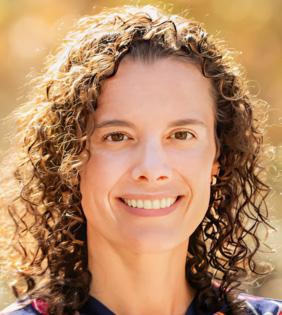
Michelle D. Lall, MD, MHS
SAEM President
Emory University School of Medicine
Board Liaison to:
• Bylaws Committee
• Governance Committee
• Ethics Committee
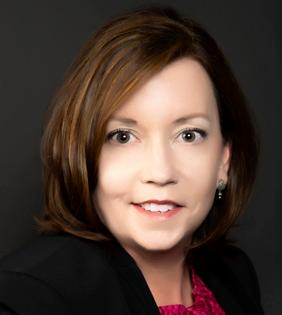
Jody A. Vogel, MD, MSc, MSW
SAEM President-Elect
Stanford University
Board Liaison to:
• RAMS Board
• Committee of Academy Leaders
• SAEM Federal Funding Committee
• Nominating Committee
• Sex and Gender in Emergency Medicine Interest Group
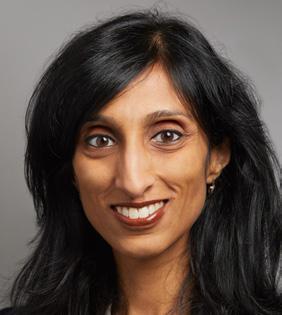
Pooja Agrawal, MD, MPH
Member at Large Yale Department of Emergency Medicine
Board Liaison to:
• Clerkship Directors in Emergency Medicine
• ED Administration and Clinical Operations Committee
• Grants Committee
• Behavioral and Psychological Interest Group
• Pediatric Emergency Medicine Interest Group
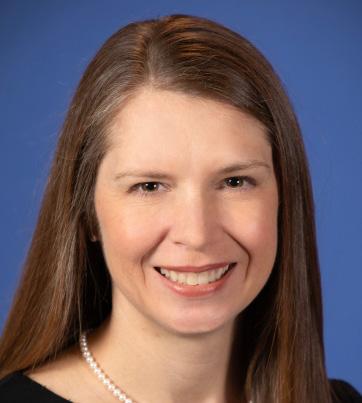
Bryn Mumma, MD, MAS
Member at Large
University of California, Davis
Board Liaison to:
• Academy for Women in Academic Emergency Medicine
• Research Committee
• Disaster Medicine Interest Group
• Palliative Medicine Interest Group
• Research Directors Interest Group
• Trauma Interest Group
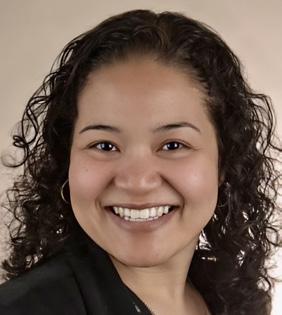
Cassandra Bradby, MD Member at Large East Carolina University
Board Liaison to:
• Academy of Emergency Ultrasound
• Awards Committee
• Critical Care Interest Group
• Oncologic Emergencies Interest Group
• Toxicology/Addiction Medicine Interest Group
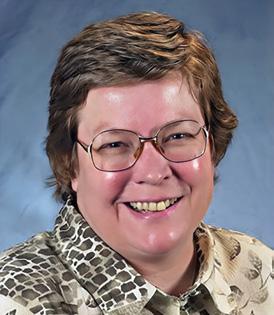
Jane H. Brice, MD, MPH Chair Member University of North Carolina at Chapel Hill School of Medicine
Board Liaison to:
• Faculty Development Committee
• Vice Chairs Interest Group
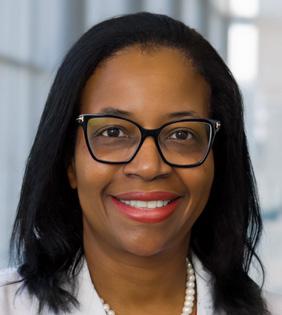
Ava E. Pierce, MD
SAEM Secretary-Treasurer
UT Southwestern Medical Center
Board Liaison to:
• Global Emergency Medicine Academy
• Finance Committee
• Program Committee
• Clinical Researchers United Exchange Interest Group
• Wilderness Medicine Interest Group

Jeffrey P. Druck, MD
Member at Large
The University of Utah
Board Liaison to:
• Academy for Diversity & Inclusion in Emergency Medicine
• Fellowship Approval Committee
• Climate Change and Health Interest Group
• Evidence-Based Healthcare & Implementation Interest Group
• Tactical and Law Enforcement Interest Group
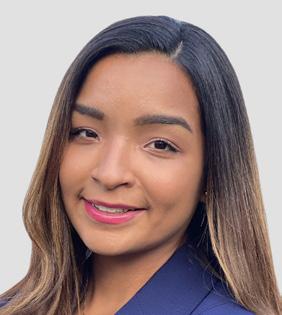
Patricia Hernandez, MD Resident Member
Massachusetts General Hospital
Board Liaison to:
• Wellness Committee
• Innovation Interest Group
• Neurologic Emergency Medicine Interest Group,
• Telehealth Interest Group
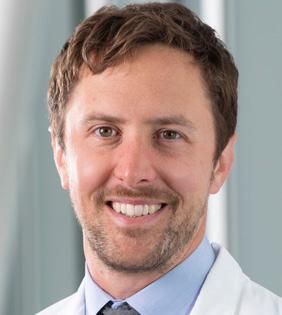
Ryan LaFollette, MD Member at Large University of Cincinnati
Board Liaison to:
• Simulation Academy
• Education Committee
• Airway Interest Group
• Operations Interest Group
• Transmissible Infectious Diseases Interest Group
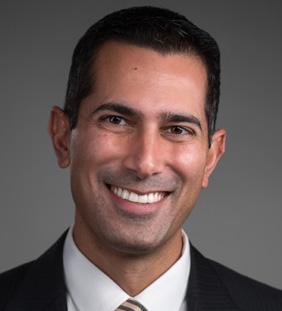
Ali S. Raja, MD, DBA, MPH
SAEM Immediate Past President
Massachusetts General Hospital/ Harvard Medical School
Board Liaison to:
• Academy of Administrators in Academic Emergency Medicine
• Workforce Committee
• Educational Research Interest Group
• Informatics, Data Science, and Artificial Intelligence Interest Group
• Quality and Patient Safety Interest Group
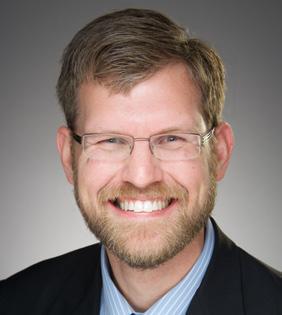
Nicholas M. Mohr, MD, MS Member at Large University of Iowa Carver College of Medicine
Board Liaison to:
• Academy of Emergency Medicine Pharmacists
• Academy of Geriatric Emergency Medicine
• SAEM Federal Funding Committee
• Membership Committee
• Emergency Medical Services Interest Group
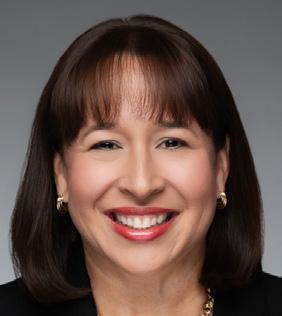
Megan Schagrin, MBA, CAE, CFRE
SAEM Chief Executive Officer
Liaison to:
• SAEM Executive Committee
• Association of Academic Chairs of Emergency Medicine (AACEM)
• RAMS Board
• SAEM Foundation

HIGHLIGHTS
Toolkit
Clerkship Myths: What You Need to Know, Part 1 — The Application Process
Primer for Residents and New Attendings on Focused and Ongoing Professional Practice
from Attendings: What I Learned in My Final Year of Residency
Subspecialty Training in Pediatric Emergency Medicine: Why This Fellowship May Be Right for You
ME: A Simple Framework for Personal Debriefing After Critical Events
Not Just Small Adults: Tailoring Point-of-Care Ultrasound Skills for Pediatric Patients
Point-of-Care Ultrasound in Acute Monocular Vision Loss
Tools Can Enhance, Not Replace, the PatientPhysician Interaction
for Every Body: Advancing Gender-Affirming Care in the
on the Night Shift: Finding Wellness in
7 Continents, 7 Days: Providing
Care From
to

PRESIDENT’S COMMENTS
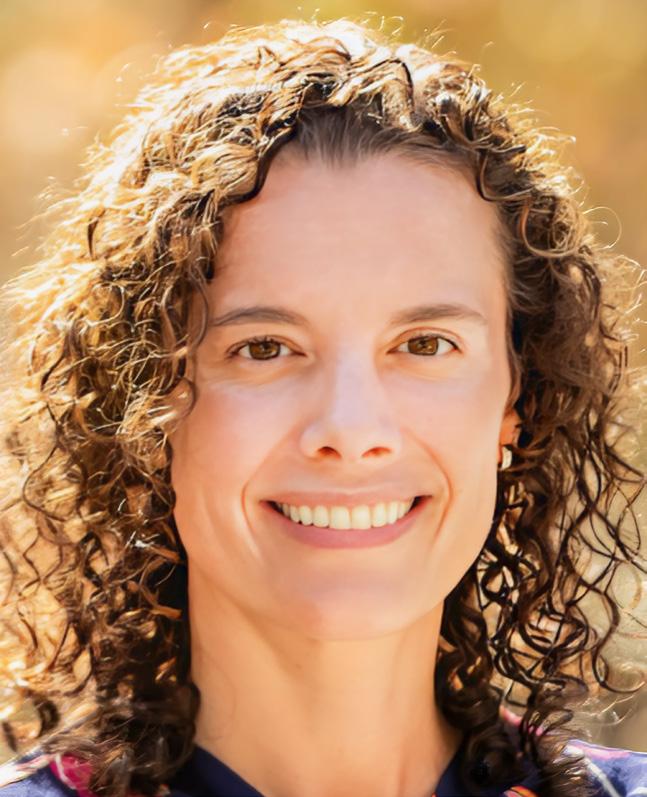
Michelle
D. Lall, MD, MHS
Emory University
2025-2026
President, SAEM
SAEM End-of-Summer Update: Progress, Transitions, and a Call to Collaboration
The end of summer offers a valuable opportunity to slow down, reconnect, and recharge. It’s a season to relax, spend meaningful time with family and friends, and care for yourself — whether that means getting outside, taking a break, or simply doing what brings you joy. By filling your cup and prioritizing rest, you create space for renewal, clarity, and energy for what lies ahead.
July 1 marked an exciting and transformative moment in academic medicine: the start of a new academic year and the arrival of our newest residents and fellows. This annual transition brings fresh energy, new perspectives, and a renewed commitment to learning, research, scholarship, mentorship, and patient care. Welcoming these talented physicians-in-training is both a celebration of their achievements and a reminder of our collective responsibility to guide, support, and inspire the next generation of medical professionals. It’s a time of hope, growth, and shared purpose across our academic emergency medicine community.
However, in conversations with leaders across academic medicine, one theme continues to surface: uncertainty. From shifting policies to evolving demands in research, education, and patient care, the landscape is changing rapidly. Yet amid this, one thing remains constant: SAEM’s commitment to supporting and advancing academic emergency medicine.
SAEM was busy this summer. The new Federal Funding Committee is up and running. Strategic planning is going strong, with member-invited meetings on medical education, research, professional development, and support. These meetings are a time to innovate and think big as we shape the future of our specialty. The Board of Directors is working in collaboration with other EM organizations on several key topics, including the proposed Accreditation Council for Graduate Medical Education (ACGME) changes and the American Board of Emergency Medicine (ABEM) certifying exam. Additionally, we recently launched a new annual meeting submission platform and are
“It’s a time of hope, growth, and shared purpose across our academic emergency medicine community.”

“My deepest thanks to you — our SAEM members and staff — for your unwavering dedication to patients, learners, innovation, and discovery.”
gearing up for a new website, new community sites, and a new testing platform for medical students.
Many thanks to our SAEM academies, interest groups, and committees that have been working tirelessly on behalf of our members. Remember, all academies and interest groups are free to join, and I encourage you to take a few minutes to add those that interest you to your member profile. SAEM committee signup is now open and is a valuable opportunity to contribute to the work of the Society while building leadership and teamwork skills, connecting with diverse professionals, and expanding your network. Your unique committee
sign-up link for the 2025-26 term was sent to your SAEM membership email on Sept. 8, 2025.
My deepest thanks to you — our SAEM members and staff — for your unwavering dedication to patients, learners, innovation, and discovery. Your passion fuels our collective progress. That’s why now, more than ever, it’s essential that we come together and collaborate as a community.
ABOUT DR. LALL: Michelle D. Lall, MD, MHS, FACEP, is professor and vice chair of diversity, equity, and inclusion in the Department of Emergency Medicine at Emory University School of Medicine.
SPOTLIGHT
Championing Equity in Emergency Medicine
A Conversation With Bryn Mumma, MD, MAS
From advancing chest pain guidelines to leading diversity, equity and inclusion initiatives, Dr. Bryn Mumma shares insights on building systems that improve care and opportunity in emergency medicine.
Bryn Mumma, MD, MAS, is professor in the Department of Emergency Medicine at the University of California, Davis. She serves as director of the UC Davis Women in Medicine and Health Sciences (WIMHS) program and is physician lead for the Emergency Medicine Data Curation Unit. She is also chairs the Diversity, Inclusion, and Equity in Emergency Medicine Research Committee.
Dr. Mumma earned her medical degree from the University of Pennsylvania School of Medicine and completed her emergency medicine residency at the University of Pittsburgh Affiliated Residency Program. She then completed a research fellowship at UC Davis, where she earned a Master of Advanced Study in clinical research before joining the faculty.
Her academic interests focus on outcomes and systems of care in cardiovascular emergencies, with particular emphasis on sex and gender differences, cardiac biomarkers, and myocardial infarction. She has co-authored clinical guidelines for both the American Heart Association and SAEM’s Guidelines for Reasonable and Appropriate Care in the Emergency Department (GRACE).
A longtime member of the Society for Academic Emergency Medicine (SAEM), Dr. Mumma has held several leadership roles, including chair of the Grants and Bylaws Committees and faculty for the SAEM Grant Writing Workshop, ARMED course, and the SAEMF/EMF Grantee Workshop. She currently serves as a member-at-large on the SAEM Board of Directors.
In 2018, Dr. Mumma was honored with the SAEM Young Investigator Award for her contributions to emergency medicine research. In 2025, she was recognized with the Academy for Women in Academic Emergency Medicine (AWAEM) MidCareer Award for her career achievements and promotion of women in academic emergency medicine.
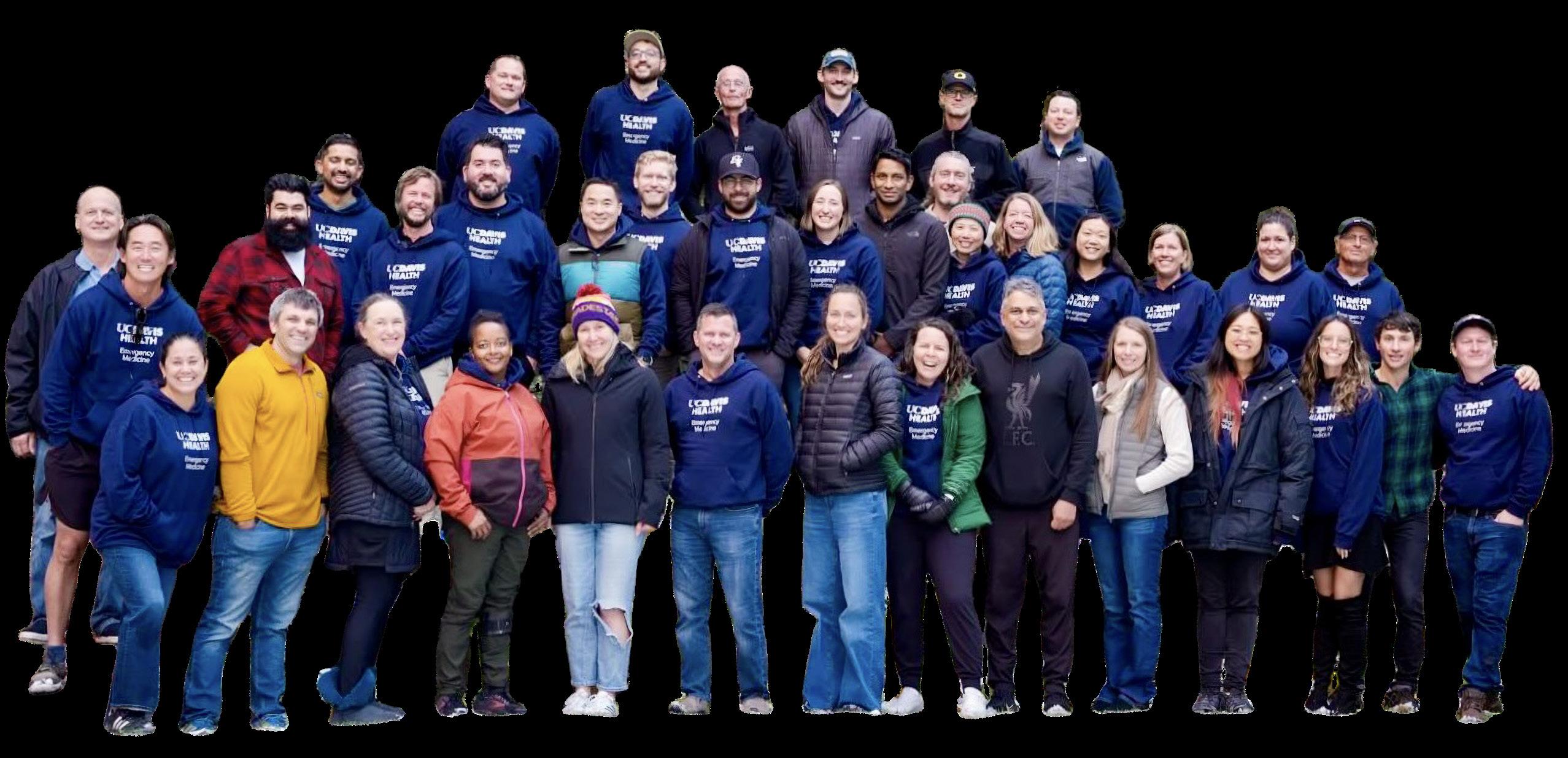

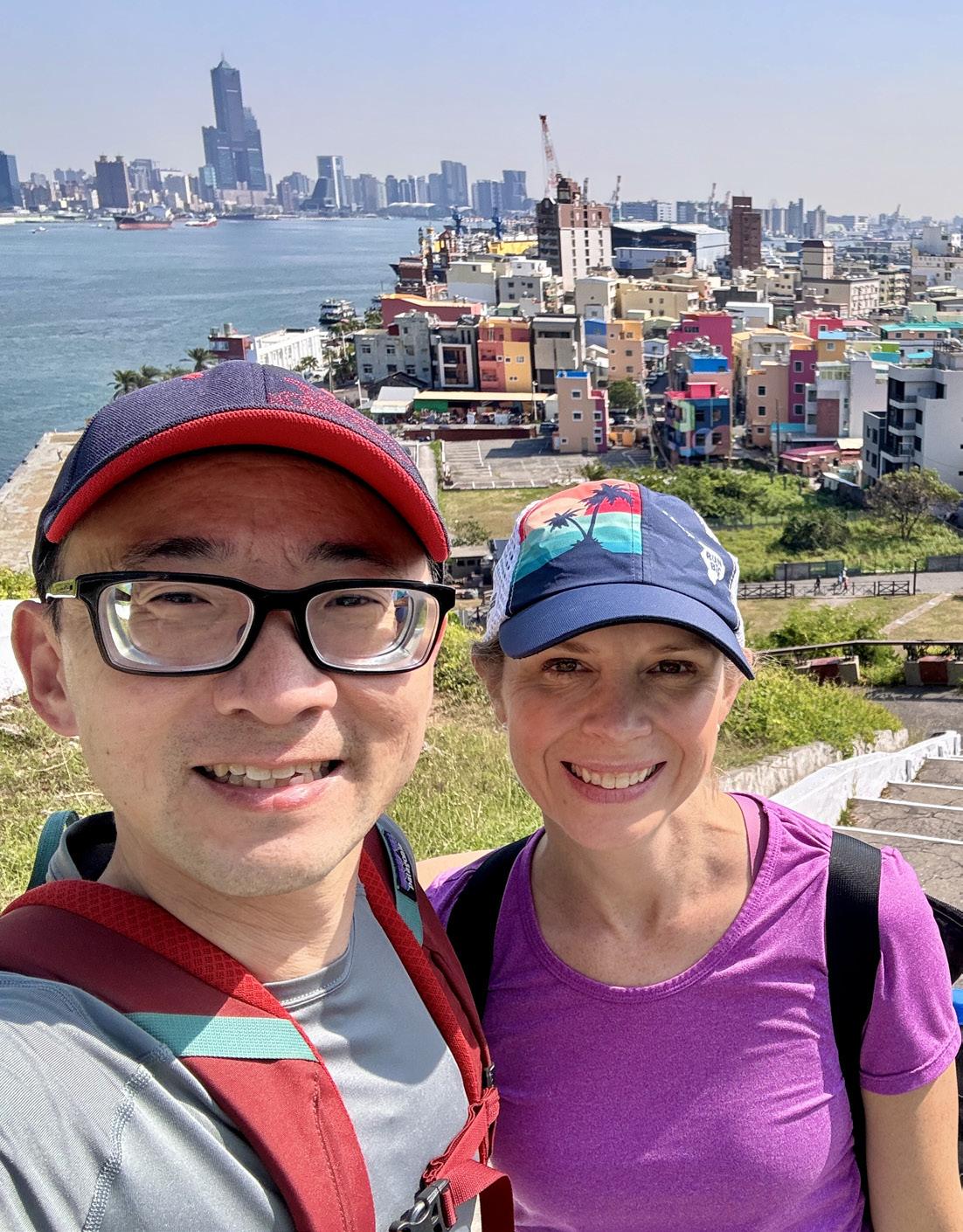
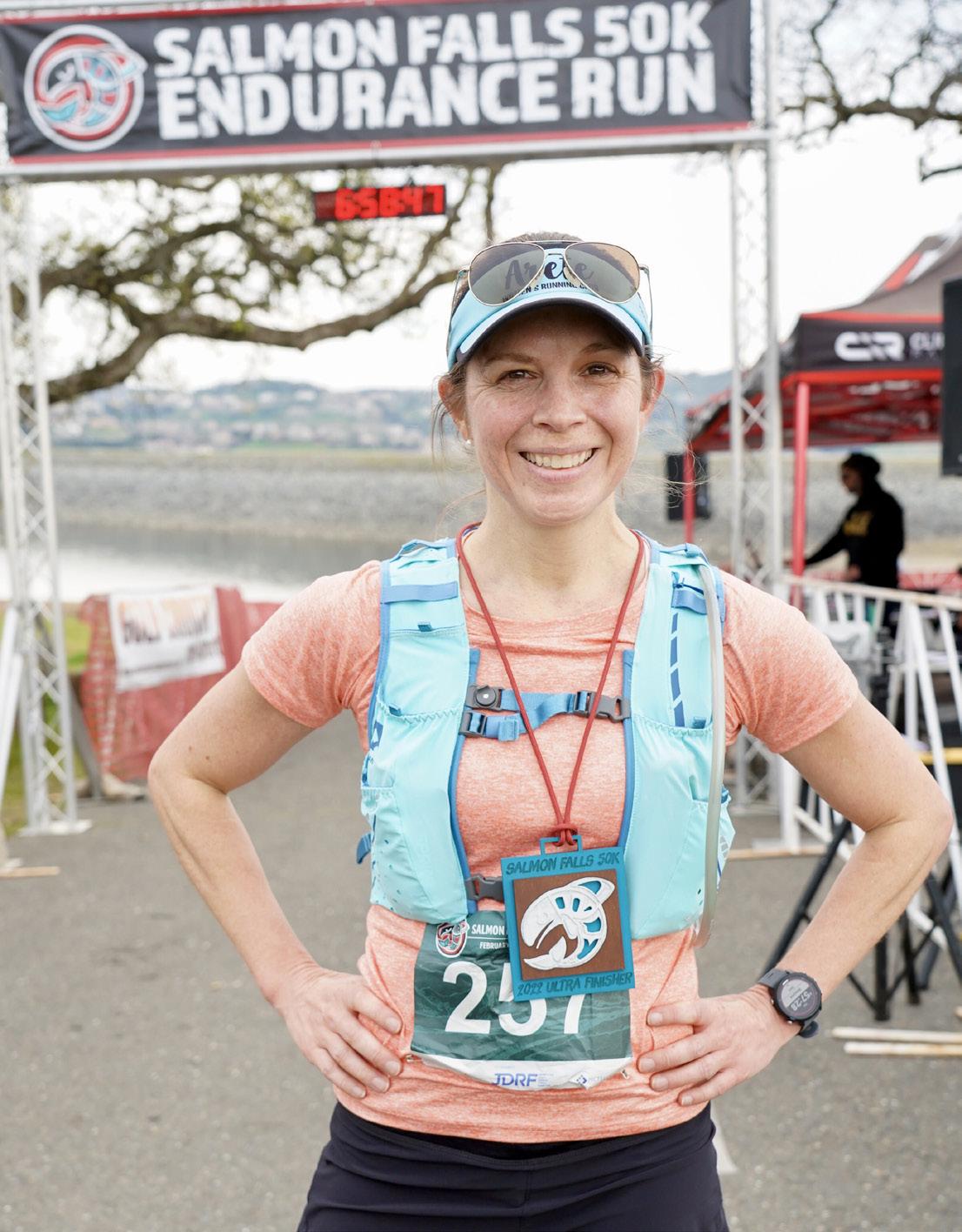
Your journey—from University of Pennsylvania School of Medicine to UC Davis—culminated in leading Women in Medicine and Health Sciences. What experiences most influenced you to champion gender equity in academic medicine?
My journey from Penn to UC Davis has been shaped by moments of both inspiration and frustration. Along the way, I witnessed how structural barriers—both subtle and overt— limit women’s success and contribute to burnout. These patterns became increasingly clear as I moved into leadership positions, where disparities in opportunity, recognition, and support were difficult to ignore. Leading Women in Medicine and Health Sciences (WIMHS) at UC Davis has given me the platform to address these inequities through systemic change, with the goal of creating a more inclusive and equitable environment for all women in academic medicine.
As director of the emergency medicine data curation unit, how do you balance big-data strategies with patientcentered care in the fast-paced emergency department environment?
My clinical work in the emergency department (ED) and the data curation unit has a bi-directional relationship, with each informing the other. My clinical shifts in the ED generate insights and context that are essential for interpreting large datasets meaningfully. At the same time, the data curation unit provides the opportunity to
step back and reflect on the broader system—to identify trends, patterns, and disparities that aren’t always visible in the midst of a busy clinical shift. This dual perspective ensures our data efforts remain grounded in real clinical experiences while driving improvements that ultimately benefit patients and providers alike.
Your work on sex- and gender-based disparities in cardiovascular emergencies is well-documented. What gaps persist in diagnosing and treating women in the emergency department?
Despite growing awareness, persistent gaps remain in how we diagnose and treat women with cardiovascular emergencies in the ED. Women are still more likely to experience delayed diagnoses and less aggressive treatment—particularly for conditions like acute coronary syndrome and cardiac arrest.
Clinical studies you’ve co-authored highlight delays and treatment bias in women with potential acute coronary syndromes. What solutions are emerging to address these critical issues?
Encouragingly, guidelines are beginning to evolve. The 2021 AHA/ACC/ASE/CHEST/SAEM/SCCT/SCMR Guideline for the Evaluation and Diagnosis of Chest Pain was the
Dr. Bryn Mumma at the finish line.
Dr. Mumma and her husband, Dr. Kuang Jen, in Taiwan.
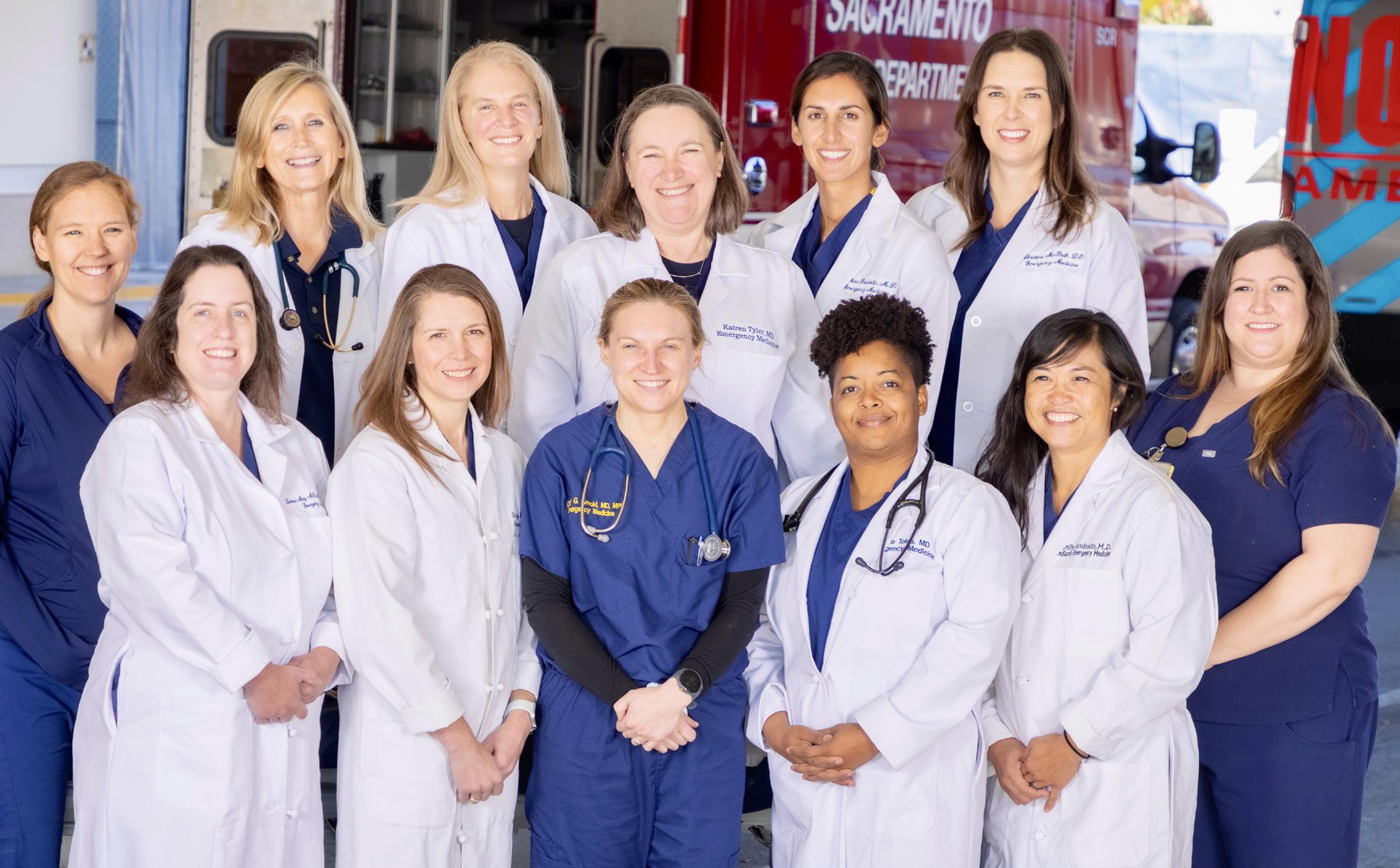
continued from Page 7
first to include recommendations specifically focused on chest pain in women. Likewise, the 2023 AHA Focused Update on Adult Advanced Cardiovascular Life Support explicitly acknowledged sex disparities in cardiac arrest and offered guidance for beginning to address them. These are important milestones—but identifying disparities is only the first step.
Real progress requires deliberate intervention. That includes implementing standardized, evidence-based care pathways that account for sex and gender differences; training clinicians to recognize and manage their own implicit biases; and integrating sex-specific data into risk stratification tools and electronic decision support. By moving beyond awareness toward systemwide change, we can ensure that women receive equitable, timely, and evidence-based care in the ED.
With high-sensitivity troponin assays now in ED protocols, what impact have you observed on diagnostic accuracy and workflow—especially for women?
In the first year after implementation of our high-sensitivity troponin assay and associated clinical algorithm, we achieved a 13% decrease in hospital admissions among ED patients with chest pain, with no change in heart attack diagnoses. We have continued to refine our algorithm and implement pathways for urgent outpatient testing to allow us to safely discharge even more patients.
Leading the WIMHS program, how do you nurture female faculty at different career stages and what mentorship models work best?
Right now, we’re organizing a retreat to celebrate the WIMHS program’s 25th anniversary and rejuvenate our community in the post-COVID era. It will bring together guest speakers and workshops on topics particularly relevant to women in medicine—leadership development, navigating transitions, work-life integration, and more. We’re also intentionally creating spaces for connection— encouraging networking by career stage and professional interests to promote peer mentoring and build community. We want to create an environment where women thrive both personally and professionally.
Within SAEM you’ve chaired both Grants and Bylaws Committees. How have those roles enabled you to advocate for diversity, transparency, and institutional change?
Serving as chair of both the SAEM grants and bylaws committees gave me the opportunity to drive meaningful change at both the structural and strategic levels. In the grants committee, I aligned the requests for applications (RFAs) and instructions across 20 grant categories, streamlining the process for applicants and reviewers alike and creating a template for expansion of the SAEM Foundation (SAEMF) portfolio. I also expanded the Resident Reviewer Program—a mentorship initiative designed to open doors for early-career physicians, particularly those from underrepresented backgrounds.
UC Davis Emergency Medicine.
In the bylaws committee, I led careful reviews of SAEM’s governing documents to ensure they aligned with the organization’s evolving mission and values. We specifically focused on content and language related to diversity, equity and inclusion (DEI).
These leadership positions gave me a deep understanding of SAEM’s structure, values, and strategic priorities, as well as a profound appreciation for the people who sustain its mission. That perspective has been invaluable in my current role on the board of directors.
What are your goals as a SAEM board member, especially around supporting early-career investigators and underrepresented groups in emergency medicine research?
As a SAEM board member, my goal is to use my own knowledge and experiences to uplift others by connecting them with the resources, mentors, and opportunities they need to grow and succeed. SAEM offers so much, but navigating the organization and finding your “home” within it can feel overwhelming—especially for earlycareer investigators and those from underrepresented backgrounds. I want to make that process less daunting by tailoring opportunities for connection, visibility, and longterm engagement in academic emergency medicine.
What drives you outside of work—how do you recharge after grueling shifts or high-stakes research deadlines? Running is my reset button—especially with friends, at sunrise, along the river or on quiet trails. I run with a local running team; I love the rhythm of training, the excitement of competition, and the camaraderie that makes every mile more fun. When I have more time off, I recharge with family vacations in Hawaii. There’s something about swimming in the ocean, hiking up volcanoes, and relaxing in the sun that rejuvenates me in a way nothing else can.
Looking ahead, what emerging trends or technologies in emergency medicine excite you—whether it’s AI diagnostics, precision medicine, or novel cardiovascular therapies?
I’m excited by the ways technology and artificial intelligence (AI) are beginning to reshape emergency medicine in ways that have the potential to improve health care systems for both patients and providers. For example, I’ve been seeing patients with urgent complaints via telemedicine for more than five years. We’re able to manage the vast majority of patients outside the ED, reducing crowding and expanding access.
AI-powered applications have promise for transforming continued on Page 11
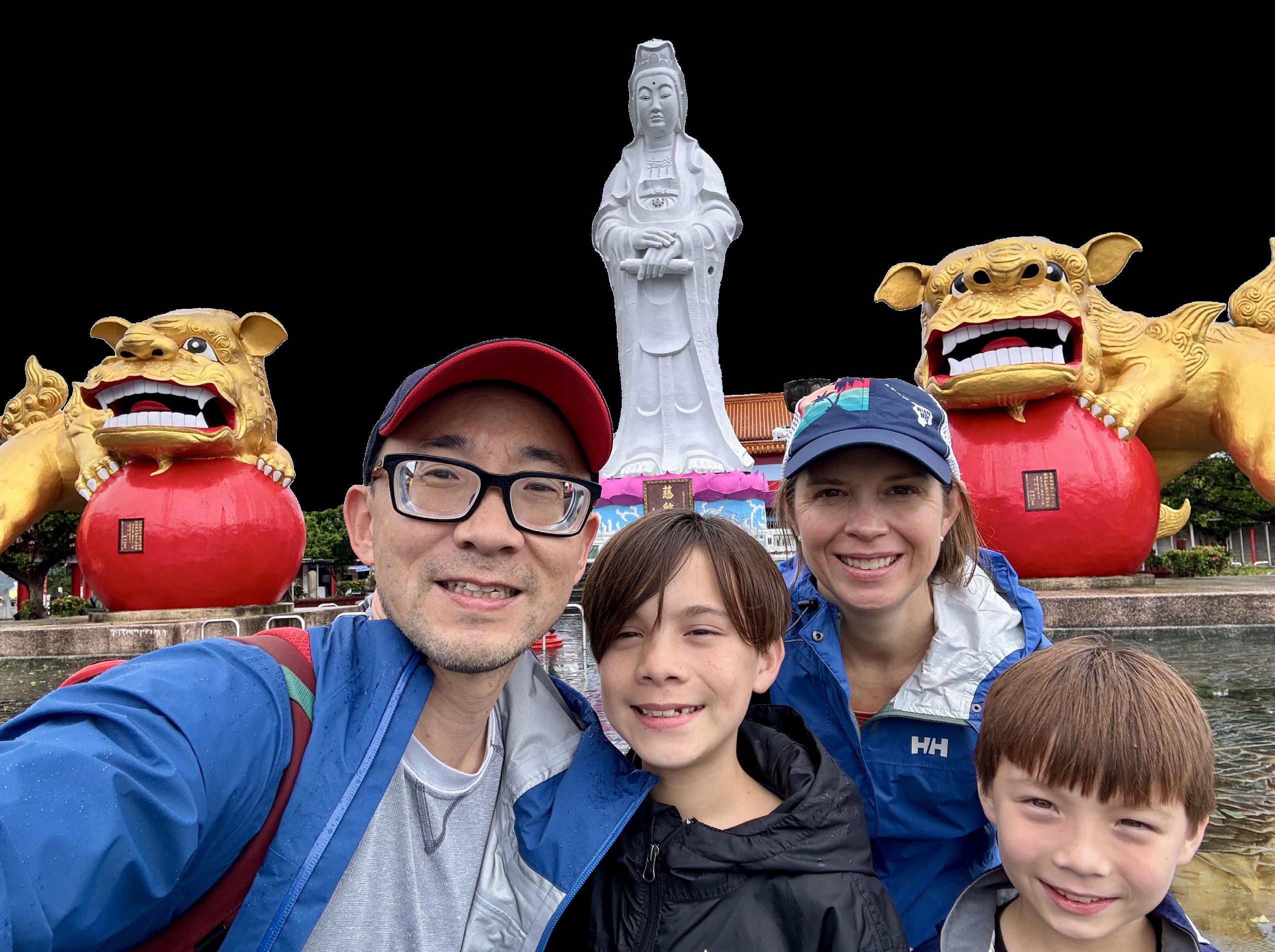
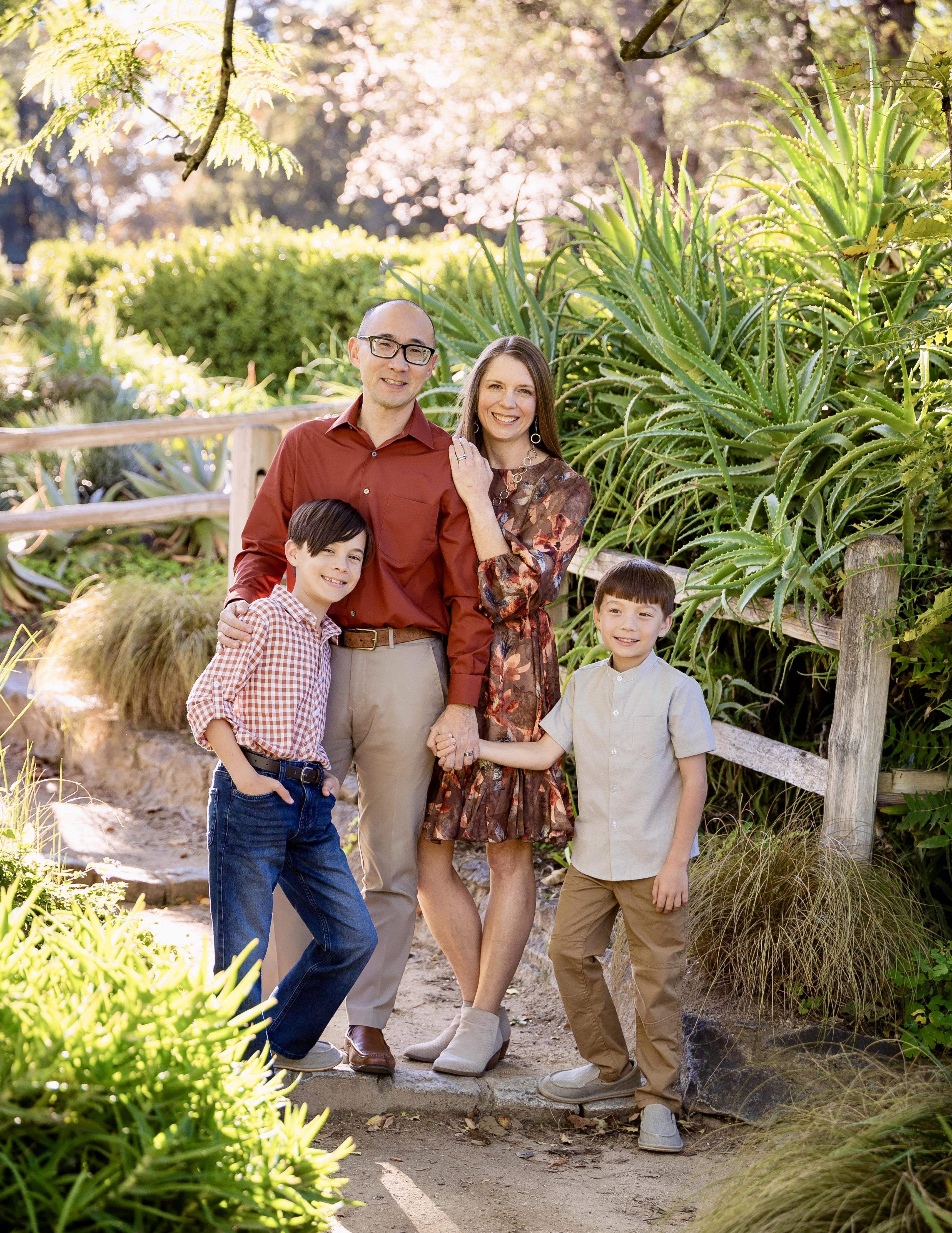
and documentation quality. Beyond documentation, AI has enormous potential in quickly generating a patient synopsis and synthesizing data to refine differential diagnoses. Another area I’m currently studying is AI-assisted electrocardiogram (ECG) interpretation. This technology could enhance diagnosis of time-sensitive conditions like ST-elevation myocardial infarction (STEMI) or arrhythmias, allowing for faster interventions and improved outcomes in time-sensitive conditions. In research, AI-powered chart review could eliminate the need for manual chart review, increasing the efficiency of studies and allowing for the inclusion of larger, more diverse patient cohorts.
Up Close and Personal
Of course, the success of these tools depends on careful training, validation, and continuous oversight to avoid bias and misinformation. But if implemented thoughtfully, AI has the potential to transform emergency care and research—making it more accurate, responsive, and sustainable for both patients and providers. What keeps you most optimistic about the future of women in emergency medicine and academic emergency research? The past year has been particularly challenging, but what keeps me most optimistic about the future of women in emergency medicine and academic research is the way we’ve come together to find creative, collaborative solutions that ensure equity work continues and that our voices continue to be heard.
What’s your go-to comfort food after a long shift in the ED? Dark chocolate.
What’s one piece of advice you’d give your intern medical student self—now that you’ve survived it all?
Seize the opportunities you are presented—because some may never come again. I vividly remember the surgeons inviting me to participate in the transplant surgery for a patient I’d followed throughout my coronary care unit rotation, holding the chilled donor heart in my hands as it warmed and began to spontaneously contract again. Moments like that are rare and humbling. As a trainee, you’re in a unique position to learn from world-class experts. You’re also afforded ample time with your patients. So ask the extra question, learn from every patient and every teacher.
What’s something your residents or students might be surprised to learn about you?
My kids and I have watched every season of “MasterChef” together. We also grow a lot of our own fruits and vegetables at home. Over the years, we’ve gradually filled our garden with fruit trees, berry bushes, and raised beds. Now we have blueberries, blackberries, peaches, figs, citrus, pomegranates, persimmons, apples, tomatoes, zucchini, cucumbers, peppers, melons, and a collection of herbs. (If anyone has tips for getting avocado or cilantro to thrive, I’m all ears!)
If you could instantly become fluent in another language or master any skill overnight, what would it be?
Flying! I love the idea of lifting off the ground and floating above everything and everyone. You’re hosting a dinner party and can invite three guests—alive or historical, medicine or otherwise. Who’s coming and why?
I’d invite Katherine Switzer and Ruth Bader Ginsburg to my dinner party. Katherine Switzer took a calculated risk when she became the first woman to officially run the Boston Marathon, defying deeply entrenched gender norms and paving the way for generations of women athletes. Ruth Bader Ginsburg spent her career systematically dismantling sex and gender inequity through careful, strategic legal action—changing not just laws, but culture. Both women embody the power of persistence, strategy, and vision. I’d love to hear firsthand their perspectives on what they’ve accomplished, the current challenges to gender equity, and strategies to drive progress.

Retiring the Memo: A Process Improvement Approach to Real-Time Clinical Guidance
By Nicholas Stark, MD, MBA; Samir Alkhouri; Noe Villavicencio; William Klotzbier; Waseem Musleh; Isaac Kim; Shaista Afzal;
Flavio De La Torre; Christopher Peabody, MD,
MPH;
Karan Bains, MD, MBA; and Terrance Lee, MD, MPH, on behalf of the SAEM Innovation Interest Group
The Memo Problem in Emergency Medicine
In 2023, our emergency department (ED) leadership worked with a multidisciplinary team to develop a buprenorphine quick-start process. We were proud of what we created, but over time, we realized few clinicians were using it.
When we investigated, we found that clinicians had trouble remembering where to access the workflow: Was it in their email? A group chat? A printed page on the wall?
That’s when we realized our process for sharing and updating workflows needed to keep pace with modern medicine. The provoking question — Where does our sitespecific workflow live? — captures a daily challenge in frontline care.
Traditional memoranda were designed for nonurgent communication, not high-stakes, time-critical decisions. In the ED, they are slow to create, inconvenient to update, and difficult to locate during the chaos of acute care. Lengthy approval chains can turn a simple algorithm revision into a weeks-long
project, forcing clinicians to rely on outdated guidance instead of the latest evidence-based practices.
Building a Lightweight Digital Solution
In response to this gap, E*Drive emerged at Mercy Medical Center Merced (MMCM). Modeled after work pioneered at the University of California, San Francisco (UCSF), the process is intentionally simple:
1. Authors draft a single-page flowchart in Google Slides.
2. Colleagues are invited to comment asynchronously.

“Our experience shows that with cloud-based tools and a culture of rapid iteration, a revised critical care algorithm can reach every clinician before the end of a single shift.”
3. After approval, the final version is uploaded to E*Drive.
We developed a centralized digital information hub for site-specific ED guidelines, accessible on workstations and mobile devices. Because the hyperlink never changes, any revision is instantly live.
Version history is preserved automatically, so mistakes can be rolled back without adding bottlenecks. No restricted software or new passwords are needed unless the document contains sensitive information (such as consultants’ cell phone numbers). The entire system runs on existing Google Workspace licenses, so implementation costs are minimal.
Rapid Results in Pediatrics and Post-Arrest Care
The digital hub proved its value after a pediatric adverse event at MMCM. While a root cause analysis was
underway, more immediate system changes were needed.
Within six hours, ED and hospital leadership co-authored a new pediatric workflow and uploaded it to the hub, instantly distributing it across the department.
A similar streamlined response followed when the critical care team asked ED leadership to improve standardization of post-cardiac arrest patient care. What once required multiple hour-long meetings and logistical delays unfolded seamlessly: the ED drafted a proposed workflow, and intensivist and hospitalist teams edited it remotely. The entire development and approval process took just four days.
Early auditing of the pediatric workflow shows compliance ranging from 94% to 98% in the first six months — illustrating how quickly this type of information sharing can translate into measurable practice change.
Convergence With Emerging Guideline Science
E*Drive’s success reflects a broader movement toward agile, digital clinical guidance. National efforts such as HL7 CPG-on-FHIR® aim to embed evidence-based rules directly into EHRs, while surgical teams are adopting interactive tools like Compass to streamline bedside decisions.
These innovations show that clinicians prefer fast, accessible, and regularly updated guidance over static PDFs or buried memos. This approach offers similar advantages — realtime updates, open access, and easy editing — for site-specific workflows and can be implemented by smaller hospitals and health systems without custom software or IT teams.
on Page 15

“Early auditing of the pediatric 94 percent to 98 percent in the first type of information sharing can
translate
continued from Page 13
A Focus on Sustainability
Several characteristics keep clinicians returning to the digital hub:
• Parallel authoring process: Multidisciplinary participants refine language and design in a single shared document.
• One-page format: Large fonts and color blocks ensure readability on both a 24-inch monitor and a 6-inch phone.
• Usage analytics: Page views and download counts reveal which pathways are most used, guiding continual design and process improvements.
Limitations, Lessons, and Next Steps
The hub is not a fully integrated decision-support engine. While EHR-embedded tools have advantages, they often lack site specificity and the agility to evolve quickly. Many smaller hospitals also lack the informatics workforce to build such systems.
By showing that a low-cost, rapid-update resource works, we hope to provide a replicable model for hospital leaders to improve clinical decision support even with limited resources. Although E*Drive has been implemented in one academic and one community hospital, additional deployments are needed to assess generalizability.
Conclusion: Retiring the Memo Era
The memo era is no longer sustainable for high-acuity care. When EDs rely on static PDFs and buried memos, updates are delayed, adherence drops, and quality of care may suffer.
Our experience shows that with cloud-based tools and a culture of rapid iteration, a revised critical care algorithm can reach every clinician before the end of a single shift. By embracing real-time digital workflows, emergency medicine can match the pace of evolving evidence — and patients will feel the difference. ADMINISTRATION
Read More, Learn More
• Adapting clinical guidelines for the digital age: Summary of a holistic and multidisciplinary approach
• Equitable and effective clinical guidance development and dissemination: Trauma aims to lead the way
• Information and communication technologies for the dissemination of clinical practice guidelines to health professionals: A systematic review
workflow shows compliance ranging from first six months, illustrating how quickly this translate into measurable practice change.”
ABOUT THE AUTHORS
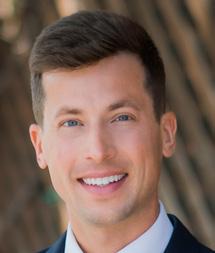
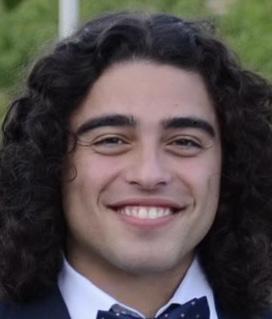
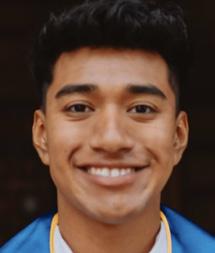
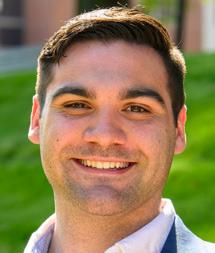



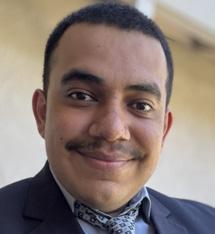
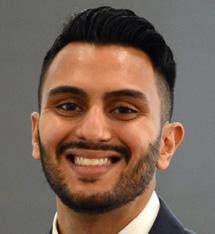
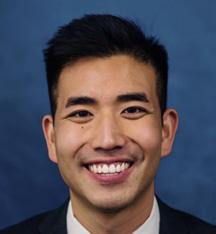
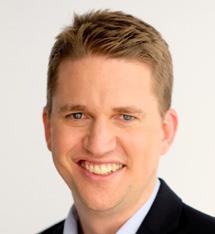
Dr. Stark is chair of emergency medicine and director of the acute care innovation center at Mercy Medical Center Merced. He is also assistant director of the University of California, San Francisco acute care innovation center.
Samir Alkhouri is a second-year medical student at the Kirk Kerkorian School of Medicine at the University of Nevada, Las Vegas. He helped spearhead the E*Drive digital guideline initiative at Mercy Medical Center Merced.
Noe Villavicencio is the E*Drive coordinator overseeing day-to-day operations, including clinical guideline development and site maintenance.
William Klotzbier is a cancer clinical research coordinator at the University of Colorado Anschutz Medical Campus and former emergency department scribe. He supports the E*Drive initiative as a specialist in website development and data analytics.
Waseem Musleh is a first-year medical student at the University of California, Davis School of Medicine. He has been on the front lines of creating and integrating the E*Drive digital guideline initiative at Mercy Medical Center Merced.
Isaac Kim is a third-year medical student at the University of California, San Francisco. He created the custom platform that E*Drive runs on and integrated artificial intelligence vector search functionality.
Shaista Afzal is a research assistant at the University of California, San Francisco in a tuberculosis laboratory. She is part of the ScribeDrive team creating emergency department resources for incoming and experienced scribes.
Flavio De La Torre is an emergency department scribe at Mercy Medical Center Merced. He is part of E*Drive’s scribe engagement team and is responsible for creating and updating scribe.
Dr. Bains is an emergency medicine physician and the inaugural emergency medicine innovation fellow at the University of California, San Francisco.
Dr. Lee is a fourth-year resident at the University of California, San Francisco–Zuckerberg San Francisco General Hospital emergency medicine residency program. He serves as senior resident lead and operations director at Emergency Drive.
Dr. Peabody is director of the University of California, San Francisco Acute Care Innovation Center.

Emergency Medicine Job Design: Lessons from Labor Research
By Nicholas D. Benson, MD, and Keith C. Hemmert, MD, MBA, on behalf of the SAEM ED Administration and Clinical Operations Committee
Insights from research on job design—structuring work processes and assigning tasks—motivation, and reward systems have long delivered substantial value in the manufacturing, services, and technology industries. While emergency care involves unique challenges, lessons from these other industries offer opportunities to improve motivation, satisfaction, and productivity. The need to critically assess emergency department job design has never been more urgent.
Emergency medicine continues to hold the highest burnout rates among physicians, and hospital staff turnover exceeds 18% annually. Academic hospitals are seeing residents unionize more frequently, with votes over the past
decade overwhelmingly resulting in successful unionization—typically 75 to 80 percent in favor. Although conversations about turnover often focus on compensation tensions, research by Allen and colleagues stronger correlation between retention and job satisfaction
Structure incentives around desired behaviors, rather than productivity, for tasks that are repetitive and inflexible, such as Physician-in-Triage (PiT).
Job design can influence unionization sentiment, and unionization can affect job design. In John Garen’s model of the relationship between incentive systems and job design, validated by empirical data, output-based or
“piece rate” compensation works best for flexible, autonomous work, where monitoring effort and behavior is difficult. In contrast, repetitive and inflexible tasks are better suited for monitoring and incentivizing specific behaviors.
Because unions tend to oppose output-based reward systems, Garen found that unionized organizations often redesign work to become more repetitive and inflexible to align with behavior-based incentive structures. In areas where work is already repetitive and inflexible— such as physician-in-triage (PiT) or low-acuity care—operational leaders may improve provider satisfaction by incentivizing specific behaviors, such as flagging likely admissions or ordering symptom-relief
“Emergency medicine continues to hold the highest burnout rates among physicians, and hospital staff turnover exceeds 18 percent annually.”
medications, rather than rewarding output alone. Leaders should ask not how many patients each provider can screen in triage, but which behaviors produce the most effective PiT encounters—and how to reward them. Meet with providers regularly to understand how their goals have evolved, identify rewards that they personally value, and chart a course to achieving those rewards.
Victor Vroom’s Expectancy Theory models the connection between effort and incentive. He observed that worker motivation depends on the belief that increased effort leads to success, and that success translates into intrinsic and extrinsic rewards the worker values. A one-size-fits-all career progression focusing solely on academic advancement can demotivate providers who pursue other trajectories. Furthermore, providers who do not see the connection between effort and success lose motivation over time.
Desired outcomes evolve with experience, and what mattered to a provider at hiring may no longer be relevant. Maintaining motivation requires understanding each provider’s current goals and demonstrating a clear connection between effort, success, and the rewards they value.
Shift incentive-based compensation away from intrinsically rewarding behavior and toward unrewarding, but operationally important metrics. Intrinsic motivation is central to emergency care. Financial compensation—the most tangible
extrinsic motivator—has limited potential to retain talent in challenging environments. Research on cognitive evaluation theory shows that extrinsic rewards can sometimes undermine intrinsic motivation. Dickinson and colleagues found that rewarding work that is already intrinsically satisfying can diminish its intrinsic value. For example, financial incentives tied to patient satisfaction scores may erode the natural satisfaction providers gain from positive patient interactions.
By contrast, tasks such as meeting chart completion deadlines affect revenue cycle management but do not carry intrinsic reward, making them excellent candidates for financial incentives. Designing incentive programs with this distinction can significantly impact provider motivation while advancing operational goals.
Implement mechanisms to provide task closure and outcomes feedback on individual patient encounters.
Hackman and Oldham’s Job Characteristic Theory highlights how job design affects satisfaction, quality, and retention. Key motivational factors include skill variety, task significance, and responsibility for outcomes. A critical element of meaningful work is “task identity,” or seeing a task through from start to finish.
Much of emergency care, especially roles like PiT, lacks continuity and inherently leaves work feeling incomplete. Providers’ motivation and satisfaction decline when workflows make encounters feel unfinished and feedback is absent.

Addressing rising burnout and turnover among emergency providers requires creative solutions that draw on research from other industries. The strong correlation between retention and job satisfaction should not be overlooked in favor of financial incentives alone. Opportunities exist to align incentives with the right metrics, avoid diminishing intrinsically rewarding work, and give providers a sense of task completion. The time to leverage lessons from other fields is now.
ABOUT THE AUTHORS
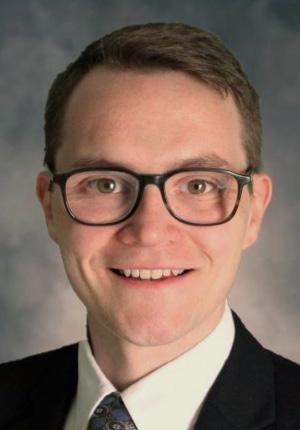

Dr. Benson is an administration and leadership fellow and serves as the assistant medical director in the department of emergency medicine at the Hospital of the University of Pennsylvania.
Dr. Hemmert is an associate professor in the department of emergency medicine at the Perelman School of Medicine at the University of Pennsylvania and serves as the medical director for the emergency department at the Hospital of the University of Pennsylvania.

Rounding with Your Medical School Dean: How Departments Can Strategically Engage Leadership
By Ronny Otero, MD, MSHA, on behalf of the SAEM Vice Chairs Interest Group
The relationship between clinical departments and the medical school dean varies widely across academic medical centers. Institutional history, governance structures, and the integration of medical education within broader health systems shape these variations. In some institutions, the dean functions primarily as an academic leader, championing the school's educational, research, and scholarly missions. In others, the dean may serve a more expansive role, acting in concert with—or
sometimes as—the affiliated health system's chief executive officer (CEO). Several models exist, ranging from collaborative partnerships between the dean and hospital CEO to unified leadership models in which one individual holds both titles. For a comprehensive overview of these leadership configurations, readers should review Weiner’s foundational work in Academic Medicine.
When a departmental chair is informed that the dean will be visiting or “rounding” with their
department, this represents a highstakes opportunity to communicate achievements, challenges, and aspirations strategically. Understanding the dean’s scope of influence and institutional priorities is essential for effective preparation. A successful visit can enhance the department’s visibility and potentially influence future resource allocation. In addition to the department chair's role in identifying key stakeholders, several faculty members will be needed for preparation, as collective
“Clearly articulating both qualitative and quantitative value reinforces the department’s strategic importance and alignment with the medical school's mission.”
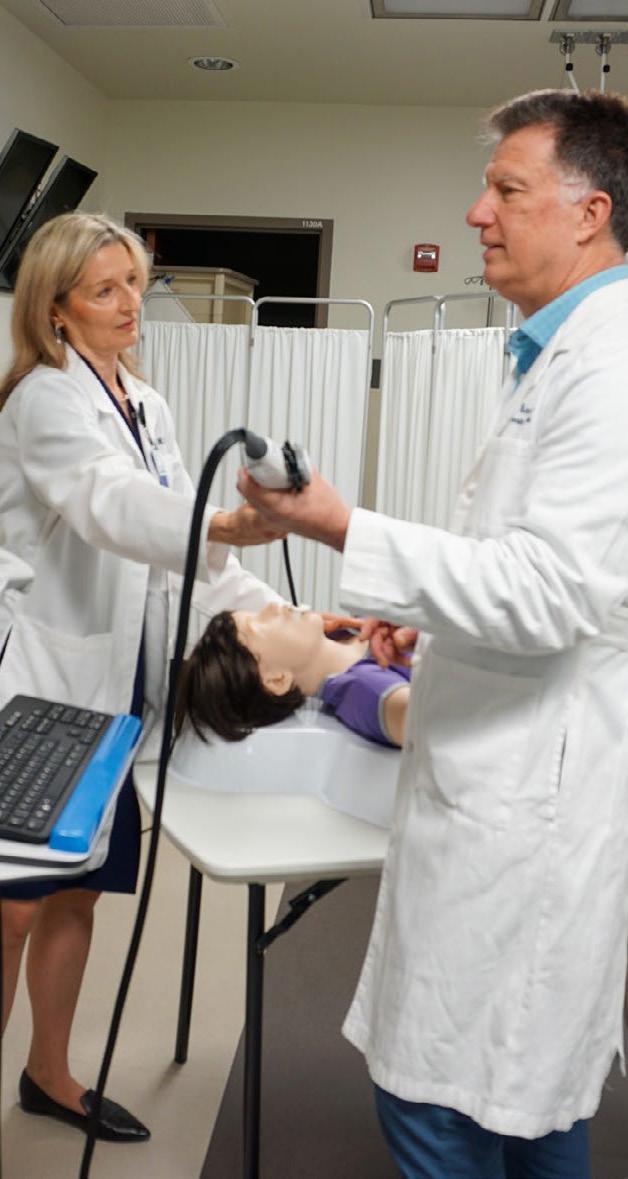
participation can significantly impact the success of the engagement.
Preparation Considerations for Dean’s Rounding
Historical context and new developments
Reflect on the timing and substance of the dean’s previous visits. Has your department undergone recent growth, such as new service lines, research programs, or educational initiatives? Highlighting these developments— such as launching a new observation unit or expanding a research division— can demonstrate responsiveness to institutional priorities and evolving community needs.
Alignment with institutional mission
Prepare to explain how departmental innovations or technologies enhance revenue generation, improve learner outcomes, or advance the medical school's mission. Clearly articulating both qualitative and quantitative value reinforces the department’s strategic importance.
Time management and content delivery
Understand the time allocated for the visit and plan accordingly. Prioritize which clinical, research, and educational spaces the dean should see. For departments spread across multiple sites, such as a division of toxicology located within a children’s hospital, it is crucial to highlight geographic diversity and regional impact. Consider a “dry run” to practice timing, including how long each presentation will take and transitions between spaces.
Faculty engagement and visibility Decide which faculty members should engage directly with the dean. This may include key leaders such as vice chairs or early-career faculty who would benefit from exposure. In our department, four vice chairs—research and scholarship, faculty development, clinical operations, and education— presented brief, focused updates. We also used poster presentations featuring key metrics, photos, and infographics to maximize clarity and efficiency.
Structured interaction and communication strategy
Use transitions, such as walking between areas, as opportunities to convey additional information. Rotate speakers to maximize faculty interaction with the dean. This approach builds rapport and
showcases the depth and breadth of departmental talent.
An insightful article published in the Journal of Healthcare Leadership, “What a Medical School Chair Wants from the Dean,” provides further perspective on the mutual expectations between clinical departments and medical school leadership. It underscores the importance of clear, bidirectional communication in strengthening the academic-clinical interface.
The dean’s visit should be treated not as a routine administrative occurrence but as a strategically significant opportunity. With careful preparation, inclusive participation, and clear messaging, departments can position themselves for enhanced visibility and strengthened alignment with the medical school’s broader vision.
Special thanks to: Dr. Joseph E. Kershner, dean, Medical College of Wisconsin; Ian Martin, system chair, Department of Emergency Medicine; Mary Beth Phalen, vice chair for faculty development; Alisa Hayes, vice chair for education; Aasim Padela, vice chair for research and scholarship; Jamie Jasti, assistant director, Resuscitation Research Center; and Sara Engel, executive administrator, Emergency Medicine and Anesthesiology.
ABOUT THE AUTHOR
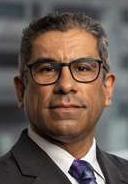
Dr. Otero is vice chair for clinical operations in the department of emergency medicine at Froedtert and the Medical College of Wisconsin. He also serves as a clinical professor of emergency medicine at the Medical College of Wisconsin and directs the Health Executive and Administrative Leadership fellowship.
ASK THE PHARMACIST

When Parkinson’s Medications Are Interrupted: Preventing and Managing Dopamine Agonist Withdrawal in the ED
By Jennifer Giulietti, PharmD, and Maura Kennedy, MD, MPH, on behalf of the SAEM Academy of Emergency Medicine Pharmacist and Academy of Geriatric Emergency Medicine
Parkinson’s Disease: Overview and Clinical Relevance
Parkinson’s disease (PD) is a progressive neurodegenerative disorder in which dopamineproducing neurons in the substantia nigra degenerate, resulting in symptoms of bradykinesia, resting tremor, and rigidity. Treatments for PD include dopamine replacement medications and deep brain stimulators (DBS). As the disease progresses, escalating doses of
dopaminergic medications are often required to meet motor demands, making patients highly sensitive to both dose and timing. Abrupt discontinuation of dopamine replacement therapy or failure of a DBS can trigger a spectrum of withdrawal symptoms known as dopamine agonist withdrawal syndrome (DAWS), including life-threatening conditions that may mimic sepsis or neuroleptic malignant syndrome (NMS).
DAWS: What It Is, Who’s at Risk, and Why It Matters in the Emergency Department
Common treatments for PD include dopamine precursors such as carbidopa-levodopa, synthetic dopamine agonist therapies (DATs) such as rotigotine, and monoamine oxidase-B inhibitors, which inhibit the breakdown of dopamine. As PD progresses, patients may experience “off” periods when motor dysfunction returns between
Carbidopalevodopa*
PO – immediate release
Can crush and administer via gastric tube PO – extended release (Rytary®, Crexont®)
enteral (Duopa®)
Rectal – compounded
Foscarbidopafoslevodopa (Vyalev®)
Subcutaneous infusion – abdomen, arm, or thigh
Rotigotine Transdermal patch
Apomorphine (Onapgo®, Apokyn®)
Subcutaneous continuous infusion, subcutaneous injection, Sublingual (discontinued in US)
Levodopa converted to dopamine in striata, carbidopa inhibits serum decarboxylase to prevent peripheral metabolism of levodopa 0.5 - 1 1.5
Foslevodopa and foscarbidopa are hydrophilic pro-drugs of levodopa/carbidopa
Unpredictable kinetics; special compounding recipe required, may require pH buffering
0.5FDA approved October 2024 but requires Vyafuser pump
Non-ergot dopamine agonist for D3/D2/and D1 receptors 8-27 24
D2 receptor agonist in the caudate putamen 0.1 - 1 ~1
Table 1: Summary of Pharmacologic Therapies Available in the US to Treat Dopamine Withdrawal Syndromes
Convert to levodopa equivalent, may precipitate delirium and hallucination
Severe nausea and QTc prolongation
“Withdrawal may occur after a single missed dose in patients with advanced Parkinson’s disease, making collaboration between emergency physicians and pharmacists critical to ensure patients receive their home dopamine replacement therapy promptly.”
doses, requiring escalating doses or increased frequency of medication administration. Patients are often highly sensitive to the dosing and timing of DATs, and abrupt discontinuation or DBS malfunction can result in DAWS within hours of a missed dose.
DAWS encompasses a spectrum of physical and psychiatric symptoms, including anxiety, agitation, irritability,
fatigue, and autonomic dysregulation, which may lead to nausea, vomiting, diaphoresis, or orthostasis. The frequency of DAWS in the emergency department (ED) is unknown, but it occurs in approximately 15% of PD patients undergoing taper or discontinuation of DATs.
Akinetic crisis and Parkinsonism hyperpyrexia syndrome (PHS) are life-threatening complications that
can mimic NMS or sepsis. Symptoms include dysphagia, dysautonomia, hyperthermia, and elevated serum muscle enzymes. In akinetic crisis, patients demonstrate akinesia, or lack of movement, whereas PHS is characterized by severe rigidity. Although rare, these conditions can progress to rhabdomyolysis, acute
continued on Page 22

ASK THE PHARMACIST continued from Page 21
kidney injury, respiratory failure, or disseminated intravascular coagulation.
Common risk factors for DAWS and PHS include moderate to severe PD, dementia, history of “off” symptoms on therapy, and initiation of neuroleptics such as antipsychotics. DAWS, akinetic crisis, and PHS can be triggered by abrupt change or discontinuation of dopaminergic therapy, DBS failure, infections, or gastrointestinal illness. DAWS and PHS usually respond to dopamine replacement therapies, whereas akinetic crisis may not.
In the United States, about onethird of persons with PD visit the ED annually. With an aging population, the number of ED visits by patients with PD is expected to increase. Common reasons for ED visits and hospitalization include infections, falls, medication complications, and worsening motor function. Because akinetic crisis and PHS can mimic sepsis or NMS, emergency physicians should include these syndromes in the differential diagnosis. Patients with PD are also at risk of DAWS due to delays in home medication administration, especially given increasing ED lengths of stay for older adults.
Preventing DAWS in the ED: Clinical Strategies to Minimize Iatrogenic Harm
Withdrawal may occur after a single missed dose in patients with advanced PD. Emergency physicians and pharmacists should collaborate to ensure patients receive home dopamine replacement
“Abrupt discontinuation of dopamine replacement therapy trigger a spectrum of withdrawal symptoms known as including life-threatening conditions that may mimic
therapy promptly. Strategies include pharmacist-led medication reconciliation, best practice advisories in the electronic medical record, and quality improvement programs which include staff education, and modifications to the electronic ordering system.
If patients cannot take oral medications for clinical reasons, levodopa/carbidopa formulations can be administered via gastric tube or rectally, and alternative dopamine agonist therapies can be given subcutaneously or transdermally (see Table 1 and Figure 1).
Managing DAWS in the Emergency Department: Therapeutic Considerations
Recognition is the first step in managing DAWS. International guidelines recommend a fourstep approach: treat the provoking factor, provide supportive care such as antipyretics, administer dopaminergic therapies, and consider non-dopaminergic treatment if dopaminergic agents are unavailable. Some medications may not be approved in the United States or may have limited availability.
Patients with mild withdrawal should be restarted on home oral medications or reverted to a previous dose if recently changed. For akinetic crisis or PHS, clinicians should identify potential triggers, such as medication changes, addition of neuroleptics, or DBS failure (see Figure 1). Dopamine replacement therapies should be administered in parallel (see Table 1).
For patients unable to take oral medications, crushed carbidopalevodopa can be given via gastric or nasogastric tube. If enteral administration is not feasible,
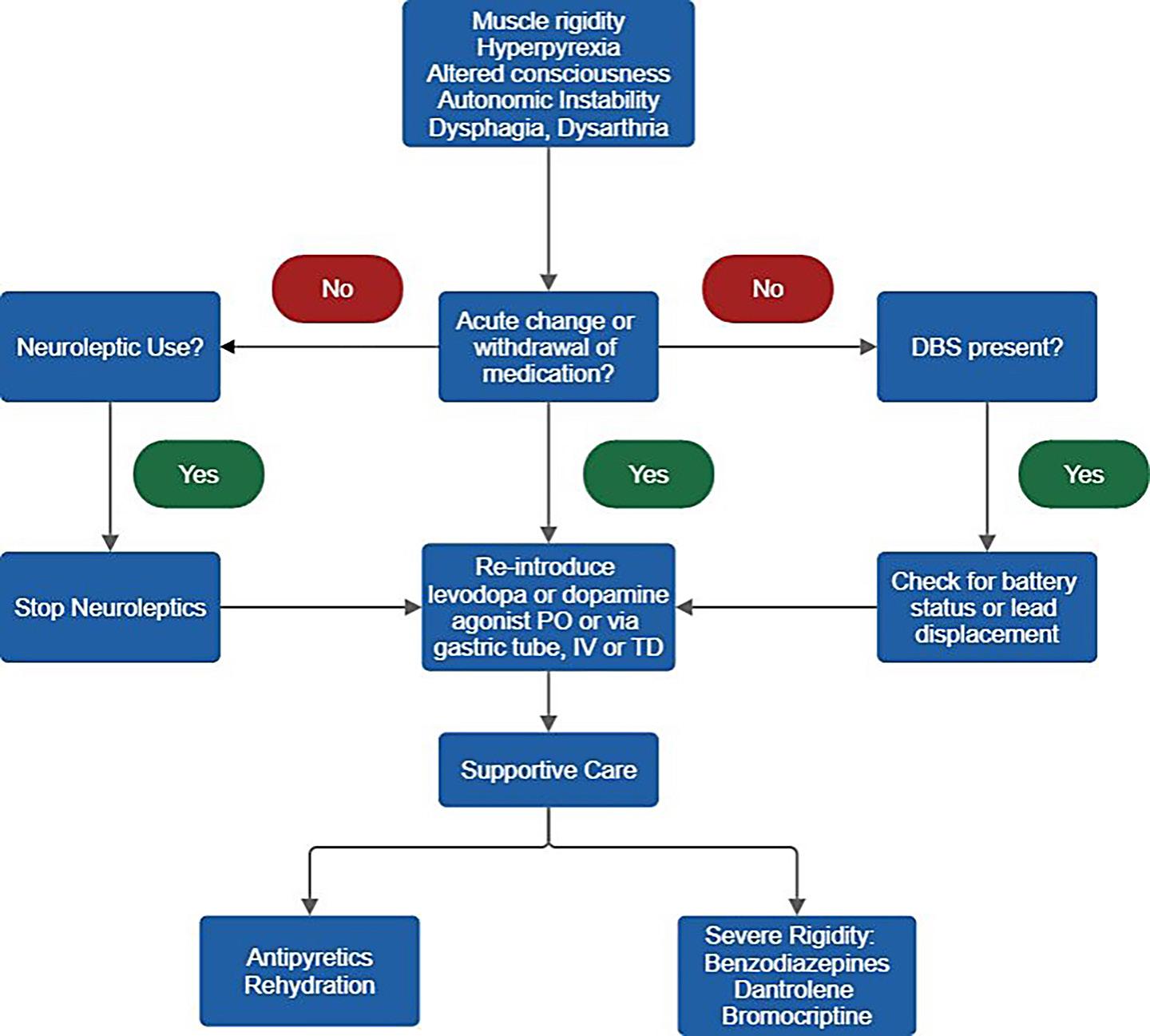
compounded carbidopa-levodopa may be administered rectally, with collaboration from the ED pharmacist. Transdermal rotigotine is another option. When converting from levodopa to rotigotine, use an online conversion calculator or consult the ED pharmacist. Rotigotine’s onset is 8–24 hours, and it carries a high risk of hallucinations; it may be suitable only for select patients not at imminent risk of withdrawal. Subcutaneous prodrugs and other dopamine agonists exist but may have limited hospital availability.
For PHS, supportive care includes intravenous fluids and antipyretics. Severe rigidity may require
therapy or failure of a deep brain stimulator can as dopamine agonist withdrawal syndrome, sepsis or neuroleptic malignant syndrome.”
benzodiazepines, bromocriptine, or dantrolene, similar to NMS management (see Figure 1).
Conclusion
Patients with PD are at risk of dopamine withdrawal syndromes, including life-threatening conditions that mimic sepsis and NMS. Collaboration between emergency physicians and pharmacists is critical to ensure continuation of home PD therapy and prevent severe DAWS
ABOUT THE AUTHORS
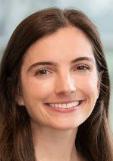
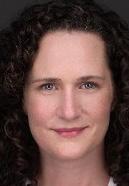
Dr. Giulietti is a staff clinical pharmacist and PGY-2 emergency medicine pharmacy resident at Massachusetts General Hospital.
Dr. Kennedy is an emergency physician and division chief of geriatric emergency medicine at Massachusetts General Hospital.
Figure 1: Approach to management of suspected Parkinson Hyperpyrexia Syndrome (adapted from Prasad et al.). DBS = deep brain stimulator. PO=per os; IV=intravenous; TD=transdermal
CAREER DEVELOPMENT

Career Longevity in Academic Emergency Medicine: Lessons in Balance, Adaptation, and Advocacy
By Mia L. Karamatsu, MD, and Angel Li, MD, MBA, on behalf of the SAEM Academy for Women in Academic Emergency Medicine and the SAEM Academy of Geriatric Emergency Medicine
How do you build a sustainable and fulfilling career in academic emergency medicine? That question guided a recent webinar featuring leaders in the field:
• Rita K. Cydulka, MD, MS, retired from MetroHealth Medical Center in 2014, where she was a tenured professor and vice chair of emergency medicine and associate professor of epidemiology and biostatistics at Case Western Reserve University School of Medicine.
• Marianne Haughey, MD, is professor of emergency medicine and director of faculty development at the Zucker School of Medicine at


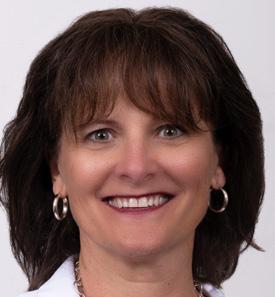
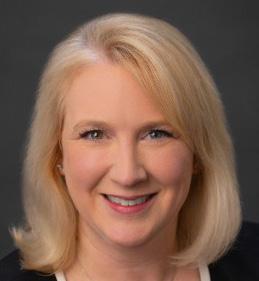
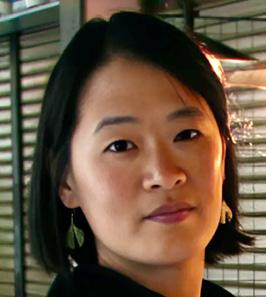
Hofstra/Northwell, where she also practices clinically.
• Diann M. Krywko, MD, is chair of the department of emergency medicine at the Medical University of South Carolina.
• Luan E. Lawson, MD, MAEd, is senior associate dean for medical education and student affairs and professor of emergency medicine
at Virginia Commonwealth University School of Medicine.
• Nancy Ewen Wang, MD, is emeritus professor of emergency medicine and pediatrics at Stanford University, where she was associate director of pediatric emergency medicine for more than 20 years.
The panelists shared strategies for navigating career challenges,
Dr. Rita K. Cydulka Dr. Marianne Haughey Dr. Diann M. Krywko Dr. Luan E. Lawson Dr. Nancy Ewen Wang

“Successful, lasting careers unfold in seasons—not in straight lines—and thrive on intentional choices, community support, and clarity of purpose.”
balancing family and advocating for themselves and others.
Their stories revealed a deeper truth: successful, lasting careers unfold in seasons—not in straight lines— and thrive on intentional choices, community support and clarity of purpose.
Redefining Balance
Work-life balance shifts over time and depends on setting boundaries and cultivating support. As life circumstances evolve, so must the approach to integrating career and personal priorities.
Dr. Cydulka, whose husband is also a physician, emphasized the necessity of dependable childcare. She often felt pulled between home and clinical duties. Dr. Wang aligned her children's needs with clinical responsibilities, bringing them to conferences and working part-time to stay true to her values. Dr. Haughey, with a stayat-home husband, synchronized her schedule with her children’s developmental stages. She stresses the importance of self-care, such as sleep and nutrition. She involved her children in her career to help them understand her absences.
Dr. Krywko offered a candid response: “There is no balance—just own it.” She juggled clinical work with her children’s needs, prioritizing what mattered most. “If your child needs cookies for school, you don’t need to bake the cookies—just buy them.” Dr. Lawson warned against comparing oneself to stay-at-home parents. She advocated outsourcing, being present for key moments and designing a life that reflects personal values. For a time, she and her husband lived apart during the week, allowing full focus on
continued on Page 27

continued from Page 25
work and uninterrupted family time on weekends.
Key Takeaways
• Balance evolves with life stage and personal values
• Boundaries and intentional scheduling are essential
• Presence matters more than perfection
• Support networks at home and at work are crucial
• Children benefit from seeing the impact of your career
Turning Roadblocks Into Growth
The panelists shared how personal and professional challenges became turning points—sparking clarity, resilience and redirection.
“Everyone will face roadblocks,” said Dr. Lawson. “They’re growth opportunities.” She recommended reassessing goals every five years and knowing when it’s time to pivot. Early in her career, she shifted from community practice back into academic medicine.
Dr. Haughey advised against letting emotional loyalty to an institution hinder personal growth. “Don’t be afraid to leave,” she said. “Focus on what you’re going toward.” After facing challenges with leadership, she gained clarity on her values and honed her leadership approach, insights that shaped her next career move. She credited her smooth transition to the strong professional networks she had built over time.
Dr. Cydulka began her academic career during the early days of emergency medicine as a specialty.
Realizing advancement within her institution might be limited, she sought opportunities through national organizations like SAEM and ABEM. “Look beyond your institution,” she advised.
Dr. Krywko encountered a “glass ceiling” a decade into her role and decided to move across the country. “You don’t have to wait for burnout,” she said, encouraging others to reflect and slow down when overwhelmed.
Dr. Wang recounted how her passion for education initially took a backseat to research. She leaned into research to stay in her first job—an unfamiliar but rewarding path. She encouraged flexibility: shift timelines, work part-time or focus on family when needed. “Challenges,” she said, “are opportunities to grow.”
Key Lessons
• Change fosters growth, even when it’s uncomfortable
• Don’t stay where your values are unsupported
• Seek mentorship and broaden your network
• Career paths are nonlinear—and that’s okay
• Be open to roles outside your original plan
Learning to Advocate for Yourself (And Others)
The panelists acknowledged that advocacy was not something they did well early in their careers—it developed through trial, mentorship and experience.
Dr. Lawson emphasized building a reputation for reliability. Saying “yes” is powerful, but only if followed by consistent delivery. “Build a track record of success,” she said. “That’s what leads to bigger opportunities.”
“Everyone will face roadblocks. They are growth opportunities.”
Dr. Krywko treated negotiation as a skill to be practiced: “Business is business—don’t take it personally.” She recommended rehearsing negotiations with trusted peers and seeking advice from mentors.
Dr. Haughey encouraged creating a personal “board of directors”—a small, trusted group to guide key decisions. She suggested interviewing every few years, even without plans to leave. “It reminds you of your value.”
Dr. Cydulka, once the only woman in her department, stressed choosing battles wisely and focusing on advocacy that matters—for yourself, your patients and your team. Dr. Wang expanded the idea of advocacy beyond the individual. “As you grow, use your voice to advocate for others too,” she said.
Key Takeaways
• Self-advocacy is a learned skill
• Consistency builds credibility
• Mentorship and peer support are essential
• Know your value to negotiate effectively
• Lift others as you advance
Final Thoughts
Career longevity in academic emergency medicine doesn’t depend on rigid plans or flawless execution. It grows from reflection, reinvention and relationships. With purpose, flexibility and support, the journey—though rarely linear—can be profoundly meaningful.
ABOUT THE AUTHORS

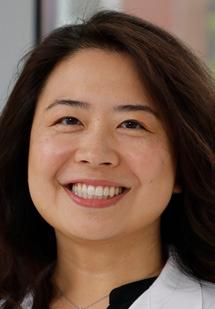
Dr. Karamatsu is an assistant professor of emergency medicine and pediatrics and director of physician well-being in the division of pediatric emergency medicine in the department of emergency medicine at Stanford University. Dr. Li is an assistant professor of emergency medicine and medical director of the observation unit at The Ohio State University.
CULTURAL AWARENESS

Personalized Emergency Care: Using Action Plans to Support Patients With Disabilities
By Richard Sapp, MD, MS; Christian Pulcini, MD, MEd, MPH; Cori Poffenberger, MD; and Jason M. Rotoli, MD, MS, on behalf of the SAEM Academy for Diversity and Inclusion in Emergency Medicine Accommodations Committee
Introduction
In 2018, one in four individuals in the U.S. (61 million) reported having a disability. People with disabilities often experience significant health care disparities because the U.S. health care system is insufficiently prepared to recognize and address their needs. Systemic barriers, limited provider education, and ableist attitudes contribute to these disparities.
People with disabilities are higher utilizers of the emergency department (ED) than those without disabilities, making equitable, patient-centered care essential.
In the fast-paced, high-stress ED environment, clear communication is critical. Common challenges providers face when caring for patients with disabilities include:
1. Difficulty communicating symptoms or medical history
2. Lack of awareness of specific disabilities or needs
3. Delays in delivering appropriate care due to insufficient history of present illness
4. Risk of misdiagnosis or inadequate management
5. Increased patient anxiety or distress
Accommodations for communication and adaptations to the clinical environment vary widely across the disability community. One valuable tool to meet individual needs is an Emergency Care Action Plan (also called a Healthcare Passport or Acute Care Plan). These plans facilitate communication, ensure continuity of care, and improve acute care outcomes for this vulnerable population.
What Are Emergency Care Action Plans?
An Emergency Care Action Plan is a personalized, portable document or digital record summarizing an

“People with disabilities are higher utilizers of the emergency department than those without disabilities, making equitable, patient-centered care essential.”
individual’s medical history, disabilityrelated information, emergency care needs, communication preferences, and other pertinent details. These plans are typically developed in partnership with patients, their support systems, and their primary and specialty care providers. They serve as accessible resources that bridge knowledge gaps between different care settings.
Key Components of Emergency Care Action Plans
• Personal identification and emergency contacts
• Medical diagnoses and history
• Support team (primary care physician, specialists, family, other supports)
• Medications and allergies
• Communication preferences
• Specific support needs during medical treatments
• Emergency care instructions and accommodations
• Social and psychological considerations
• Signs and symptoms of prior ED visits with corresponding diagnoses
Emergency Care Action Plans can save time in high-pressure situations by providing pre-collected, up-to-date information, streamlining decisionmaking. They also help ensure patients’ voices are heard, particularly for those who may have difficulty expressing their needs, promoting dignity and autonomy.
Evidence Supporting Emergency Care Action Plans
Research supports the use of Emergency Care Action Plans for
more equitable care, including:
1. Improved communication and safety
2. Enhanced patient satisfaction
3. Reduced hospital admissions and readmissions
4. Facilitated tailored interventions
In 2018, Heifetz et al. found that patients with intellectual and developmental disabilities (IDD) benefited from Emergency Care Action Plans, which improved communication and provided helpful information. Additional research in the U.K., Australia, and Ireland showed that healthcare passports support information sharing, patient autonomy, and person-centered care.
However, these tools are often
continued on Page 31
“Emergency providing pre-collected,
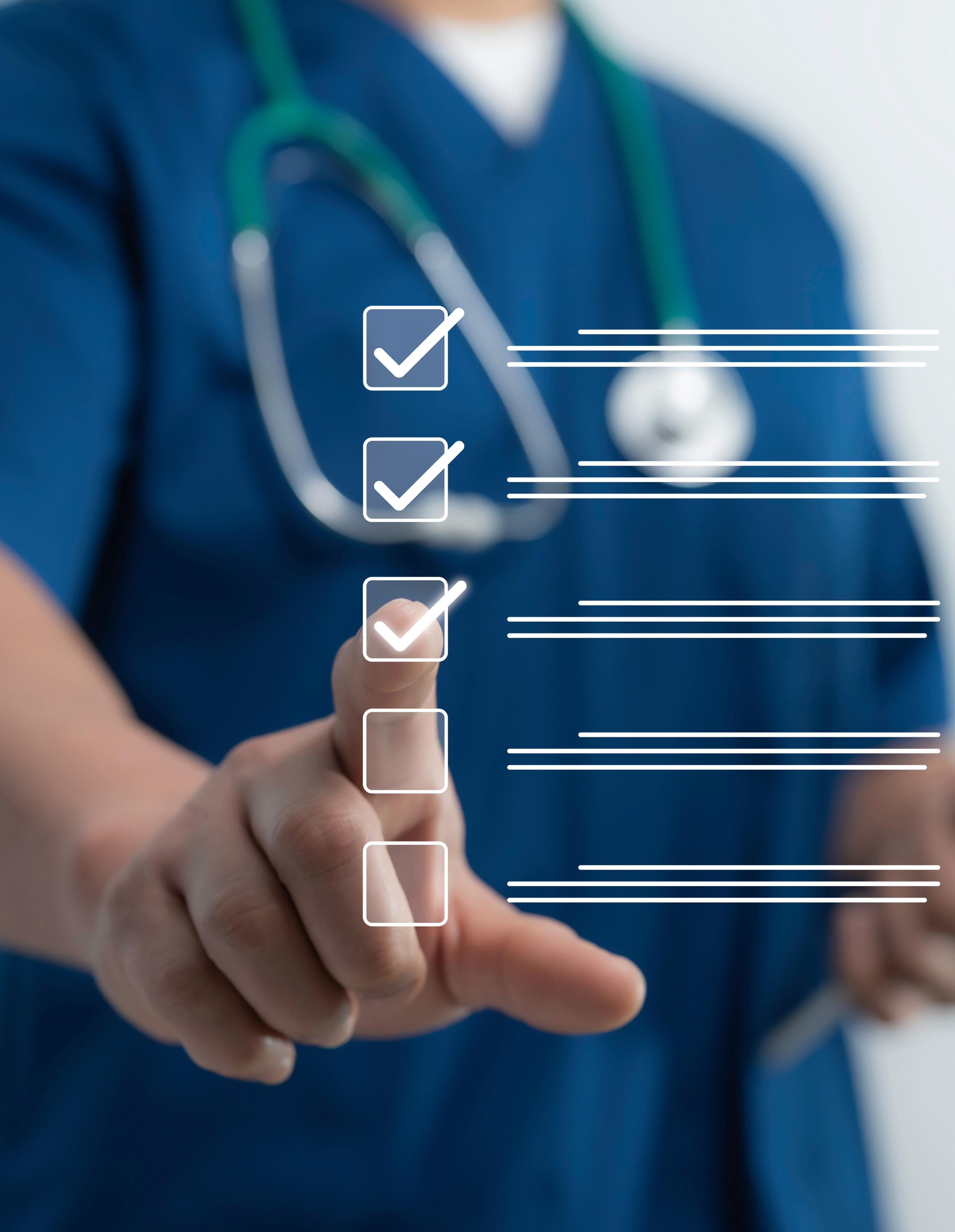
“Emergency Care Action Plans can save time in high-pressure situations by pre-collected, up-to-date information, streamlining decision-making.”

CULTURAL AWARENESS
continued from Page 29
underutilized due to poor clinician engagement, time constraints, and limited staff training. In 2025, Sapp et al. found that emergency medicine residents who used Emergency Care Action Plans overwhelmingly reported them as helpful in caring for patients with disabilities.
Recommendations from current literature emphasize standardization, improved training, organizational support, and broader healthcare system adaptations to complement action plan use.
Barriers to Implementation
Despite their benefits, several challenges limit widespread adoption:
• Lack of standardization: Variability in format and content can reduce effectiveness.
• Limited awareness: Many healthcare professionals are unfamiliar with action plans or uncertain about how to use them.
• Accessibility and maintenance: Plans must remain up-to-date and readily available, especially during emergencies.
• Technological barriers: Digital plans require robust infrastructure, active patient engagement, and institutional collaboration with electronic health record (EHR) systems for seamless integration.
Strategies to Optimize Use
To maximize the utility of Emergency Care Action Plans in the ED:
1. Develop standardized, adaptable templates that align with best practices.
2. Encourage active involvement from patients, families, and healthcare teams in creating and maintaining
plans, fostering accuracy and ownership.
3. Train healthcare professionals on the purpose, content, and respectful use of action plans.
4. Integrate plans into EHR systems for seamless access during emergencies.
Advocating within your ED and collaborating with other specialties— such as pediatrics, internal medicine, and family medicine—can help create effective plans and highlight their value in supporting patients with disabilities.
ABOUT THE AUTHORS

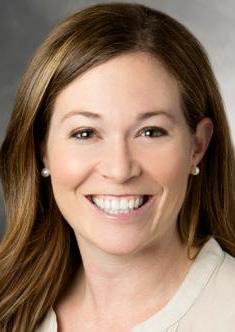
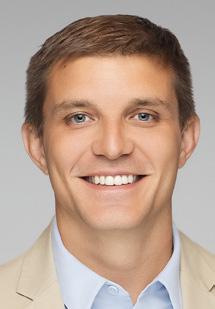
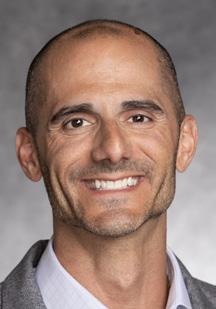
Dr. Sapp is the medical education fellow at Massachusetts General Hospital and Brigham and Women’s Hospital.
Dr. Poffenberger is a professor of emergency medicine at the University of New Mexico.
Dr. Pulcini is a pediatric emergency physician at the University of Vermont Medical Center and UVM Children’s Hospital, as well as an assistant professor of emergency medicine and pediatrics at the University of Vermont Larner College of Medicine.
Dr. Rotoli is an attending emergency physician and associate professor of emergency medicine at the University of Rochester Medical Center. He serves as associate emergency medicine residency program director and director of the Deaf Health Pathways humanities elective at the University of Rochester School of Medicine and Dentistry.

Creating a Culture of Lactation Support in Emergency Departments
By Kristin Lewis, MD, MA; Christina Cantwell, MD; and Adriana Olson, MD, MAEd, on behalf of the
Academy for Women in Academic Emergency Medicine
As emergency medicine (EM) continues to advance equity, inclusivity, and physician wellness, it is imperative to address an underrecognized challenge: supporting lactating physicians. Breastfeeding and pumping offer numerous health benefits for both the parent and their infant. Lactation is not just a personal endeavor; it is a clinical, occupational, and institutional issue. EM program and institutional leaders have a responsibility to create systems that support the physiological needs and professional development of physician parents.
Lactation Challenges in Emergency Medicine
Breastfeeding and pumping are physiologically demanding. The
American Academy of Pediatrics (AAP) recommends exclusive breastfeeding for the first six months and continued breastfeeding for up to two years. For lactating individuals, this means expressing milk every two to four hours for 15 to 30 minutes per session, totaling four to 10 sessions per day depending on postpartum timing and other factors. Failing to maintain this rhythm can result in complications such as clogged ducts, mastitis, diminished milk supply, and psychological stress.
Now, consider these demands in the context of a chaotic, unpredictable, high-acuity emergency department (ED), with a culture historically unsupportive of taking
breaks. Residents face amplified barriers: shift unpredictability, stigma, guilt, and lack of scheduling control. These structural and cultural challenges often lead to earlierthan-desired cessation of lactation and increase the risk of burnout and attrition.
How Programs Can Support Lactating Physicians
Understand Legal Requirements
Federal and accreditation standards provide a floor, not a ceiling, for lactation accommodations. The PUMP Act mandates access to a private space for pumping for one year postpartum and “reasonable” break time but leaves timing and enforcement to employers. The
SAEM
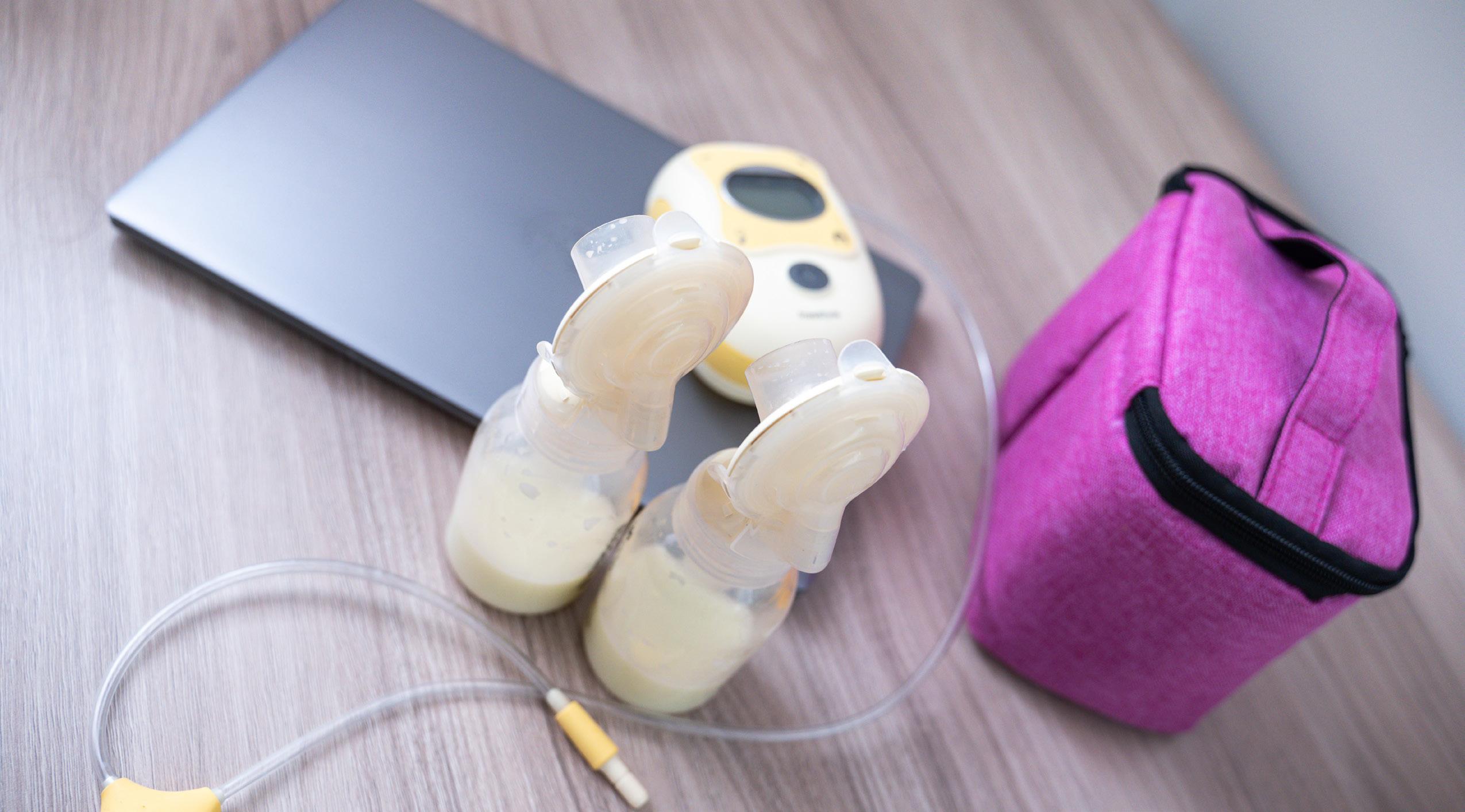
Accreditation Council for Graduate Medical Education (ACGME) requires designated lactation space that is private, clean, and not a bathroom, but does not require protected time to pump. While these frameworks legitimize lactation as a workplace right, they leave a gap in implementation. Despite existing guidance from position papers, the American College of Emergency Physicians (ACEP) policy statement, and advocacy efforts, the dayto-day experiences of lactating EM physicians often fall short of recommended standards. Without protected time, space is meaningless. Without cultural acceptance, policies fall flat. Program leaders must operationalize these standards within the realities of EM clinical care.
Design Practical Lactation Spaces
An ideal lactation room for EM physicians should:
• Be within or adjacent to the ED
• Be private and lockable from the inside
• Contain a hospital-grade pump, refrigerator, sink, and computer with electronic medical record (EMR) access
• Be clean, comfortable, well-lit, and have an electrical outlet
When construction is limited, portable lactation pods or converted call rooms can be be interim solutions. The goal is to provide safe, accessible, and dignified environments that minimize disruption to clinical care.
Schedule Protected Pumping Time
Lactating physicians should be able to take 20 to 30-minute pumping breaks every three to four hours. While this may seem logistically daunting in the ED, creative scheduling, wearable pump integration, and proactive team coverage make it possible. For example, schedule dual coverage overnight during the first few months when the lactating physician returns from maternity leave, as this is typically the period they need to pump most frequently. Time spent pumping should also be considered when evaluating a physician’s efficiency and workload.
Wearable pumps offer an additional layer of flexibility. They can significantly reduce break time and improve the ability to meet lactation goals. Some ACGME programs
have piloted wearable pump loaner initiatives—an innovative, costeffective solution that demonstrates tangible support. Wearable pumps are especially beneficial, especially to trainees, for numerous reasons. However, they do not work well for all lactating individuals, so programs should not require their use. The pump (traditional, manual, portable, or wearable) that works best should be the parent’s choice alone.
Foster a Supportive Culture
The EM culture and work environment are particularly challenging for lactating physicians. Culture change must start at the top. When program and institutional leadership normalize lactation, the message is clear: this department values its physician parents. To help shift the department culture to a more lactation-friendly environment:
• Train colleagues to proactively offer coverage during pumping breaks
• Mentor faculty and residents to become lactation allies
• Avoid stigmatizing language or


“Inclusive environments for lactating physicians create a ripple effect that fosters wellness for all.”
CULTURAL AWARENESS
continued from Page 33
microaggressions (e.g., “Again?” “Must be nice to get a break,” or “Why don’t you just switch to formula?”)
• Encourage peer support networks like like Dr. MILK or institutional support groups
Residents are an especially vulnerable group. Those who feel seen and supported are more likely to stay, thrive, and give back. When we build inclusive environments for lactating physicians, we create a ripple effect that fosters wellness for all.
Residents are an especially vulnerable group. Those who feel seen and supported are more likely to stay, thrive, and give back. Inclusive environments for lactating physicians create a ripple effect that fosters wellness for all.
Establish Clear Policies
Physicians frequently identify the lack of clear and accessible institutional policies as a major barrier to starting a family during training. Programs and institutions should create and disseminate clear, accessible lactation policies outlining:
• Space availability and access procedures
• Intervals recommended to pump
• Break expectations and coverage models
• Equipment support (pumps, refrigeration, loaner programs)
• Scheduling accommodations
• Whom to contact for support
These policies should be clearly presented on department and residency websites and onboarding materials, not buried in HR manuals.
They should be reviewed verbally by program leadership when a trainee plans leave or returns to work. Transparency builds trust and signals institutional commitment. Creating a lactation task force at the department or graduate medical education (GME) level can further ensure policies reflect diverse perspectives, including trainees, faculty, and nurses.
Conclusion: Moving From Compliance to Support
Supporting lactating EM physicians is not simply a matter of legal compliance; it is a moral imperative. Supporting, rather than merely allowing, is about retention, representation, and rehumanizing physician training and work experiences. By rethinking policies, redesigning spaces, restructuring schedules, and reshaping culture, EM programs can become leaders in lactation equity and inclusive medical training
ABOUT THE AUTHORS
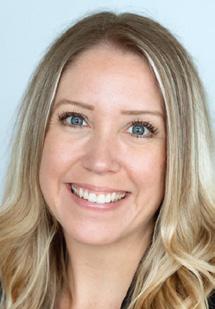


Dr. Lewis is an assistant clinical professor and career advisor for the school of medicine at the University of California, Irvine.
Dr. Cantwell is a senior resident in emergency medicine at the University of California, Irvine.
Dr. Olson is assistant residency program director at the University of Chicago.
EDUCATION & TRAINING

Emergency Medicine in Transition: What Students Need from Advisors
By Samuel Reddick; Eileen Williams, MD; and Kei Wong, MD, on behalf of the SAEM Education Committee
Emergency medicine (EM) has long attracted students with its unique mission, clinical complexity, and collaborative environment. As a medical student pursuing EM, I have witnessed the intensity of difficult resuscitations, the camaraderie within the department, and the fulfillment that comes from caring for patients during their most vulnerable moments.
In recent years, however, students approaching the specialty face a new set of questions, many extending far beyond Match Day. Today’s EMbound students navigate a rapidly evolving landscape, marked by concerns about future job stability, rising educational debt, career longevity, the integration of artificial
intelligence, and proposed changes to residency training. While these concerns do not necessarily deter interest in EM, they shape the type of support students seek from advisors and mentors as they make this pivotal career decision.
While every student’s journey is unique, several common themes have emerged from conversations with peers and my own experience: Job market: Students want to understand what the EM job market may look like in the years ahead. Messages from faculty and professional organizations are often reassuring, but others raise important considerations. Although some unpredictability is inherent in
any specialty, prospective students could benefit from greater clarity around regional variation, evolving practice models, and the career trajectories of recent EM graduates.
Financial pressures: Rising tuition and living expenses have pushed the cost of medical education to record highs. In 2024, medical school graduates on average owed more than $240,000 in total education debt, according to the Education Data Initiative. Recent federal policy changes, including adjustments to loan repayment structures and borrowing limits, have added another layer of complexity. Economic sustainability is a central issue for many students, who seek open discussions about
“Today’s emergency medicine-bound students navigate a rapidly evolving landscape, marked by concerns about future job stability, rising educational debt, career longevity, the integration of artificial intelligence, and proposed changes to residency training.”
salary expectations, loan repayment strategies, and how a career in EM aligns with long-term financial goals.
Wellness and career longevity:
Burnout remains a significant concern across all specialties, but EM presents unique challenges that can affect well-being. Students increasingly look to advisors and mentors to model sustainable practice and work-life balance.
Artificial intelligence: The rapid rise of AI in medicine offers exciting possibilities, ranging from triage and documentation to clinical support tools and research. Students are curious, open to innovation, and eager to understand how AI will influence their education, training, and future practice.
The future of training: Proposed ACGME requirements for EM residency programs have prompted questions about timing, implementation, and educational impact. While students recognize the value of rigorous preparation, they also weigh the opportunity cost associated with extended residency training and how other requirements might affect programs. In this context, clear guidance, open communication, and timely advising are essential to help students navigate these changes effectively.
Expanding the advising network
Many students, me included, have benefited from outstanding advising and mentorship during this process. At my home institution and through national organizations such as
SAEM, I have received support that is constructive, thoughtful, and encouraging. SAEM offers students a wealth of advising resources, structured mentoring programs, and opportunities for engagement through its annual conference. Nevertheless, there is an opportunity to broaden advising frameworks to better reflect the realities and concerns of today’s applicants.
Key Areas for Growth in Advising
Emphasizing transparency: Students value candid conversations with mentors, especially about areas of ambiguity.
Including diverse voices: Faculty, residents, community-based providers, alumni, and peers all bring unique insights that enrich the advising experience.
Creating space for individualized guidance: Students enter the specialty with different resources, backgrounds, and career goals. Advising should be tailored to reflect this diversity.
Expanding financial and career resources: Open discussions about loan repayment strategies, income expectations, practice settings, and long-term career options are increasingly important.
Modeling balance and sustainability: Students closely observe how mentors integrate clinical responsibilities with family, teaching, advocacy, and personal growth.
Looking Ahead
Choosing a specialty is not only about achieving success on Match Day. It is
about professional identity, personal values, and a vision for the future. EM continues to attract students who are adaptable, intellectually curious, and mission driven. Even amid uncertainty, students are drawn to the challenge and meaning this field offers.
What students need now is guidance that is responsive and attuned to the changing landscape of EM. With intentional mentorship and open communication, students can move forward with clarity and confidence, building not just successful careers but a future for EM that reflects the very best of what inspired them in the first place.
ABOUT THE AUTHORS

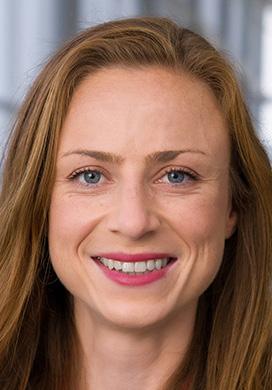
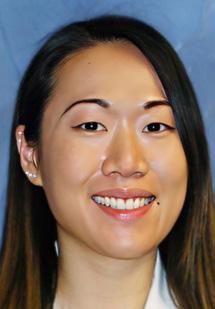
Samuel Reddick is a fourth-year medical student at Vanderbilt University School of Medicine. He completed his undergraduate studies at Rice University.
Dr. Williams is a third-year emergency medicine resident at the University of Texas Southwestern and is pursuing a medical education fellowship next year.
Dr. Wong is an associate professor of emergency medicine in the division of pediatric emergency medicine at Rutgers New Jersey Medical School. She serves as the clinical director of pediatric emergency medicine education for the emergency medicine residency program and is the director of the pediatric emergency medicine student elective.

When Hunger Speaks: Ethical and Clinical Care of Patients on a Hunger Strike
By Amy Zeidan, MD, and Vidhya Balasubramanian, MD
Introduction
Hunger strikes are one of the oldest forms of nonviolent protest. Food is critical to life and livelihood, with the act of non-eating being symbolic of desperation. Hunger strikes in U.S. prisons and detention centers have notably increased in recent years, particularly within Immigration and Customs Enforcement (ICE) facilities. The increase in hunger strikes is often attributed to prolonged detention, poor living conditions, and a lack of due process and timely hearings.
Emergency medicine (EM) clinicians may be called upon to evaluate and manage individuals participating in hunger strikes, often
after they have been transferred from detention centers for medical assessment. To care for these patients ethically and effectively, it is essential to understand the complex motivations behind hunger strikes, the historical and institutional responses of detention systems, and the ethical frameworks established by medical governing bodies. As healthcare professionals, we hold a dual responsibility: to provide compassionate, evidence-based care to the individual before us while upholding their autonomy, dignity, and fundamental human rights.
Context matters
Based on a review from 2013 to 2017, ICE detention centers
have often responded to hunger strikes with involuntary medical interventions, such as force-feeding and forced Foley catheterization, retaliation, such as solitary confinement, and punitive rather than therapeutic responses. For example, force-feeding with 16- or 18-gauge nasogastric (NG) tubes is commonly used rather than smaller, bettertolerated Dobbhoff tubes.
GEO Group, a private, for-profit company that contracts with ICE to operate detention facilities and provide medical care, has repeatedly asserted that it considers forced feeding in non-medical settings (that is, within the detention center) to be a safe and humane practice, despite

“Physicians must advocate for and uphold the patient’s rights to make decisions about their own body, including the right to protest via hunger strikes.”
ongoing criticism from medical ethicists.
The potential physical complications of forced enteral feeding are numerous and include aspiration pneumonia, nasal trauma and bleeding, and esophageal or gastric perforation if the tube is improperly placed.
Ethical principles
Treating patients in the emergency department on a hunger strike, especially those brought in by detention or carceral facilities, raises complex ethical considerations for physicians.
1. Decision-making capacity:
Physicians must first assess whether the individual is capable of making informed decisions. Capacity is not a global status; it is decision-specific, time-specific, and must be evaluated in real time for every decision. The patient must be able to understand the information relevant to the decision, appreciate the consequences of their choices, reason through options, and communicate a consistent choice. While the patient might initially meet all four criteria, prolonged starvation can lead to physiological
and neurological changes that cloud the process. Clinically, the cognitive impairment from starvation—specifically, signs of apathy, slowed processing, difficulty concentrating, or confusion—is especially pronounced after two to three weeks without food.
2. Respect for autonomy: If the patient has full decision-making capacity, they have the right to refuse food and medical treatment, even if doing so leads to death.
“Refeeding when nutritional leading edema, seizures,

“Refeeding syndrome is a potentially life-threatening condition that occurs nutritional support is reintroduced after an acute period of starvation, leading to shifts in phosphate, potassium, and magnesium that can cause seizures, cardiac arrhythmias, and even cardiac or respiratory failure.”
ETHICS
continued from Page 39
When treating patients in custody, physicians often feel pressured, either implicitly or explicitly, to override a patient’s wishes under court orders or institutional policy. However, physicians must advocate for and uphold the patient’s rights to make decisions about their own body, including the right to protest via hunger strikes.
3. Beneficence: What constitutes “best interest” is often unclear in the context of protest. Intervening to preserve life may seem beneficial, but doing so against a patient’s will may violate their dignity and intent. Physicians should strive for compassionate engagement— offering care, monitoring health status, and providing informed recommendations—without coercion.
4. Nonmaleficence: Involuntary interventions such as NG tube placement without consent can cause both physical and psychological harm. Such practices are widely considered inhumane. The World Medical Association has repeatedly deemed force-feeding of competent hunger strikers a violation of medical ethics.
Clinical considerations
An initial assessment and risk stratification is the first step in caring for a patient presenting to the emergency department after a hunger strike. This requires a detailed
clinical history—including duration of starvation, percent of body weight lost, comorbidities, and prior episodes of malnutrition—as well as a focused physical exam. With prolonged starvation, vital sign abnormalities such as bradycardia, hypotension, and hypothermia may be seen.
Laboratory screening should include serum electrolytes, such as phosphate, potassium, magnesium, and calcium; glucose; renal and liver function tests; complete blood count; coagulation profile; and an ECG to assess for bradycardia, QTc prolongation, or arrhythmias. Multidisciplinary involvement— including nutrition, psychiatry, and social work—is recommended, and a psychosocial assessment may help address underlying factors and ensure informed consent for care.
The initiation of nutrition must be done cautiously after careful assessment of the patient’s mental status and desire for treatment. Refeeding syndrome is a potentially life-threatening condition that occurs when nutritional support is reintroduced after an acute period of starvation. It is characterized by rapid shifts of phosphate, potassium, and magnesium into cells in response to increased insulin secretion triggered by carbohydrate intake, which can lead to hypophosphatemia, hypokalemia, and hypomagnesemia. These electrolyte disturbances can result in edema, seizures, cardiac arrhythmias, and even cardiac or respiratory failure. The risk is highest in the first five days of refeeding and is proportional
to the degree and duration of prior malnutrition.
To prevent this, nutrition supplementation should start with a low caloric intake—typically 10–20 kcal per kilogram per day, or even lower—and gradually advance over four to seven days based on clinical and laboratory response. Fluid intake should be restricted as needed to avoid fluid overload, especially in the presence of hypoalbuminemia or cardiac dysfunction. Thiamine supplementation (100 mg IV or orally before feeding) is critical to prevent Wernicke’s encephalopathy.
Conclusion
Although rare, hunger strikes present medical and ethical complexities that are important to consider. Our responsibility is not only to monitor and manage the medical challenges of prolonged fasting but also to honor the voice behind the hunger.
ABOUT THE AUTHORS
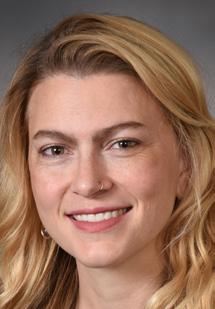
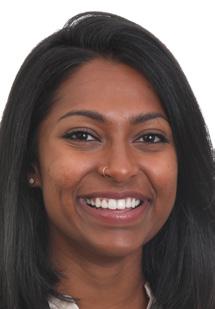
Dr. Zeidan is an associate professor of emergency medicine at Emory University School of Medicine and medical director of the Georgia Human Rights Clinic.
Dr. Balasubramanian is a thirdyear resident and chief resident at Emory University School of Medicine.
ETHICS IN ACTION

To Tube or Not to Tube: Ethical Dilemmas When a Partner Refuses Life-Saving Intubation
By John Marshall, MD, MBA; Obert Xu, MBBS, MBA; and Hasan Alshamrani, MBBS
The Case
You are pulled toward a resuscitation bay by your charge nurse after a “code white,” indicating respiratory distress or failure. An emergency medical services crew wheels in a 38-year-old female in obvious respiratory distress on a nonrebreather mask. Aside from a history of asthma, she is reportedly healthy.
EMS states that when they arrived, she was in respiratory distress with diffuse wheezing and poor
air movement but was awake and conversant. Despite receiving 10 milligrams of intravenous methylprednisolone, two doses of bronchodilators, and 15 liters of supplemental oxygen prior to arrival, she has become somnolent and now appears to be tiring.
On your initial assessment, her vital signs are concerning: heart rate 135, respiratory rate 20, oxygen saturation 81 percent on 15 liters via nonrebreather, blood pressure 110/72. Her mental status is poor:
she localizes to pain but cannot answer questions or reliably follow commands. Lung auscultation reveals very poor air movement with diffuse, pronounced wheezing. She looks fatigued, and you are worried by the absence of significant tachypnea.
Respiratory therapy attempts bilevel positive airway pressure, but she tolerates it poorly because of her mental status. A venous blood gas at the point of care shows a pH of 7.15 and a partial
“Ethically, there is a strong argument that intubating the patient, thereby improving her condition and restoring her mental status, is an act of beneficence that simultaneously shows respect for autonomy — because it allows her to later make her own decisions.”
pressure of carbon dioxide of 65. You are hesitant to intubate, but after rapid administration of magnesium, continuous albuterol nebulizers, and an epinephrine infusion, her condition remains unchanged. Her heart rate has now trended down to 70. You know the patient is nearing respiratory exhaustion, and intubation is indicated.
As you prepare for rapid sequence intubation, a young man rushes into the room. “I am her partner. What are you doing? She would not want to be intubated again!” he shouts. He explains that the patient had been intubated twice before for severe asthma exacerbations and experienced significant difficulty with extubation the last time. In his rush to the hospital, he did not bring any form of identification. He has no advance directive for the patient, and the patient has no physician orders for life-sustaining treatment (POLST) on file. She is still unable to speak for herself because of her altered mental status.
Despite your explanation that the patient is in critical condition requiring immediate intubation — and that this is a reversible condition with an excellent chance of recovery — he is adamant: No intubation.
The Discussion
This is a difficult situation in which bioethical principles appear to conflict. Beauchamp and Childress outline four principles of clinical ethics widely used to analyze and guide decision-making in
health care: respect for autonomy, nonmaleficence, beneficence, and justice.
In this scenario, beneficence — promoting the patient’s well-being and providing interventions that offer the greatest possible benefit — points toward intubation. At the same time, the patient’s partner argues that intubation would violate her autonomy, or her right to have her personal values and preferences respected, based on what she previously shared with him. Faced with this tension between beneficence and autonomy, how should the care team proceed?
If the patient had a documented POLST or advance directive stating she would not want intubation, autonomy would be paramount and intubation should not be pursued. But here, no such documentation exists. The partner cannot be formally identified in the moment, and his surrogate decision-making authority is unclear. He is asking that life-saving care be withheld from a patient with a reasonable chance of full recovery and many high-quality years ahead.
Ethically, there is a strong argument that intubating the patient, thereby improving her condition and restoring her mental status, is an act of beneficence that simultaneously shows respect for autonomy — because it allows her to later make her own decisions. Many ethicists argue that when uncertainty exists about a patient’s wishes and a life-saving treatment is available, the treatment should be prioritized. As some in the
literature have stated: “When in doubt, resuscitate. And always doubt. That is, always err on the side of life and resuscitate.”
The key principle here is that doubt is present, and death is irreversible. Intubation, though potentially traumatic, preserves the patient’s ability to make future autonomous decisions about her care.
As a final note, while intubation is ethically supported in this case, clinicians must also be familiar with surrogate decision-making laws specific to the state in which they practice, as these can differ by jurisdiction.
ABOUT THE AUTHORS
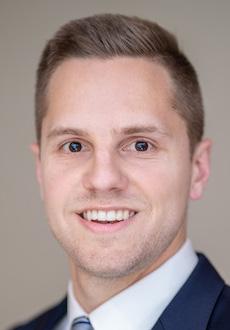
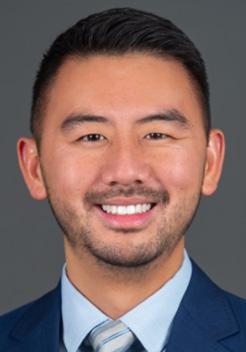
Dr. Marshall is the emergency department systems medical director for operational improvement at Oregon Health & Science University and is serving in his first year on the SAEM ethics committee.
Dr. Xu is the associate medical director for the adult emergency department at Oregon Health & Science University.
Dr. Alshamrani was a visiting emergency department administration fellow at Oregon Health & Science University during the 2024-2025 academic year and is presently an attending emergency medicine physician in Saudi Arabia.
EVIDENCE BASED HEALTHCARE

Meeting Patients Where They Are: Advancing Opioid Use Disorder Care in the Emergency Department
By Loraine Ochoa Introduction
Emergency departments (EDs) are often the first point of contact for individuals experiencing complications from opioid use disorder (OUD), such as overdose, withdrawal, or infections related to substance use. Traditionally viewed as acute care settings, EDs are now recognized as key sites for initiating evidence-based interventions. With national emphasis on harm reduction and medication-assisted treatment, emergency clinicians are uniquely positioned to improve outcomes by
starting treatment and connecting patients to ongoing care.
The Role of the ED in OUD Treatment
The ED plays a pivotal role in reducing opioid-related harm. Initiating buprenorphine in the ED has been associated with lower mortality and increased treatment engagement. When paired with effective referrals to communitybased care, these interventions can improve long-term outcomes.
In addition to starting medication, ED visits can serve as opportunities
for overdose education and brief counseling that may motivate patients to seek future treatment. Additional strategies, such as providing resources and screening for infectious diseases—like skin and soft tissue infections, HIV, and hepatitis C—have become essential. By implementing accessible, patientcentered approaches, ED teams can provide care that aligns with broader recovery goals.
Harm Reduction Strategies in the ED
Harm reduction is a patient-centered approach that prioritizes health
“Emergency departments are often the first point of contact for individuals experiencing complications from opioid use disorder, making them key sites for initiating evidence-based interventions and connecting patients to ongoing care.”
and dignity. Rather than focusing solely on abstinence, it reduces the consequences of drug use, including overdose and infection.
ED-based harm reduction strategies include distributing naloxone kits, fentanyl test strips, sterile supplies, and wound care materials. Making these resources available on-site enhances access while reducing stigma. Incorporating traumainformed communication also helps build trust and support future healthcare engagement. Studies show that patients prefer receiving naloxone kits and wound care materials directly from the ED rather than by prescription, due to cost, stigma, and access barriers.
Offering low-barrier opioid agonist therapies, such as buprenorphine, without requiring long-term adherence, can further build trust and improve patient engagement.
Barriers to ED-Initiated OUD Treatment
Despite growing support, several barriers limit ED-initiated OUD care. Many clinicians lack training or comfort prescribing buprenorphine. EDs also face time constraints and limited resources. Providers report challenges such as stigma, lack of withdrawal treatment options, and feelings of hopelessness, which can affect both patients’ willingness to engage and staff confidence in delivering care.
Linkage to outpatient care is often inconsistent due to limited treatment capacity and fragmented referral systems. Community programs face
additional challenges, including stigma toward medications for OUD, payment structures that discourage treatment, and shortages of trained professionals. Social determinants of health—such as homelessness and poverty—further disrupt care. Addressing these barriers requires coordinated action within and beyond the ED.
System-Level Solutions and Opportunities
Recent federal changes have increased access to buprenorphine, including the Mainstreaming Addiction Treatment Act, which eliminated the DEA X-waiver, and expanded use of telehealth and telephone-based prescribing during the COVID-19 pandemic. However, systemic changes are still needed to sustain progress. Possible solutions include:
• Formal referral pathways between EDs and community providers, supported by peer navigators, to improve continuity of care.
• Enforcing parity requirements for insurance coverage to increase reimbursement for services and incentivize buprenorphine provision. Coverage should also support recruiting and retaining trained addiction specialists and peer navigators.
• Integrating addiction medicine education early and longitudinally in medical school and residency. Exposure to patients with substance use disorders in both inpatient and outpatient settings, along with supervised training in buprenorphine prescribing and withdrawal
management, can improve provider readiness and reduce stigma.
• Investing in harm reduction infrastructure, including on-site supplies, to ensure patients have immediate access to needed resources.
• Incentivizing hospital systems to prioritize substance use care through quality metrics or bundled payment models, helping embed OUD treatment into routine ED workflows. A coordinated, multi-level approach is key to effective treatment.
Conclusion
Emergency departments have a unique opportunity to serve as access points for initiating treatment for opioid use disorder. Through harm reduction practices, improved referral networks, and enhanced provider training, EDs can contribute meaningfully to reducing opioidrelated harm and improving care continuity. Supporting ED-based solutions is essential to ensuring timely, equitable care for all patients as the healthcare system confronts the opioid crisis.
ABOUT THE AUTHOR
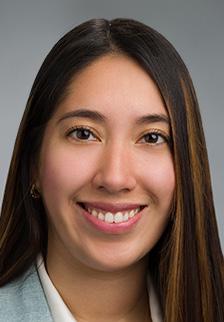
Loraine Ochoa is a fourth-year medical student at Robert Wood Johnson Medical School pursuing a career in emergency medicine. She served as a medical student ambassador at this year’s Society for Academic Emergency Medicine annual conference. Her interests include evidence-based medicine and social emergency medicine.
FACULTY DEVELOPMENT

Breaking Barriers: Empowering Women Leaders in Academic Emergency Medicine
Pamela L. Dyne,
MD;
and Luan Lawson, MD, MAEd, on behalf of the SAEM Faculty Development Committee, SAEM Association of Academic Chairs of Emergency Medicine, and SAEM Academy for Women in Academic Emergency Medicine
Emergency medicine (EM) has made significant strides in gender representation, but when it comes to leadership, the playing field is still far from level. Although more women are entering EM, many continue to face persistent roadblocks that limit advancement to senior academic and leadership roles. These inequities reflect broader structural challenges, requiring both personal strategies and institutional solutions.
In this article, we outline the most common barriers to women’s advancement in academic EM and share practical, evidence-based strategies—both personal and systemic—that can help empower women to lead, thrive, and transform the specialty.
The Reality: What’s Holding Women Back
Despite their increasing presence in the workforce, women in EM remain
underrepresented in department chair roles, editorial leadership, and other senior academic positions. This underrepresentation is not due to lack of ambition or skill—it is often the result of structural inequities, implicit bias, and limited access to the same opportunities afforded to male counterparts.
Real experiences from faculty across the country illustrate these challenges:
Elizabeth Leenellett, MD; Nancy Kwon, MD; Leigh Patterson, MD, MAEd;

“Empowering women leaders in emergency medicine is not about fixing women—it is about fixing the systems that have held them back.”
• “We have the same title, but I just found out my peer makes more than I do.”
• “I didn’t even know there was a leadership position open until it was already filled.”
• “Being a nocturnist helps me manage my family schedule—but at a cost to my body and academic productivity.”
These lived experiences highlight the intersection of professional
ambition and personal sacrifice—a common tension for many women in EM.
Individual Strategies for Success
While institutions must do more to close the gender gap, there are steps women can take to advocate for themselves and build their leadership paths. These include: Seek mentorship and sponsorship Surround yourself with mentors who
offer guidance and sponsors who actively promote your visibility and advancement.
Clarify your mission and values
When your goals align with your personal values, it is easier to say yes to what matters—and no to what does not.

“Despite their increasing presence in the workforce, women in emergency medicine remain underrepresented in department chair roles, editorial leadership, and other senior academic positions.”
FACULTY DEVELOPMENT
continued from Page 47
Negotiate with confidence
Advocate for fair compensation, protected time, and leadership opportunities with the same conviction you bring to patient care.
Leverage coaching
Professional coaching can help clarify goals, boost confidence, identify blind spots, and support leadership growth.
Build peer networks
Join communities—local or national— that offer support, advice, and collective strength.
These strategies are not merely aspirational—they are tangible skills that can be developed and practiced over time.
What Institutions Can—and Must— Do
Empowering women leaders requires systemic change. Institutions must intentionally create environments where women can advance without sacrificing well-being or visibility.
Ensure equity in pay and promotion
Standardize compensation packages by role, not individual negotiation. Regularly audit for disparities.
Create transparent leadership pathways
Publicly post leadership opportunities and apply standardized selection processes to remove favoritism and bias.
Foster an inclusive culture
Implement clear and consistent policies that promote fairness, transparency, and equitable
opportunity for advancement.
Strengthen a sense of belonging by encouraging allyship and inclusive behaviors that build connection and community across the organization.
Support work-life integration
Offer flexible scheduling, reasonable meeting times, and robust parental and caregiver support.
Recognize and sponsor women
Publicly celebrate women’s contributions and ensure credit is appropriately given and amplified. When institutions act with transparency and accountability, they not only support women—they improve the entire culture of academic EM.
Practical Tools You Can Use
To help translate strategy into action, we recommend these tools:
Leadership self-inventory
Reflect on your values, goals, strengths, and areas for growth.
SMART goals
Set Specific, Measurable, Achievable, Relevant, and Time-bound objectives to guide your leadership journey.
Mentorship and sponsorship map
Visualize your network, identify gaps, and build connections intentionally.
The Path Forward
Empowering women leaders in EM is not about fixing women—it is about fixing the systems that have held them back. By combining individual strategies with institutional reform, we can build a future where leadership reflects the diversity and talent of our field.
As we continue this work, let us amplify each other’s voices, advocate for equitable systems, and support the next generation of women in EM—not only to succeed but to lead.
ABOUT THE AUTHORS



Dr. Dyne is professor of clinical emergency medicine at the UCLA David Geffen School of Medicine and chief physician wellness officer at Olive View-UCLA Medical Center. She is also director of coaching for the UCLA David Geffen School of Medicine.
Dr. Leenellett is professor of emergency medicine and vice chair of faculty affairs, W. Brian Gibler endowed chair for education in emergency medicine at the University of Cincinnati College of Medicine, and chief of staff at UC Health-West Chester Hospital.
Dr. Kwon is vice president and associate regional ambulatory physician executive for the Central Market at Northwell Health. She is professor of emergency medicine at The Donald and Barbara Zucker School of Medicine at Hofstra/ Northwell, central market medical director for health equity at the Center for Advancing Healthcare for All, Northwell Health.


Dr. Lawson is professor of emergency medicine and senior associate dean of medical education and student affairs at Virginia Commonwealth University School of Medicine in Richmond, Virginia.
Dr. Patterson is associate professor and chair of emergency medicine at East Carolina University Brody School of Medicine.
FACULTY DEVELOPMENT

Expanding the Mentoring Toolkit: How Coaching Skills Empower Academic Emergency Physicians
By Pamela L. Dyne, MD; Elizabeth Leenellett, MD; Cassandra Bradby, MD; Eric D. Isaacs, MD; and Kiran Pandit, MD, MPH, on behalf of
the SAEM Wellbeing Committee, SAEM Faculty Development Committee, SAEM Association of Academic
Medicine, and SAEM Academy for Women in Academic Emergency Medicine
In academic emergency medicine, faculty regularly wear many hats: teacher, advisor, mentor. But in today’s rapidly evolving clinical and academic landscape, those traditional roles may not be enough to fully support the professional growth, resilience, and well-being of our colleagues and trainees. Enter coaching—a skill set that’s gaining traction as a powerful complement to mentoring and advising.
At its core, coaching empowers individuals to reflect, discover their own solutions, and take ownership of their development. While mentoring is grounded in shared experiences and advising draws from subject-matter expertise, coaching centers on listening deeply, asking powerful questions, and helping others clarify their goals—without offering solutions. And the best part? You don’t need to be a certified coach to integrate these skills into your everyday faculty interactions.
Chairs
of
Emergency
Coaching vs. Mentoring vs. Advising: What’s the Difference?
If you’ve ever given career advice, shared your own experiences to guide someone else, or helped a trainee navigate a tough decision, you’ve likely drawn on multiple roles—mentor, advisor, teacher. Coaching adds a new dimension to that toolkit.
Here’s a quick comparison:
Role Focus Approach
Mentoring
Coaching
Long-term development
Self-directed growth
Relationship-based wisdom-sharing
Listening, questioning, reflecting
“In a time when physician well-being and professional growth are more important than ever, adopting even a few coaching habits can help us support one another with greater clarity, compassion, and effectiveness.”
Unlike mentoring or advising, coaching avoids giving advice. Instead, it encourages the learner to find their own insights and take ownership of the next steps. It’s less about “Here’s what I did” and more about “What do you think you need?”
Core Coaching Skills You Can Use Right Now
You don’t need a coaching certificate to apply a “coach approach.” Here are a few foundational strategies you can start using immediately:
• Active Listening
Focus on understanding, not responding. Pause before you speak. Listen not just for words, but for what’s underneath them.
• Powerful Questions
Ask open-ended, reflective questions:
“What’s most important to you right now?”
“What would success look like in this situation?”
• Appreciative Inquiry
Shift from “What’s wrong?” to “What’s working?” Help your colleague or trainee build on their strengths.
• Growth Mindset
Reinforce the idea that skills and abilities can be developed. Praise effort, curiosity, and persistence—not just outcomes.
These tools are especially helpful during check-ins, career discussions, or even impromptu hallway conversations.
Why Coaching Matters in EM
EM physicians face unique challenges—high-pressure
environments, unpredictable workflows, and constant multitasking, as well as the challenges of work-life integration around the realities of 24/7 scheduling of an ED. EM faculty also balance teaching, administrative responsibilities and academic productivity. Our EM trainees navigate learning a tremendously broad body of information and procedural skills in the high-stakes environment of the ED while simultaneously synthesizing and incorporating feedback from attendings and senior residents. Coaching offers a way to navigate these complexities by fostering reflection, clarity, and resilience.
At our recent SAEM workshop, we practiced incorporating coaching into common faculty scenarios:
• Giving feedback without defaulting to advice
• Helping a trainee struggling with burnout set their own recovery goals
• Supporting a peer in a leadership transition by asking—not telling— what support they need
Participants left the session with practical tools and a new perspective: that being a better coach can make us better mentors, teachers, and colleagues.
Final Thoughts: You Can Start Small
Integrating coaching skills doesn’t require a complete overhaul of how you mentor or advise. Start small: ask more questions, listen more deeply, and resist the urge to jump in with solutions. Coaching doesn’t replace mentoring or advising—it strengthens both.
In a time when physician wellbeing and professional growth are more important than ever, adopting even a few coaching habits can help us support one another with greater clarity, compassion, and effectiveness.
ABOUT THE AUTHORS




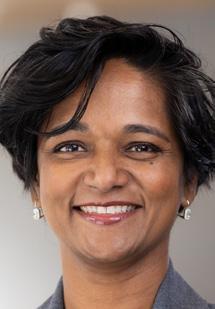
Dr. Dyne is professor of clinical emergency medicine at the UCLA David Geffen School of Medicine and chief physician wellness officer at Olive View-UCLA Medical Center. She is also director of coaching for the UCLA David Geffen School of Medicine.
Dr. Leenellett is professor of emergency medicine and vice chair of faculty affairs, W. Brian Gibler endowed chair for education in emergency medicine at the University of Cincinnati College of Medicine, and chief of staff at UC Health-West Chester Hospital.
Dr. Isaacs is clinical professor of emergency medicine at the University of California, San Francisco, School of Medicine and Zuckerberg San Francisco General Hospital. He is site director for the UCSF Bridges Curriculum CMC at Zuckerberg San Francisco General Hospital.
Dr. Bradby is assistant professor of emergency medicine and residency program director at ECU Health Medical Center/East Carolina University. She is also member at large of the SAEM Board of Directors.
Dr. Pandit is associate professor of emergency medicine and assistant dean for faculty development at Albert Einstein College of Medicine.
FACULTY IN FOCUS
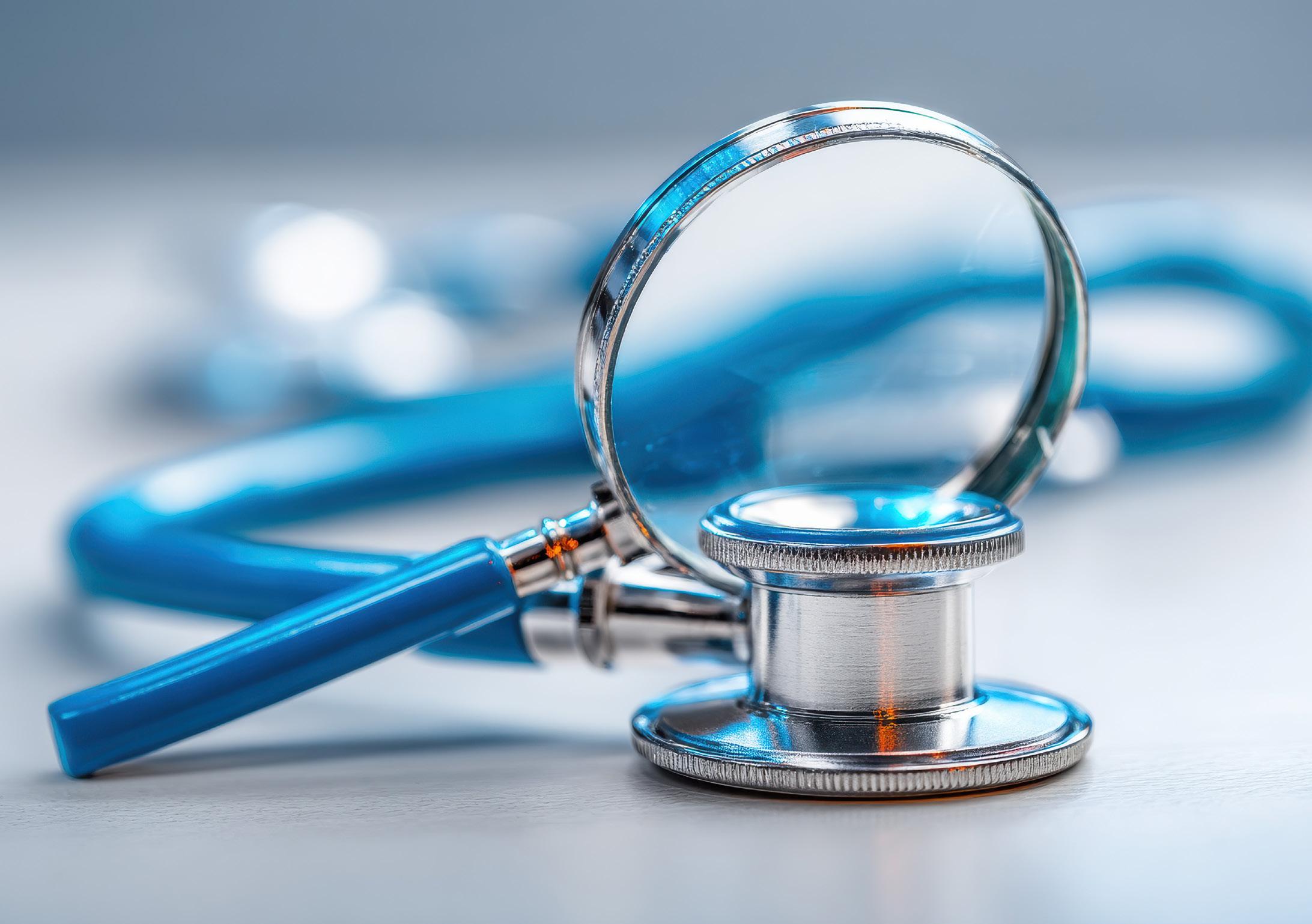
Dr. John D’Angelo: Emergency Medicine Physician Leading Northwell Health
By Annabella Salvador-Kelly, MD; Andrew Mastanduono, MD; and Nancy Kwon, MD, on behalf of the SAEM Faculty Development Committee
Overview
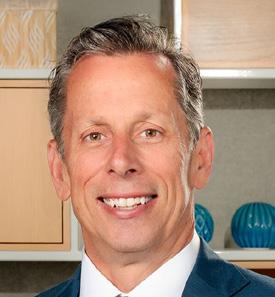
John D’Angelo, MD, is the CEOelect of Northwell Health, executive vice president and market president for Northwell’s Central Market, and an associate professor of emergency medicine at the Zucker School of Medicine at Hofstra/Northwell. He will succeed Michael Dowling, who transitions to CEO emeritus, on Oct. 1, 2025, becoming the first physician
to lead Northwell Health and one of the few physicians nationwide heading a major health system.
The transition coincides with Northwell’s merger with Nuvance Health, expanding the system’s reach from Long Island and New York City to the Hudson Valley and western Connecticut.
Early Career and Education
Dr. D’Angelo began his healthcare journey as a volunteer emergency medical technician (EMT) during his undergraduate studies at Stony
Brook University, New York. He earned his medical degree from Stony Brook University in 1995 and completed his residency in emergency medicine at Geisinger Medical Center in Pennsylvania, serving as chief resident.
He served in the U.S. Army Reserve Medical Corps, earning the Army Service Medal in 2003, and subsequently held early leadership roles at Holyoke Hospital, Massachusetts, and DeWitt Army Hospital. Throughout this period, he continued practicing emergency
Dr. John D’Angelo
medicine and remains board-certified in the specialty. Dr. D’Angelo has been a Fellow of the American College of Emergency Physicians (FACEP) since 2001.
Leadership at Northwell Health
At Northwell Health, Dr. D’Angelo served 11 years as chair of emergency medicine at Glen Cove Hospital. In 2012, he became executive director and senior vice president of Northwell’s emergency medicine service line, overseeing 18 emergency departments, multiple observation units, and a growing network of urgent care centers in partnership
with GoHealth. From 2014 to 2015, he also served as interim chair of the Department of Emergency Medicine at the Zucker School of Medicine at Hofstra/Northwell.
Dr. D’Angelo led initiatives including Northwell’s award-winning sepsis program, which earned The Joint Commission’s Eisenberg Award, and the opening of Lenox Health Greenwich Village, Manhattan’s first freestanding ED.
During the COVID-19 pandemic, he served as operations chief, leading the system’s Emergency Operations

Year
Role / Achievement
Undergraduate EMT volunteer, Stony Brook University
1995 MD, Stony Brook University
Residency Emergency Medicine, Geisinger Medical Center; Chief Resident
2003 Army Service Medal, U.S. Army Reserve Medical Corps
2003 Medical Director, Occupational Health Clinic, Holyoke Hospital; Acting Assistant Director, DeWitt Army Hospital
2001 FACEP designation
2012 Executive Director & SVP, Northwell Health Emergency Medicine Service Line
2014–2015 Interim Chair, Department of Emergency Medicine, Zucker School of Medicine
2019 Top Innovation Award, Real-Time Actionable Data
2020 Chief of Integrated Operations, Northwell Health
2025 CEO-elect, Northwell Health
Center and supporting frontline staff across the network.
He also co-led Real-Time Actionable Data, an IT solution improving operational visibility across Northwell Health. The tool earned the Top Innovation Award (2019) and remains in use at North Shore University Hospital.
In 2020, Dr. D’Angelo was named chief of integrated operations, coordinating system-wide resources to optimize patient flow.
Commitment to Academics and Professional Development
Dr. D’Angelo has supported the expansion of emergency medicine residencies and fellowship programs, presented nationally on sepsis, clinical operations, and leadership, including at SAEM, and translated operational initiatives into scholarly research.
Why It Matters
Dr. D’Angelo’s career illustrates how emergency medicine physicians can shape healthcare systems and lead organizational transformation. His trajectory demonstrates that leadership in emergency medicine extends beyond the ED, impacting care delivery across large, complex health systems.
ABOUT THE AUTHORS

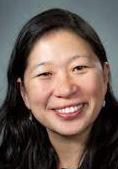

Dr. Salvador-Kelly is the deputy chief medical officer and senior vice president of medical affairs at Northwell Health and an associate professor of emergency medicine at the Zucker School of Medicine at Hofstra/Northwell. Dr. Kwon is a vice president and medical director for health equity in Northwell Health’s central market and a professor of emergency medicine at the Zucker School of Medicine at Hofstra/Northwell.
Dr. Mastanduono is the associate residency program director for emergency medicine and transitional year and a faculty member at South Shore University Hospital/Northwell Health. He is an assistant professor of emergency medicine at the Zucker School of Medicine at Hofstra/Northwell.
GERIATRIC EM
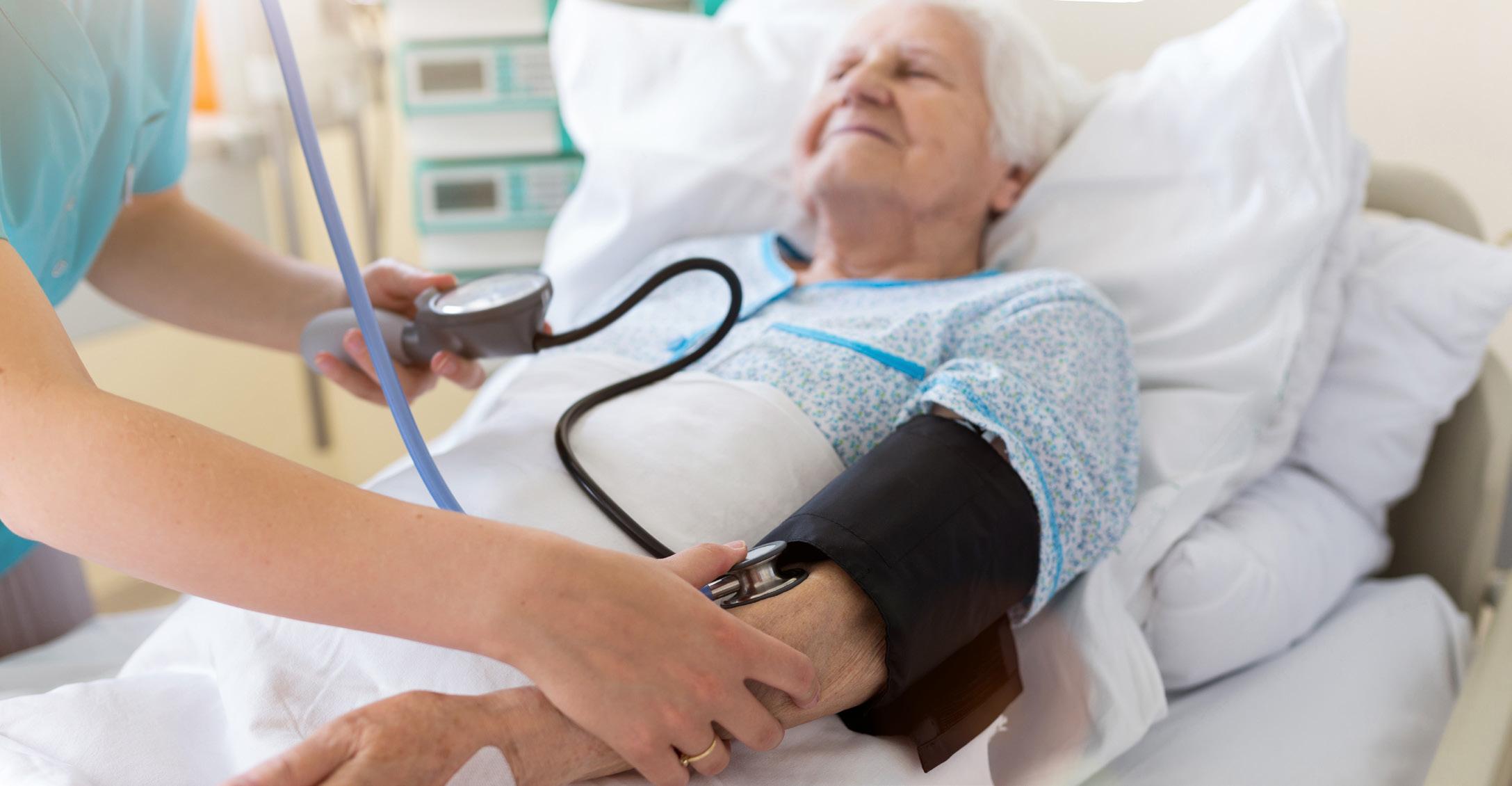
What Matters Most: Advancing Care for Older Adults in the Emergency Department
By Katrin Tyler On behalf of the SAEM Academy of Geriatric Emergency Medicine
In pediatrics, we have long recognized that patients’ needs, abilities, and cognition change rapidly, and we have built robust care systems to support that reality. Yet we have been slow to apply the same logic to the other end of the age spectrum. Most health systems coordinate resources to support pediatric patients through developmental stages with adjusting levels of care. Similar coordinated responses should be available for older adults. As a group, older adults may experience changing cognitive and physical capabilities, and we should develop models to improve care that are contiguous across clinical service lines, in inpatient and outpatient settings, in residential care facilities, and in private homes.
It is hard to understand why the healthcare industry has not made a
serious, coordinated effort to reduce both the unintended harms it causes older adults and the real strain their care places on the system. For an industry that prides itself on innovation and cost control, it is baffling that we have overlooked the fastest-growing and most complex patient population for so long.
The care of older adults across healthcare systems calls for a streamlined and imaginative approach—getting them out of acute care environments earlier, providing support to return home sooner, and keeping them there. For patients who are not able to safely return home, we should do everything possible to ensure they leave acute care settings in the best possible condition. Physical and occupational therapists should help patients get up and moving as much
as possible. Geriatric pharmacists should optimize medication recommendations to ensure safe, simple dosing regimens. Telehealth services and other novel delivery methods, including mobile health programs, should be offered to older adults who prefer them. We should systematically evaluate the role of technology and monitoring in home healthcare models, including wearable devices.
Most adults want to age in place, and the healthcare industry could do much to help them. Around the world, programs exist that help older adults safely remain in their homes while coordinating with healthcare systems. However, we have not systematically evaluated which programs provide the best returns on investment and the greatest benefit for patients and their families. When
“Goals-of-care conversations should be normalized, realistically reflecting likely outcomes from interventions for critical illnesses, acknowledging comorbidities, and avoiding the false notion that a stopped heart can simply be restarted.”
support varies by subspecialty, care becomes fragmented, and resources are wasted. Standardizing best practices across the system is not just better for patients—it is smarter for healthcare.
Currently, most healthcare systems lack a role that ensures uniform care of older adults across service lines. Verification and accreditation programs for older adults are largely supported by champions within clinical departments and often lack structural backing from institutional leadership. Established clinical practice guidelines, verification programs such as Geriatric Emergency Department Accreditation, Geriatric Surgery Verification, Geriatric Oncology programs, and geriatric nursing initiatives should be coordinated within healthcare systems using a shared resource model. Obtaining continuous quality improvement data and metrics on the care of older adults must be prioritized. Inventorying care processes focused on older adults should be comprehensive and include all service lines that interact with this population.
Care processes for older adults should involve more coordination and consideration. Co-management models should be used to evaluate the risks and benefits of any clinical intervention, especially in the context of comorbidities and conditions common in aging, such as frailty and cognitive impairment. Goalsof-care conversations should be normalized, realistically reflecting likely outcomes from interventions for critical illnesses, acknowledging
comorbidities, and avoiding the false notion that a stopped heart can simply be “restarted.”
That older adults die should not be a surprise, especially to those working in healthcare. Yet we spend little effort ensuring their last days or weeks are prioritized. We often prolong hospital admissions, schedule multiple uncoordinated outpatient visits, perform invasive screening procedures, and implement complex medication regimens. We avoid the big questions: What do older adults want, and what matters most to them?
The new CMS measures represent a step in the right direction for age-friendly healthcare. However, implementing “what matters most”— one of the 4 Ms alongside mobility, medication, and mentation—remains the most challenging component to integrate into current healthcare models. Developing systems that incorporate what matters most to patients and their families should be a high priority for any healthcare system caring for older adults. This responsibility does not belong solely to geriatric-focused specialties—it belongs to all of us in healthcare. Systems should center care around what matters most to older adults and actively work to help them achieve it.
Creating a system-level leadership position focused exclusively on the care of older adults would help address many of these issues. This position would be equivalent to similar leadership roles in pediatrics and other service lines in hospitals. Responsibilities would include taking inventory of current practices, ensuring widely recommended clinical
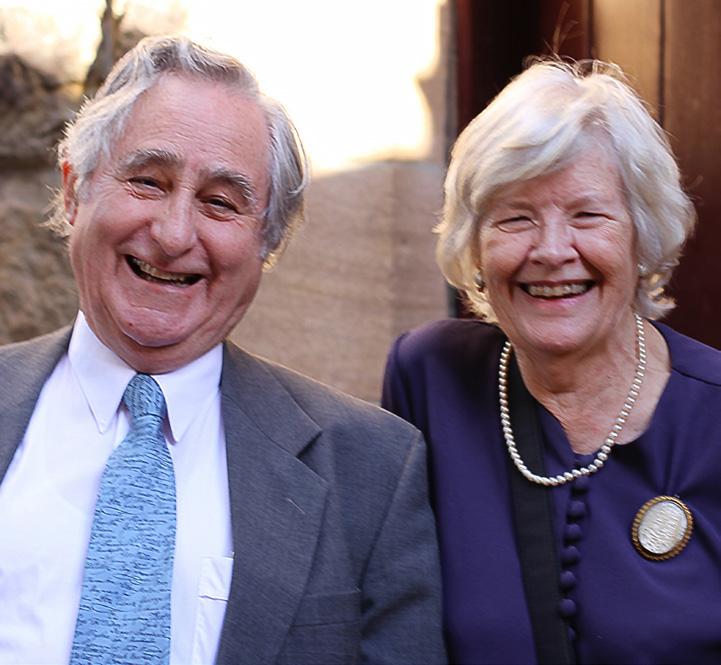
guidelines are followed, obtaining system-level quality improvement metrics, applying geriatric risk scoring, implementing new clinical models using telehealth, mobile visits, wearable devices, and artificial intelligence, and meeting or exceeding CMS requirements for age-friendly health measures.
Delivering high-quality care for older adults requires system-wide coordination that respects their individual needs and priorities. When we ask what matters most and act accordingly, we uphold the standard of care that older adults deserve.
ABOUT THE AUTHOR

Dr. Tyler is a clinical professor of emergency medicine at UC Davis, specializing in geriatric emergency care. She leads national and international initiatives to improve care for older adults and serves in multiple leadership roles focused on advancing age-friendly, equitable, and coordinated emergency care across health systems.
HEALTH EQUITY PERSPECTIVE
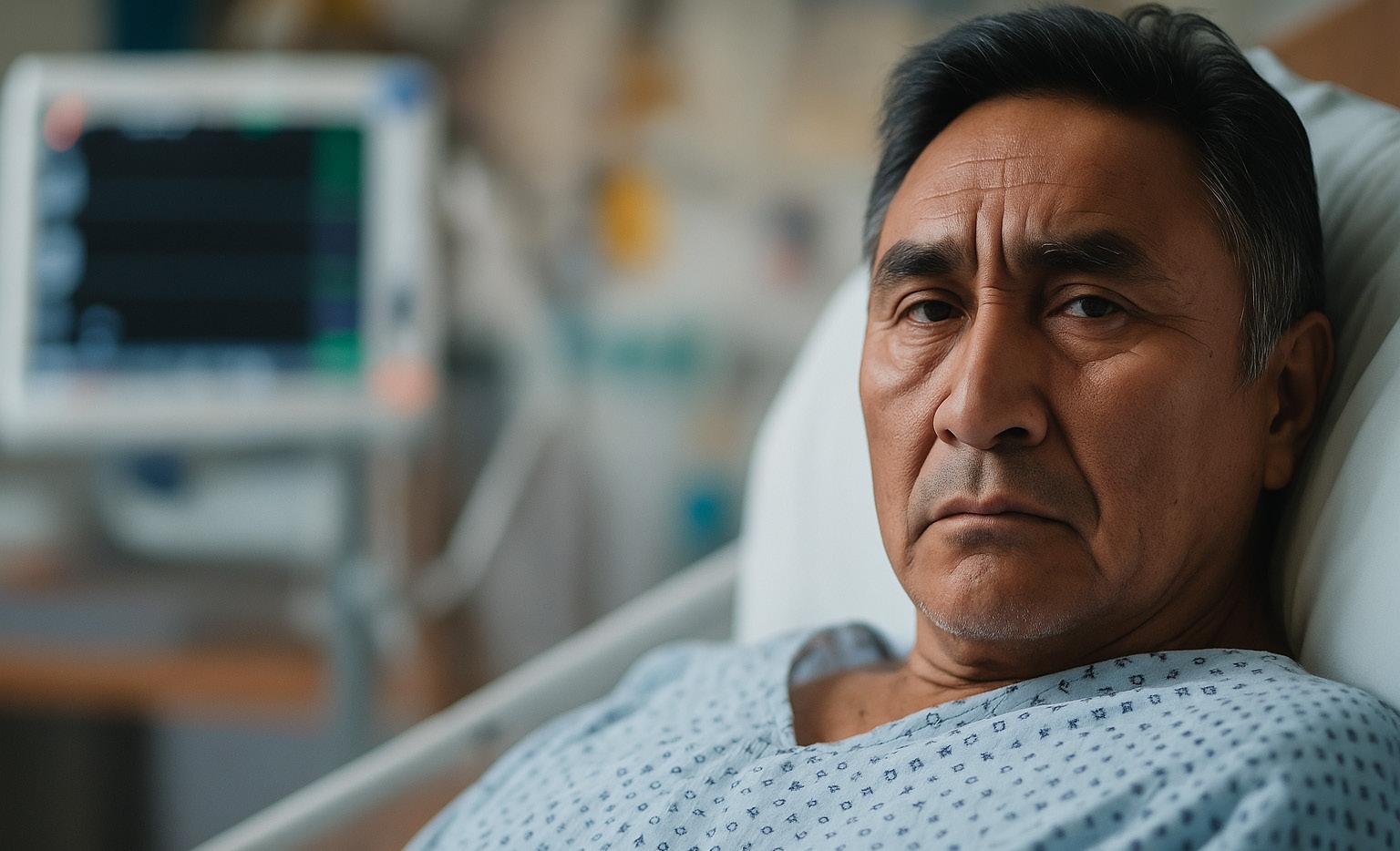
Caring for Native Patients in the Emergency Department: A Social Approach
By Dixie Blumenshine and Tasce Bongiovanni, MD
Background
American Indian and Alaska Native (AI/AN) patients, referred to here as Native, experience many of the health disparities and barriers to accessing care as other minoritized groups, but also face a unique history. Native patients are rarely encountered in most emergency department (ED) locations and their social needs vary, which can lead to clinician uncertainty in how to address their needs. Additionally, literature on culturally competent care in the ED is meager.
Native peoples in the United States (U.S.) are still experiencing effects of colonization, which vastly affects their health. Native populations have the highest rates of fair or poor
health and the lowest life expectancy of measured race/ethnicity groups in the U.S There are especially large gaps in trauma and injury-related mortality; for example, Native adolescents and 20- to 64-year-olds are hospitalized more often for injury than the general population. Of the top 22 causes of death for Natives, mortality occurs at a younger age than for white Americans dying of the same cause. However, up-todate Native health outcome data is sparse.
Native patients’ access to care varies. Some receive care through the Indian Health Service (IHS), while others rely on Medicare, the Department of Veterans Affairs, or private insurance. While the majority
of Native individuals live in urban areas, their access to care can still be limited by resource availability. Those living in rural areas and on reservations experience even more barriers: IHS hospitals are understaffed and underfunded, and necessary care can be multiple hours of travel away. Native individuals from any setting can also have reluctance to engage with the medical system or providers given a not-so-distant history of nonconsensual experimentation up until the 2000s and coerced sterilization of up to one-fourth of all Native women of reproductive age in the 1970s. Therefore, Native patients may delay presentation due to lack of access to services, mistrust, or

“Native populations have the highest rates of fair or poor health and the lowest life expectancy of measured racial and ethnic groups in the United States.”
hesitance to engage with the medical system. Many do not have a PCP and do not receive preventive care, and so may present at a more progressed degree of illness.
It is critical for clinicians to understand that Native peoples in the U.S. are a vast population with myriad Tribal associations, heritage, history, beliefs, socioeconomic status, and adherence to traditional medicine. There are 574 federally recognized tribal nations, with more seeking federal or state recognition.
Although relationships with Western medicine can be fraught, Native peoples can also be highly motivated by desires to address their
communities’ needs - for example, Native peoples had among the highest COVID-19 vaccination rates of all U.S. demographics, in large part out of recognition for increased population vulnerability and goals to reach herd immunity to protect at-risk community members.
When Native patients present, their needs vary widely. There may be differences in identification with traditional beliefs, which may cause some uncertainty and lack of confidence for clinicians on how to treat them with cultural competency. Furthermore, Native physicians and medical trainees are severely underrepresented, increasing the
distance between Native patients and the medical system. The following are key considerations — some straightforward, some nuanced — for working with Native patients that can ease rapport building and enable delivery of competent, population-specific care for this highly underserved group.
Key Considerations
Pre-encounter
• Learn about the Native history relevant to your region of practice.
o Identify whose ancestral lands you are living and working on.
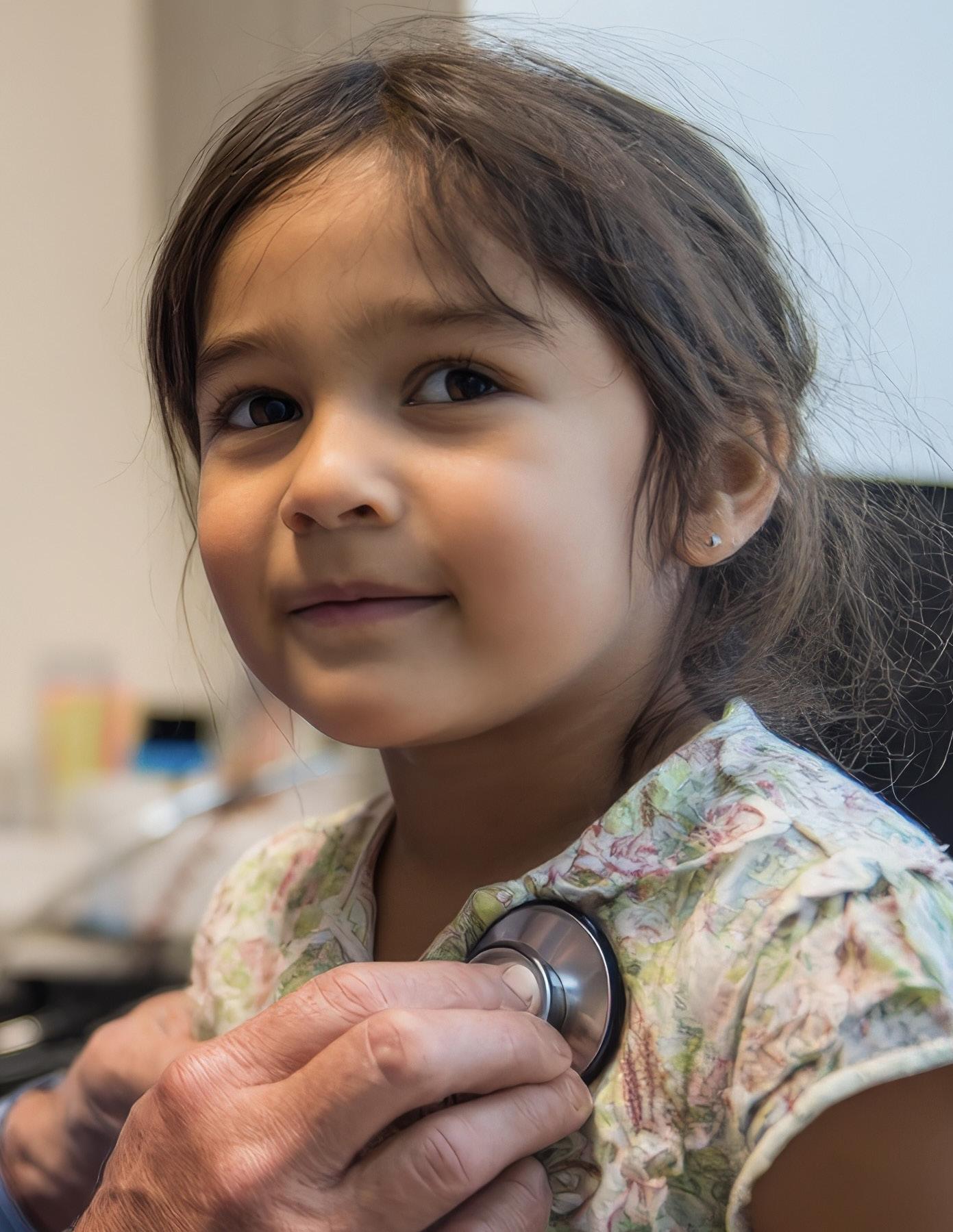
“Native individuals from any setting can also have reluctance to engage with the medical system or providers given a not-so-distant history of nonconsensual experimentation up until the 2000s and coerced sterilization of up to one-fourth of all Native women of reproductive age in the 1970s.”
HEALTH EQUITY
continued from Page 57
o Remember that patients may live away from their ancestral lands and could have any tribal or regional origin.
• Know local resources available to Native patients.
o Determine whether there are Native community organizations, upcoming health fairs, or drop-in screening sites in your area.
During encounter
• Establish shared experiences, interests, or regional origins with Native patients when possible to build rapport.
• Be aware of implicit bias, which everyone carries.
• Show respect and use clear communication to help patients feel comfortable expressing their needs.
o Recognize that Native patients are more likely to report dissatisfaction with care than non-Hispanic white patients.
o Consider that storytelling is an important cultural practice for many Natives and may be useful in communication.
• Be prepared for skepticism and questions about testing or treatment due to historical experiences.
• Some patients, especially elders, may use both Western and traditional medicines or approaches to health. Be open to partial use of offered services.
• Adapt as possible to cultural beliefs and practices surrounding health and healing. For example, some patients may want to burn traditional plant medicines (smudging). If your facility allows candles or incense, provide a designated space where this can occur. Is there a place in your facility where burning candles or incense is allowed and they may be able to smudge?
• Be mindful of health disparities. Native patients are more likely to experience poor outcomes and have limited access to care. Consider what testing and treatment can be completed in the emergency department, rather than deferred to outpatient follow-up.
• Collaborate with colleagues by involving patient navigators and social workers whenever possible.
• Practice humility. If you are unsure about a patient’s beliefs or challenges, acknowledge your limitations and ask respectful questions.
Encounter wrap-up
• Remain mindful of access disparities.
o Provide paper copies of test results, scan reports, or notes at discharge.
o Recognize that follow-up may be difficult. Consider using medsto-beds services, dissolvable sutures, or extra wound care supplies when appropriate.
o Ask what type of home or shelter the patient is returning to. Will
they have access to electricity, clean water, or other basic needs?
• Assist with system navigation whenever possible.
o Make appointments before discharge and write down details, as patients may face challenges with follow-up.
Conclusion
Native patients presenting to the ED represent a nuanced group of patients with individual identities and healthcare needs. Specific approaches can help bridge gaps in health care access and outcomes by emphasizing both cultural competence and compassion. One size will not fit all, but relying on generally applicable cultural competency skills and basic respect and communication can make a tangible difference.
ABOUT THE AUTHORS
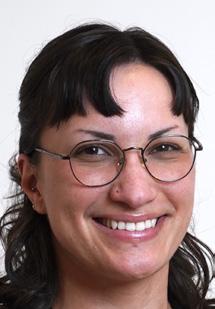

Dixie Blumenshine is a fourthyear medical student at the University of California, San Francisco, and an enrolled citizen of the Oglala Sioux Tribe.
Dr. Bongiovanni is an associate professor in the department of surgery and a trauma and acute care surgeon at the University of California, San Francisco, and San Francisco General Hospital. She works to uplift Indigenous voices in medicine and health care through the Native American Health Alliance and Native American Surgical Society.
INFECTIOUS DISEASES
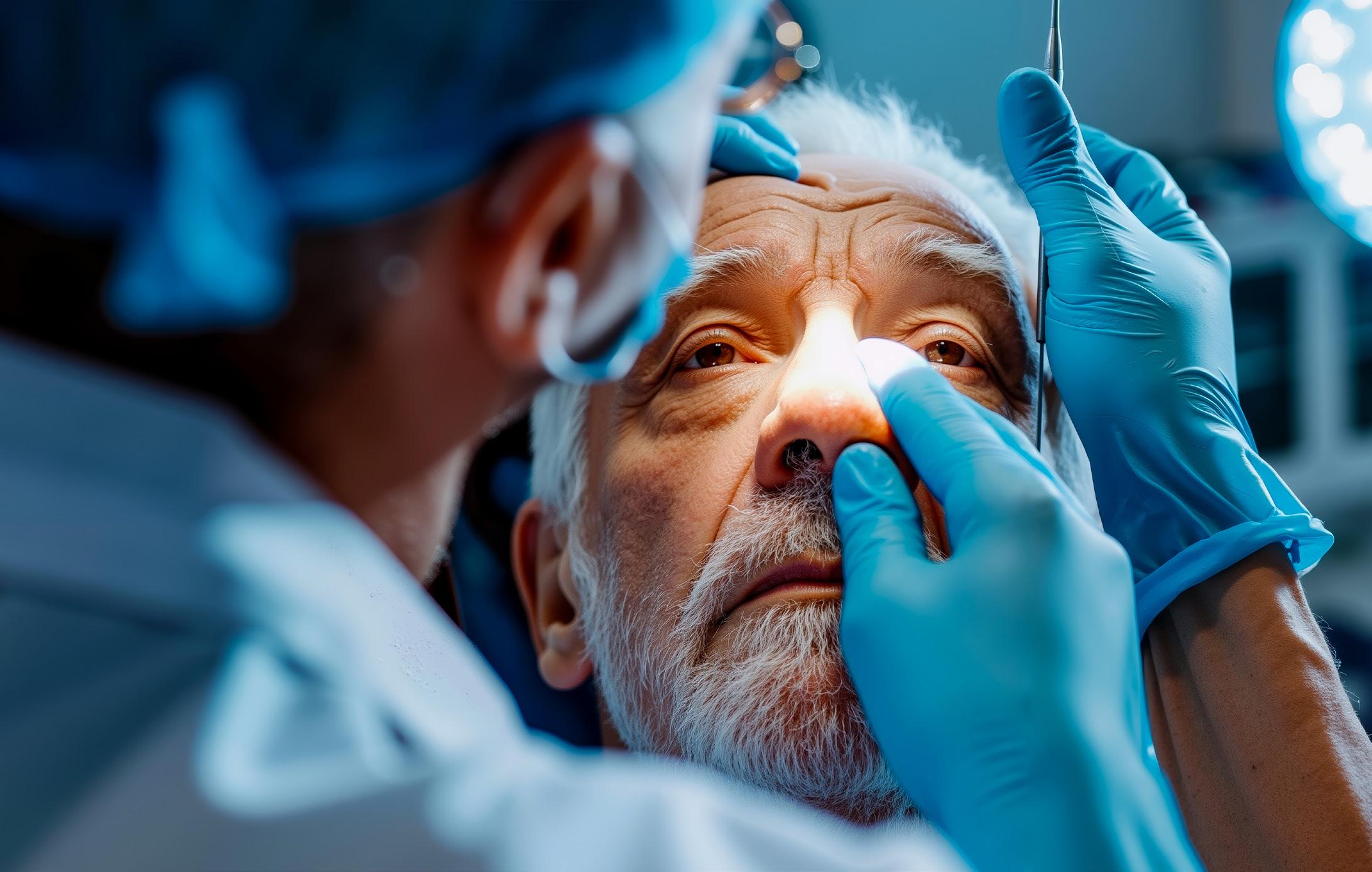
When Sinusitis Turns Deadly: An Atypical Fungal Infection in a Non-Diabetic Patient
By Alexandria Lauray, MD, MS and Michael Levine, MD
Patient Presentation
A 72-year-old man with a notable past medical history of coronary artery disease with two prior stents on clopidogrel, hypertension, chronic recurrent sinusitis, and benign prostatic hypertrophy presented with a three-week progression of nasal crusting, facial pain, and congestion.
Initially, his nasal crusting was mild, but over time it darkened into a stark black eschar on the right side of his nose. He also reported increasing nasal obstruction, particularly on the right, making it difficult to breathe through that nostril. In addition, he developed a persistent retroorbital and temporal
headache, mildly blurry vision, a decreased sense of smell, and an atypical tingling sensation on his right hard palate. He had tried over-the-counter nasal sprays and decongestants without relief. A provider from a recent clinic visit prescribed a four-day course of amoxicillin, but his symptoms did not improve, prompting his presentation. He denied fever, cough, shortness of breath, recent travel, or any other illness.
Physical Examination
On physical examination, he was alert and oriented, with no signs of distress at rest. Facial inspection revealed bilateral telangiectasias on
his cheeks, an incidental vascular finding. The external right nasal cavity demonstrated a large, dark, crusted eschar. Palpation of the right temple elicited tenderness and induration. The right eye showed mild conjunctival erythema, but visual acuity was symmetric, and extraocular movements were intact. There was no evidence of proptosis or ophthalmoplegia.
The hard palate was ulcerated, with petechiae and a small (3-millimeter) circular area of exposed bone. The tongue and oropharynx appeared normal. Despite poor dentition with missing teeth, the oral mucosa was moist and non-erythematous.
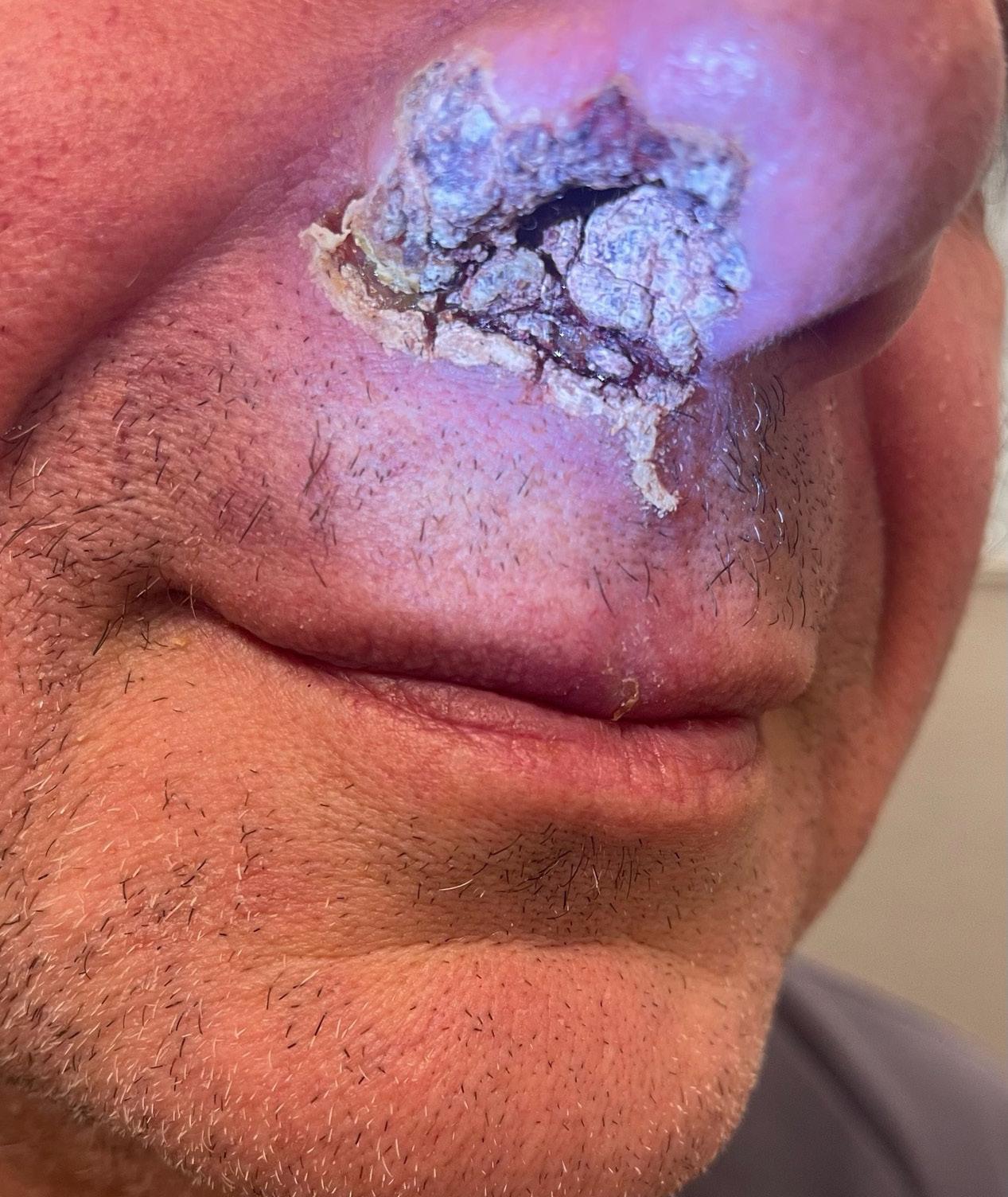
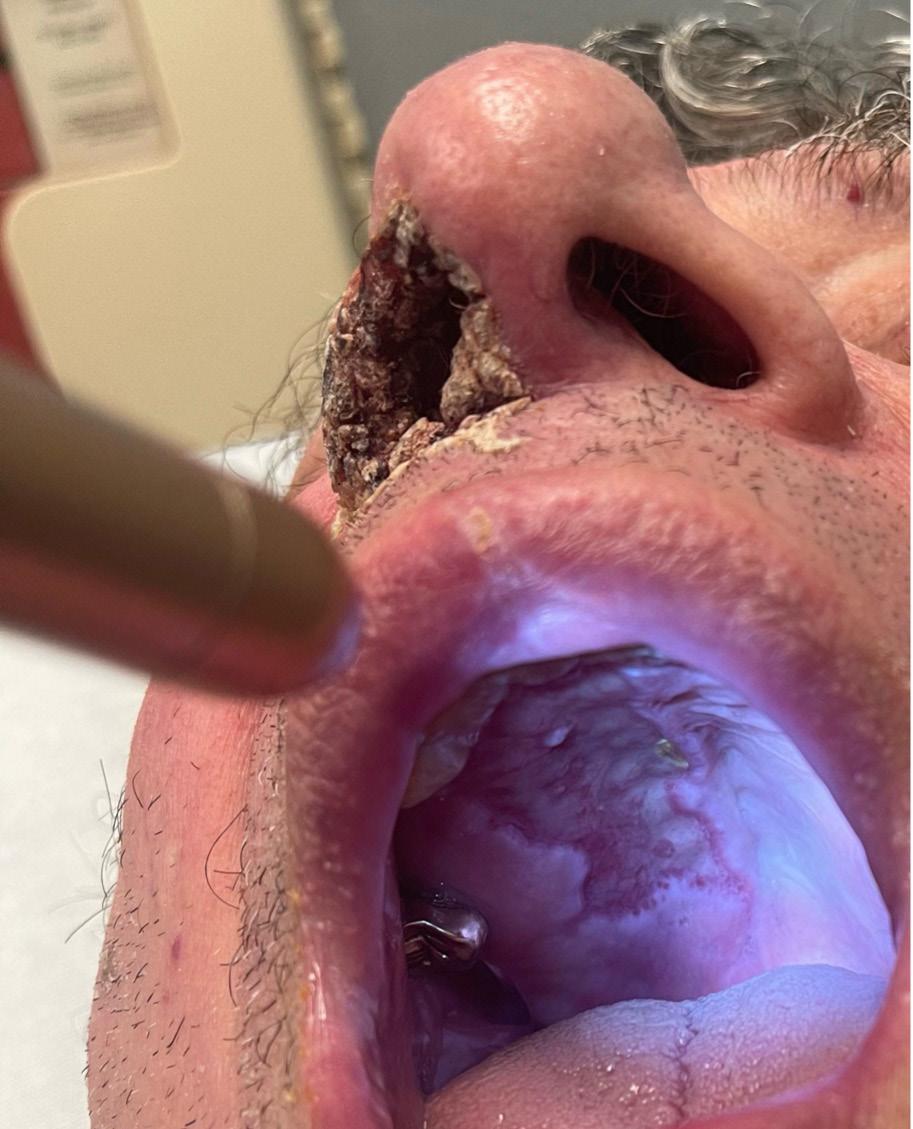
“Without prompt treatment, mortality from mucormycosis surpasses 70 percent; even with therapy, prognosis remains guarded, particularly if intracranial spread occurs.”
Laboratory and Imaging Findings
Laboratory studies, including serum glucose at 103 milligrams per deciliter, complete blood count, basic metabolic panel, lactate, and venous blood gas, were within normal limits. A contrast-enhanced computed tomography scan revealed extensive soft tissue swelling, destruction of the nasal septum and hard palate, and opacification of the right maxillary sinus. Notably, intralesional gas and areas of soft tissue necrosis suggested invasive tissue destruction. Despite these aggressive findings, there was no evidence of intracranial extension at this point.
Diagnosis and Pathophysiology
Mucormycosis is a devastating invasive fungal infection characterized by rapid tissue destruction due to angioinvasion, causing thrombosis, ischemia, and necrosis. Clinically, it often presents as black eschar, tissue swelling, and ulceration. The infection almost exclusively affects immunocompromised individuals, particularly those with uncontrolled diabetes mellitus, hematologic malignancies, or those receiving immunosuppressive therapies. Diabetic ketoacidosis is a well-known risk factor because hyperglycemia and acidosis impair neutrophil function and facilitate fungal proliferation. The
fungi gain entry through inhalation, skin breaks, or mucosal surfaces and then invade blood vessels, leading to rapid dissemination.
Case-Specific Considerations
In this case, the patient lacked typical immunocompromising conditions. He had no diabetes mellitus, tested negative for human immunodeficiency virus, and had no identified cancers. The only identifiable predisposing factor was chronic use of intranasal steroids, which may have contributed to localized immune suppression.
continued on Page 63
Nasal crusting.
Hard Palate CT of the Sinuses
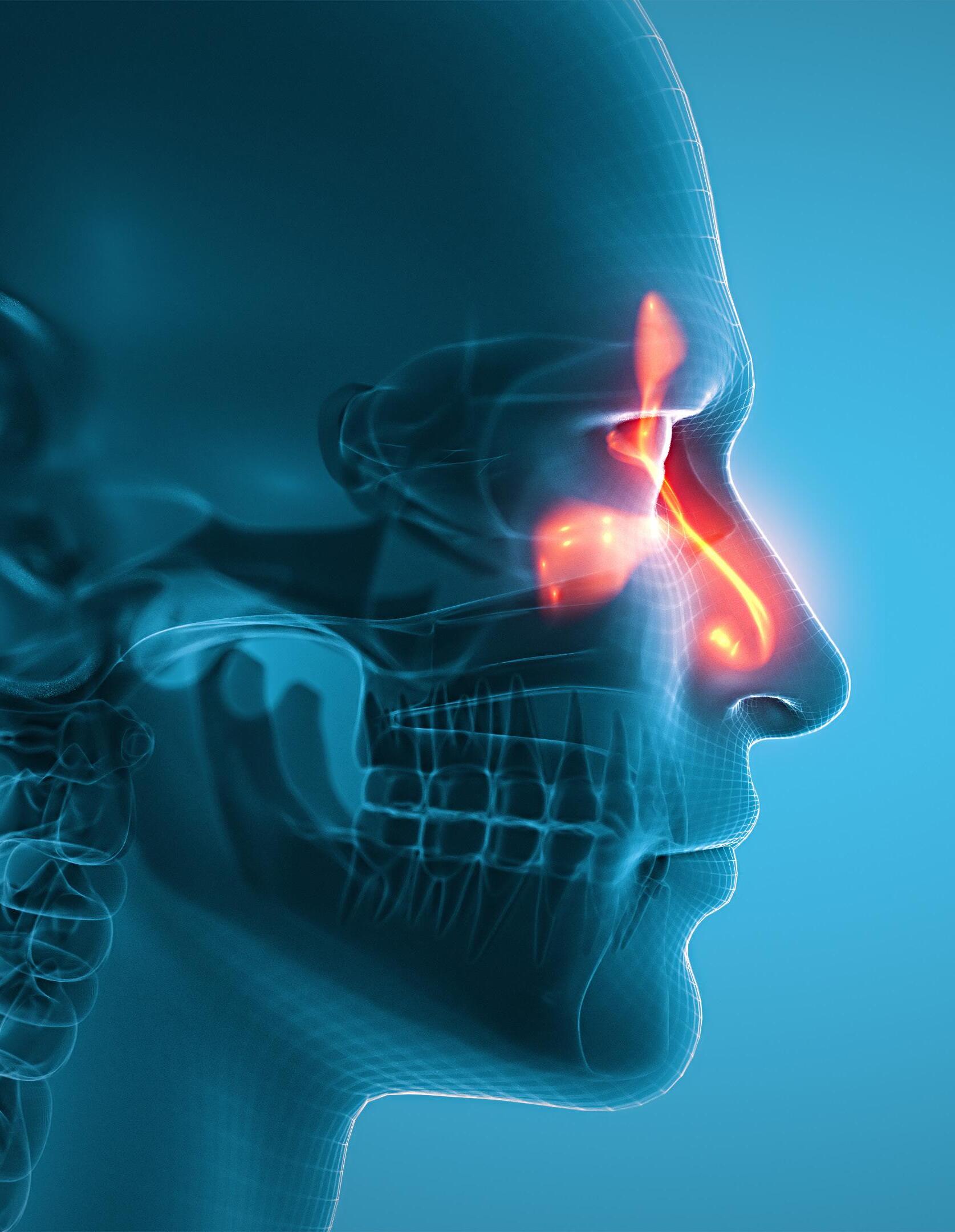
“Emergency physicians must maintain a high index of suspicion, initiate rapid diagnostics, and coordinate urgent care, even in patients without classic risk factors.”
INFECTIOUS DISEASES
continued from Page 61
Given that mucormycosis is generally considered an opportunistic pathogen, clinicians were cautious about initiating potentially nephrotoxic antifungal therapy and transferring him to ear, nose, and throat services without definitive confirmation. This case highlights the complexities in diagnosing invasive fungal infections when classic risk factors are absent and underscores the importance of understanding the varied epidemiology and risk factors associated with mucormycosis.
Clinical Presentation of RhinoOrbital-Cerebral Mucormycosis
In rhino-orbital-cerebral mucormycosis, initial symptoms are nonspecific and include facial pain, nasal congestion, and sinusitis. As the disease progresses, necrosis and black eschars develop, particularly on the nasal turbinates and palate. Neurological signs such as ophthalmoplegia, vision loss, and cranial nerve deficits may occur with intracranial extension.
The patient’s presentation with nasal crusting, necrosis, palate ulceration, and cranial nerve involvement exemplifies classic features. Early symptoms often mimic benign sinus infections, leading to delays in diagnosis. Rapid progression from initial sinusitis to tissue necrosis can occur within days. Imaging helps detect bony destruction and soft tissue involvement, but definitive diagnosis relies on histopathology demonstrating characteristic hyphae and tissue invasion. Cultures may
be positive but can be slow; thus, rapid tissue biopsy and molecular diagnostics are essential.
For this patient, urgent nasal debridement was performed, revealing necrotic tissue and extensive ulceration. Biopsies of the nasal mucosa and palate were obtained for histopathology and culture. Histopathological examination showed broad, non-septate hyphae with right-angle branching invading the blood vessel walls and surrounding tissues, classic features of Mucorales fungi. Special stains, such as Gomori methenamine silver, confirmed these findings. Fungal cultures grew Rhizopus species within 48 hours, confirming the diagnosis.
Management and Treatment
Effective management of mucormycosis requires a rapid, multimodal approach. Immediate surgical debridement of necrotic tissue is crucial to reduce fungal burden and prevent further spread. First-line systemic therapy involves high-dose liposomal amphotericin B (5–10 milligrams per kilogram per day), with alternatives such as posaconazole or isavuconazole considered if intolerance or refractory disease occurs. Equally important is controlling predisposing factors, including tight glycemic regulation and correction of acidosis. Supportive care includes vigilant monitoring for intracranial extension and secondary infections, along with prompt management of complications to optimize outcomes.
Outcome and Follow-Up
Without prompt treatment, mortality surpasses 70 percent. Even with
therapy, prognosis remains guarded, particularly if intracranial spread occurs. Early recognition and intervention significantly improve survival.
The patient was transferred to a tertiary facility, where he underwent extensive surgical debridement and intravenous antifungals for two weeks. Follow-up shows substantial healing, patent airways, and no signs of recurrent necrosis. His course remains favorable with ongoing outpatient monitoring to prevent recurrence.
Clinical Implications
This case highlights the importance of suspecting mucormycosis in patients with refractory sinusitis, facial necrosis, or swelling, particularly among high-risk groups. Emergency physicians must maintain a high index of suspicion, initiate rapid diagnostics, and coordinate urgent care. It also underscores that atypical presentations can occur in patients without classic risk factors.
ABOUT THE AUTHORS
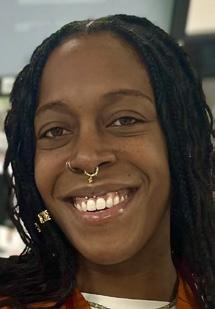
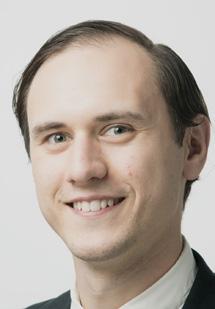
Dr. Lauray is a PGY-2 emergency medicine resident at The Brooklyn Hospital Center.
Dr. Levine is director of emergency department simulation and an attending emergency physician at The Brooklyn Hospital Center. He is also a clinical instructor of emergency medicine at the Weill Cornell College of Medicine.

From Tools to Teammates: How AI Agents Are Transforming Emergency Medicine
By Donald S. Wright, MD, MHS, and R. Andrew Taylor, MD, MHS, on behalf of the SAEM Informatics, Data Science, and Artificial Intelligence Interest Group
Artificial intelligence (AI) is increasingly present in emergency medicine. AI-augmented clinical decision support tools flag patients at risk for sepsis, ambient documentation systems transcribe clinical encounters, and triage assistants help assign acuity levels. These systems are, in most cases, single-purpose applications — taskspecific tools that offer automation for narrow segments of clinical work. They reduce friction but often add cognitive cost: the emergency physician remains responsible for navigating between dashboards and integrating findings into a cohesive clinical picture.
In contrast, the bleeding edge of AI development is converging on a more coordinated paradigm: the agentic framework. Instead of siloed tools, agentic systems employ multiple AI agents working together. These systems promise to shift AI from fragmented utilities to collaborative digital teammates, transforming how clinicians interact with data, workflows and decision-making in the emergency department (ED).
What Is an AI Agent?
An AI agent is more than an algorithm; it is a system designed to perceive, reason and act within a
defined environment in pursuit of a specific goal. Unlike passive models that wait for user input, agents operate with a degree of autonomy. They can observe relevant data (for example, patient vitals and clinical notes), interpret those data (such as identifying a deterioration trend), and initiate actions (such as drafting a note, queuing an order or sending an alert).
They may be reactive or proactive, acting in anticipation of clinical needs. In practical terms, an AI agent in emergency medicine might monitor vital sign streams for early signs of decompensation, transcribe
“The transition from artificial intelligence tools to artificial intelligence teammates is not speculative; it is already underway.”

clinician-patient interactions using ambient listening, or summarize a complex chart before the physician enters the room.
What Are Agentic Workflows?
An agentic workflow refers to a system in which multiple AI agents operate in concert, often managed by an orchestrator. The orchestrator functions as the central coordinator, activating agents as needed, managing task dependencies, integrating their outputs and presenting relevant information to the human user in a consolidated, contextualized form.
This structure mirrors how clinical teams operate. Just as an emergency physician relies on input from nurses, respiratory therapists and consultants, an orchestrator manages a team of AI agents, each focused on a welldefined task.
In cutting-edge AI research, multi-agent coordination is rapidly
advancing. Systems such as OpenAI’s Five (real-time teambased gameplay), Meta’s Cicero (human-level strategic negotiation in Diplomacy) and DeepMind’s AlphaStar (hierarchical, self-training agents in StarCraft) demonstrate that multiple agents, when structured appropriately, outperform monolithic models in complex environments. These systems achieve coordination, real-time decision-making and longterm planning by distributing tasks across agents — each with defined roles, memory and communication capabilities.
Why Emergency Medicine Needs Agentic Workflows
The primary benefit of these types of systems is the background automation of low-complexity tasks to which AI is well suited, reducing cognitive and clerical load on physicians and other staff. Documentation, order entry, formfilling and routine monitoring are all
critical tasks that need to happen, but they do not necessarily require the expertise of a physician.
Consider, for example, a potential visit for a patient with a fever and shortness of breath:
• Arrival agent: The patient completes forms on a tablet while the triage nurse performs a quick visual assessment and collects vitals. The intake agent assembles a snapshot of the relevant triage data and proposes a provisional acuity level, which is approved by the nurse.
• Bed management agent: A room in the ED opens and a throughput agent automatically reviews the list of both patients anticipated via ambulance and in the waiting room to optimize selection of the next patient to be placed in the bed, notifying the waiting room staff to bring the patient back.


continued from Page 65
• Documentation agent: The bedside nurse connects the patient to the monitor while taking a brief history, all of which is automatically transcribed to their note by an ambient listening agent running on their phone.
• Standing orders agent: While the bedside nurse is taking the history, a separate standing orders agent reviews all the data to this point and determines the patient meets the predefined inclusion criteria for a rule-out pneumonia pathway, automatically placing the appropriate standing orders in a queue for the nurse to approve.
• Summarization agent: As the nurse collects labs from the standing orders panel, the physician reviews a one-page summary of the patient’s entire chart — medical history, triage complaint and nursing documentation — all summarized and cited to minimize repetitive questions and reduce the risk of missed diagnoses in the context of a 1,673-page medical chart.
Challenges and Ethical Guardrails
Despite their promise, agentic systems raise new concerns. When multiple autonomous agents interact, emergent behavior can occur that is sometimes surprising, sometimes harmful. Ensuring that agents behave safely in aggregate, not just in isolation, is a key area of active research.
“By offloading low-value tasks, agentic systems could return our attention to where it matters most: the bedside, the critical decision, the conversation.”
Explainability is also essential. For clinicians to trust an agent’s recommendation, they must understand how it was derived. Agentic systems must be designed with transparency: audit trails, citations and the ability to “look under the hood” of decision logic. Finally, these systems must preserve human authority. AI agents can support clinical care, but the physician must remain the final arbiter. Systems must be structured to escalate uncertainty, flag ambiguous cases and defer to human expertise.
Looking Ahead
The transition from AI tools to AI teammates is not speculative; it is already underway. The key shift is from software that responds to commands to systems that collaborate, anticipate and coordinate.
Emergency medicine, with its high volume, multitasking and team-based care structure, is uniquely positioned to benefit. The first generation of agents will not replace clinical judgment, but they may restore it. By offloading low-value tasks, agentic systems could return our attention to where it matters most: the bedside, the critical decision, the conversation. Emergency physicians should not passively await this future. We should lead it, ensuring these systems are designed with our patients, workflows and ethics in mind. AI agents will be part of the next era of emergency care. The question is not whether they’ll arrive, but how we shape their role on the team.
ABOUT THE AUTHORS

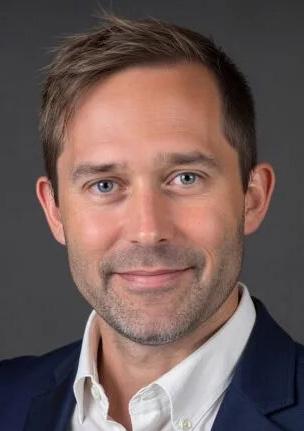
Dr. Wright is a clinical informatics fellow and instructor of emergency medicine at the Yale School of Medicine.
Dr. Taylor is the Robert E. O'Connor distinguished professor of emergency medicine and vice chair of research and innovation at the University of Virginia.

Streamline Residency Policies: 5 Steps to Create a Custom GPT
By Connor Grant, MD; Rana Kabeer, MD, MPH; and Eddie Garcia, MD
Policies and procedures shape nearly every aspect of residency— from conference credit to leave to scheduling. Yet accessing this information often means emailing administrators and chief residents or digging through long PDFs, which can waste time and create frustration. Large language models (LLMs) and a generative pretrained transformer (GPT)–style assistant confined to your program’s documents can provide quick, cited answers without pulling from the open web. Using retrieval-augmented generation (RAG) limited to institutional files, it delivers contextspecific responses and keeps written policies as the source of truth.
Whether you are a program director, program coordinator, or resident, building a custom GPT specific to your program can streamline access to critical information. This guide walks you through assembling such a resource in under an hour with no coding knowledge required. Our group details using OpenAI’s ChatGPT and its standard model (GPT-4o); however, the approach generalizes to comparable tools.
What you’ll need:
• Current resident-facing policy documents (PDF/Word/Google Docs exported to PDF). No protected health information (PHI).
• About 60 minutes for an initial build, plus light monthly maintenance.
• A paid account on your chosen platform to create the assistant; colleagues can typically use it via a shared link (free tiers may face capacity or tool limits).
Step 1: Prepare your policy documents
Start with resident-facing policies (leave, duty hours, conference, evaluations, remediation) and add faculty or administrative documents later.
• Deduplicate and version: Keep one current policy per topic; remove older copies.
• Simplify file names for retrieval: e.g., Residency_LeavePolicy_2025.pdf.
• Combine judiciously: Merge short, closely related PDFs only when it clarifies context; otherwise, keep distinct files to improve retrieval precision.
• Prefer text-native PDFs: Imagescanned PDFs bloat size and reduce search quality; use clean text exports.
Upload limits (as of Aug. 2025): On ChatGPT, you can attach up to 20 knowledge files (PDF/DOCX/TXT) per assistant, each up to 512 MB and capped at roughly 2,000,000 tokens per text file. Limits can change, and general user or organization caps may also apply. If you have more than 20 documents, consolidate related policies into a single PDF.
Step 2: Go to ChatGPT and start a custom GPT
1. Visit chat.openai.com
2. Create or log in to a paid ChatGPT Plus account, which is required for custom GPT creation. Only the custom GPT creator needs a Plus account; it can be shared across a core group of residency program leadership.
3. Access the "GPTs" page. On the left sidebar, click “GPTs.” Alternatively, go directly to https://chat.openai. com/gpts
4. In this window, click “+ Create” in the top-right corner. You can also click “My GPTs”; after doing this, the first thing at the top of the page will be “Create a GPT.”
Step 3: Use the chat interface to build your custom GPT
Your LLM can guide you through the creation process via a simple chat conversation, with no coding knowledge required. Accuracy in this use case depends more on your documents and instructions than on model variants, which is why we constrain scope, require citations, and disable web browsing.
Understanding the “Create” vs. “Configure” tabs (Figure 1)
• Create tab: This is where you define your GPT’s personality and purpose via the interactive chat setup.
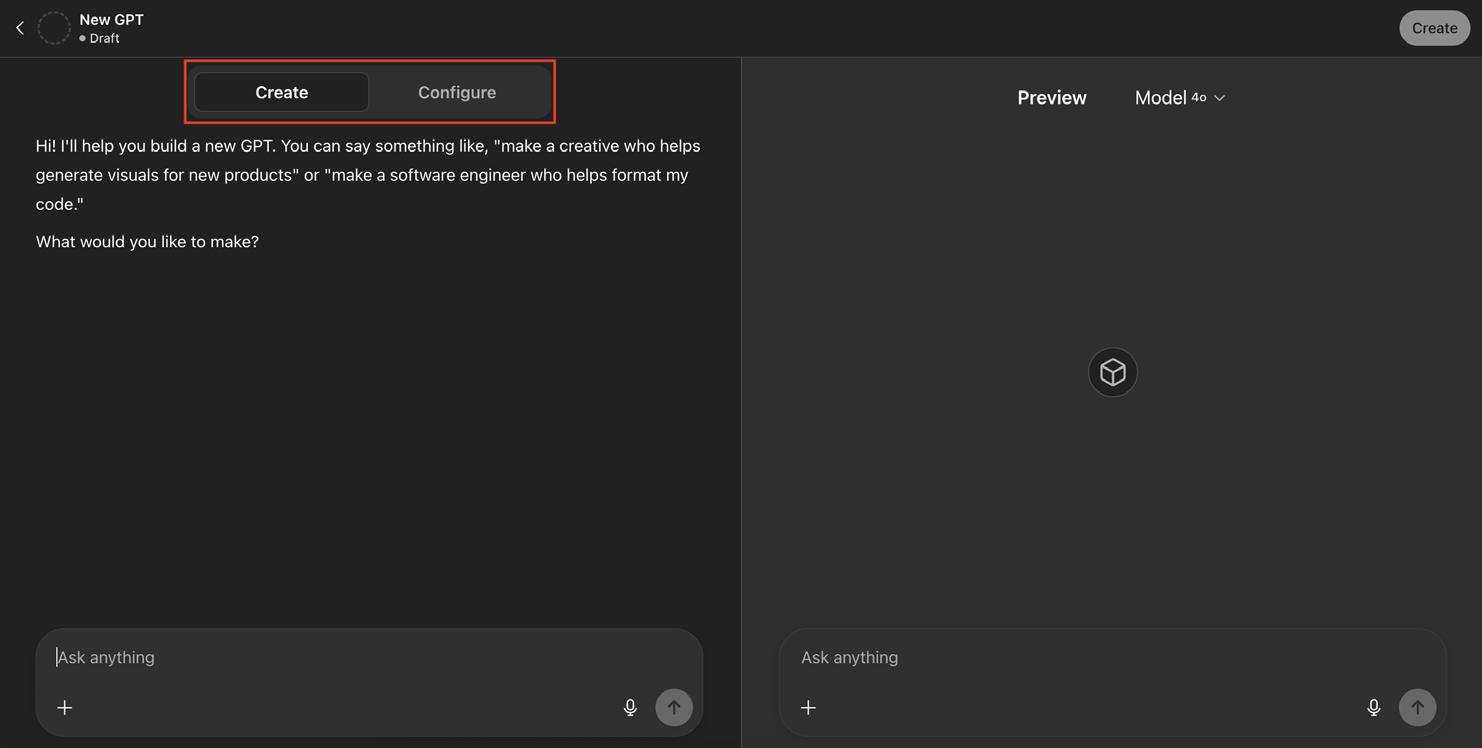
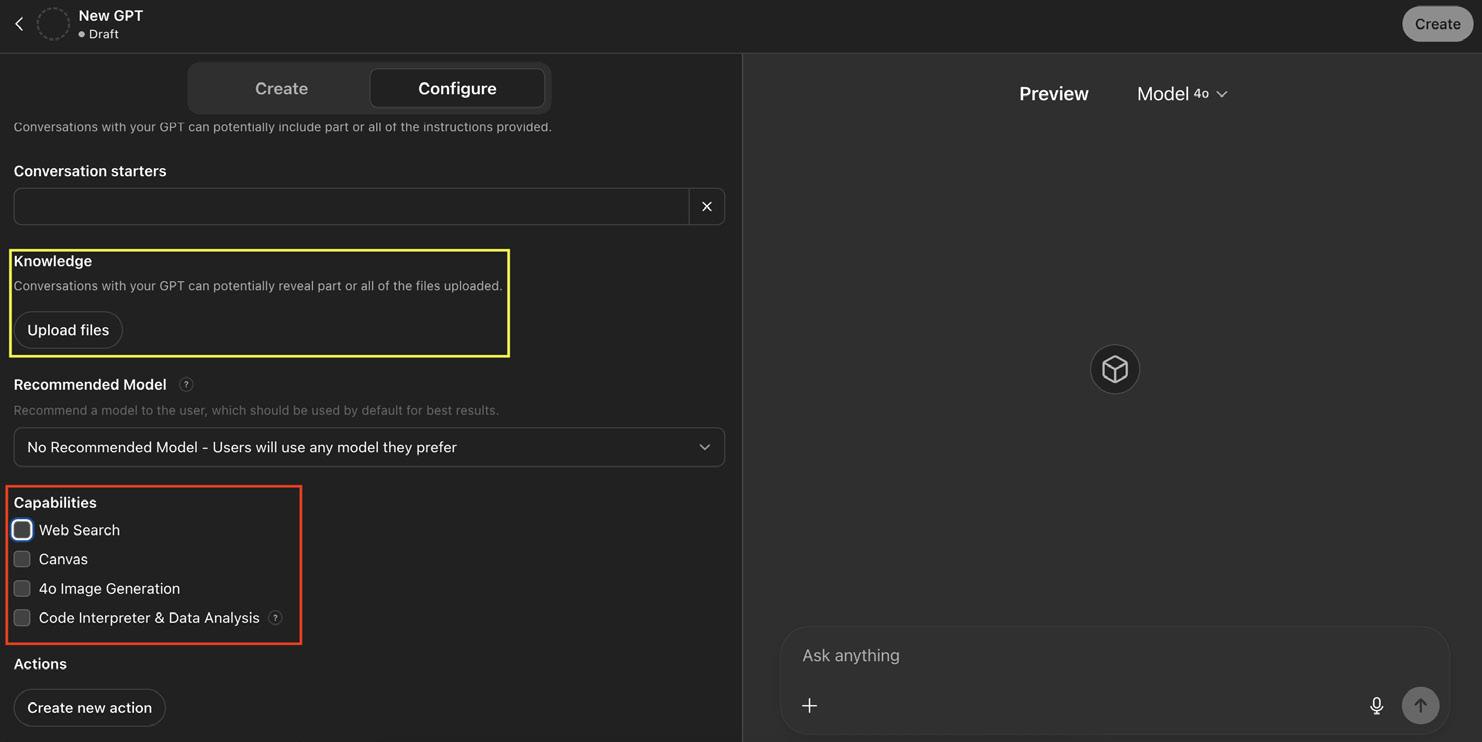
o Example instructions to hard-guard the model:
- Role & scope: You answer questions about this program’s residency policies using the uploaded files only. If a question is outside this scope or the answer is not in the files, say “I don’t know based on the documents provided.”
- Citations: For every answer, cite the filename and page/ section (e.g., Residency_ LeavePolicy_2025-07-01.pdf, p. 3). If multiple documents conflict, say so and list each source.
- Grounding rules: Do not use outside web information. Do not infer or generalize. Quote policy language when precision matters, and then summarize plainly.
- Tone: Concise, helpful, neutral. Offer next steps when the policy requires contacting a person or completing a form.
• Configure tab: Upload documents here, fine-tune instructions, disable web access, and control the tools it can use.
Tip: Turn off web browsing to prevent mixing external content with institutional policy and keep answers traceable to your source-of-truth documents (Figure 2).
Step 4: Test your GPT
Use the “Preview” section to test your GPT. Check for accuracy and citations, how unknowns are handled (e.g., ability to answer a question with “I
continued on Page 71
Figure 1. Screenshot of the ChatGPT “Create” and “Configure” tabs used to build a Custom GPT.
Figure 2. Screenshot of ChatGPT’s Custom GPT configuration settings. Knowledge document upload area highlighted with yellow box. Capabilities section highlighted by red box.
“By leveraging a custom by document-limited programs can streamline confusion, and empower


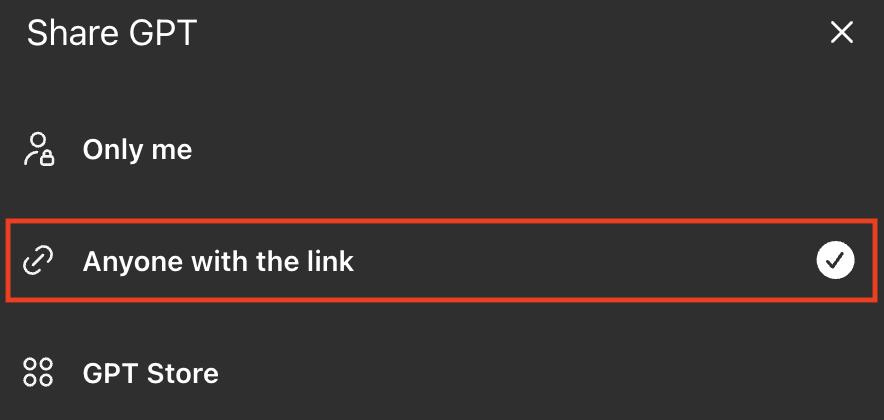
INFORMATICS
continued from Page 69
don’t know” instead of hallucinating), conflict detection (flagging when two files disagree), and latency/clarity (does the first answer resolve the question), iterating and clarifying as needed.
Step 5: Deploy your custom GPT
Once your custom GPT is built and tested, click “Create” in the upperright corner of the page. When sharing, select “Anyone with the link” to share this custom GPT with your residency (Figure 3). Anyone with a free ChatGPT account can access it with the link, noting that free-tier users may hit capacity or tool limits at busy times.
Best practices for custom residency policy GPTs
• No PHI in uploads or prompts. This tool is for policy, not patient care.
custom generative pre-trained transformer powered document-limited retrieval-augmented generation, residency streamline administrative workflows, minimize policy empower trainees with timely, accurate information.”
• Source-of-truth disclaimer: “This assistant summarizes policy. The policy document is authoritative.”
• Hallucinations can creep in. Keep the refusal language in instructions and test for it monthly.
Summary
By leveraging a custom GPT powered by document-limited RAG, residency programs can streamline administrative workflows, minimize policy confusion, and empower trainees with timely, accurate information.
Disclosure statement: The authors have no conflicts of interest to disclose. They have no affiliation with OpenAI and received no financial compensation regarding this article.
ABOUT THE AUTHORS
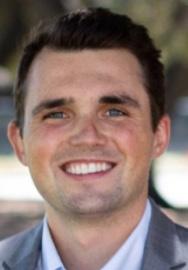
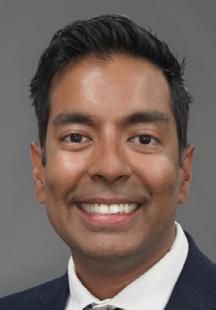
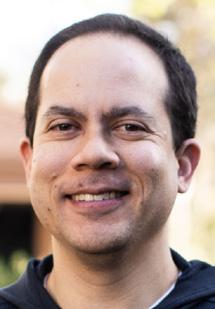
Dr. Grant is a fourth-year emergency medicine resident at Stanford. He is currently serving as one of the residency program’s chief residents.
Dr. Kabeer is an assistant clinical professor within the Stanford Department of Emergency Medicine. He previously completed the Stanford emergency medicine innovation and design fellowship.
Dr. Garcia is an assistant clinical professor within the Stanford Department of Emergency Medicine. He also serves as an assistant residency program director.
Figure 3. Screenshot of the Share GPT settings in ChatGPT, highlighting the “Anyone with the link” sharing option.
PALLIATIVE MEDICINE
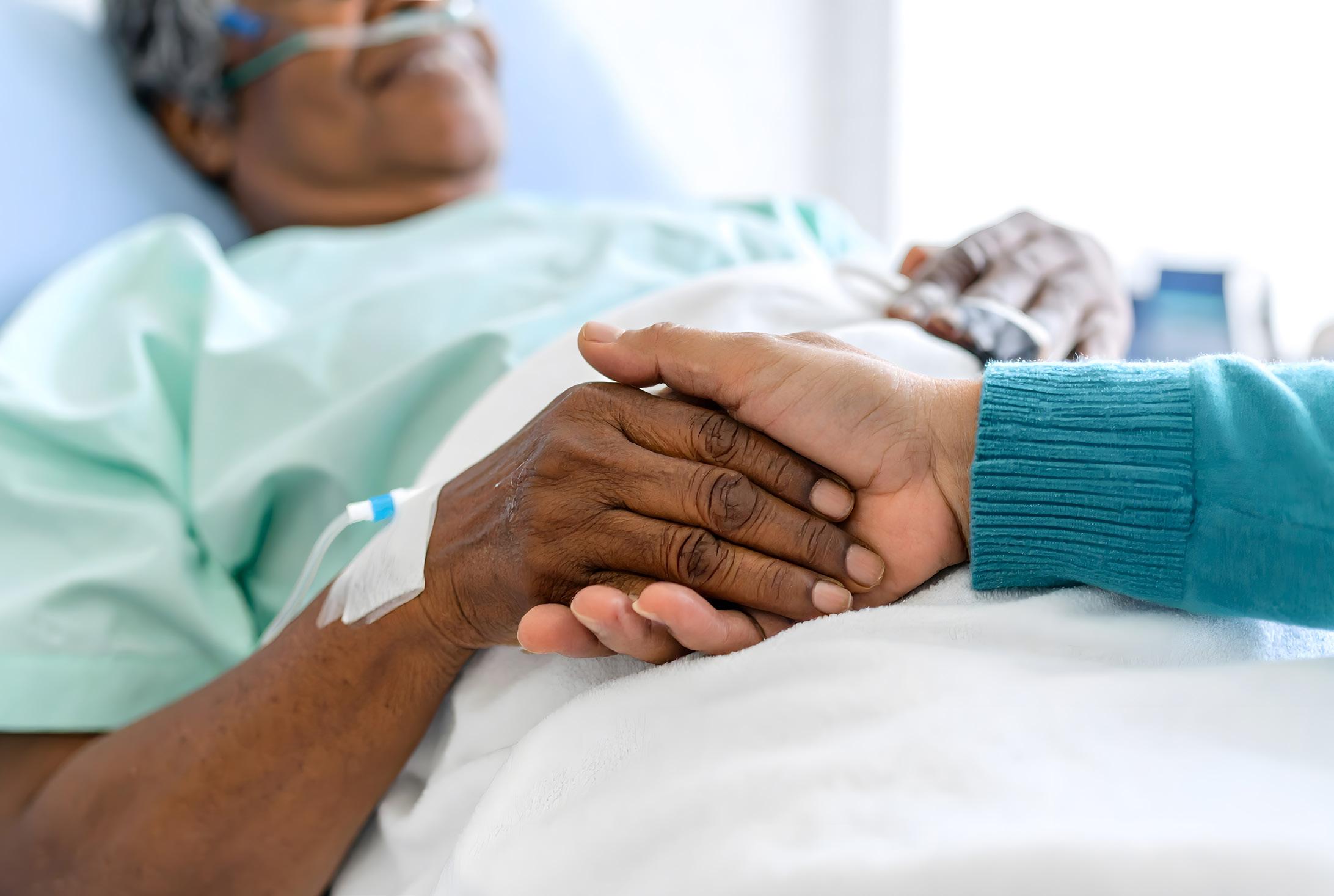
Beyond Resuscitation: A Reflective Commentary on Integrating Palliative Care in the ED
By Paul Grosrenaud, MD
“If we extubate, we would keep him on oxygen for comfort. We would decrease his sedation. He might regain consciousness. He could recognize you. Maybe even speak.”
This isn’t a quote from a real doctor—it’s from Dr. Robinavitch in the TV show “The Pitt,” explaining end-of-life options to a patient’s family in the episode “10 am.”
Is this real life? No—but for those of us practicing, or learning, emergency medicine, this is about
as close as TV gets. In a genre often focused on resuscitation rather than reflection, “The Pitt” offers something rare: a realistic portrayal of how palliative care belongs in the emergency department.
As someone training to become both an emergency and palliative care physician, I was thrilled to see a pop culture hit like “The Pitt” articulate the beauty and reality of this work. But beyond that, the show raises a broader question: What can “The Pitt” teach clinicians, trainees, and viewers about how palliative
care functions in the emergency department? The answer is: quite a lot.
Joseph Spencer is an elderly man brought to room 3 in the ED from his assisted living facility with progressive confusion and difficulty breathing. His vitals are tenuous. His adult children, Helen and Jereme, navigate difficult decisions with the medical team. The team gathers clues: evidence of pneumonia and sepsis, his history of Alzheimer’s in old records, and, crucially, his POLST (Physician Orders for Life-
“Emergency medicine and palliative care both occupy a critical space. High-stakes decisions there can reshape futures and redefine what hope looks like.”
Sustaining Treatment) form. It states that “IV fluids and medications are fine, but no intubation and no chest compressions.” This becomes an invitation to honor the patient’s own voice in his care.
Though the environment around them is hectic—clamorous hallways, pages overhead, an off-pitch harmony of cardiac monitors—the scene slows. There, the team pauses long enough to think beyond what’s wrong, to what matters.
In real life, these moments are quieter, sometimes clumsier, but the emotional stakes are the same. I remember one from my own training: a son, eyes darting between his mother and the code cart, trying to make the decision that felt least like abandonment.
Emergency medicine and palliative care both occupy a critical space. High-stakes decisions there can reshape futures and redefine what hope looks like. Too often, we draw hard lines between specialties: palliative care starts after admission, or in oncology offices, or at discharge. In truth, patients benefit when these conversations are started in the ED. “The Pitt” captures this thoughtfully, and I am grateful to see the subject treated with such nuance and care in mainstream media.
When the patient’s children conclude that it’s time to let go, Dr. Robinavitch responds: “I’m sorry, but if there was anything I could do to heal your father, I would do it. But the most humane thing that I can do for him is to allow him a painless, peaceful passing.”
Robinavitch’s words are unforced. He doesn’t moralize or dramatize the
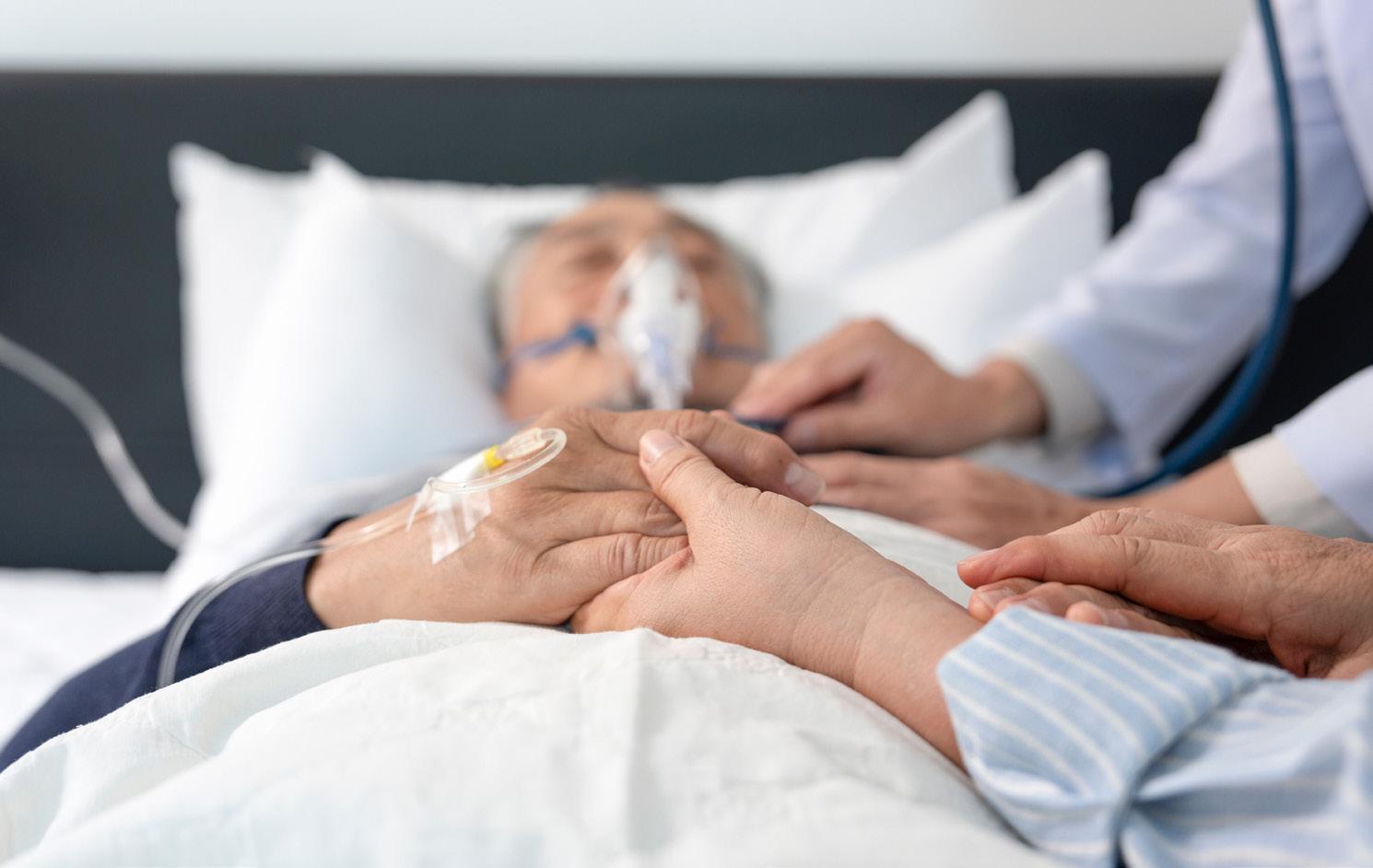
choice. He simply presents it: here is what palliative care looks like when it’s embedded in emergency medicine. It’s a moment from the show that echoes in real life, where the value of palliative interventions is sometimes misinterpreted as inaction, when in fact it requires an entirely different kind of courage.
What “The Pitt” offers the public, and perhaps even our own colleagues, is a reframing. It suggests that emergency departments can serve as places of resuscitation and repair, while also offering reconciliation and relief. Choosing relief over escalation of care can be as vital an intervention as any. Ensuring comfort at the end of life is not a retreat from care, but a deliberate and courageous continuation of it.
The episode demonstrates to the public, and helps remind physicians, how advance directives like Joseph’s POLST aren’t barriers to care as much as they are guides. It shows how
physicians practicing palliative care in the emergency department work to honor both the patient’s wishes and their dignity. There’s something profoundly dignified about care that honors a life as much as it aims to prolong one. If emergency medicine is, at its best, about showing up for people at their worst, then palliative care is one of its most essential tools—not an adjunct, not an afterthought—but a way of seeing, listening, and helping that belongs exactly where the show places it: at the center of the room, at 10 a.m., in room 3.
ABOUT THE AUTHOR

Dr. Grosrenaud is a PGY-3 and chief resident in emergency medicine at Mount Sinai Morningside-West in New York City. He is currently applying for fellowship in palliative care.
PEDIATRIC EM
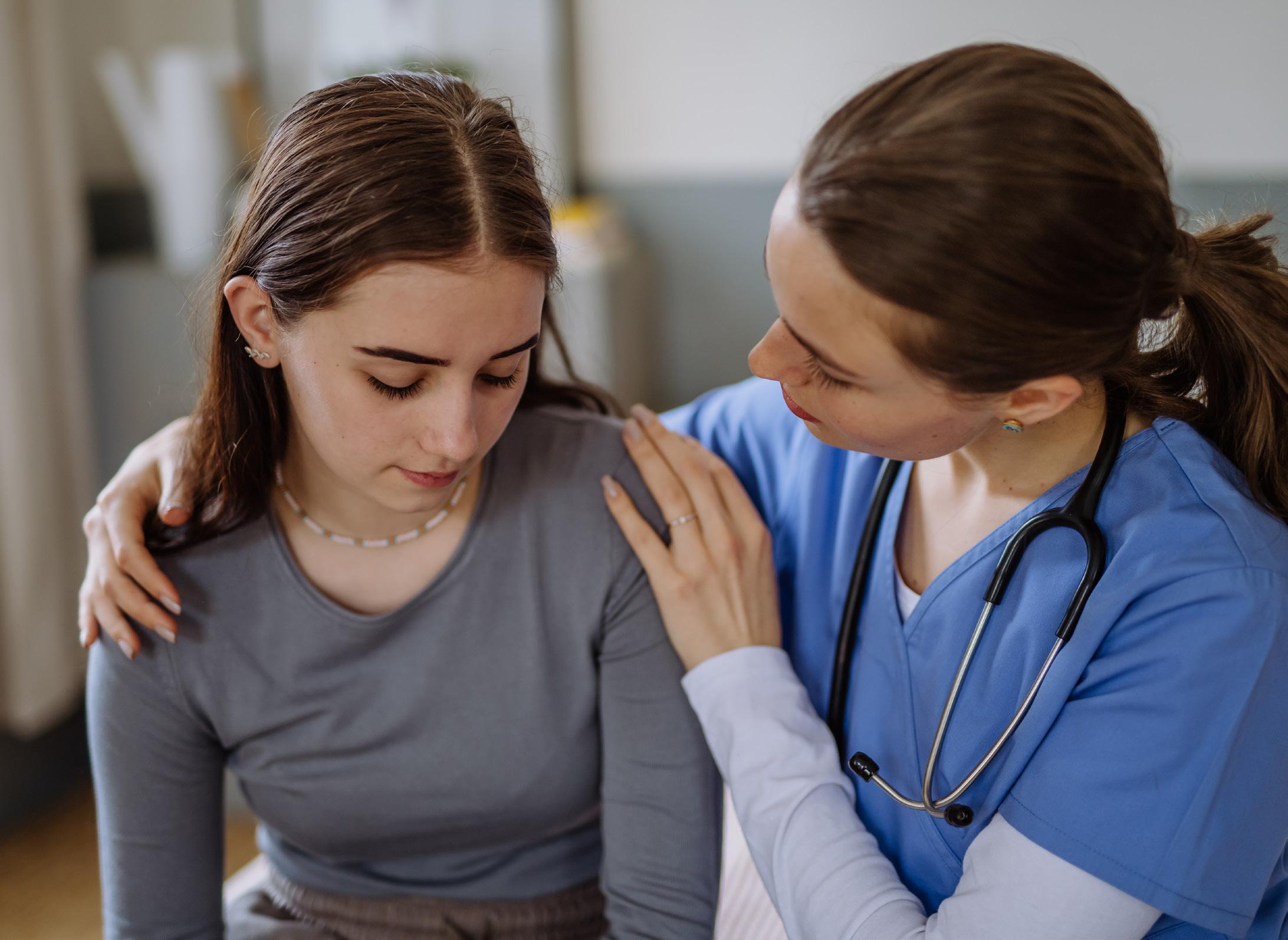
Best Practices for Pediatric Suicide Prevention in the Emergency Department
By Pranav Kancherla and Polina Krass, MD, MSHP, on behalf of the SAEM Pediatric EM Interest Group
Children and Adolescents
Presenting to the ED are at
High Risk of Suicide
Youth suicide is a major public health crisis and the second leading cause of death in adolescents, with 8–10% of adolescents attempting suicide annually. The emergency department (ED) is a key setting for suicide risk detection: 16% of youth report acute risk during routine ED screening, and over 14% of those identified as high risk experience a suicide attempt or death within six months.
Pediatric Suicide Prevention is a Critical Component of ED Care
Integrating routine pediatric suicide prevention practices in the ED can be challenging due to significant time and resource constraints. However, suicide prevention interventions may provide the most impactful health benefit during an ED visit—even if the presenting complaint is not mental health–related. Pediatric ED patients are less likely to have other sources of healthcare and may have greater social needs. As a result,
the ED provides a critical safety net for reducing suicide deaths and disparities in suicide-related outcomes.
ED Suicide Prevention Best Practices
Over the past decade, conclusive literature has demonstrated that EDbased interventions are effective in preventing suicide morbidity across geography and care settings. Three interventions, in particular, have strong supporting evidence:

“Among children younger than 13 years old, Black children have twice the suicide rate of White children.”
1. Universal suicide screening
2. Safety planning
3. Post-discharge follow-up
1. Universal Suicide Screening
Universal suicide screening is feasible in the ED and is associated with significant increases in risk detection and intervention. A 2016 study showed that universal screening nearly doubled suicide risk detection compared with usual care.
The Ask Suicide Screening Questions (ASQ) is the most widely used suicide risk screening tool in
the ED. It consists of four yes/no items and has demonstrated strong test characteristics. The ColumbiaSuicide Severity Rating Scale (C-SSRS) is another widely used tool with excellent test characteristics. It has the additional benefit of evaluating suicidal ideation as well as suiciderelated behaviors.
2. Safety Planning
The Safety Planning Intervention (SPI) is delivered prior to ED discharge and helps patients develop a plan for addressing suicidal thoughts.
Components of SPI include identifying social contacts, professional outreach, self-interventions, and lethal-means reduction. SPI with brief postdischarge follow-up has been shown to decrease suicidal behavior, increase mental health engagement, and reduce acute care utilization in young adult populations.
Lethal-means counseling is a key element of SPI. A recent study of over
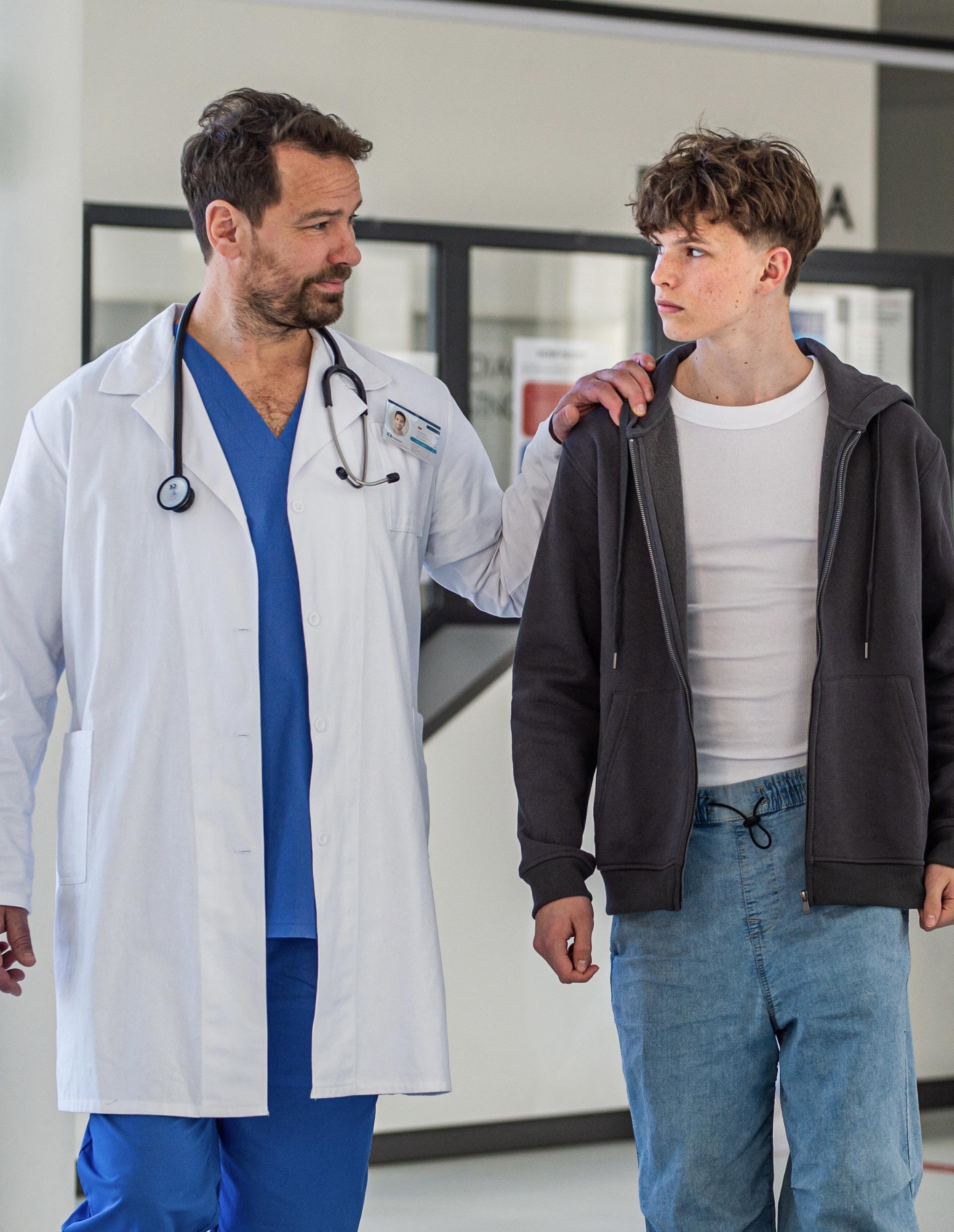
“Suicide prevention interventions may provide the most impactful health benefit during an emergency department visit—even if the presenting complaint is not mental health related.”
PEDIATRIC EM
continued from Page 75
one million ED patients found that in EDs where lethal-means counseling was routinely offered to individuals with mental health disorders, suicide deaths were reduced. Free resources to support effective lethal-means counseling include the Counseling on Access to Lethal Means course, the Means Matter campaign, the decision aid Lock to Live, and SAEM24’s Lethal Means Counseling 101
3. Post-Discharge Follow-Up
Post-discharge follow-up is critical for maintaining continuity of care and safeguarding against repeat suicide crises. Outpatient mental health follow-up at seven and 30 days postED visit is a national quality measure and a requirement for tracking by state Medicaid.
A key discharge referral for all patients and families is the 988 National Suicide and Crisis Lifeline, which provides free call and text support 24/7. A growing number of EDs are also integrating simple postdischarge outreach, such as Caring Contacts, in which patients receive a supportive message via text or postcard following an ED visit. These interventions have shown promise in improving suicide-related outcomes
Promoting Equity in Mental Health Outcomes
Pediatric suicide risk is not equally distributed across population groups. ED-based intervention, when implemented universally, may reduce inequities by identifying youth with intersectional risks for mental health disorders who might otherwise be
missed due to lapses in outpatient care or school attendance.
LGBTQ youth: Adolescents identifying as sexual minorities face heightened suicide risks. Approximately 9.5% of U.S. adolescents identify as lesbian, gay, bisexual, or transgender. Compared with their heterosexual peers, sexualminority youth are more than three times as likely to attempt suicide; bisexual children are four times more likely, and transgender children are more than five times more likely. Among LGB high school students, 46.8% have seriously considered attempting suicide.
Racial and ethnic minorities: Disparities are also evident across racial and ethnic lines. American Indian/Alaska Native youth consistently have the highest rates of suicide attempts and death compared with other racial groups. Among children younger than 13, Black children have twice the suicide rate of white children. Between 2018 and 2021, Black adolescent suicide deaths increased by 36%, compared with a 4% decrease among White adolescents. Black and Hispanic children are also less likely to receive indicated mental health treatment, highlighting systemic gaps in risk and access to care.
Low socioeconomic status: Socioeconomic status is associated with suicide risk. Among youth aged 5–19, higher county-level poverty correlates with increased pediatric suicide rates. Compared with children from counties with the lowest poverty levels, children from counties with more than 20% of the population below the federal poverty line had
a 37% higher likelihood of suicide death. County poverty level was also associated with higher suicide rates due to firearms, indicating a potential need for improved lethalmeans counseling in economically disadvantaged areas.
Identity and environment intersect in shaping youth suicide risk. Implementing ED-based suicide prevention practices for high-risk youth may promote equity in pediatric mental health outcomes.
Future Directions
There is promising work adapting interventions with established evidence in adult populations or non-acute care settings to pediatric patients in the ED. However, the focus must be on scalability, ensuring these interventions do not disrupt ED workflows—or ideally improve efficiency—and that they can be disseminated across diverse ED settings.
To support this work, consider joining the SAEM Social Medicine and Population Health workgroup
ABOUT THE AUTHORS
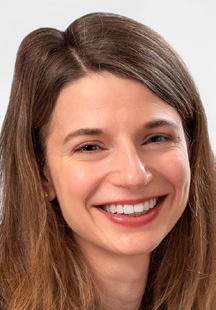

Dr. Krass is an attending physician in emergency medicine at the Children’s Hospital of Philadelphia and an instructor of pediatrics at the University of Pennsylvania.
Pranav Kancherla is a clinical research coordinator at the University of Pennsylvania.
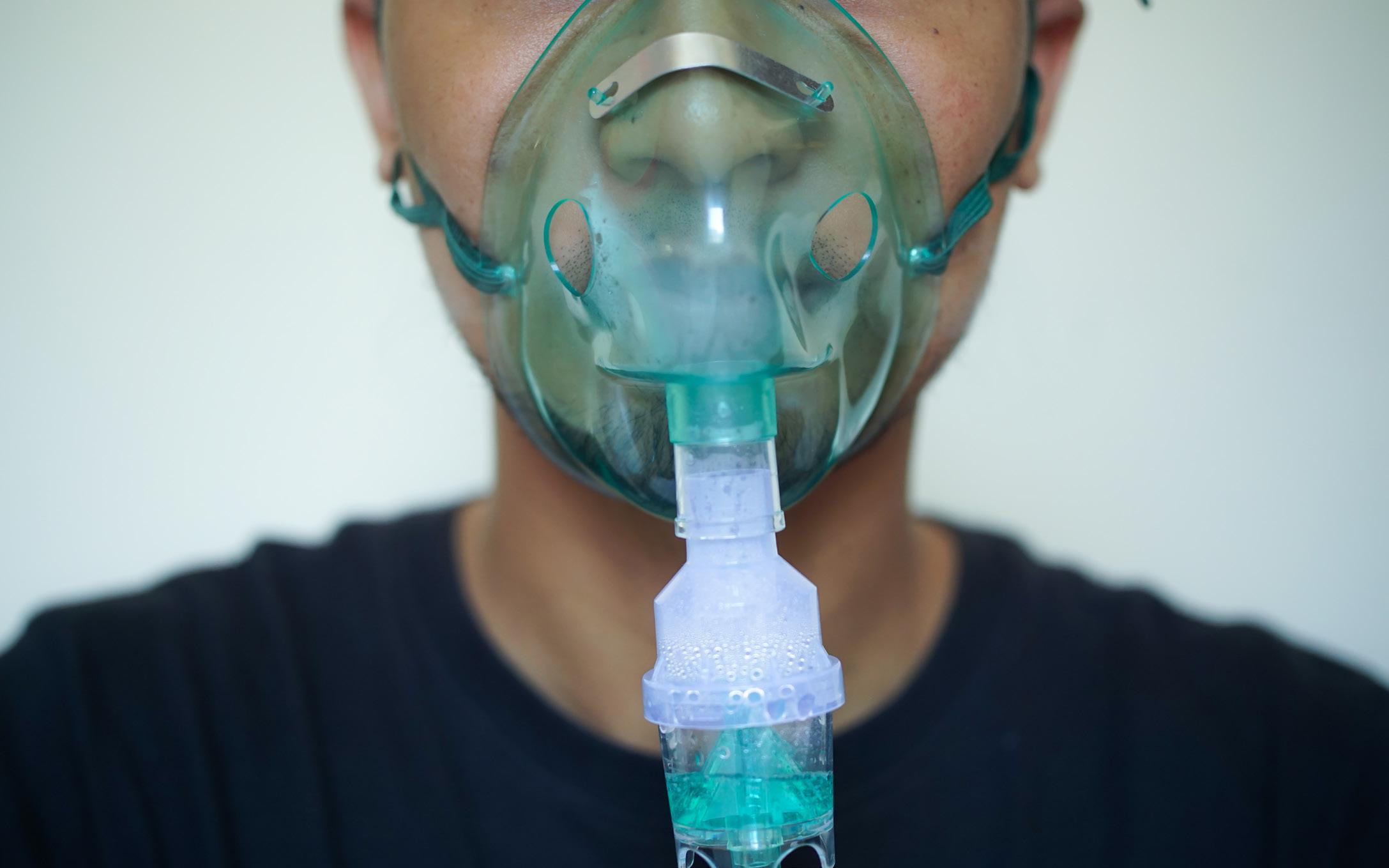
Nebulized Ketamine in the Emergency Department: A Noninvasive Approach to Acute Pain
By Murat Çetin, MD; Sergey Motov, MD; and Derşan Onur, MD
Acute Pain Management in the ED
Acute pain management in the emergency department (ED) is a cornerstone of patient care. Traditionally, pain control with intravenous (IV) opioids can be challenging due to difficult venipuncture, needle phobia, or a desire to avoid opioid side effects. These challenges have increased the need for noninvasive analgesia methods. Nebulized ketamine is emerging as a promising option, especially in scenarios where IV access is difficult or undesirable This approach reflects a broader
trend in emergency medicine toward patient-centered care and strategies to use opioids more sparingly.
Understanding Ketamine: Mechanism and Delivery
Ketamine is a dissociative anesthetic that acts primarily as a noncompetitive antagonist of N-methyl-D-aspartate (NMDA) receptors. This action provides potent analgesia by blocking the transmission of pain signals in the central nervous system.
When administered via nebulization, ketamine’s systemic
bioavailability is reported to be lower (approximately 20%–40%) than with IV administration. The effect usually begins within a few minutes and may last up to 120 minutes, depending on the dose.
Nebulized Ketamine for Acute Pain: What the Evidence Says
Several studies have investigated the efficacy of nebulized ketamine in the treatment of acute pain. A recent systematic review and metaanalysis demonstrated that nebulized ketamine offers similar analgesic efficacy to IV morphine and similar
“Nebulized ketamine is an emerging, noninvasive, and valuable tool for acute pain management in the emergency department.”
rates of rescue analgesia. Another recent randomized controlled trial found no significant difference in pain scores at 30 minutes between 0.75 mg/kg nebulized ketamine and 0.3 mg/kg IV ketamine in moderate to severe acute pain. The KetaBAN study also found no significant difference between three doses of nebulized ketamine treatment. Administration is usually done by diluting the standard IV ketamine solution with normal saline.
Several studies have investigated the efficacy of nebulized ketamine in the treatment of acute pain:
• A recent systematic review and meta-analysis found that nebulized ketamine provided similar analgesic efficacy to IV morphine and similar rates of rescue analgesia.
• Another randomized controlled trial found no significant difference in pain scores at 30 minutes between 0.75 mg/kg nebulized ketamine and 0.3 mg/kg IV ketamine in patients with moderate to severe acute pain.
• The KetaBAN study also reported no significant difference between three different doses of nebulized ketamine.
Administration is typically performed by diluting the standard IV ketamine solution with normal saline.
Advantages in the ED Setting
The use of nebulized ketamine in the ED offers several potential benefits:
• Noninvasive administration: Useful for patients with difficult vascular access, needle phobia, and children.
• Opioid-sparing potential: Can serve as an alternative or adjuvant to opioids, reducing the overall opioid requirement and associated side effects. This could play an important role in reducing overreliance on opioids for a variety of painful conditions.
• Fewer systemic side effects: Because of lower bioavailability, systemic side effects may be less frequent than with IV ketamine.
Safety and Monitoring: Cautions
Nebulized ketamine is generally well tolerated but requires careful use.
• Common Side Effects: Dizziness, drowsiness, unpleasant taste, hoarseness, hypersalivation, and nausea. These may occur less frequently compared to IV administration.
• Serious Side Effects: Rare at nebulized doses, but clinicians should remain alert for complications such as laryngospasm.
• Contraindications:
o Absolute: Known hypersensitivity to ketamine.
o Relative: Pregnancy, infancy (first three months of life), acute porphyria, severe cardiogenic or traumatic shock (due to ketamine’s negative inotropic effects), severe or uncontrolled hypertension, advanced heart failure, and poorly controlled schizophrenia or other active psychotic disorders
Future Perspective and Practical Recommendations
More research is needed to fully define the role of nebulized ketamine. Key areas include determining optimal dosing in pediatric and geriatric populations, evaluating efficacy across nebulizer types, and comparing outcomes against other analgesics.
In conclusion, nebulized ketamine is an emerging, noninvasive, and valuable tool for acute pain management in the ED. It is particularly useful when IV access is
difficult, opioids should be avoided, or additional opioid-sparing benefits are desired.
Practical Notes for Emergency Physicians
• Consider nebulized ketamine (e.g., 0.75 mg/kg) for acute pain in ED patients, especially those with difficult vascular access or who decline IV analgesia.
• Inform patients about potential psycho-perceptual side effects (e.g., drowsiness, feelings of unreality) and ensure appropriate monitoring.
• Always review contraindications (e.g., active psychosis, uncontrolled hypertension) before use. When used carefully and in the right clinical scenarios, nebulized ketamine can be an important addition to the emergency physician’s pain management toolkit.
ABOUT THE AUTHORS
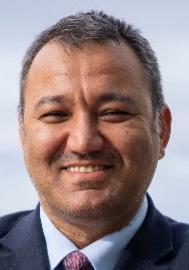
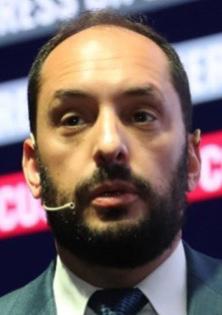

Dr. Çetin currently serves as the secretary general of the Emergency Medicine Association of Turkey (EMAT) and has taken active roles in many working groups, commissions and committees of EMAT at different times.
Dr. Motov is an emergency medicine physician and research director at Maimonides Medical Center. He has numerous publications on opioid alternatives. In his role as research director, he is actively involved in expanding this work both nationally and globally.
Dr. Onur currently works as a pediatrician at Tepecik Training and Research Hospital. He is particularly interested in pediatric palliative care, pediatric emergency medicine, pediatric critical care and pain management.
QUALITY & PATIENT SAFETY
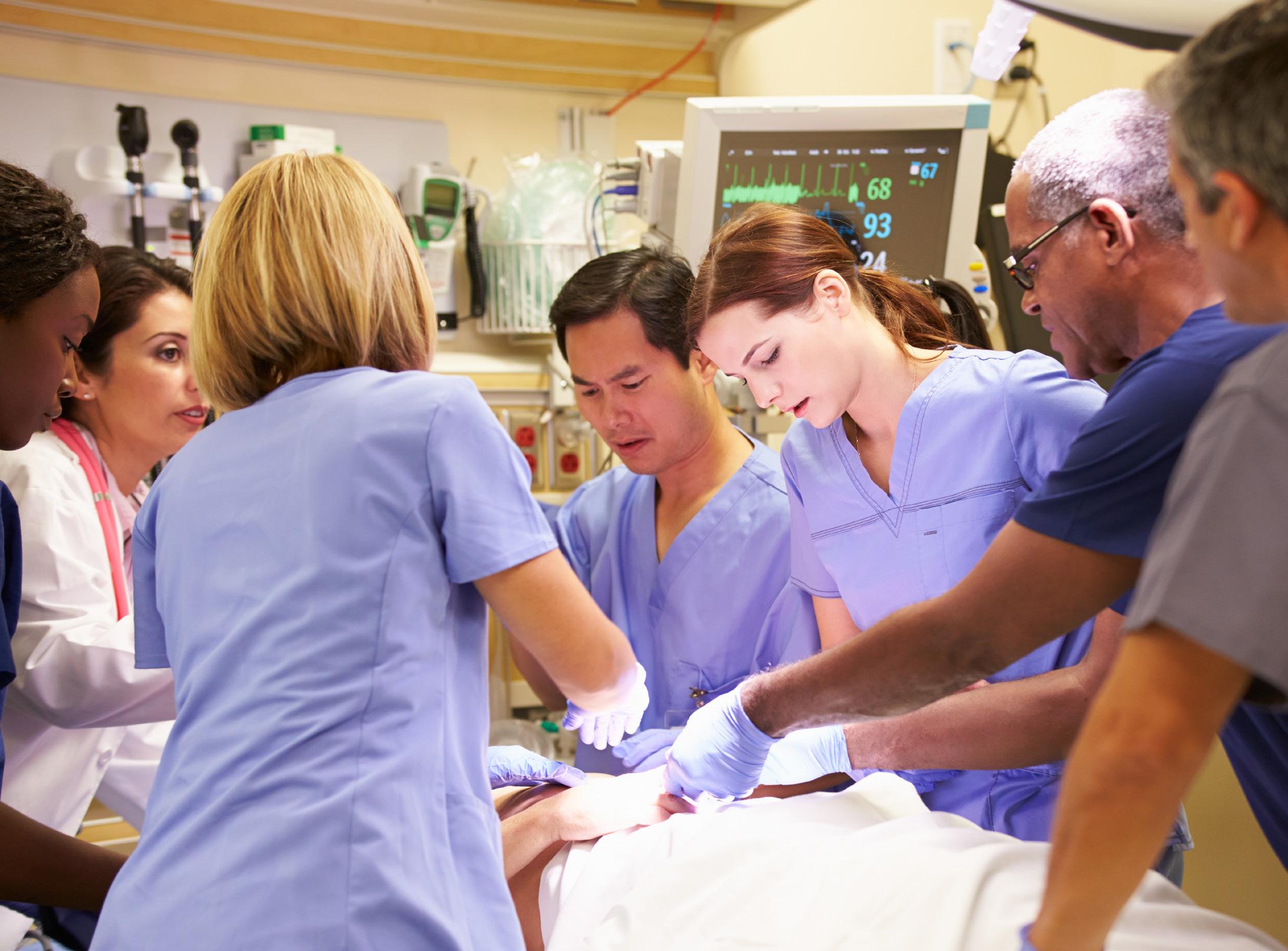
Emergency Physicians: Driving Collaboration Across Healthcare
By Christopher Awad MD, MBA, and Yosef Berlyand, MD, on behalf of the SAEM Quality and Patient Safety Interest Group
The ED: A Hub of Collaboration Amid Chaos
If healthcare were a symphony, the emergency department (ED) would be the conductor’s podium—chaotic, unpredictable, yet undeniably central. Emergency physicians (EPs) aren’t just conductors; they are also the tenors, bass, percussion, and wind instruments when needed.
Our profession stands at the crossroads of the entire medical ecosystem, where the distressed
and the critically complex converge. We fill in the gaps and keep the symphony in progress far beyond the applause. Every patient rolling through our doors reflects broader healthcare trends and new technologies, allowing us to serve as a touchstone for our communities.
The ED is a barometer for public health shifts, the frontline of medical crises, and a space where specialists, hospital leaders, and external industries intersect. Yet,
despite its pivotal role, emergency medicine is rarely seen as a linchpin for collaboration, innovation, and healthcare leadership. It’s time to change that perspective.
Opportunities for Collaboration: The ED as an Innovation Incubator
A Living Laboratory for Medicine and Technology EPs witness firsthand the nuances of drug efficacy, side effects, and
“Emergency physicians are more than first responders— we are the architects of healthcare’s future and the first conductors of care.”
device usability in the most acute scenarios. They also see the effects of chronic use or misuse of chemical and technological innovations.
EPs are sensitive to changes in real-world practice, whether it is the shifting landscape of addictive medications that influence our populations, changes to legislation that alter primary care, medication or vaccine availability, or jurisprudence challenges to reproductive rights. We see how these complexities unfold and affect patient care.
This makes EPs invaluable partners for industries looking to develop software and technology aimed at prehospital surveillance, remote patient monitoring, real-time data acquisition, and patient experience. Companies developing innovation need to understand how technology may change physician behavior. As a field, emergency medicine is constantly demonstrating what adapting to technology and innovation looks like at the vanguard. This real-world evidence ensures that treatments and technologies are refined based on frontline realities and crafted for realworld success.
Bridging Specialties: Translating Across Silos
EPs are the ultimate liaisons between specialists. A patient presenting with chest pain might require input from cardiology, pulmonology, and critical care, but it’s the ED physician who synthesizes disparate insights into an actionable plan.
By participating in hospital-wide initiatives and committees, ED leaders can advocate for policies that streamline care coordination, improve interdepartmental communication, and reduce friction in patient flow.
In essence, they act as institutional translators, ensuring that the priorities of one specialty do not become the bureaucratic roadblock of another. EPs witness firsthand the cascading consequences of operational inefficiencies on patient care and are arguably the best-suited specialty to lead the development of an efficient and cohesive health system.
Advocacy Beyond the Hospital Walls Beyond the clinical setting, emergency physicians can—and should—influence public policy and private health initiatives.
From tracking emerging disease patterns or public responses to policy changes to consulting on technologies that reduce ED burden or expand care alternatives, the ED serves as an earlywarning system for societal health crises. Collaboration with public health organizations, policymakers, and companies focused on reducing avoidable ED visits or improving ED throughput could transform emergency medicine into a proactive, rather than reactive, force.
Challenges to Address: The Roadblocks to Collaboration
Case Studies: When Collaboration Works Consider the success of emergency medicine–driven partnerships in tackling public health crises. During the early days of the COVID-19 pandemic, EPs played a critical role in real-time data collection, hospital policy setting, and implementing novel pharmaceutical interventions.
Similarly, some EDs have pioneered partnerships with wearable tech companies to monitor post-discharge patients, reducing readmissions and improving outcomes. Companies like BrainScope, whose CMO is an
emergency physician, are piloting new technology that can rule out a bleed in a patient with a GCS of 15, simultaneously assess concussion, and in early testing decrease ED length of stay by 58%.
These examples are not anomalies—they demonstrate what’s possible when emergency medicine embraces its potential as a collaborative force.
Call to Action: Moving Beyond the ED Emergency physicians are more than first responders—we are the architects of healthcare’s future and the first conductors of care. By embracing cross-sector collaboration, we can cue entries for important innovation, shape the phrasing and delivery of patient care, and interpret the needs for policies that extend beyond hospital walls.
The question isn’t if emergency medicine should be at the center of healthcare collaboration—it’s why it hasn’t fully embraced that role already. Here’s your cue: step up to the podium—the time is now.
ABOUT THE AUTHORS

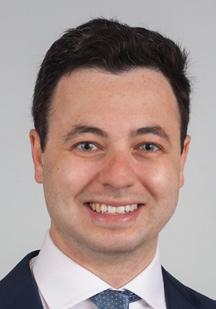
Dr. Awad is a resident and researcher in emergency medicine at The Ohio State University.
Dr. Berlyand is associate director of quality and patient safety, associate director of the division of emergency department operations and quality improvement, and assistant professor in the department of emergency medicine at Brown University. He serves as chair of the SAEM Quality and Patient Safety interest group.
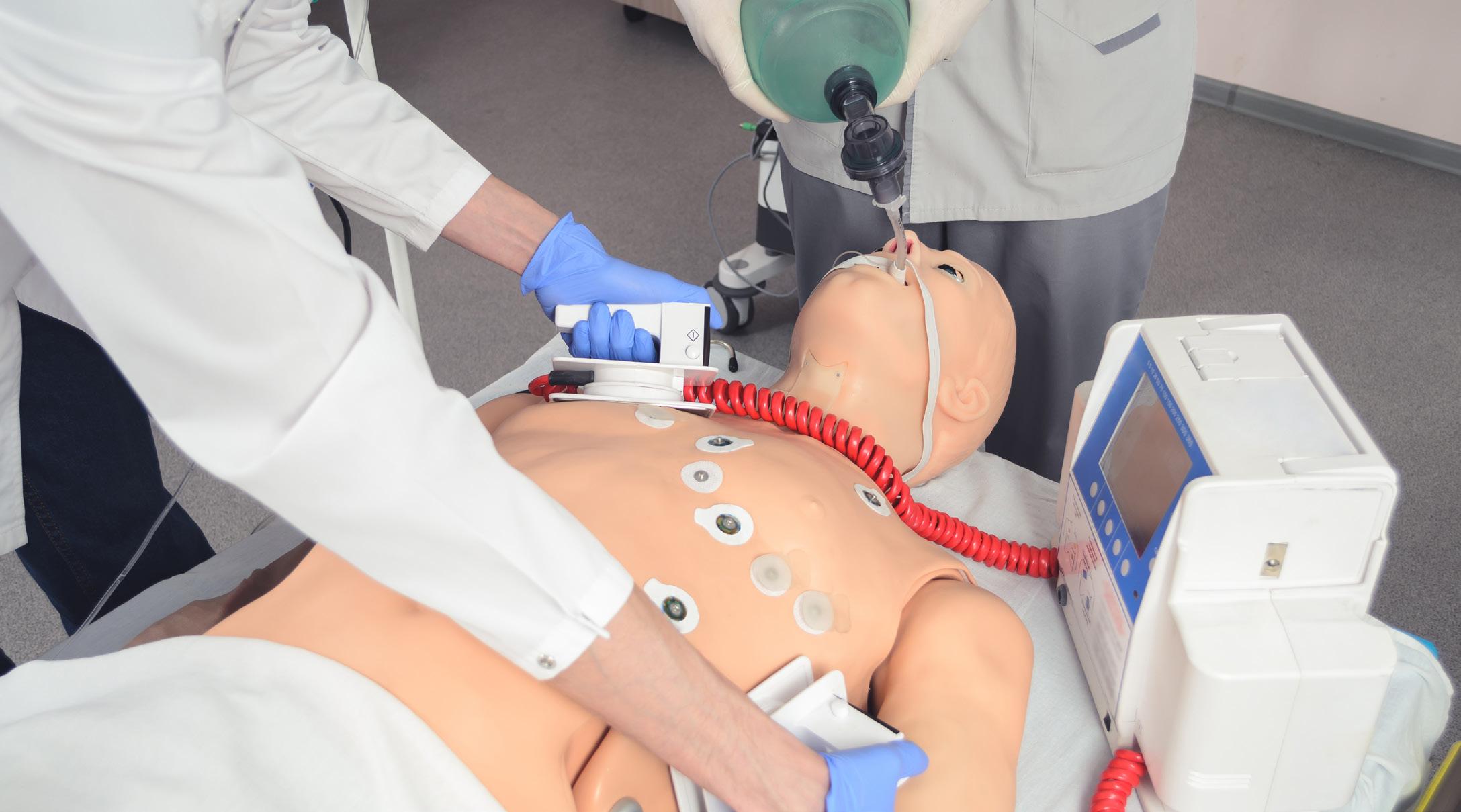
SIMposium: Dr. Michael Cassara on Advancing Simulation Education and Innovation in the ED
By Katherine Stewart, MD, MEHP; Sarah Rabinowitz, MD; Suzanne Bentley, MD, MPH; Tiffany Moadel, MD; and Janice Shin Kim, MD
SIMposium is a bimonthly national presentation series hosted by the SAEM Simulation Academy, showcasing simulation careers and achievements while offering practical insights and reflections from experienced simulation educators.
Introduction
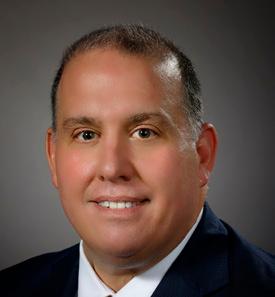
Breaking into simulation-based education can feel overwhelming, even for the most ambitious earlycareer clinicians.
Michael Cassara, DO, MS, a leader in the field, has navigated the challenges of
developing programs, conducting research, and mentoring learners over more than two decades. In this Q&A, he shares candid reflections on his career path, practical advice for early-career simulationists, and insights into building a research team, engaging national organizations, and advancing education in the emergency department.
Dr. Cassara is vice president of interprofessional education, research, and practice at Northwell Health; medical director for the Northwell Health Center for Learning and Innovation; and an associate professor of emergency medicine
at the Donald and Barbara Zucker School of Medicine at Hofstra/ Northwell, as well as the Hofstra Northwell School of Nursing and Physician Assistant Studies. His interests include simulation-based learning, educational research, competency-based assessment, and curriculum design.
We asked Dr. Cassara to share insights on his career path, research strategies, and advice for earlycareer simulation educators.
Q: How did you first get involved in simulation education?
Dr. Cassara: My entry into simulation began with a grant for geriatric emergency medicine training,
Dr. Michael Cassara
Quick Tips from Dr. Michael Cassara
Actionable advice for early-career simulation educators
Tip 1: Start Where You Are
You don’t need an advanced degree—leverage grants, projects, and curiosity to jump in.
Tip 2: Build Your Team Thoughtfully
Say “yes” strategically, surround yourself with like-minded collaborators, and set realistic timelines.
Tip 3: Engage National Organizations
Join professional societies, present research, and network for mentorship and opportunities.
Tip 4: Define Your Mission and Goals
Be clear on your mission, vision, and values, and let them guide your career decisions.
Tip 5: Invest in Yourself
Pursue ongoing development, stay open to new methods, and remember that expertise takes time.
Quick Takeaway:
Curiosity + mentorship + strategy + self-investment = a successful career in simulation education.
through which I introduced Northwell Health’s first medical simulator. That early initiative sparked my interest in educational innovation and led me to pursue a master’s degree in health professions education at the University of Pennsylvania.
Q: Do you need advanced degrees to succeed in simulation?
Dr. Cassara: Formal postgraduate training or advanced degrees are valuable, but they are not the only route to an academic career in simulation. I encourage early-career simulationists to explore high-impact development opportunities, such as the Harvard Macy program or similar faculty development courses.
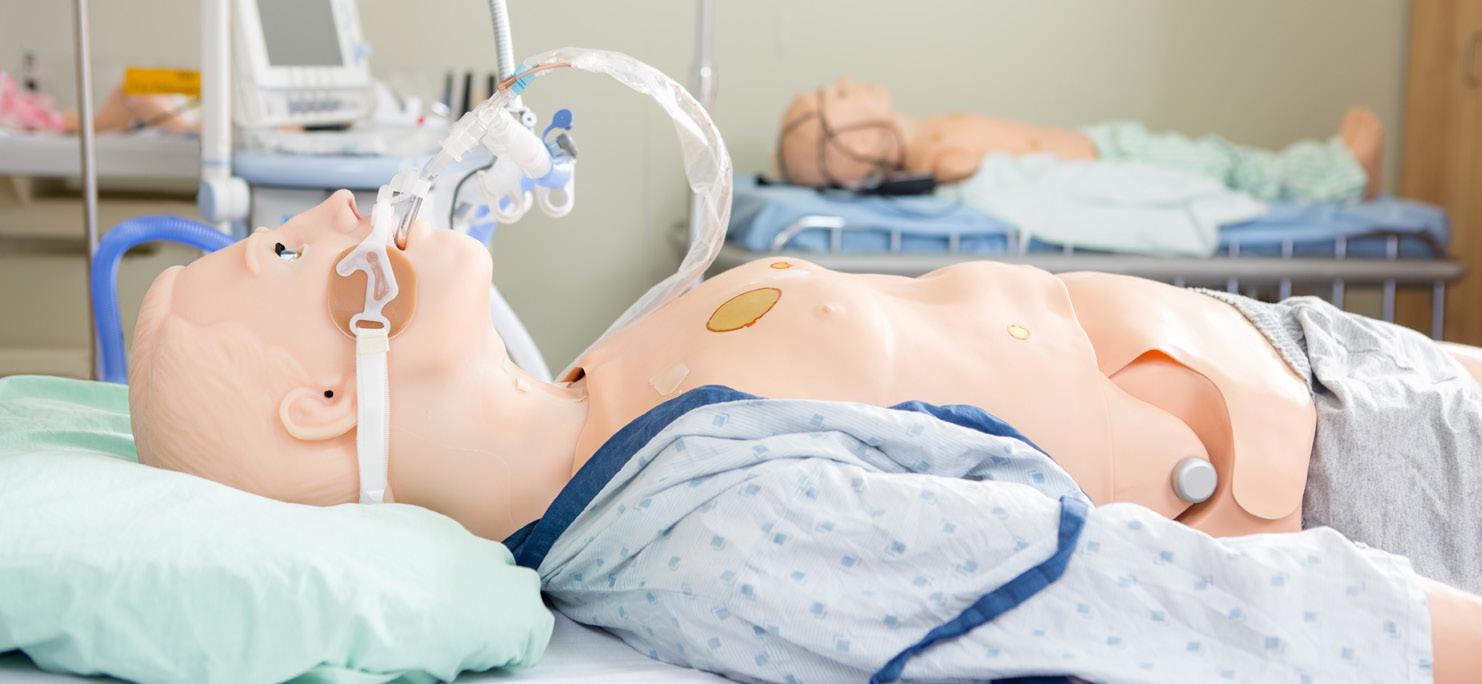
Investing in yourself this way can lead to more effective education and research projects, as well as opportunities for promotion.
Q: How did you grow your research team and scholarly output?
Dr. Cassara: Early in my career, I often said “yes” to all projects, which helped me grow rapidly. But sustaining an academic career requires thoughtful prioritization. Make sure new roles align with your core values, and set realistic boundaries and timelines. As I like to say, “Failure to plan is planning to fail.”
To generate meaningful scholarly output, ask yourself, “How can I turn the work I’m already doing into scholarship?” Combine that mindset with institutional support and a simulation fellowship program to find like-minded peers. Surrounding yourself with collaborative, invested team members is key to long-term success.
Q: What role do national organizations play in your career development?
Dr. Cassara: Involvement in organizations like SAEM and the Society for Simulation in Healthcare has been instrumental. These groups create a community of practice that supports innovation, peer connection, and dissemination of scholarly work. Whether presenting research, serving on committees, or attending conferences, national collaboration provides mentorship, visibility, and opportunities at every stage of an academic journey.
Q: What advice do you have for earlycareer simulation educators?
Dr. Cassara: Be able to clearly describe your mission, vision, core values, and goals. Then, find people who share your values and can support your journey. Surround yourself with colleagues who are like-minded and focus on opportunities that align with your passion for simulation education
ABOUT THE AUTHORS
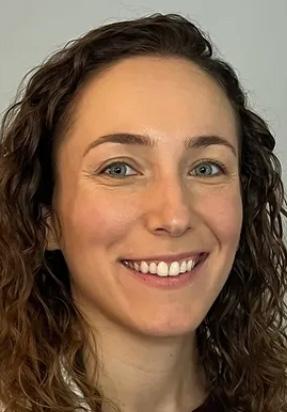
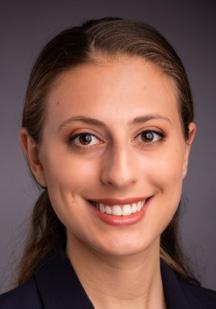
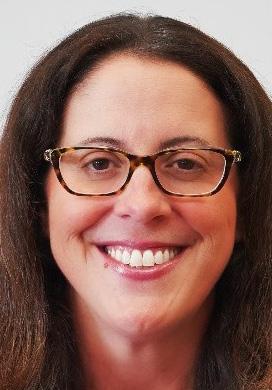


Dr. Stewart is a simulation fellow with the SAEM Simulation Academy and assistant professor of emergency medicine at Tufts University School of Medicine. She works clinically at Maine Medical Center.
Dr. Rabinowitz is a medical simulation fellow at Northwell Health and simulation fellow with the SAEM Simulation Academy. She serves as an attending emergency physician at Long Island Jewish Medical Center.
Dr. Bentley is chief wellness officer at Elmhurst Hospital, immediate past president of the SAEM Simulation Academy, and professor at the Icahn School of Medicine.
Dr. Moadel is president of the SAEM Simulation Academy and director of the medical simulation fellowship within Northwell Health. She is an assistant professor in emergency medicine at the Zucker School of Medicine at Hofstra/Northwell.
Dr. Shin-Kim is director of emergency medicine simulation and an assistant professor in the department of emergency medicine at Columbia University Medical Center.
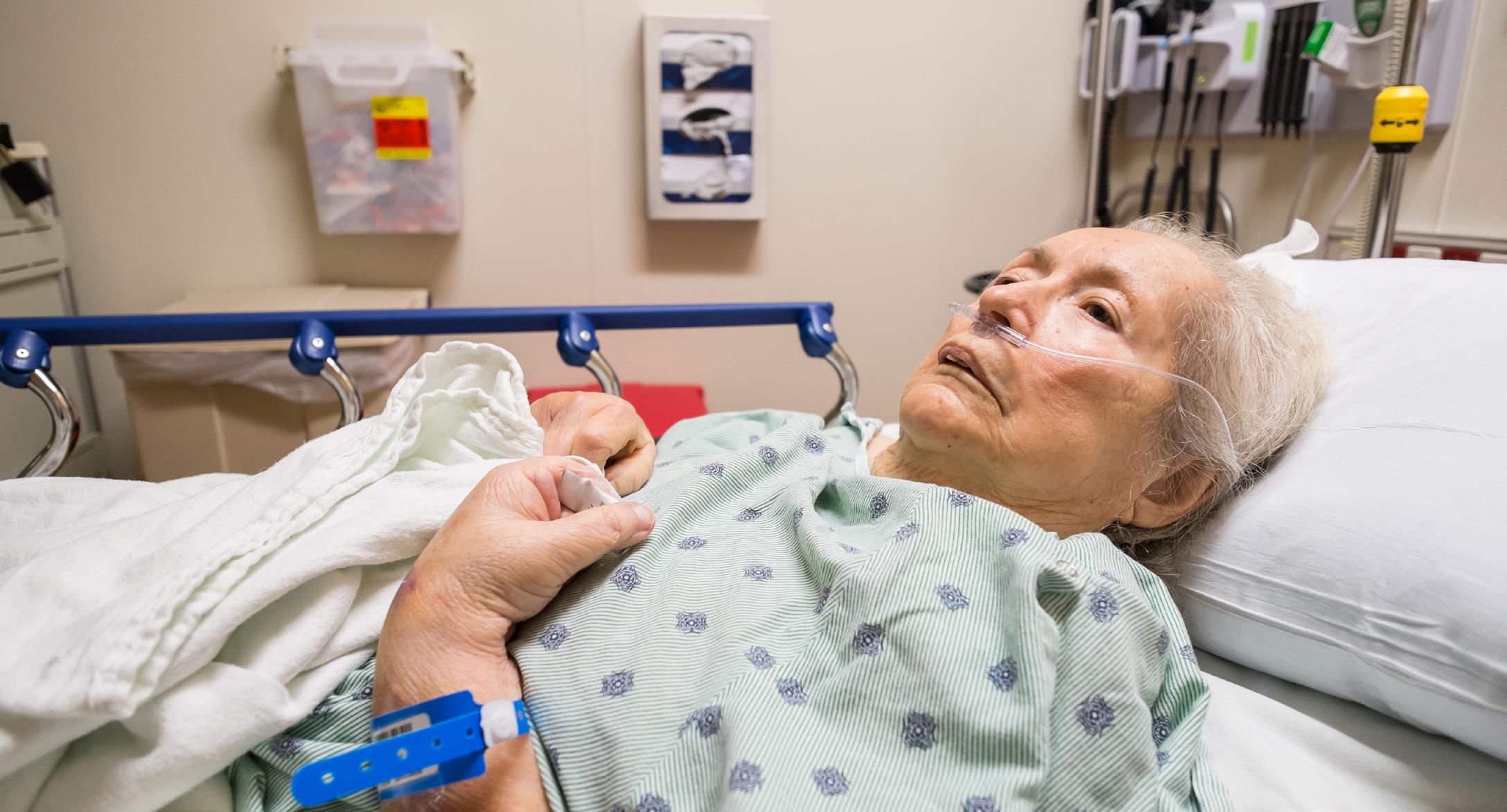
Caring for Immigrant Patients in the Emergency Department: Practical Guidance for Clinicians
By Nathalie V. Scherer, MD; Joseph D. Lykins, MD; and Colleen Laurence, MD, MPH on behalf of the SAEM Social EM & Population Health Interest Group
Many immigrants, particularly those who are undocumented or petitioning for asylum, lack formal access to the medical system. Some need care for undiagnosed conditions acquired before, during, or after migration. Migration journeys can expose patients to additional health risks. Without primary care pathways and limited insurance, the emergency department (ED) is often the first—or only—point of contact for medical care in the U.S.
This article proposes practical guidance for evaluating recently arrived immigrants in the ED, with attention to the unique challenges this population may face in
accessing timely and appropriate care. It is not comprehensive—chief complaints and patient-specific circumstances should guide evaluations—but it provides a starting point for clinical practice.
Use an Immigration-Informed Approach to Care
Clinicians and staff should consider immigration-informed care, which builds on traumainformed principles: safety, trust, transparency, collaboration, empowerment, and cultural humility. Key considerations include using professional interpreters, minimizing documentation of immigration status when clinically unnecessary,
and creating private spaces for sensitive discussions—steps that support patient dignity and equitable care (see see Figure 1 summary of recommendations).
Consider a Broad Differential and Screen for Infectious Diseases
New immigrants may be at risk for a wide range of conditions. Screening for infectious diseases can help prevent disease progression and transmission, particularly for those living in shelters or close quarters. At minimum, consider screening for tuberculosis (TB), HIV, and viral hepatitis.
Follow recommended frameworks for TB screening. Patients with
Use an Immigration-Informed Approach to Care
Consider a Broad Differential
Screen for Infectious Diseases
Screen for Common Health Conditions and Provide Counseling
Consider Social Determinants of Health in Patient Care
• Use appropriate translation services.
• Avoid documenting immigration status in the medical record.
• Integrate cultural competency into emergency medicine training.
• Support institutional policies that preserve patient privacy and ensure physical and psychological safety (for example, protocols for interacting with and vetting law enforcement requests, and clearly delineating public and private spaces).
• Recognize that each patient has unique risks based on diagnoses and experiences before, during, and after their migration journey.
• Screen for human immunodeficiency virus, tuberculosis, and hepatitis.
• Consider additional screening based on individual patient risk factors.
• Screen for hypertension and diabetes.
• Consider initiating therapy from the emergency department, especially for patients with limited follow-up.
• Be mindful of social determinants of health that may affect immigrant patient care.
• Create space for patients to share barriers to care.
• Collaborate with social work and research local support resources.
• Discuss linkage to care and provide contact information for follow-up on pending tests.
“Without primary care pathways and limited insurance, the emergency department is often the first—or only—point of contact for medical care in the United States.”
hepatitis B (HBV) or hepatitis C (HCV) may be asymptomatic until advanced disease. Screen with an HBsAg test for HBV and an antibody test for HCV, with follow-up testing if positive.
HIV risk can be influenced by multiple factors, , including sexual abuse, violence, economic distress, irregular counseling or testing, and sociopolitical marginalization. Rapid HIV antibody testing is recommended for all, with confirmatory tests for reactive results. Some infectious disease tests may require patient consent depending on state regulations.
Patients may have concerns about stigma or how results could affect
their immigration status, family, or living situation. Discuss testing clearly and sensitively. Explain confidentiality, reporting requirements, and how testing can help protect both individual and community health. Use shared decision-making and sensitivity when discussing other sexually transmitted infections.
Screen for Common Health Conditions and Provide Counseling
Immigrant patients face similar risks for chronic conditions as non-immigrants. Screening for hypertension and diabetes is feasible in the ED. For asymptomatic hypertension with limited follow-up,
consider checking serum creatinine. Markedly elevated blood pressure may warrant initiating treatment and arranging primary care followup. Elevated hemoglobin A1c may indicate candidates for therapy, such as metformin, with follow-up care.
Consider Social Determinants of Health in Patient Care
Social determinants of health (SDOH) can affect care and discharge planning. Barriers may include limited English proficiency, transportation or housing challenges, and insurance continued on Page
Figure 1: Summary of Recommendations

SOCIAL EM & POPULATION HEALTH
If symptoms of active tuberculosis or high-risk exposure are present:
Symptoms: persistent cough longer than three weeks, hemoptysis, night sweats, unexplained weight loss or fatigue
High-risk exposure examples: living in close quarters such as refugee camps, shelters, detention centers, or prisons
Then:
Obtain a chest X-ray to evaluate for active tuberculosis
Perform an interferon gamma release assay (IGRA), also known as QuantiFERON-TB Gold test, to assess for latent tuberculosis.
If the chest X-ray shows concerning findings or the patient has known human immunodeficiency virus (HIV)
Then:
Obtain three induced-sputum specimens for smear and culture. Consider admission and/or strict isolation precautions.
“Clinicians and staff should consider immigration-informed care, which builds on trauma-informed principles: safety, trust, transparency, collaboration, empowerment, and cultural humility.”
continued from Page 85
gaps. Clinicians can work with social work and local resources to support patient care.
Follow-up may be challenging when patients lack stable housing or reliable phone access. Alternative communication methods, such as messaging apps, may help. Create space for open conversations. Encourage patients to share any barriers to care, and work collaboratively to identify practical solutions that support equitable access and follow-up.
Emergency medicine often requires managing high patient volumes and complex cases. Many clinicians enter the field to provide compassionate care to at-risk populations, consider a broad range of diagnoses, and address acute medical needs. Providing care for recently arrived immigrants reflects these core clinical values. Applying these guiding principles can support thorough evaluation, appropriate management, continuity of care, and equitable access, while also promoting overall community health
ABOUT THE AUTHORS
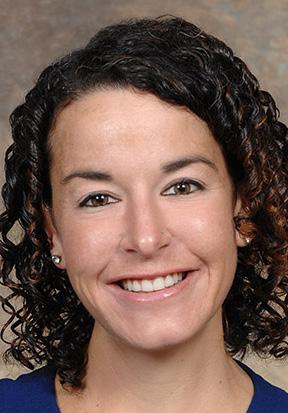
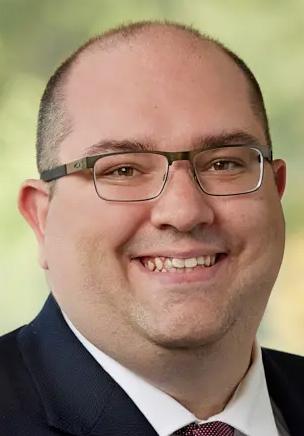
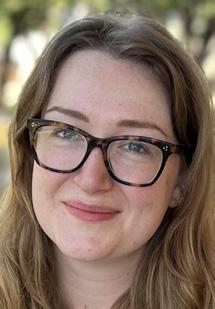
Dr. Laurence is an attending emergency medicine physician at Boston Medical Center and an assistant professor at Boston University. Her early work on an HIV support app was recognized by the Centers for Disease Control and Prevention in 2019.
Dr. Lykins is an attending physician in emergency medicine at Boston Medical Center and an assistant professor at Boston University. He is dual trained in emergency and internal medicine.
Dr. Scherer is a postgraduate year-3 emergency medicine resident at Boston Medical Center.
Figure 2: Screening recommendations for active and latent Tuberculosis
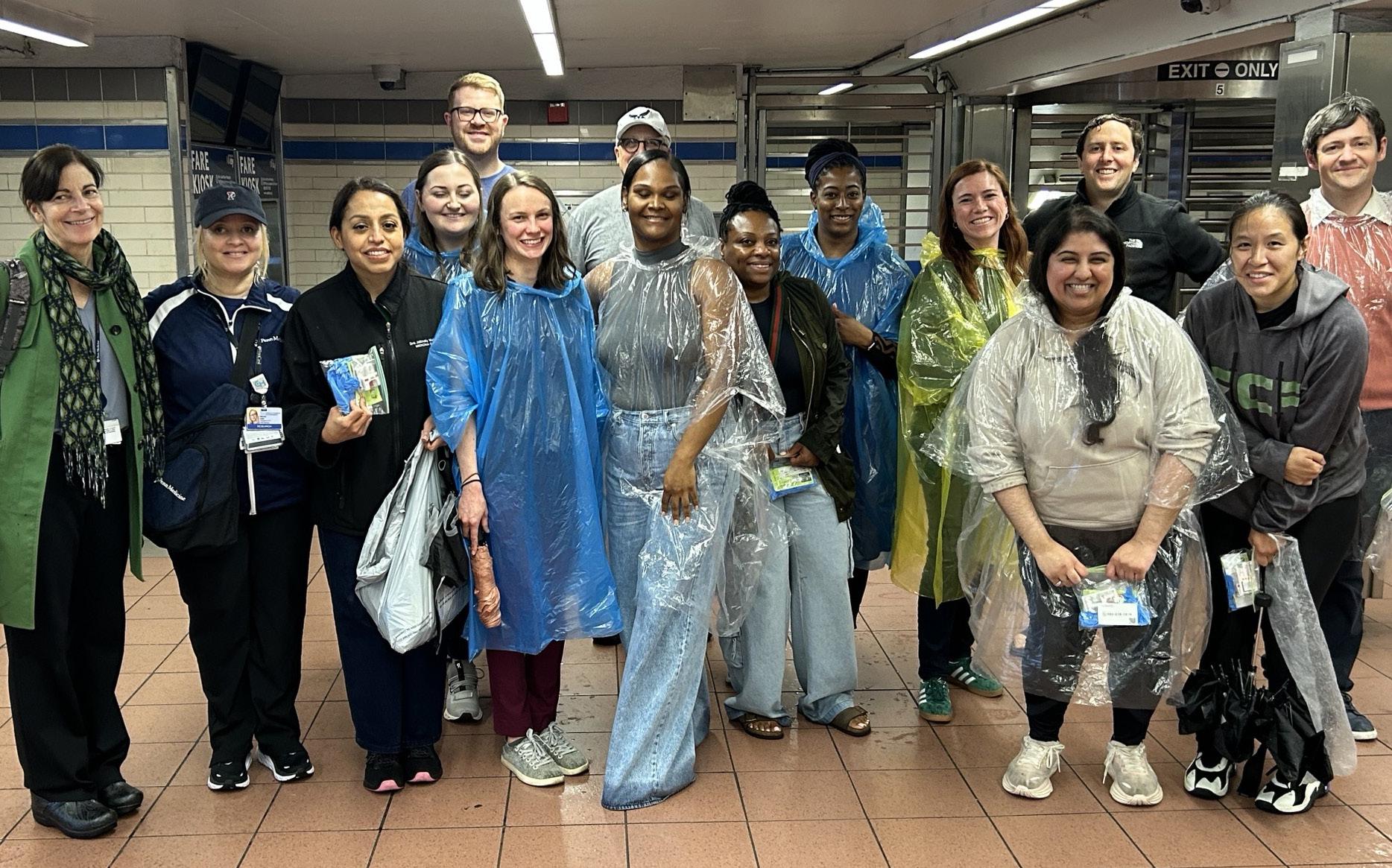
Bridging the Gap: Street Outreach and Harm Reduction in Philadelphia
By Jeanmarie Perrone, MD
Despite the imminent rain, on the Tuesday afternoon of SAEM25 week in Philadelphia, a group of attendees partnered with the street medicine team from the Center for Addiction Medicine and Policy (CAMP) at the University of Pennsylvania to join outreach efforts, distributing naloxone and other harm-reduction materials to the local community.
Why Harm Reduction Matters
Now More Than Ever
There is a desperate need for innovative solutions to address the escalating overdose crisis in Philadelphia. Like many cities across the U.S., Philadelphia has seen a devastating rise in overdose deaths
in Black and Brown neighborhoods historically underserved by health systems. The crisis is driven by the influx of fentanyl and other adulterants into the drug supply, which has become increasingly toxic and unpredictable.
In response, CAMP developed a community engagement plan focused on increasing access to naloxone and drug-checking supplies, such as fentanyl and xylazine test strips. Our goal is not only to expand access but also to foster meaningful conversations about substance use and safety, equipping communities with resources, including treatment pathways. Outreach efforts include real-time education on the
importance of carrying naloxone, recognizing and responding to overdoses, and knowing where to seek recovery support. Volunteers also demonstrate how to test substances using fentanyl strips and explain how these tools can reduce the risk of overdose. These evidence-based techniques form the foundation of harm reduction.
During street outreach with SAEM volunteers, we engaged with community members who shared their experiences of losing family members to overdose and navigated commonly held myths and misinformation about substance use. Many volunteers gained renewed perspective and knowledge about recovery resources.
“During street outreach with Society for Academic Emergency Medicine volunteers, we engaged with community members who shared their experiences of losing family members to overdose and navigated commonly held myths and misinformation about substance use.”
The opportunity to participate in street outreach is one of many events regularly organized by CAMP. Our interdisciplinary team—including physicians, nurses, public health professionals, and peer specialists— works collaboratively to address the overdose crisis by integrating clinical care, community engagement, and education. Together, we aim to bridge the gap between our university and the local community, expanding access to life-saving resources. Our outreach events reduce harms associated with substance use and support access to medication for opioid use disorder (MOUD), ultimately saving lives.
As a core aspect of our work at CAMP, street outreach also provides an opportunity to introduce our low-barrier buprenorphine bridge clinic, the CareConnect Warmline. Founded in 2021, the warmline provides short-term buprenorphine bridge prescriptions, care linkage, and resource navigation to anyone seeking OUD treatment. These services are provided by certified recovery specialists (CRSs) and substance use navigators (SUNs) in collaboration with our virtual urgent care, Penn Medicine On Demand (PMOD), and are frequently used as a follow-up resource for patients initiated on buprenorphine in our four Philadelphia emergency departments.
Educating the Educators
While direct outreach is essential, our efforts do not stop there. Through CAMP’s training and education initiatives, we work closely with
community leaders, organizations, and laypeople to build a sustainable network of harm-reduction champions. By equipping trusted messengers with the knowledge and tools to intervene in overdose situations, we aim to extend our impact beyond what our team can do alone.
We have conducted overdose reversal trainings at churches, community centers, and across our campus community to destigmatize substance use disorder (SUD) and promote available resources for treatment and recovery. These sessions often serve as a starting point for broader discussions on stigma, racial inequities in health care, and the systemic drivers of the overdose crisis.
A Model for Academic-Community Collaboration
The strength of CAMP’s outreach efforts lies in its multidisciplinary team. The program is led by Dr. Jeanmarie Perrone, an emergency medicine physician trained in medical toxicology and a nationally recognized leader in addiction medicine. All CAMP leaders have deep expertise in evidence-based practices to treat substance use disorder. Our peer specialists and navigation team play a vital role in bridging the gap between initiating treatment in the ED and the communities we serve.
Our model is novel in its integration of clinical innovation—a peer-led model with buprenorphine—with grassroots outreach. Through the
CareConnect Warmline, our team provides low-barrier access to buprenorphine and linkage to care in the community, addressing the upstream causes of overdose by reducing stigma, promoting safer use, and increasing access to essential resources.
Looking Ahead
With the support of volunteers from across the country, the CAMP team assembled and distributed 180 harm-reduction kits. As we continue our harm-reduction work, we remain grounded in the belief that every life is worth saving. By acknowledging the realities of substance use and responding with compassion and evidence-based tools, we are creating pathways to healing that center the dignity and humanity of every individual.
To learn more about our work or get involved, visit our website!
ABOUT THE AUTHOR

Dr. Perrone is professor of emergency medicine, medical toxicology and addiction medicine initiatives, and director of the Center for Addiction Medicine and Policy at the University of Pennsylvania. She has worked closely with health system leadership since 2020 to expand substance use treatment, education and research. Her work began in the emergency department, building 24/7 access to treatment initiation. Her team rapidly implemented a virtual telehealth bridge clinic, CareConnect, during the COVID-19 pandemic to expand low-barrier access to medications and has treated more than 4,000 patients.
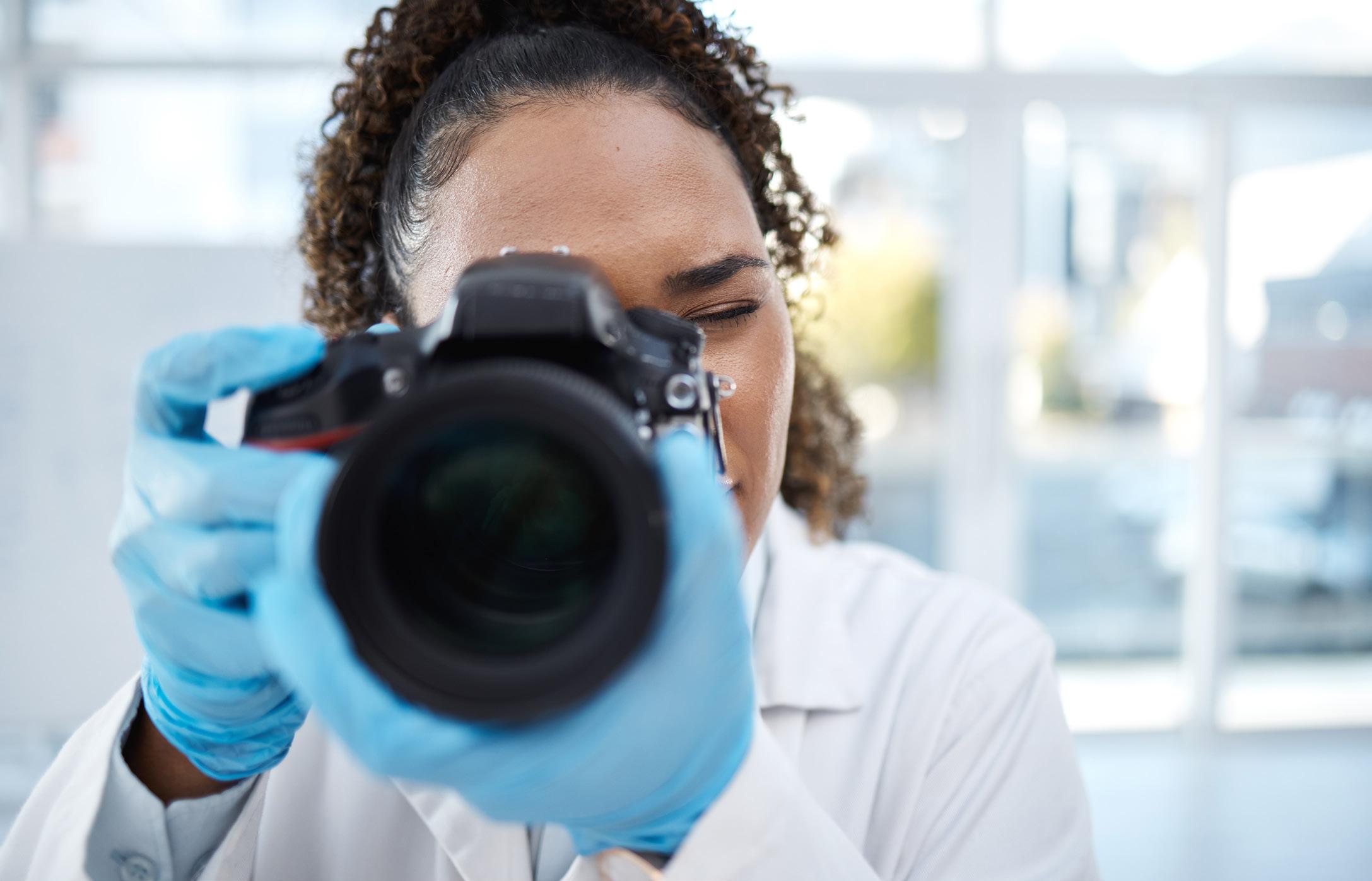
Key Skills in Forensic Emergency Medicine: Caring for Victims of Violence
By Samuel Malakhovsky, MD; Jeremy Ackerman, MD, PhD; Allison Cator, MD, PhD; and Florian Schmitzberger, MD, MS, on behalf of the SAEM Tactical and Law Enforcement Medicine Interest Group
Forensic medicine has long been the domain of medical examiners, whose work begins only after life has ended. Meanwhile, living victims of violence often have no specialty champion, creating a critical gap in the medicallegal system. Emergency medicine is increasingly stepping into that space, bridging the divide between immediate care and justice.
Each year, millions of people present to U.S. emergency departments after assaults, shootings, stabbings, and sexual violence. Although violent crime rates have steadily decreased over the past three decades, a troubling
paradox has emerged: fewer cases are being solved. Clearance rates for murder have fallen from approximately 75 percent in the 1980s to just 50 percent by 2020, while aggravated assault clearance has declined from approximately 60 percent to 47 percent. Reasons include rising evidentiary standards, more complex crime dynamics, and shifts in investigative practices. This makes emergency medicine’s role in forensic-informed care more crucial than ever.
Evidence Collection Patient care always comes first. Emergency clinicians must stabilize
life-threatening conditions before attempting any forensic procedures and should obtain informed consent whenever feasible. A traumainformed approach helps the patient remain empowered while evidence is gathered.
The emergency department encounter can yield a wide range of evidence. Physical evidence may include clothing, bullets, cartridge casings, jewelry, mobile phones, trace fibers, and DNA swabs.
Photographic evidence captures patterned bruising, lacerations, bite marks, or comprehensive injury maps. Descriptive evidence resides
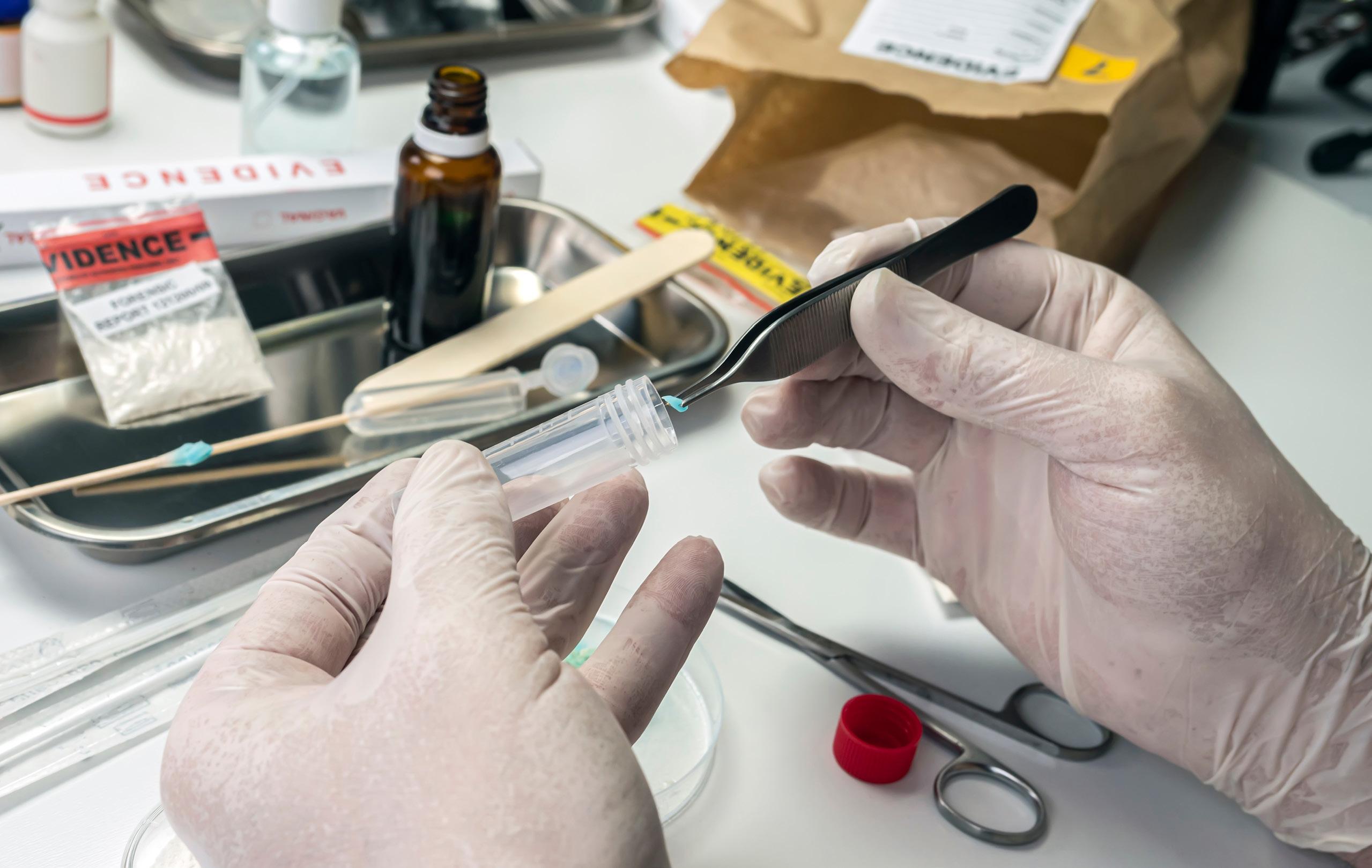
“Emergency medicine is increasingly stepping into that space, bridging the divide between immediate care and justice.”
in the clinician’s narrative examination and injury diagrams. Laboratory evidence spans serum or whole-blood ethanol levels, toxicology panels, and sexually transmitted infection testing. Finally, radiological evidence—such as plain films or CT and MRI scans— documents fractures, retained foreign bodies, or occult internal injuries.
Timing is critical. Visible injuries change rapidly, so clinicians should obtain photographs early and repeat them whenever appearance evolves. DNA from living victims is optimally collected within 120 hours, or approximately five days, of the event. DNA viability may be even less,
depending on the source sample and anatomical location
Proper handling and packaging preserve evidentiary value. Clinicians should cut around, rather than through, bullet holes in clothing to maintain soot and scorch patterns that may later inform muzzle-totarget distance. Bullets should be retrieved with rubber-tipped or plastic forceps to avoid scratches that could confound ballistic matching. Each item must be placed in a separate paper bag—never plastic—to permit drying and prevent mold, which degrades DNA. Damp items should air-dry at room temperature if feasible;
heating devices risk destroying biological material. Every package requires a legible label with the patient’s identifier, date and time of collection, and the collector’s initials. A chain-of-custody log must accompany each transfer, and all evidence should be locked in a secure emergency department container until law enforcement assumes responsibility.
Though a full Sexual Assault Nurse Examiner (SANE) collection is beyond the scope of this article, due
“Proper handling ensuring that patient

continued from Page 91
to its existing standardized protocol, clinicians should be aware that components of the sexual assault collection kit may be repurposed for other indicated evidentiary needs. For example, many kits contain debris or miscellaneous swabs for collecting foreign blood or secretions on a skin surface or fingernail scrapings if a victim of a nonsexual assault reports scratching their attacker.
When obtaining laboratory studies, clinicians should note that hospital and forensic laboratories may use different analytic methods. Most hospital chemistries measure ethanol in serum, whereas forensic labs analyze whole blood, the former generally yields higher concentrations. Despite a forensic role for the emergency physician, caution should be exercised when ordering tests broadly without clear medical justification. An unnecessary blood draw on a suspect may be viewed as an unreasonable search, while an unneeded ethanol level on a victim could later be used by the defense.
Forensic Photography
High-quality images often determine whether objective findings withstand legal scrutiny. When photographing injuries, clinicians should use uniform, shadow-free lighting, incorporate a size scale in each frame (if a dedicated scale is not available, many medical materials, such as gauze, have a printed scale on the packaging), and follow an overview–midrange–close-up
sequence to contextualize details. Injuries frequently evolve; repeating photographs if a patient has multiple presentations for care can document color changes and swelling that corroborate the initial findings.
Forensic photography standards evolved on dedicated cameras due to historical need. These cameras offer benefits such as superior resolution, manual exposure control, detachable flashes, and large-format images suitable for courtroom enlargement. They do, however, demand staff training, a secure storage solution, and a robust upload workflow that preserves metadata and timestamps. By contrast, smartphone-based applications linked directly to the electronic medical record automatically embed patient identifiers and access controls. Although this comes at the cost of lower maximal resolution and lens quality, departments are increasingly favoring this solution due to its convenience.
Medical Documentation
Carefully crafted notes serve both therapeutic and legal purposes. Documentation should employ neutral, nonjudgmental language: writing “patient states” rather than “patient alleges” helps avoid implications of disbelief. Clinicians must confine history-taking to information necessary for diagnosis, treatment, and appropriate evidence collection. Purely investigative questions belong to law enforcement and risk retraumatization or hearsay complications. Whenever possible, pivotal patient statements should appear as direct quotations enclosed in quotation marks. Paraphrasing
handling and packaging preserve evidentiary value, that biological material remains intact for both patient care and potential legal proceedings.”
should be used with caution and kept brief, as discrepancies with future testimony could call the patient’s veracity into question.
Objective detail is paramount. Injuries should be described using standard anatomic terminology, including precise measurements, shapes, colors, and anatomic landmarks, supplemented by diagrams when available. Conjecture must be avoided. For example, clinicians should not label gunshot wounds as entrance or exit sites, because even forensic pathologists may misclassify these lesions due to phenomena such as shoring
Incorporating these steps into emergency physicians’ standard practice ensures that high-quality forensic care becomes the norm, not the exception. Mastery of these skills will not solve every case, but it can help ensure that fewer truths are lost and more voices are heard.
ABOUT THE AUTHORS
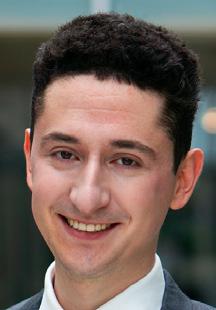
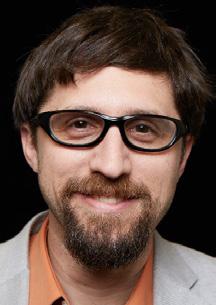
Dr. Malakhovsky is a PGY-4 emergency medicine resident at the University of Michigan. He is a former paramedic and emergency medical services instructor and current secretary of the SAEM Tactical and Law Enforcement interest group.
Dr. Ackerman is an assistant professor in the department of emergency medicine at Emory University School of Medicine. He serves as a tactical/SWAT physician in Atlanta and is a sworn police officer. He is the former chair of the SAEM Tactical and Law Enforcement interest group.
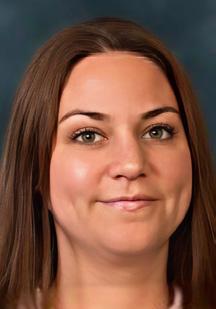
Dr. Cator is an assistant professor in the departments of emergency medicine and pediatrics at the University of Michigan. She mentors pediatric emergency medicine fellows and has served as site principal investigator for multiple studies through the Pediatric Emergency Care Applied Research Network.
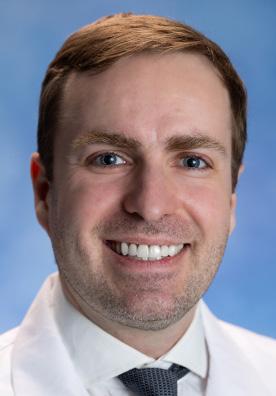
Dr. Schmitzberger is an assistant professor in the department of emergency medicine at the University of Michigan and a member of the Weil Institute for Critical Care Research and Innovation. He serves as the current chair of the SAEM Tactical and Law Enforcement interest group.
TOXICOLOGY

Managing Pit Viper Envenomation in the Emergency Department
By Herbert Wan, PharmD; Reeves Simmons, PharmD; and Dawn R Sollee, PharmD
Introduction
In the United States, pit vipers (subfamily Crotalinae), which include rattlesnakes, copperheads, and cottonmouths, are responsible for about 98% of venomous snakebites. Named for their characteristic heatsensing pit organs, these snakes are most active between April and September. Although fatalities are uncommon, envenomations can cause significant morbidity, making prompt and appropriate management essential.
Pathophysiology and Clinical Manifestations
Pit viper venom is a complex mixture of proteins, enzymes, lipids, and metal ions. Effects vary depending on species, geography, and other biological factors. Envenomation frequently leads to local tissue injury, including edema, erythema, ecchymosis, necrosis, blistering, and severe pain. Systemic effects may include coagulopathy, characterized by low fibrinogen levels, prolonged prothrombin time (PT) or elevated international normalized ratio
(INR), thrombocytopenia, and spontaneous bleeding or bruising. Neurotoxicity is rare but can occur, more often with non-native North American species. Symptoms typically develop within minutes and progress via the lymphatic system. Even asymptomatic patients require observation for at least eight hours because of the risk of delayed toxicity.
Management
Antivenom administration is indicated for worsening swelling beyond a major joint, systemic
CroFab Anavip
Structure: F(ab)
Indication: North American Pit Viper envenomation
Source: ovine (sheep)
Dosing
Bolus: 4-6
vials infusion over 1 hour
Maintenance: 2 vials Q6hs x 3 doses
Enzymatic cleavage: Papain
Elimination Half-life: 12-23 hours
Structure: F(ab’)2
Indication: North American Pit Viper envenomation
Source: equine (horse)
Dosing
Bolus: 10 vials infusion over 1 hour
Maintenance: N/A
Enzymatic cleavage: Pepsin
Elimination Half-Life: 5.5 days
Allergy Considerations: Pineapple, papaya, sheep antigen, latex Allergy Considerations: Pepsin
“Even asymptomatic patients require observation for at least eight hours because of the risk of delayed toxicity.”
symptoms, or laboratory evidence of coagulopathy. Initial laboratory evaluation should include PT, INR, fibrinogen, and platelet count, with fibrinogen often declining first. Labs should be repeated one hour after the loading dose and again after any additional antivenom administration. Patients who receive CroFab must be monitored for at least 24 hours after the final dose, while those treated with Anavip should be observed for at least 18 hours.
Varespladib, an investigational oral inhibitor of secretory phospholipase A2, is being studied as an adjunctive treatment. Although a phase II trial did not show superiority over placebo when combined with antivenom, it suggested potential efficacy when administered within five hours of the bite. This indicates a possible future role for varespladib in minimizing treatment delays.
Progression Measurement
Serial circumferential measurements at and around the bite site should be used to monitor swelling. For

consistency among providers, both ends of the measuring tape should be marked on the patient’s skin, and measurements should be recorded at the leading edges of edema, as well as proximal and distal to the bite. During the acute phase, measurements should be taken every 15 to 30 minutes for the first few hours, then
extended to every hour as swelling stabilizes.
Adverse Effects and Outcomes
Both CroFab and Anavip can cause hypersensitivity reactions, though most are mild, typically presenting
continued on Page 97
“Treatment

“Treatment should
prioritize timely
intervention
with the available antivenom
rather than being delayed by logistical preferences.”
TOXICOLOGY
continued from Page 95
as rash, itching, nausea, or vomiting. Severe anaphylaxis, compromising respiratory function, is rare. A retrospective study by Seltzer et al., using California Poison Control data, found adverse reactions in 5% of CroFab recipients compared with 1.7% of Anavip recipients. Severe reactions, including anaphylaxis, occurred only with CroFab.
Patients with alpha-gal syndrome (AGS), an IgE-mediated allergy caused by Lone Star tick bites, are at increased risk because both CroFab and Anavip contain alpha-gal. In states with high AGS prevalence, Glaser et al. reported hypersensitivity reactions in 22.2% of Anavip cases versus 3.3% for CroFab. Even in low-prevalence areas, Anavip showed higher reaction rates (5.9% vs. 2.8%).
Mild hypersensitivity reactions are usually treated with H1 and H2 blockers, such as diphenhydramine and famotidine. Severe reactions, including anaphylaxis, require immediate cessation of the infusion and administration of epinephrine. Re-initiation should be done in consultation with a toxicologist. To reduce reaction risk, the infusion may begin at 25 milliliters per hour and be titrated upward, completing over one hour if tolerated.
Clinical outcomes also vary between antivenoms. Smelski et al. reported higher complete recovery rates for CroFab recipients—including resolution of pain, decreased swelling, and restored function—at seven, 14, 90, and 180 days post-envenomation. Anavip patients required more frequent loading doses. Despite these
differences, antivenom selection should be guided by clinical needs and local availability rather than provider preference.
Fasciotomy Considerations
Fasciotomy is generally contraindicated for snakebite-induced swelling. Although swelling can mimic compartment syndrome, true cases are rare and often misdiagnosed. A study by Darracq et al. showed that compartment pressures are rarely measured before fasciotomy, increasing the risk of unnecessary surgery. Such procedures can lead to postoperative complications, prolonged hospitalization, and higher healthcare costs.
Serum Sickness
Serum sickness is a delayed hypersensitivity reaction that usually appears one to two weeks after antivenom administration. Symptoms include rash, low-grade fever, joint pain, and swollen lymph nodes. Symptoms are typically self-limiting and resolve within 24 to 48 hours. Home treatment with diphenhydramine and acetaminophen is usually sufficient, but worsening symptoms should prompt emergency re-evaluation.
Discharge Criteria
Patients without significant swelling, systemic toxicity, or laboratory evidence of coagulopathy may be discharged after eight hours of observation. For those treated with antivenom, observation should continue for at least 24 hours after CroFab or 18 hours after Anavip administration. At discharge, patients should receive counseling on limb elevation, avoiding nonsteroidal antiinflammatory drugs, and refraining from high-risk activities, such as contact sports, dental procedures, or
surgeries. Pain should be managed primarily with acetaminophen and, if necessary, opioids. Patients should follow up with their primary care provider for coagulation studies. Recovery may be prolonged, and full symptom resolution should not be expected immediately.
Conclusion
Early identification and management of pit viper envenomation are essential to prevent long-term complications. Both CroFab and Anavip are effective, though they differ in pharmacologic properties, adverse-event profiles, and clinical outcomes. Treatment should prioritize timely intervention with the available antivenom rather than being delayed by logistical preferences. Investigational agents such as varespladib may offer new opportunities for treatment optimization in the future.
ABOUT THE AUTHORS
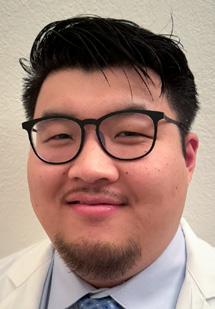

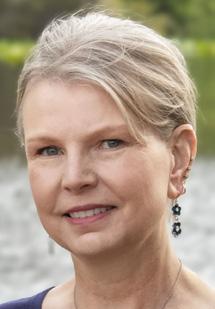
Dr. Wan is a PGY2 toxicology and emergency medicine fellow at the Florida Poison Information Center in Jacksonville, University of Florida Health.
Dr. Simmons is assistant director at the Florida Poison Information Center in Jacksonville, University of Florida Health. Dr. Sollee is director of the Florida Poison Information Center in Jacksonville and a professor in the University of Florida College of Medicine, department of emergency medicine, and College of Pharmacy.
TOXICOLOGY

Recognizing and Managing Acyclovir- and Valacyclovir-Associated Neurotoxicity
By Kimberly Won, PharmD, and Mikali Shedd, PharmD, on behalf of the SAEM Toxicology and Addiction Medicine Interest Group
Introduction
Acyclovir and valacyclovir are common medications used to treat a variety of viral infections, including Bell’s palsy, herpes simplex virus (HSV), varicella-zoster virus (VZV), and, less commonly, EpsteinBarr virus and cytomegalovirus.
Acyclovir is available in both oral and intravenous (IV) formulations, allowing IV use for more acute or critical infections, such as central nervous system (CNS) infections (e.g., meningitis or encephalitis).
Valacyclovir is available only as an oral formulation and is typically used for less severe HSV and VZV infections in outpatient and inpatient settings.
Dosing of these agents varies depending on the indication and formulation. Because acyclovir has
poor oral bioavailability (10–20%), it requires frequent dosing, usually three to five times daily. Valacyclovir is a prodrug of acyclovir, which improves bioavailability and allows less frequent dosing. Both medications have a wide volume of distribution, enabling use for various HSV and VZV infections, including suspected CNS infections
Both medications are generally well tolerated. Common adverse effects include gastrointestinal upset, headache, and neutropenia, particularly in neonates or patients with HIV-1. Less common but more serious adverse effects include neurotoxicity and thrombotic microangiopathy (e.g., thrombotic thrombocytopenic purpura, hemolytic uremic syndrome). Acute kidney injury secondary to obstructive
nephropathy from acyclovir crystal formation, interstitial nephritis, or acute tubular necrosis is relatively common if patients do not maintain adequate hydration, especially during IV therapy. Because these medications are primarily renally cleared, patients with impaired renal function are at higher risk of drug accumulation and toxicity and should receive dose adjustments. This article summarizes a rare but serious adverse effect: acyclovirand valacyclovir-associated neurotoxicity.
Mechanism of Toxicity
Valacyclovir is converted to acyclovir through intestinal and hepatic metabolism. Acyclovir is
Comparative Table
Medication Acyclovir Valacyclovir
• Intravenous
Formulations
• Oral capsule/tablet
• Oral suspension
• Intravenous: 100%
Bioavailability
Volume of Distribution
Indications and Dosingˠ^
• Oral: 10-20%
• Wide volume of distribution:
₀ Kidneys ₀ Lungs ₀ Liver
₀ Spleen ₀ Uterus ₀ Vagina
₀ Brain (intravenous acyclovir)
• Bell palsy:
₀ Alternative agent: 400 mg PO 5 times daily (with corticosteroids)
• Herpes simplex virus:
₀ Encephalitis/meningitis: 10 mg/kg/dose IV every 8 hours
₀ Mucocutaneous/genital infection: 400 mg PO 3 times daily for 7-10 days (immunocompetent) OR 5-10 mg/kg/ dose IV every 8 hours (severe disease)
• Herpes zoster virus:
₀ Disseminated infection: 10 mg/kg/dose IV every 8 hours
₀ Localized lesions: 800 mg PO 5 times daily for 7-10 days
• Varicella zoster virus:
₀ Encephalitis/severe infection: 10 mg/kg/dose IV every 8 hours
₀ Uncomplicated infection: 800 mg PO 5 times daily for 7-10 days or until all lesions have crusted
Common
• Malaise
• Neutropenia (in neonates)
• Thrombocytopenia
• Gastrointestinal (e.g., diarrhea, nausea, vomiting)
• Injection site inflammation/phlebitis (IV only)
Side Effects
• Headache
• Elevated transaminases
• Increased serum creatinine
Severe
• Acute kidney injury
• Thrombotic microangiopathy
• Neurotoxicity
Abbreviations: (PO) by mouth; (IV) intravenous
*Seen more in patients with HIV-1
ˠ Not a complete list
^ Dosing without adjustment for altered renal function
• Oral tablet
• Oral suspension (extemporaneously prepared)
• Oral: 40-60%
• Bell palsy:
₀ 1 g PO three times daily for 7 days) (with corticosteroids)
• Herpes simplex virus:+
₀ Mucocutaneous infection: 1 g PO twice daily for 7-10 days (initial episode) or 500 mg twice daily for 3 days (recurrent episode)
• Herpes zoster virus:+
₀ Localized lesions: 1 g PO three times daily for 7-10 days
• Varicella zoster virus: + 1 g PO three times a day for 5-7 days or until all lesions have crusted
Common
• Gastrointestinal (e.g., abdominal pain, nausea)
• Headache
• Elevated transaminases*
• Nasopharyngitis
• Neutropenia*
Severe
• Acute kidney injury
• Thrombotic microangiopathy
• Neurotoxicity
+ Valacyclovir is not recommended for initial management of severe infections; it may be used after IV therapy to complete the antiviral course once the patient is clinically improved
“Acyclovir- and valacyclovir-associated serious, and adverse effects are

from Page 98
then activated via viral enzymes to acyclovir triphosphate, which competitively inhibits viral DNA polymerase, thereby blocking viral DNA synthesis and replication.
Approximately 90% of acyclovir and its active metabolite are excreted unchanged by the kidneys through tubular secretion and glomerular filtration. The remaining 10% is oxidized by alcohol dehydrogenase and aldehyde dehydrogenase into inactive metabolites, mainly 9-carboxymethyl methylguanine (9-CMMG) and, to a lesser extent, 8-hydroxy-acyclovir. Elevated serum and cerebrospinal fluid (CSF) concentrations of 9-CMMG consistently correlate with neuropsychiatric symptoms. Helldén et al. found elevated CSF 9-CMMG concentrations in symptomatic patients compared with undetectable levels in asymptomatic patients. Similarly, Lindstrom and colleagues reported higher CSF 9-CMMG concentrations in patients with neuropsychiatric symptoms than in those without.
Risk Factors
Key risk factors for acyclovir- or valacyclovir-associated neurotoxicity include renal dysfunction, age older than 65, and high drug doses or overdoses. Because these medications are renally cleared, patients with impaired renal function are at increased risk for drug accumulation and toxicity.
A prospective cohort study found that a 10 mL/min decrease in creatinine clearance (CrCl) was associated with a mean increase in
CSF acyclovir concentration of 1.43 µmol/L (95% CI, 0.76–2.10; p = 0.015) and CSF 9-CMMG concentration of 0.16 µmol/L (95% CI, 0.08–0.25; p = 0.0027). Renal dysfunction can also increase the risk of overdosing if doses are not properly adjusted.
A systematic review of 97 publications (119 cases) found that 83.2% of patients with acyclovir- or valacyclovir-associated neurotoxicity had renal dysfunction, and nearly 60% were not on appropriately adjusted doses for their CrCl. Additionally, blood-brain barrier damage has been linked to higher CSF acyclovir and 9-CMMG concentrations, increasing the risk of neurotoxic events.
Clinical Presentation and Symptoms
Reports of acyclovir-related neuropsychiatric effects date back to the 1980s. Neurotoxicity typically presents as altered mental status, including disorientation, decreased consciousness, agitation, irritability, dizziness, delirium, hallucinations, seizures, and, in severe cases, coma. Less commonly, patients may experience altered neuromotor function, such as dysarthria, tremor, ataxia, myoclonus, or asterixis.
Neurotoxic events usually occur within 24 to 72 hours of therapy initiation, although a systematic review by Brandariz-Nuñez et al. reported a mean onset of 3.1 ± 4.3 days. Because neurotoxicity may mimic manifestations of viral CNS infections, measuring CSF 9-CMMG concentrations can help differentiate drug-induced neurotoxicity from viral disease.
Prevention and Management
Monitoring and dose assessment are critical in preventing acyclovir- or valacyclovir-induced neurotoxicity.
valacyclovir-associated neuropsychiatric events are rare but are often reversible after discontinuing therapy.”
Patients starting either medication should have baseline and routine laboratory tests to assess renal function.
Patients on IV acyclovir should undergo daily metabolic panels—or more frequent monitoring in critically ill patients—to detect renal changes. Other nephrotoxicity risk factors, such as concomitant nephrotoxic drugs, contrast agents, or dehydration, should be minimized.
Weight-based IV dosing should use ideal body weight unless the patient’s body mass index exceeds 40 kg/m², in which case adjusted body weight should be used to prevent underdosing in severe viral infections. Proper dosing and frequent monitoring reduce the risk of drug accumulation and toxicity.
If neurotoxicity occurs, discontinuation of the offending antiviral is the mainstay of management. Symptoms typically reverse within seven days of stopping the medication. In some cases, renal replacement therapy may be required to enhance drug elimination.
Conclusion
Acyclovir- and valacyclovir-associated neuropsychiatric events are rare but serious. Adverse effects are often reversible after discontinuing therapy and may be further managed with renal replacement therapy if needed. Clinicians should use the lowest effective dose, closely monitor patients, and adjust dosing based on renal function to ensure safe and effective therapy.
ABOUT THE AUTHORS
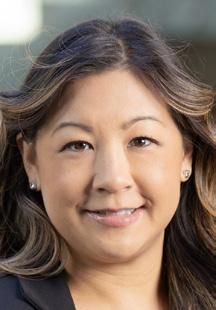
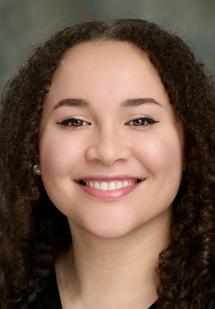
Dr. Won is an associate professor and critical care/emergency medicine specialist at UC San Diego Health.
Dr. Shedd is an emergency medicine clinical pharmacy specialist at Barnes-Jewish Hospital in St. Louis, Missouri.
TRAINEE TOOLKIT

EM Clerkship Myths: What You Need to Know, Part 1 — The Application Process
By Amy Cutright, MD; Corlin Jewell, MD; and Bradley Hernandez, MD, on behalf of the SAEM Clerkship Directors in Emergency Medicine academy
Myth: You must earn an honors grade to match into emergency medicine (EM).
Reality: While a strong academic record is important, clerkship grades are only one component of your application. Programs assess applications holistically, with particular emphasis on the quality of your standardized letter(s) of evaluation (eSLOEs), narrative comments, and overall performance. Many schools use pass/fail or tiered grading systems,
and grading standards vary widely. Your institution’s grade distribution is usually included in your SLOE, providing programs with necessary context. You can successfully match into EM with a pass, high pass, or honors grade as long as the rest of your application is competitive.
Myth: Deciding on EM late in medical school puts you at a disadvantage.
Reality: EM programs seek committed, capable applicants regardless of when they chose the
specialty. Whether you discovered your interest during your final year of medical school or even after training in another field, what matters most is your current enthusiasm and fit for the specialty. A late decision does not preclude a successful match.
Myth: You need published research to apply to EM.
Reality: Research experience is not required unless it aligns with your interests or career goals. While some academic EM programs value research, the majority prioritize

“Programs assess applications holistically, with particular emphasis on the quality of your standardized letter(s) of evaluation, narrative comments, and overall performance.”
clinical ability and personal attributes. If you enjoy research, pursue it. If not, focus on strengthening other aspects of your application. Strong extracurriculars, work history, and leadership experience are also valued.
Myth: Your entire application must be complete by the day ERAS opens.
Reality: You should complete all components within your control by the ERAS opening date, typically in late September. However, some elements—such as letters of recommendation or board scores— may arrive later. Programs are accustomed to receiving updates and will incorporate new information into your file as it becomes available.
Myth: The personal statement is your chance to be creative.
Reality: Your personal statement should be concise, well-organized,
and professional. It should clearly articulate your reasons for pursuing EM and highlight relevant experiences, career goals, and personal strengths. Creativity is not required and can be distracting. Program directors prefer statements that reflect maturity, strong communication skills, and a clear understanding of the specialty. Aim for a one-page, grammatically sound essay that supports your candidacy for residency training.
Myth: Signaling a program guarantees an interview.
Reality: Program signals indicate genuine interest, but they do not ensure an interview invitation. Use your signals strategically—on programs that align with your goals and where you have a realistic chance of matching. In some cases, it may be appropriate to signal a reach program. Consult your advisor to develop a sound signaling strategy.
ABOUT THE AUTHORS

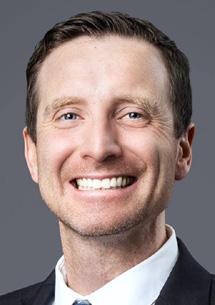

Dr. Cutright is senior clerkship director and associate professor of emergency medicine at the University of Nebraska Medical Center. She has served as clerkship director and emergency medicine advisor for the past 12 years at UNMC.
Dr. Jewell is director of medical student education and assistant professor of emergency medicine at the University of Wisconsin School of Medicine and Public Health. She is currently working toward a master’s degree in health professions education at the University of Illinois Chicago.
Dr. Hernandez is senior staff physician at Regions Hospital in St. Paul, Minnesota, and assistant professor in the Department of Emergency Medicine at the University of Minnesota Medical School. He is an assistant residency director, clerkship director, and gameday physician for the Minnesota Vikings.
TRAINEE TOOLKIT

A Primer for Residents and New Attendings on Focused and Ongoing Professional Practice Evaluations
By Eric Legome, MD
As emergency medicine (EM) residents graduate and transition into attending roles across a wide variety of hospitals and healthcare systems, one constant they will encounter is professional evaluation. Regardless of the hospital type or patient population, all physicians practicing in hospital-based emergency departments will undergo a Focused Professional Practice Evaluation (FPPE) within their first year and participate in Ongoing Professional Practice Evaluation (OPPE) throughout their careers.
Many residents, however, are unfamiliar with these required
evaluations, which are found in all hospitals accredited by The Joint Commission. This brief article explains what FPPE and OPPE are, why they matter, and how new attendings can be prepared for them.
Historical Background
Historically, oversight of physician performance in the U.S. lacked standardization. State medical boards, established in the 1800s, and later the Federation of State Medical Boards (1912), focused primarily on initial credentialing and disciplinary action for serious professional misconduct.
This began to shift in the mid1960s following a landmark case— Darling v. Charleston Community
Memorial Hospital—in which a physician’s suboptimal management of a leg fracture resulted in amputation. The court ruled that the hospital was responsible for ensuring proper oversight of its physicians. This case helped establish the legal precedent that hospitals share responsibility for the care provided within their walls.
In the decades that followed, further reforms emerged, including the creation of the National Practitioner Data Bank (1981), which tracks malpractice judgments and disciplinary actions. Still, most oversight remained informal or reactive, driven by malpractice, complaints, or medical board
“Focused Professional Practice Evaluation is a required, structured part of joining a hospital’s medical staff and is designed to confirm that new practitioners have the necessary skills to perform the privileges they were granted.”
interventions. Specialty boards focused on continuing medical education and periodic recertification but did not evaluate daily clinical performance.
The most significant change came in 2008, when The Joint Commission revised its standards to strengthen credentialing and privileging processes. Under Medical Staff Standards MS.06.01.01 and MS.08.01.01, hospitals are now required to implement both FPPE and OPPE as part of ongoing physician oversight.
What is FPPE?
Focused Professional Practice Evaluation (FPPE) is required for all new practitioners—physicians, PAs, and NPs—when they start working at a hospital. Typically occurring in the first three to 12 months, FPPE provides a structured process to confirm that the provider has the necessary skills and can perform the privileges they were granted.
It is a time-limited, structured evaluation based on chart reviews, direct observation, and performance data. If concerns arise or there are insufficient cases, FPPE may be extended. In rare cases, failure to meet expectations may result in
non-renewal or inability to maintain hospital privileges.
There is also a “triggered FPPE,” which is initiated when a concern arises about a provider’s clinical skills, communication, or professionalism. Triggered FPPEs are more formal and may follow a sentinel event or complaint. They may be reportable to regulatory bodies depending on their outcome and scope, especially if privileges are restricted. These evaluations aim to determine whether the provider can regain or demonstrate competency within a defined period.
What is OPPE?
Ongoing Professional Practice Evaluation (OPPE) is a continuous assessment process, typically conducted every six months, for all privileged providers. It uses both qualitative and quantitative data to identify trends that could impact the quality and safety of patient care. The goal is early detection of potential issues and proactive improvement.
While The Joint Commission does not require specific metrics, hospitals tailor OPPE to reflect departmental priorities, CMS measures, or institutional goals. Emergency departments often focus
Common OPPE Metrics Quantitative Qualitative
Length of stay/turnaround time trends
Productivity/efficiency metrics
Timely chart closure
Compliance with CMS core measures
Ultrasound documentation or accuracy
Peer or 360-degree evaluations
Professionalism concerns/complaints
CQI or peer review cases
Resident teaching and supervision
Chart review: documentation quality, clinical appropriateness
on areas where metrics are available and prioritized. Importantly, while many institutions also evaluate a doctor’s academic productivity and advancement toward promotion, the OPPE is a clinical evaluation and does not include areas that are not clinically relevant.
Considerations for the Graduating Resident
As a new attending, you should expect to undergo FPPE early in your tenure. It is a required, structured part of joining a hospital’s medical staff. While some departments may perform evaluations without notifying you, it’s always good to be proactive: ask your department leadership what the FPPE process entails and how it is monitored. This insight can help you understand departmental priorities and support your success.
Similarly, know what metrics are being tracked in OPPE. Recognize that FPPE and OPPE are not punitive; they are tools to promote safe, highquality care and support professional development. Your understanding of these evaluations can help you align your practice with departmental goals and avoid surprises.
ABOUT THE AUTHOR
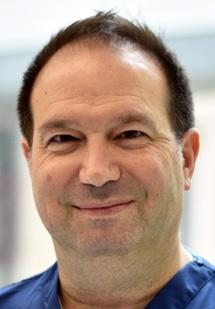
Dr. Legome is chair of emergency medicine at the Mount Sinai Morningside and West departments of emergency medicine and a professor of emergency medicine at the Icahn School of Medicine at Mount Sinai. He also helps oversee physician evaluations and peer review as co-chair of the Mount Sinai School of Medicine Committee on Professional Enhancement.
TRAINEE TOOLKIT

Lessons from Attendings: What I Learned in My Final Year of Residency
By Amelia Gurley, MD
Residency is a whirlwind. Between rising burnout rates, increasing emergency department volumes, federal funding cuts, and the postCOVID “new normal,” it often feels like our generation of physicians is living in both cursed and blessed times. Approaching my final year of residency felt like speeding downhill on a bicycle: wind in my face, freedom ahead—and a lot of stomach-churning fear and adrenaline as I wondered whether I could make the turn.
As I faced that final year (2023–24), I wanted to understand how to best prepare for life as an attending.
I conducted an informal survey of attending physicians at a universityassociated, community-based emergency medicine residency
program. Inclusion criteria were simple: standing still in my vicinity for longer than 10 seconds without appearing busy. The response rate was 90% (18 of 20), with one attending declining and another providing patient care instead.
I asked two questions:
1. What advice do you have for me?
2. What should I focus on learning during these last months of residency?
Responses were transcribed in real time, with minor edits for typos and grammar. I analyzed them informally, looking for themes, outliers, and actionable takeaways.
Over this past year, as I tried to apply this advice during my transition to post-residency life, I have at many times felt deeply grateful for the wisdom I received. I was often glad
of my own past efforts to focus on efficiency, rare procedures, and “frightening” patients. (I am still trying to leave on time.) Overall, my findings show that asking for guidance from one’s attendings can help mitigate fears faced by graduating residents. My success in following (most of) my attendings’ advice suggests these survey results have internal validity: I have not yet completely failed as a physician. I have not fallen off the bicycle. The road ahead is steep and terrifying, but you too can make the turn.
As I reflected on the guidance I received from attending physicians, certain patterns and recurring themes became clear.
The following takeaways, drawn from attending guidance and organized by topic, highlight key patterns, insights, and actionable

lessons to help you navigate your final months of residency and first year as an attending.
Resident Takeaways
Work-Life Balance & Well-Being
• Make sure you leave on time.
• Before taking care of anyone else— including patients, your spouse, or your kids—take care of yourself. If you’re not happy, you can’t make anyone else happy.
• Learn humility; you can’t know everything, and your knowledge will evolve.
• Emergency medicine is a marathon, not a sprint. Avoid burnout by pacing yourself.
• Strike a balance between intentional career planning and enjoying the things delayed by medical training. Do good and have fun.
Professional Relationships & Teamwork
• Build strong relationships with significant others and colleagues. Lean on your residency group and find peers who understand your experience.
• Maintain a healthy sense of fear and always ask questions. Treat your first year as a fellowship in patient care.
• Work as part of a team, not in a silo, and cultivate good relationships with nurses, techs, and colleagues.
• Don’t feel you have to know everything. Trust your training, ask for help, and celebrate wins.
• Learning to work with new people is a skill in itself.
Clinical Skills & Patient Care
• Try to get uncommon procedures and cases.
• Focus on cases or pathologies that scare you—they probably highlight areas for growth.
• Consider fellowship if entering academic EM. Participate in research projects, see as many patients as possible, and tailor learning to your weaknesses.
• Get comfortable outside your comfort zone; lifelong learning continues beyond residency.
• Build stamina, see a high volume of patients, and nurture patient satisfaction.
Efficiency & Workflow
• Focus on your weaknesses, patient speed, and disposition. Be efficient with patients and charting.
• Understand the overall ER workflow, which will impact job performance and opportunities.
• Improve efficiency in note-taking, patient flow, and daily operations.
Financial Advice
• Pay your taxes.
• Make smart financial choices to stay ahead.
• Pay off your loans to gain freedom.
• Don’t focus solely on hourly schedules; prioritize partners, environment, and long-term satisfaction.
Personal Growth & Mindset
• You’ll make mistakes in your first year—don’t worry.
• Get comfortable doing things that challenge you.
• Seek advice, ask questions, and develop your own style of practicing medicine.
Career Planning & Development
• Treat your first year as a fellowship in patient care.
• Consider fellowship for academic EM and get involved in research projects.
• Focus on where you want to work, who you want to work with, and the environment.
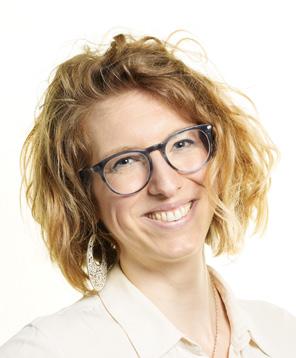
ABOUT THE AUTHOR
Dr. Gurley is a PGY-4 emergency medical services fellow at the University of California, San Francisco, and will join the University of California, San Francisco Fresno as attending faculty this fall.
TRAINEE TOOLKIT

Subspecialty Training in Pediatric Emergency Medicine: Why This Fellowship May Be Right for You
By Alexis Cordone, MD, MPH, MHS-MEd
Residents in their penultimate year are preparing their fellowship applications. As an emergency physician who recently completed a two-year subspecialty fellowship in pediatric emergency medicine (PEM), I’m writing to share why you should strongly consider this unique pathway, too.
Building General Pediatrics Knowledge and Skills
As any emergency physician (EP) will tell you, children often come to the ED with routine pediatric concerns. In academic settings, these low-acuity patients are often seen by physician assistants, nurse practitioners, or non-teaching faculty. Residency programs rightly prioritize
developing competence in pediatric resuscitation and procedures. Therefore, graduating EM residents may not feel as prepared to tackle the routine, high-frequency concerns that are often better suited to the realm of general pediatrics.
Having a PEM-trained physician see these patients—particularly in community settings—can make a huge difference. It’s easy when patients’ presentations match what we learn in residency, but having a PEM doctor available to weigh in when cases deviate from the textbook can be invaluable. For example, you probably didn’t learn during residency how to properly breastfeed or bottle-feed an infant. Yet many newborns are brought to the ED for feeding difficulties and
failure to thrive.
Another common complaint is rashes—you won’t believe how much you’ll learn about rashes during a PEM fellowship. Once, an EP with twenty years of experience called me to triage a child with an atypical diaper rash that had the patient’s father at his wits’ end. Both the father and attending were relieved when I diagnosed the rash, shared a treatment plan, and discharged the patient within minutes.
Sick vs. Not Sick
Most EPs excel at recognizing when a patient is sick versus not sick. Applying this skill to neonatal and pediatric patients requires a solid grasp of how diseases manifest differently in children. For example,
“Residency programs rightly prioritize developing competence in pediatric resuscitation and procedures, but graduating emergency medicine residents may not feel as prepared to tackle the routine, high-frequency concerns often better suited to general pediatrics.”
a PEM-trained EP can distinguish when a “fever for two weeks” is due to back-to-back viral illnesses versus something more serious, like leukemia or Kawasaki disease (KD). If we focus only on boards-testable content from practice questions, it’s easy to miss subtle presentations of disease.
Being Efficient
and Avoiding Unnecessary Tests
With adult workups, it’s sometimes easiest to cast a wide net to avoid missing anything. When caring for children, however, shotgun approaches are often unnecessary and even harmful. Every exam, medication, lab draw, and imaging study can traumatize a child and prolong their ED visit unnecessarily.
Consider a child presenting with abdominal pain. I have seen enough appendicitis cases in children to feel comfortable not pursuing additional testing when I am reasonably confident the patient does not have appendicitis. I am particularly grateful for having completed PEM training when working attending shifts at community sites, where imaging might be unavailable and would otherwise require transferring the child to another hospital for an unhelpful workup.
Learning How to Care for Children with Medical Complexity
It is impossible to be perfectly prepared for every child, but two years of dedicated pediatrics training affords PEM fellows many opportunities to care for children with medical complexity. These
children can be challenging because some have baseline vital signs that appear alarming despite being entirely stable—for example, a child with a baseline oxygen saturation of 80%. Others may appear stable but can decompensate rapidly. Some procedures, like G-tube replacements, are also common in fellowship training.
Pediatric Resuscitations Are Thankfully Rare
Ask any seasoned EP which patient scared them most, and they’ll often share a horror story about trying to resuscitate a child. Pediatric resuscitations are thankfully rare, but expertise in these high-stakes cases is crucial. A recent paper in Pediatric Emergency Care emphasized that most EM residents encounter very few critically ill pediatric patients during residency, so PEM fellowships allow EPs to gain more experience in these stressful scenarios.
Differences in anatomy, physiology, equipment, dosing, and communication can quickly overwhelm many EPs. PEM-trained physicians gain enough experience during pediatric resuscitations that these considerations are less stressful. And when the worst-case scenario occurs and a child cannot be successfully resuscitated, the PEM-trained EP is prepared and can support staff through debriefing.
Pediatric EPs Can Help the Whole Group Achieve Better Outcomes
Approximately 83 percent of children presenting for emergency care are
seen in general and community emergency departments, so pediatric emergency care remains within the scope of general EP practice. PEMtrained EPs can serve as pediatric champions at their sites. Just as EDs often employ fellowship-trained ultrasonographers and toxicologists, PEM-trained physicians contribute expertise in medical education, staff training, quality improvement, and departmental pediatric readiness. This helps the entire team provide better pediatric care. In rural areas that lack sufficient pediatric volume to support full-time PEM-trained pediatricians, these EPs have much to offer, especially given geographic disparities in the PEM workforce.
Caring for Children Is Fun!
Caring for patients of all ages is a tremendous privilege, and children are uniquely amazing. Helping a child or adolescent navigate an emergency can change their life. Most children recover with good outcomes. The smiles when they feel better, the high fives, the hugs, and even the occasional stink-eye—these moments make pediatric emergency medicine an incredible job.
ABOUT THE AUTHOR
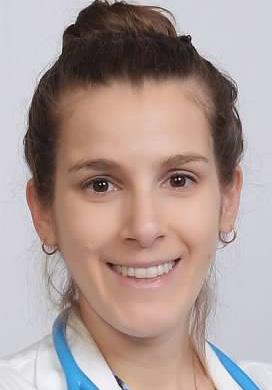
Dr. Cordone is a board-certified emergency physician who recently completed a fellowship in pediatric emergency medicine at Yale. She is a fellow of The OpEd Project and would like to thank the emergency medicine and pediatric emergency medicine faculty at Yale for their training. Any views expressed are her own.
TRAINEE TOOLKIT

HELP ME: A Simple Framework for Personal Debriefing After Critical Events
By Heather Blue, PharmD
Debriefing after resuscitations or other critical events is recommended by numerous professional organizations, typically focusing on clinical content or team communication. However, these sessions often provide little guidance on how individuals should personally process the emotional and psychological impact of highstakes events. Repeated exposure to psychological trauma can contribute significantly to burnout among healthcare professionals.
To address this gap, the HELP ME mnemonic was developed to provide
“Emotions may surface later; recognizing them is critical to psychological recovery.”
a structured yet simple framework for personal reflection following a resuscitation.
Although the mnemonic begins with “HELP,” clinicians are
encouraged to start with the second part: ME
• M – Moment: Take a moment for yourself. After an emotionally intense event, it is essential to
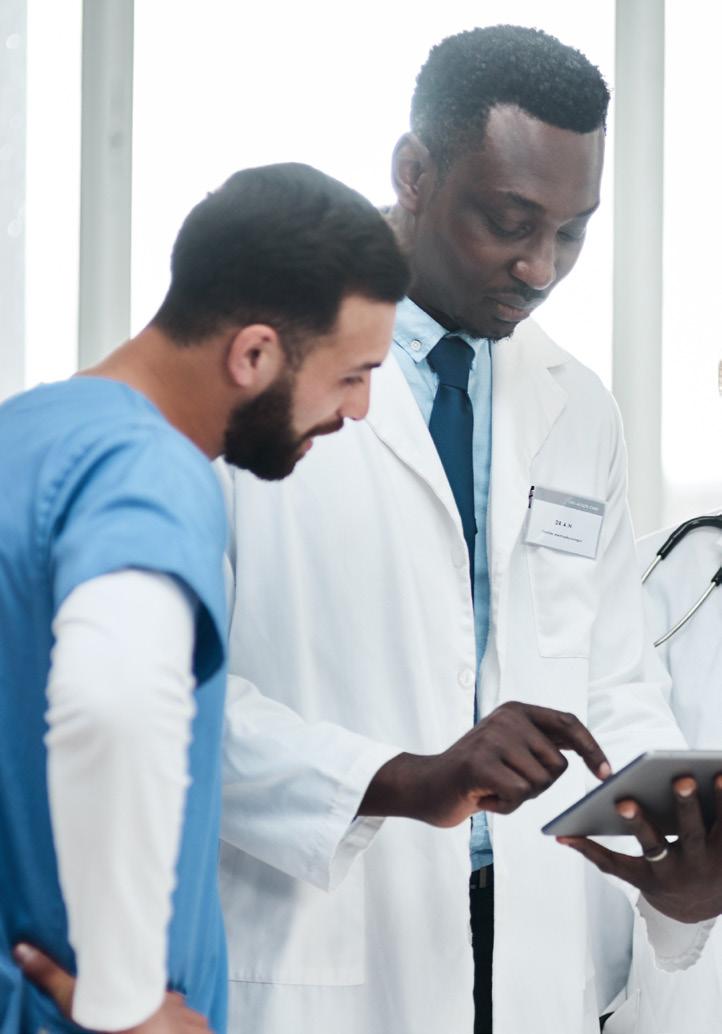
pause—whether immediately or once the adrenaline wears off—to center yourself and transition out of crisis mode.
• E – Emotions: Acknowledge and process what you felt during and after the event. Emotions may surface later; recognizing them is critical to psychological recovery. Next, focus on the HELP portion:
• H – How did it go? Reflect broadly. Regardless of the clinical outcome, how did the situation unfold from your perspective? How did you feel about your own performance and the overall team dynamics?
• E – Expectations: Consider the expectations you had—of yourself, your role, or your team. Did they align with reality? This step encourages recalibration for future events.
• L – Learnings: Identify takeaways. These may include clinical pearls, clearer role definitions, or logistical improvements for future emergencies.
• P – Preparation: Use those learnings to prepare for next time. Consider whether additional training, procedural changes, or personal strategies could improve your readiness and resilience.
The HELP ME mnemonic supports a growth mindset and promotes
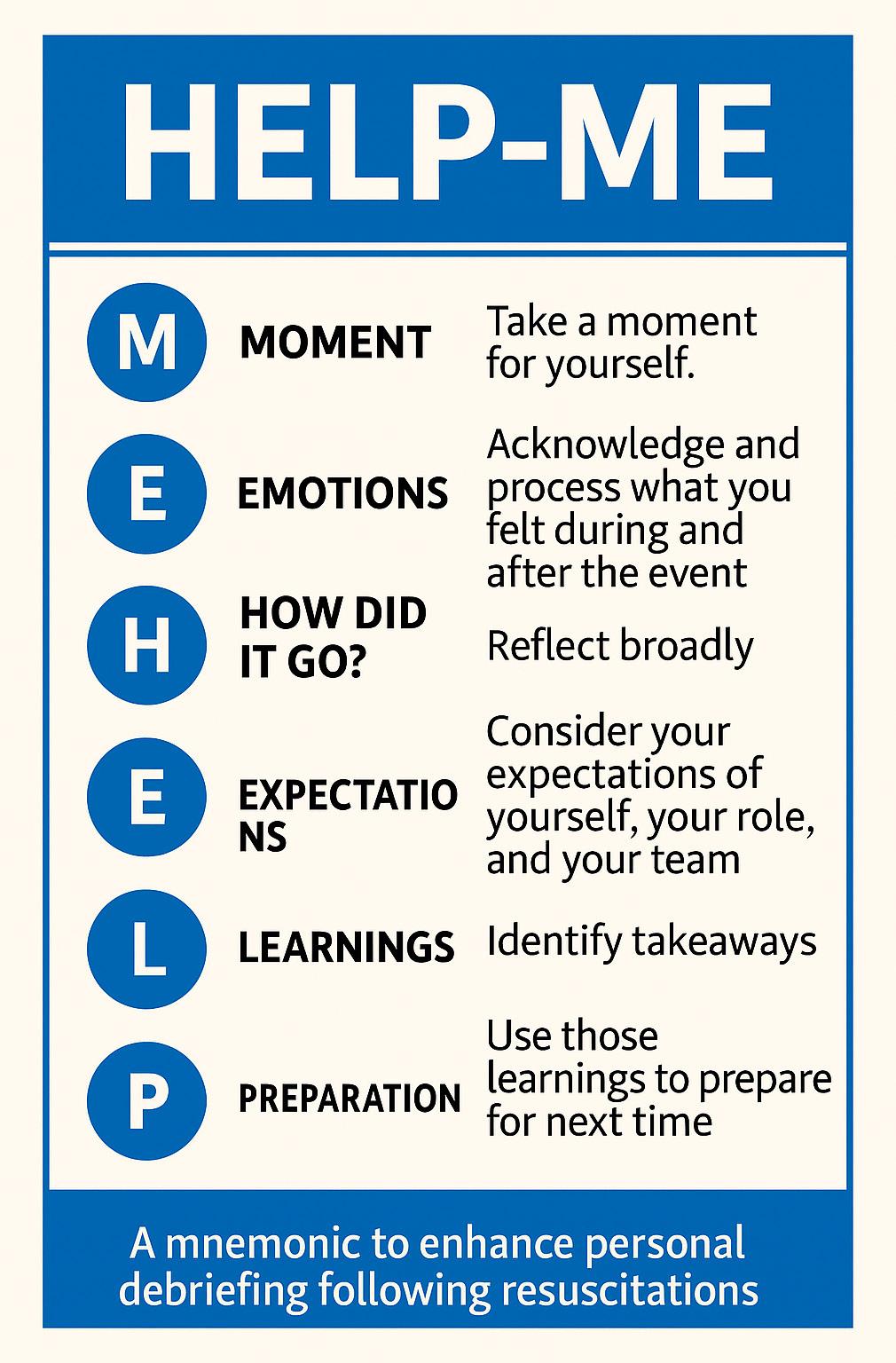
emotional well-being by encouraging healthcare professionals to pause, reflect, and grow. With increasing rates of burnout, integrating personal psychological debriefing into routine practice is vital. Empowering individuals to process and learn from emotionally taxing events not only supports provider wellness but also enhances the quality of patient care.
ABOUT THE AUTHOR

Dr. Blue is an associate professor at the University of Minnesota College of Pharmacy. She started emergency medicine pharmacy services and continues to practice at Aspirus St. Luke's Hospital in Duluth, Minnesota. She is a board certified pharmacotherapy specialist and an emergency medicine pharmacist.

Not Just Small Adults: Tailoring Point-ofCare Ultrasound Skills for Pediatric Patients
By Vivian Chan Li, MD, ScM, on behalf of the SAEM Academy of Emergency Ultrasound
Emergency physicians routinely adapt their clinical approach for pediatric patients, accounting for anatomic differences, weight-based dosing, and disease prevalence. However, this crucial adjustment is not always applied to point-of-care ultrasound (POCUS). Although some POCUS applications are similar for adults and children (e.g., soft tissue, procedural guidance) and others less relevant for children (e.g., biliary, abdominal aortic aneurysm, deep vein thrombosis), adapting POCUS for children involves more than just a
higher-frequency probe or warm gel. Applying adult POCUS techniques to children without recognizing pediatric-specific indications, imaging nuances, and potential pitfalls can affect diagnostic accuracy. This article explores pediatric considerations for four key POCUS applications: cardiac, lung, Focused Assessment with Sonography for Trauma (FAST), and musculoskeletal.
Cardiac
The American Society of Echocardiography consensus
statement in 2022 on pediatric cardiac POCUS lists hypotension, shock, and circulatory arrest as key indications. Clinical questions around preload and volume responsiveness, left ventricular (LV) systolic function, presence of pericardial effusion, and right ventricular (RV) size and systolic pressure are assessed qualitatively. Imaging views are consistent with adult cardiac POCUS protocols.
Currently, e-point septal separation (EPSS) is not validated as a quantitative measure of LV ejection
fraction nor included in pediatric echocardiography guidelines. Instead, fractional shortening is the standard quantitative LV systolic function assessment in pediatrics, though it should not be measured with regional wall motion abnormalities or abnormal LV geometry. RV systolic function can be assessed with tricuspid annular plane systolic excursion (TAPSE), utilizing age- and size-adjusted z-score reference values established in several large cohorts. For example, in term neonates, the mean TAPSE is approximately 10.3 mm, with a normal range (z-score ±2) of about 8.5 to 12.1 mm.
In terms of limitations, the ASE recommends against using pediatric cardiac POCUS in non-emergency scenarios, such as isolated chest pain, syncope, or murmur, due to the risk of missing diagnoses like congenital coronary artery or aortic arch anomalies, which are beyond the scope of POCUS.
Regarding pediatric intravascular volume status, an inferior vena cava (IVC) to aorta ratio of 0.8 or less has been studied compared with the inferior vena cava collapsibility index of 50% and clinical gestalt, both of which have been shown to be poor predictors of severe dehydration. The diameter of the aorta and IVC is measured in a transverse view from anterior to posterior, in systole for the aorta and expiration for the IVC. A systematic review found that an IVC-to-aorta ratio of 0.8 or less had 86% sensitivity and 73% specificity for dehydration, but concluded it was insufficient to exclude or confirm significant dehydration in pediatric patients. This measurement should not be used in isolation but in conjunction with the whole clinical picture.
Lung
Lung POCUS has emerged as a transformative imaging modality in pediatrics, indicated for cough, fever, difficulty breathing, chest pain, hypoxia, and chest trauma. For bronchiolitis, lung POCUS can risk-stratify patients using a lung
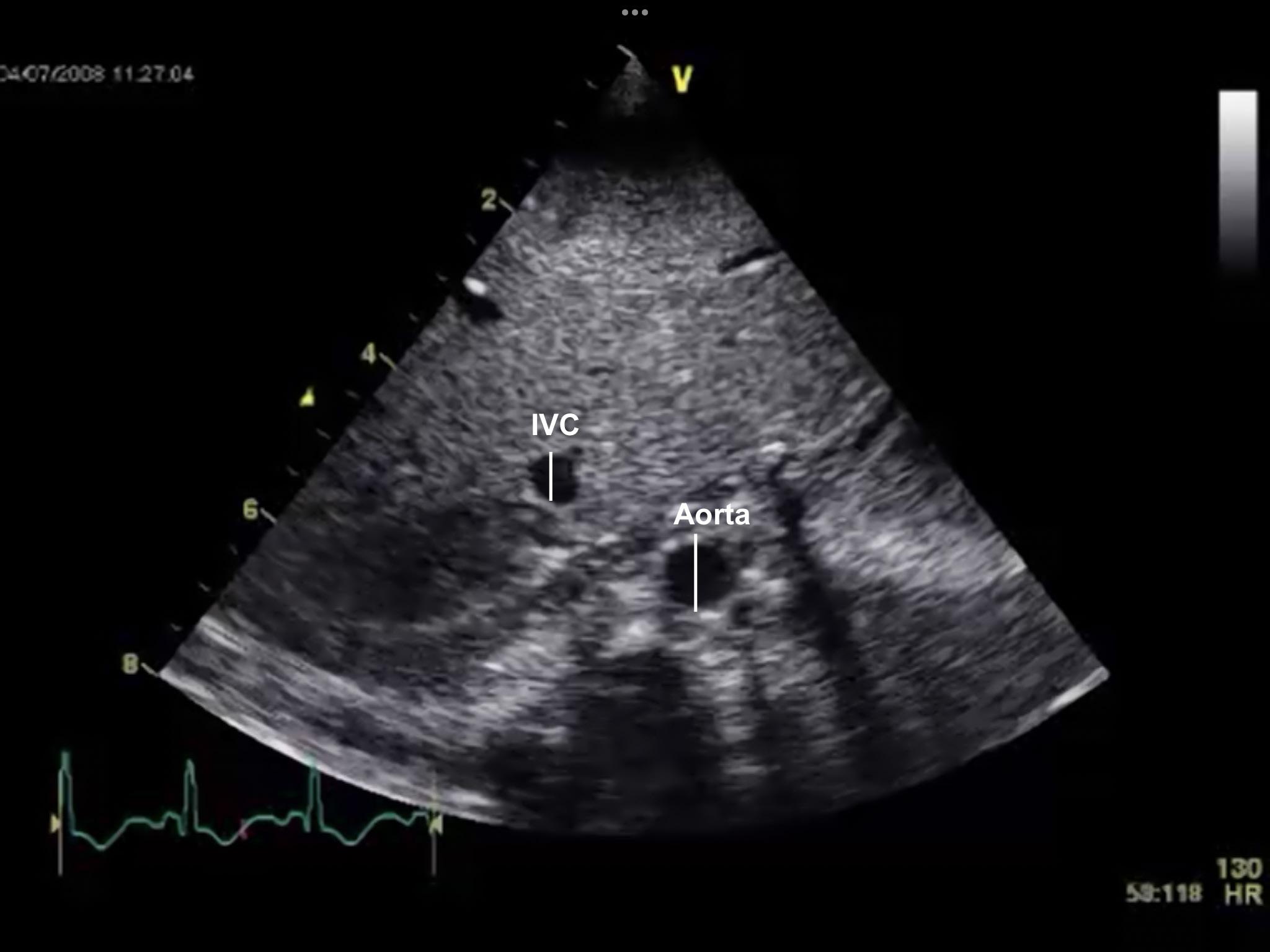
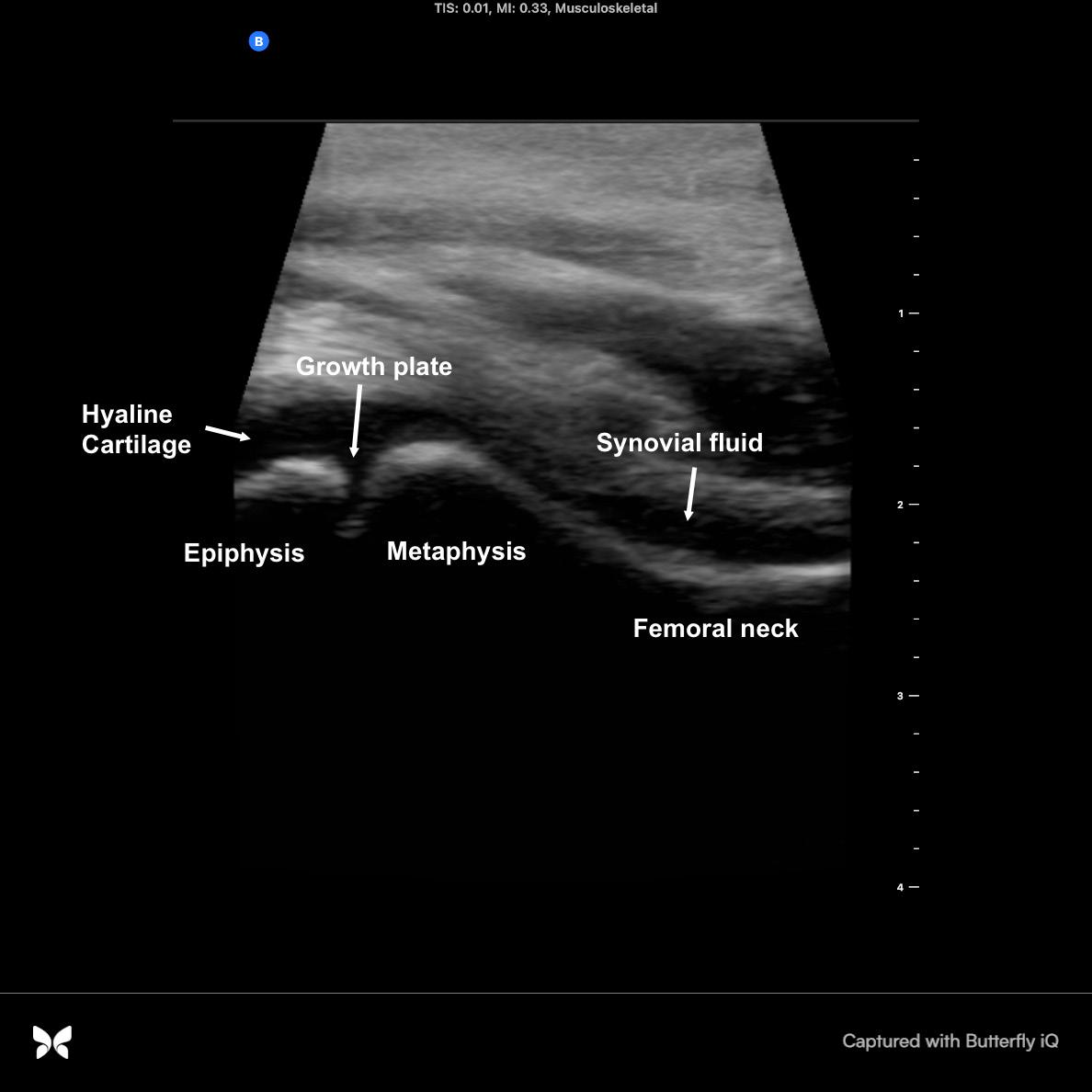
Inferior vena cava and aorta image in B-mode. The solid lines indicate where the diameters are measured to calculate the inferior vena cava to aorta ratio.
Anatomy of the hip joint of a 5-year-old on ultrasound, showing a normal amount of synovial fluid.
“Applying adult point-of-care without recognizing nuances, and potential
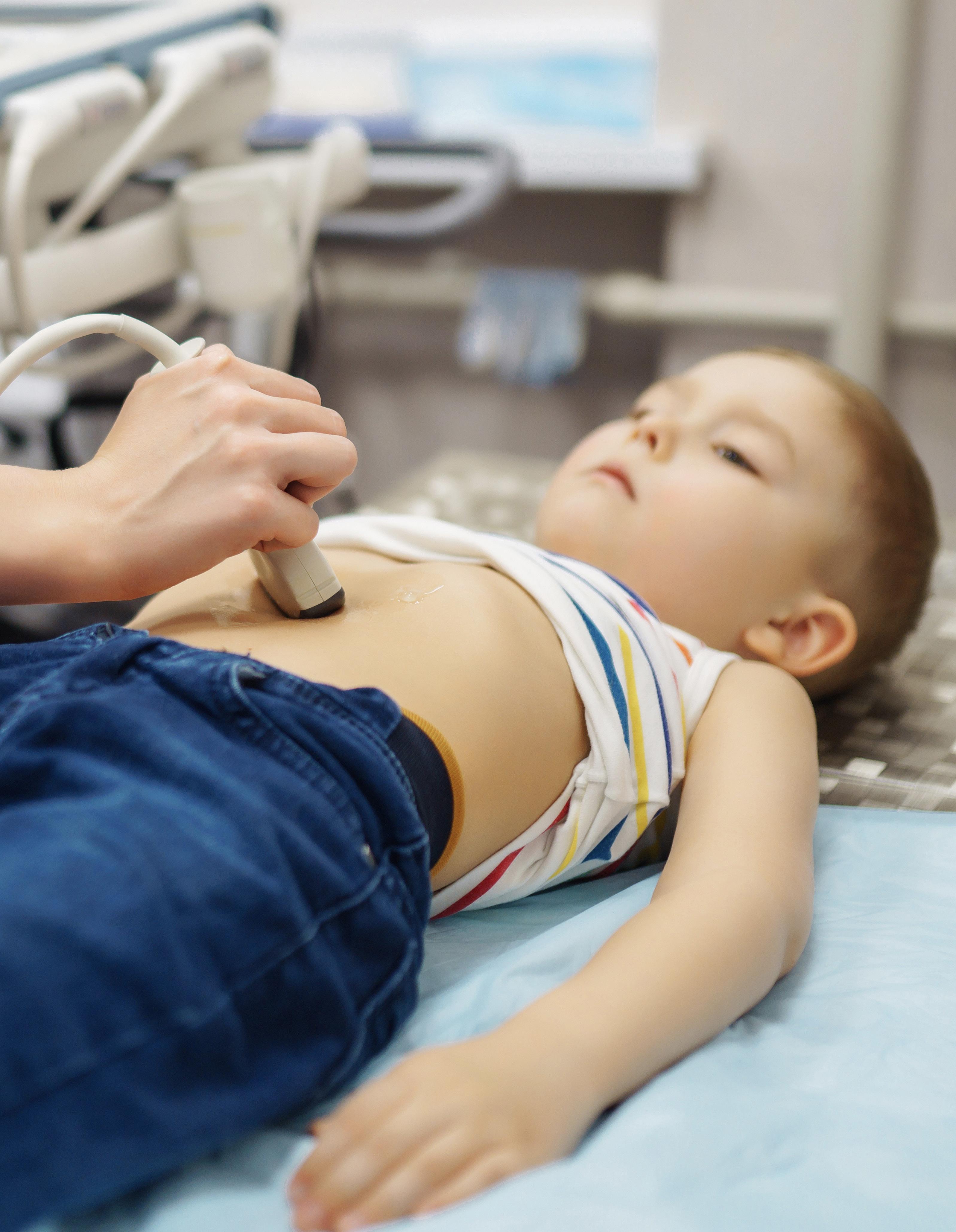
ultrasound (LUS) score incorporating B lines, subpleural consolidations, and pleural effusions. A meta-analysis showed that lung POCUS reliably diagnoses pneumonia with greater sensitivity than chest radiography, particularly when sonographic consolidations are greater than 1 cm and dynamic air bronchograms are present.
One key caveat, especially in neonates, is that consolidations can also appear in meconium aspiration syndrome, respiratory distress syndrome, and hemorrhage, requiring clinical correlation. Mistaking the thymus for consolidation is another pitfall. The thymus, located in the superior mediastinum, is mildly hypoechoic relative to the liver, spleen, and thyroid, with a fine granular echotexture akin to a “starry sky” and smooth, well-defined margins.
A common pediatric lung protocol for pneumonia includes scanning the posterior paraspinal line in addition to the anterior midclavicular and lateral midaxillary lines bilaterally, in both sagittal and transverse planes. Patients often sit up for posterior chest wall scanning, differing from the classic Basic Lung Ultrasound Examination (BLUE) protocol, which scans the posterior axillary line.
Focused Assessment with Sonography for Trauma (FAST)
The pediatric FAST exam uses the same imaging views as adults. As little as 100 milliliters of free fluid can be detected in the pelvis, the most common collection site in pediatrics.
In adults, the FAST exam is crucial for triaging hemodynamically unstable patients to emergent operative management, reducing time to surgery, CT scans, patient length of stay, and surgical complications. However, the utility of the FAST in children is less clear. Children are more prone to organ lacerations without hemoperitoneum, decreasing FAST sensitivity for intra-abdominal injury.
Despite this, FAST combined with physical examination showed greater sensitivity (88%) and negative predictive value (97.3%) than either test alone in a retrospective chart review. One systematic review and meta-analysis concluded that in a hemodynamically stable child with blunt abdominal trauma, a negative FAST exam alone could not preclude a CT scan (9% post-test probability of intra-abdominal injury). However, that same study also stated that a negative FAST exam combined with a Glasgow Coma Scale of 14–15 and a normal abdominal exam could identify low-risk patients who might avoid a CT scan. Currently, there is no consensus on the FAST exam’s role in pediatric trauma protocols.
Musculoskeletal
The main anatomical differences between children and adults in ultrasound examination of the musculoskeletal (MSK) system are found in the presence of growth plates (epiphyseal cartilage) and epiphyses, which are fully or partially composed of hyaline cartilage with a vascular supply. The cartilage-to-bone ratio changes with age and joint.
A common pitfall is mistaking a growth plate for a fracture. Always compare with the unaffected
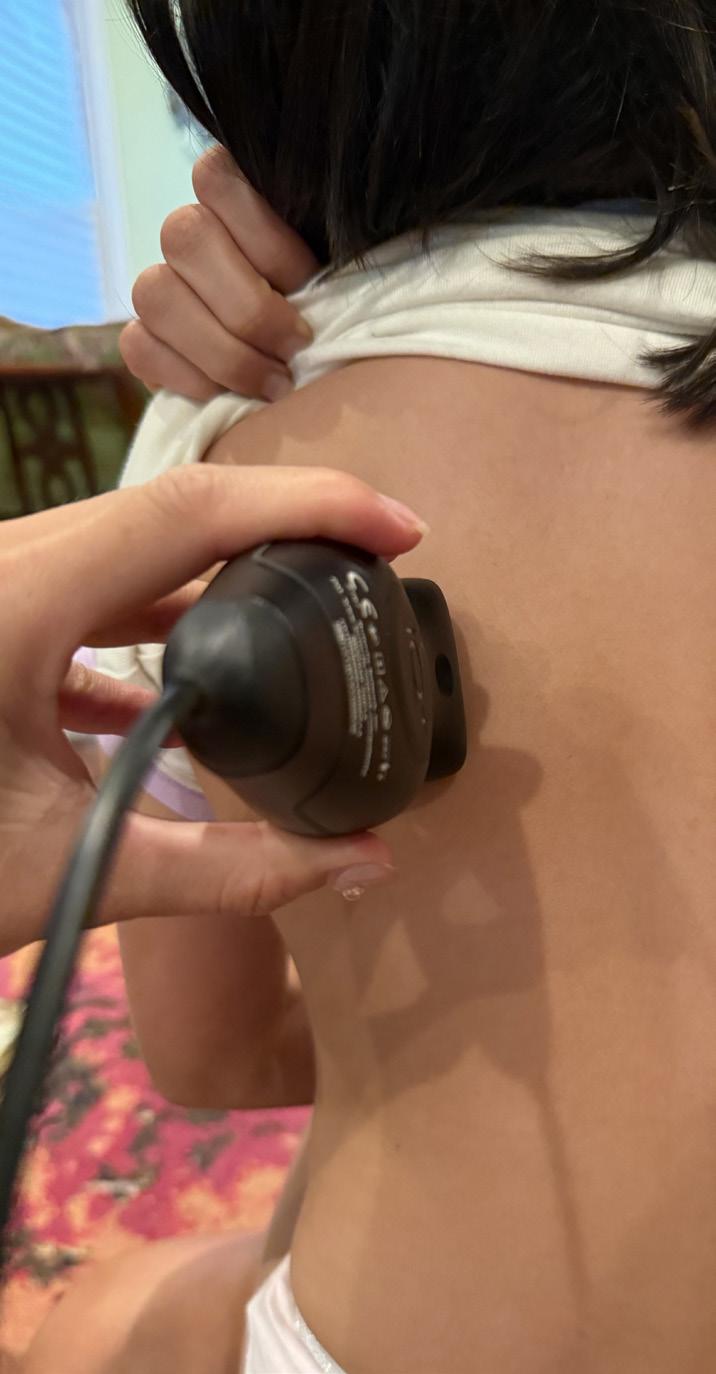
contralateral side. Another frequent mistake is confusing hyaline cartilage in unossified epiphyses for fluid. To distinguish cartilage from effusion, note that fluid will show posterior enhancement of tissues and change shape with movement, while cartilage will not be displaceable by the probe nor change shape with movement.
In summary, while POCUS is an invaluable tool, its effective and safe application in pediatric patients necessitates a thorough understanding of age-specific considerations, appropriate imaging protocols, and a keen awareness of its diagnostic boundaries.
ABOUT THE AUTHOR
point-of-care ultrasound techniques to children recognizing pediatric-specific indications, imaging potential pitfalls can affect diagnostic accuracy.”
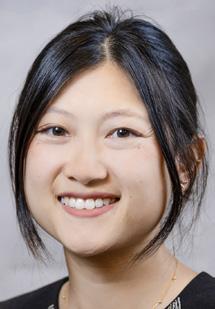
Dr. Li is an emergency ultrasound fellow in the department of emergency medicine at Boston Medical Center in Boston, Massachusetts.
The left posterior view in sagittal orientation, performed along the paraspinal line, as part of a six-zone, 12-view scanning protocol.

Point-of-Care Ultrasound in Acute Monocular Vision Loss
By Kara A. Johnson, MD, MPH, and Kristine L. Schultz, MD, on behalf of the SAEM Academy of Emergency Ultrasound
We’ve all encountered it: A middleaged patient presents to the emergency department with acute, painless monocular vision loss and no other neurological symptoms. A stroke alert is immediately activated. The patient is rushed to CT, then admitted for MRI, neurology consultation, and possibly thrombolytics.
But what if the real diagnosis isn’t
a central nervous system event at all? What if it’s a primary ocular condition instead?
The consequences of an incorrect initial diagnosis are significant. One patient undergoes unnecessary admissions, imaging, and multiple consultations, while another is promptly seen by ophthalmology with a plan for definitive, visionsaving care. These divergent paths
underscore the importance of early differentiation in cases of acute, painless monocular vision loss.
We need a faster, more reliable method to distinguish between these potential causes—and point-of-care ultrasound (POCUS) could be the answer.
Why Not Just Use Fundoscopy? Historically, fundoscopy has been the go-to tool for diagnosing
“We need a faster, more reliable method to distinguish between potential causes of acute, painless monocular vision loss—and point-ofcare ultrasound could be the answer.”
posterior ocular pathologies. However, performing fundoscopy on an undilated eye in the emergency department is far from ideal. Studies show a 38% miss rate of retinal pathologies, with emergency physicians reporting only 13.7% confidence in using fundoscopy to diagnose retinal issues.
A recent meta-analysis found that ocular POCUS demonstrated 94.2% sensitivity (95% confidence interval = 78.4% to 98.6%) and 96.3% specificity (95% CI = 89.2% to 98.8%) for diagnosing retinal detachment— numbers that far outperform many emergency physicians’ fundoscopy skills.
What Exactly Are We Looking For?
Three common causes of vision disturbances identifiable by POCUS include posterior vitreous detachment, posterior vitreous hemorrhage, and retinal detachment, the most visionthreatening condition. Studies have shown that emergency physicians can reliably identify these pathologies on ocular POCUS.
A retinal detachment appears as a bright, echogenic membrane within the vitreous, tethered to the optic disc. It often has a “serpentine” or “swaying seaweed” appearance with ocular movement. The detached retina should remain tethered to the optic nerve (Figure 1).
“Time is Eye”: The New Stroke Paradigm
As treatment options for ocular stroke evolve, distinguishing primary ocular pathologies from ischemic cortical
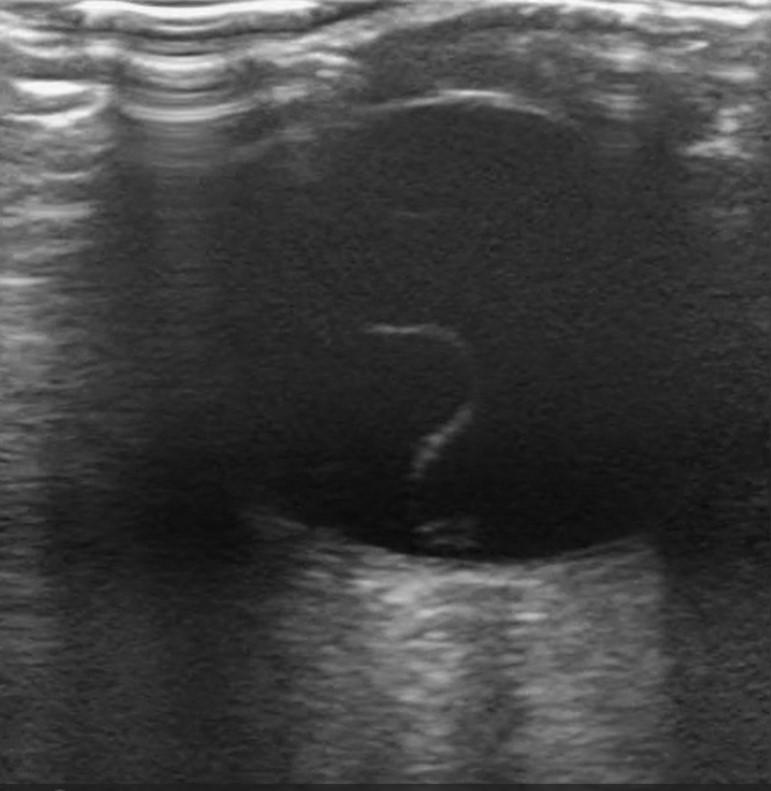
causes of vision loss early will be crucial for triaging patients to the correct definitive care.
A Proposed Algorithm for Painless Monocular Vision Loss
Let’s streamline this process:
1. After initial stroke-alert care, perform POCUS on all cases of acute, painless monocular vision loss.
2. If retinal detachment, vitreous hemorrhage, or posterior vitreous detachment is identified, consult ophthalmology.
3. If POCUS is negative or inconclusive, proceed with the stroke workup.
This approach reduces unnecessary admissions, avoids delays in ophthalmologic care, and ensures patients receive appropriate treatment from the start.
POCUS isn’t just a diagnostic tool; it can also guide clinical care. If initial stroke imaging does not reveal an intracranial cause, POCUS should be the next step to determine whether the patient has an ophthalmologic diagnosis.
ABOUT THE AUTHORS

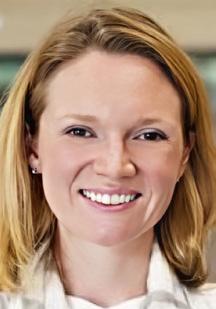
Dr. Johnson is an advanced clinical ultrasound fellow at Lehigh Valley Health Network. She has published other works on point-of-care ultrasound and is involved in resident and student education.
Dr. Schultz is chief of point-ofcare ultrasound and program director for the advanced emergency ultrasound fellowship at Lehigh Valley Health Network. She also serves as assistant professor of emergency medicine at the Morsani College of Medicine at the University of South Florida.
Figure 1: A free-floating echogenic membrane in the posterior globe which is tethered to the optic disc.
Image Credit: Zachary Boivin, MD
VOICES & VIEWPOINTS
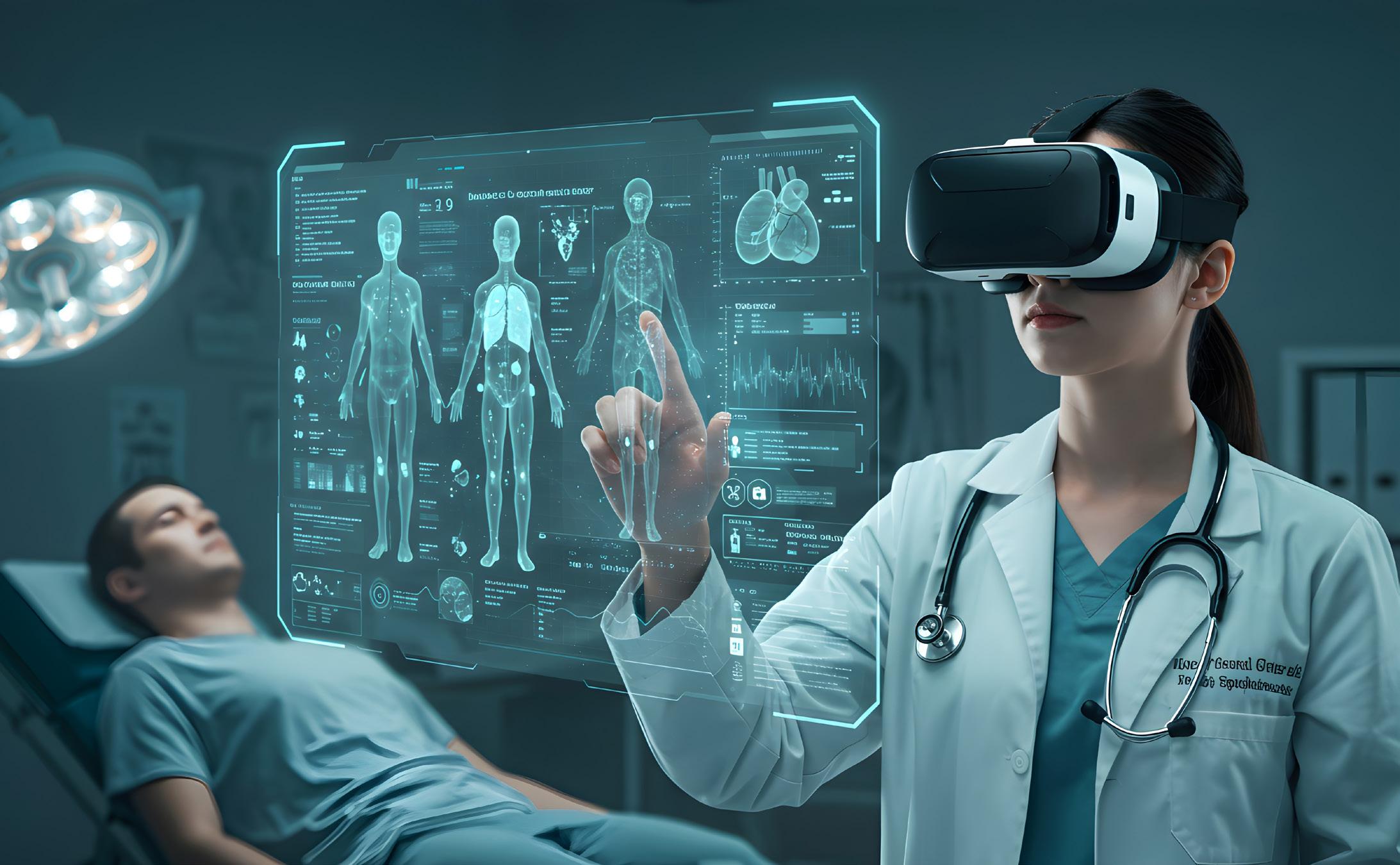
AI Tools Can Enhance, Not Replace, the Patient-Physician Interaction
By Reginald Saint-Hilaire, MD, MBA
New technology has been shaping human civilization for centuries. From the printing press to the internal combustion engine to the World Wide Web, the transformative potential of innovation is undeniable. These advancements allow us to imagine a world vastly different from the present.
Artificial intelligence and large language models are the next wave of innovation, inspiring society to anticipate incredible advancements and changes to our way of life.
When Bill Gates, co-founder of Microsoft, said that “within a decade, AI would make human doctors and teachers far less necessary,”
“As an emergency medicine physician, I see the promise of artificial intelligence and large language models to enhance care delivery and streamline many tasks in modern medicine.”
it stirred both excitement and concern. Physicians and teachers felt their life’s work was under scrutiny. While some met his
comment with skepticism and others with optimism, Gates was simply doing what he has always done: envisioning the future.
“Tailored educational content with real, personal stories can drive sustainable improvements. Equipped with these tools, physicians can communicate compassion and build trust, increasing engagement and adherence to treatment plans.”
In the same interview with Jimmy Fallon, Gates reflected on his initial vision for personal computing, stating that his company aimed for “a personal computer on every desk in every home,” which seemed laughable at the time. Without broad, ambitious goals, innovation risks stagnation.
As an emergency medicine physician, I see the promise of AI and large language models to enhance care delivery and streamline many tasks in modern medicine. Yet, the health of any individual is complex and interdependent. This complexity is what makes medicine both a science and an art. While discrete variables contribute to overall health, they cannot be easily reduced or excluded when assessing a patient.
The excitement around AI in healthcare is justified. Maximizing and extending quality of life is an age-old pursuit, dating back to Ponce de Leon’s search for the fountain of youth. The processing power of current AI engines allows for refined diagnostic accuracy, ambient listening for documentation, and rapid searches of the medical literature. These applications can put clinicians back at the bedside, fostering the human connection essential for healing and well-being.
Achieving meaningful improvements in health outcomes using AI is where this technology can truly transform healthcare. Leveraging large language models to improve health literacy at individual, community, and population levels offers a direct path to transformative change. Behavior modification is essential, as patients

must actively participate in their treatment. Tailored educational content with real, personal stories can drive sustainable improvements. Equipped with these tools, physicians can communicate compassion and build trust, increasing engagement and adherence to treatment plans. Change is difficult for both patients and clinicians. Yet, we must embrace this technological shift and harness it for the good of our patients. Having lived through a once-in-a-century health event, we are now on the brink of another defining moment in healthcare. Physician leaders must
apply their expertise, understanding, and experience with human suffering to use innovation effectively, alleviate suffering, and improve the health of our communities
ABOUT THE AUTHOR
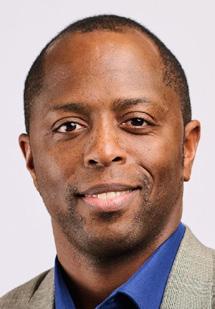
Dr. Saint-Hilaire is medical director for the Tampa General Hospital outpatient center and Kennedy Emergency Center FSEDs. He is an assistant professor of emergency medicine and serves as fellowship director for the University of South Florida emergency medicine HALM fellowship.
VOICES & VIEWPOINTS

Caring for Every Body: Advancing Gender-Affirming Care in the Emergency Department
By Eileen Williams, MD; Rachel Boxer, MD; Khiem Hoang, MD, MPH; and Eliot Blum, MD, on behalf of the SAEM Sex and Gender in Emergency Medicine Interest Group
Introduction
In a rapidly evolving healthcare landscape, emergency medicine stands at the crossroads of urgency and inclusivity. A growing number of patients who identify as transgender or gender-nonconforming are seeking care in emergency departments nationwide, yet many still face barriers to compassionate, informed treatment. Genderaffirming emergency care is not a niche—it is fundamental, lifesaving, and applicable to all emergency providers.
Why It Matters
More than 1.6 million people in the United States identify as transgender or gender diverse. Of this population, 23 percent have avoided healthcare due to fear of mistreatment, and 33 percent report at least one negative experience with a provider. These numbers reflect real individuals delaying or forgoing care because they cannot trust the systems meant to protect them.
The gap in provider preparedness is stark. While 88 percent of emergency providers report having
cared for transgender or gendernonconforming patients, only 17.5 percent have received formal training in gender-affirming care. This disparity can lead to missed diagnoses, inappropriate treatments, and medical harm.
Defining Terms
To discuss gender diversity, it is important to start with foundational vocabulary.
• Gender identity is a person’s internal sense of their gender— male, female, both, or neither.
“Gender-affirming emergency care is not a niche—it is fundamental, lifesaving, and applicable to all emergency providers.”
• Biological sex is assigned at birth.
• Sexual orientation refers to whom a person is attracted.
• Gender expression reflects how individuals present their gender through appearance, clothing, behavior, or voice and may or may not align with gender identity or biological sex.
Knowing a patient’s gender identity or expression does not imply knowledge of their chromosomes, anatomy, or sexual practices. Providers should ask for patients’ pronouns and chosen names and use them consistently. Small actions like this have a significant impact on dignity and safety.
Clinical Vignette
Consider a 26-year-old patient presenting to the emergency department with chest pain. The patient uses he/they pronouns, has been binding the chest since adolescence, and takes daily testosterone injections.
Binding can restrict chest expansion and mask respiratory issues, potentially leading to atelectasis, rib bruising, musculoskeletal pain, or skin breakdown. Testosterone therapy may increase risks of thromboembolism, polycythemia, elevated liver enzymes, weight gain, and acne.
In this case, imaging revealed a subsegmental pulmonary embolism. The patient was treated with a direct oral anticoagulant and discharged with follow-up plans including his endocrinologist. This case highlights the importance of integrating genderaffirming awareness with evidencebased emergency medicine.
Clinical Considerations
Medical considerations extend
beyond hormone therapy. Providers must account for complications from binding, tucking, injections, off-label medications, and surgeries. Thorough yet sensitive history-taking is key. Gender-affirming care does not mean overlooking medical evaluation; it requires incorporating affirming practices into routine care.
Creating a Welcoming Clinical Environment
Improving patient experience begins at ED entry. Inclusive signage, using correct pronouns, and ensuring staff diversity signal safety and respect. During encounters, be transparent about why information is needed and ask before examining. Validate patients’ identity and lived experiences.
Electronic medical records should allow self-identified names and pronouns alongside legal identifiers to avoid misgendering. Staff training in inclusive language and traumainformed communication is essential.
Legal Landscape
Emergency clinicians must navigate a complex legal environment. At the time of publication, 27 states have laws limiting youth access to genderaffirming care. Nearly 40 percent of trans youth ages 13–17 live in states where such care is restricted. In 24 states, providers may face legal or professional penalties for offering gender-affirming care to minors.
Legal concerns also affect adults, including documentation mismatches, insurance denials, or barriers in correctional or shelter settings. Understanding these systems helps clinicians advocate for safe dispositions and continuity of care.
Allyship in Action
Providing gender-affirming care is
both a moral and clinical imperative. When transgender and gendernonconforming patients feel seen, respected, and safe, outcomes improve. Allyship begins with training, continues with systemic changes, and culminates in daily actions. Allies can correct mistakes, support colleagues, and advocate for institutional policy changes—ensuring intake forms, referral pathways, and workplace protocols are inclusive.
For emergency medicine professionals, the message is clear: caring for everybody means caring for every body
ABOUT THE AUTHORS
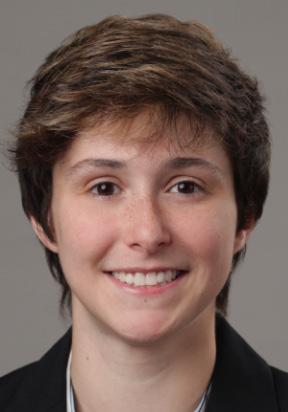
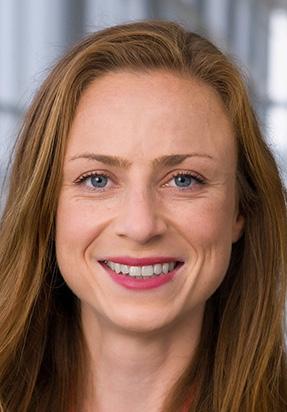

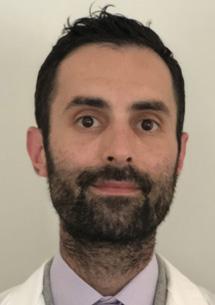
Dr. Boxer is chief resident for the Emory University emergency medicine residency program.
Dr. Williams is a third-year resident at the University of Texas Southwestern and a RAMS Board member.
Dr. Hoang is a faculty member at Emory University in Atlanta, Georgia. Dr. Blum is an assistant professor of emergency medicine at Emory University School of Medicine and an attending physician at Grady Memorial Hospital.

Thriving on the Night Shift: Finding Wellness in Emergency Medicine
By Anita Goel, MD, and Kelli Jarrell, MD, MPH, on behalf of the SAEM Education Committee
The concept of being a “night ranger” in emergency medicine is not new, but it may be underutilized by those who are naturally “night owls.” In sleep medicine research, being wired as a morning lark, night owl, or somewhere in between is referred to as your chronotype—a key factor in determining how your body responds to shift work. If you are an eveningtype chronotype, working nights may align with your natural rhythm and help you avoid those painful early morning wake-ups for 7 a.m. shift starts. Still, circadian rhythm is only part of the story—there’s much more behind the scenes that makes the night shift worth a second look.
“Finding the job that matches your lifestyle may be one of the most powerful wellness tools available.”
Incentives That Make Nocturnism Sustainable
Compensation structures vary, but incentives for physicians who choose nights often include financial
rewards and flexibility in scheduling. Common benefits include:
• Schedule autonomy: Full-time nocturnists often enjoy priority or full control over their schedules.
This eliminates stress around vacation requests—travel plans can instead be made confidently and well in advance. Many night rangers also opt for consistent weekly schedules (e.g., Monday–Wednesday or Friday–Sunday) to build stability into their work-life rhythm.
• Shift differentials: Increased earnings may include flat rates per night ($50 to $500), hourly bonuses ($40 to $100 per hour), or percentage increases (15% to 25%) to base salary or RVU-based earnings.
• Reduced shift burden: Many nocturnists work fewer shifts per month. For example, they may work fewer overall hours than their daytime colleagues yet be paid the same as a 1.0 FTE. Some programs also allow physicians to work fewer weekends or holidays.
When the Rhythm Fits: Lifestyle and Circadian Alignment
For evening chronotypes, night shifts fit as a lifestyle rather than a compromise.
• Circadian match: If you naturally stay up until 2 or 3 a.m. and struggle with mornings despite good sleep hygiene, night shifts may align better with your internal clock—and foster a more positive on-shift mindset.
• Clustered shifts and long breaks: Many nocturnists group three to five shifts in a row, which can create five to seven consecutive days off without using PTO or special schedule requests.
• Family presence: Nocturnists often return home as their children wake up, allowing them to participate in breakfast routines and morning drop-offs. Evenings are often free for family dinners, homework time, extracurricular activities, and bedtime rituals that day-shift physicians may miss. This rhythm enables presence during high-impact moments, fostering stronger family bonds and work-life balance.
Wellness Strategies and Fatigue Management
Embracing night work may unlock lifestyle benefits, but thriving longterm requires intention. Nocturnists
“Strategic childcare planning, shared mealtimes, and well-timed naps are critical to ensuring post-shift recovery is not compromised.”
who succeed often rely on proactive health habits designed for overnight demands.
• Day-pattern rituals: Some structure their “off time” to mimic evenings after a day shift—with exercise, dinner, and reading before going to bed.
• Sleep aids and gear: Melatonin, modafinil (Provigil), zolpidem (Ambien), CPAP machines, blue-light blockers, and blackout curtains are commonly used to promote restful sleep and maintain alertness.
• Sleep hygiene best practices: White-noise machines, eye masks, caffeine cutoffs after midnight, and unplugged, dark rooms help consolidate sleep.
• Support systems matter: Sustaining nights long-term requires strong family and partner support. While older studies linked night work to higher risks of cancer, diabetes, hypertension, and obesity, newer perspectives suggest sleep deprivation—not sleep timing— may be the greater risk factor. In particular, past studies often surveyed workers who slept only three to four hours daily due to daytime responsibilities. This points to quantity and consistency of sleep as the more important factors. Strategic childcare planning, shared mealtimes, and well-timed naps are critical to ensuring post-shift recovery is not compromised.
Conclusion: Choosing Wellness, Not Waiting for It
Being a night ranger isn’t for everyone—and it is not a shortcut to wellness. But for those whose
personal lives, bodies, or priorities align with nocturnism, it can offer surprising peace.
For one of the authors, Dr. Goel, committing to full-time nights with protected mornings and evenings with her children significantly improved wellness and family balance. For the other, Dr. Jarrell, being able to map out her schedule to accommodate fellowship leadership responsibilities—without sacrificing quality time with family, friends, travel, and global health—was the key.
These experiences show how nocturnism can create alignment between professional demands and personal priorities. This path may not be ideal for physicians immediately out of residency, when case volume and procedural diversity are most critical. But for mid- or late-career physicians, transitioning into a night ranger role may bring significant monetary and scheduling benefits— while supporting a lifestyle that fosters both professional success and personal wellness
ABOUT THE AUTHORS
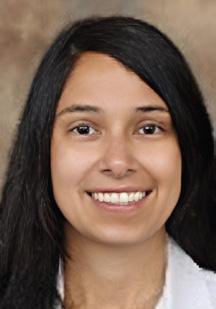
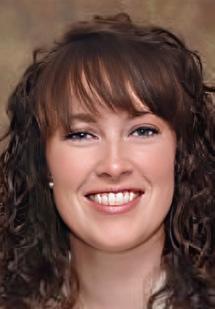
Dr. Goel is an associate professor of emergency medicine at the University of Cincinnati. She directs longitudinal programs for students pursuing emergency medicine and leads the Transitions to Residency course. Dr. Jarrell is an assistant professor of emergency medicine at the University of Cincinnati, where she directs the social emergency medicine fellowship and section.
WILDERNESS MEDICINE

7 Marathons, 7 Continents, 7 Days: Providing Emergency Care From Antarctica to Miami
By Christopher Vaudo, PA-C and Luke Apisa, MD
The Challenge Ahead
The tagline of the World Marathon Challenge — “7 marathons, 7 continents, 7 days — fails to capture the nearly 40,000 air miles traveled or the runners’ completion of their journey a full day and a half early. Even a revised tagline, “7 marathons, 7 continents, 5.5 days,” while more impressive, does not have quite the same ring. It also leaves out the countless blisters popped and bandaged, the innumerable
joints bolstered with KT tape, and the heaps of electrolytes and acetaminophen doled out — all in pursuit of keeping 52 bodies vertical on their journey around the world.
What seems a nigh-impossible feat, suited only to the fittest and most headstrong athletes, also proves to be a fun and logistically unique undertaking for the medical staff fortunate enough to join the journey.
PAs in Expedition Medicine
Admittedly, opportunities like these are not ones always afforded to PAs. Though there is undoubtedly a role for us in this realm, it can sometimes take the support and advocacy of a trusting collaborating physician to put PAs in these positions. I typically work as a PA in the Massachusetts General Hospital emergency department, so when Dr. Apisa approached me to join him for this adventure, I jumped at the chance.

“What seems a nigh-impossible feat suited only to the fittest and most headstrong athletes proves also to be a fun and logistically unique undertaking for the medical staff lucky to be along for the journey.”
The race comprised runners from 21 countries, representing a staggeringly diverse field of culture, language and experience. It was sometime after my 12th rendition of explaining what a PA was to a participant with no analogous profession in their home country that I surrendered to the more ubiquitous, but woefully nondescript, “medic” instead.
Dr. Apisa had initially been approached to be the sole medical
provider for the race. While it probably would have been possible for him to be there alone, my presence allowed for a far less onerous week on his end. The presence of a PA on his team meant we could spread our resources over the course: there could be two medical stations set up for runners. It also meant better preventative care: since I could also administer medications and provide wound care, we could make sure we were addressing nausea, blisters
and dehydration before they became significant or race-ending concerns. It meant there was another set of emergency medicine-trained hands at the ready in case of a catastrophic emergency on the course. It also meant a more enjoyable week for us both. We could alternate sleeping on the plane so the other got uninterrupted rest in between races,
continued on Page 127
“What headstrong
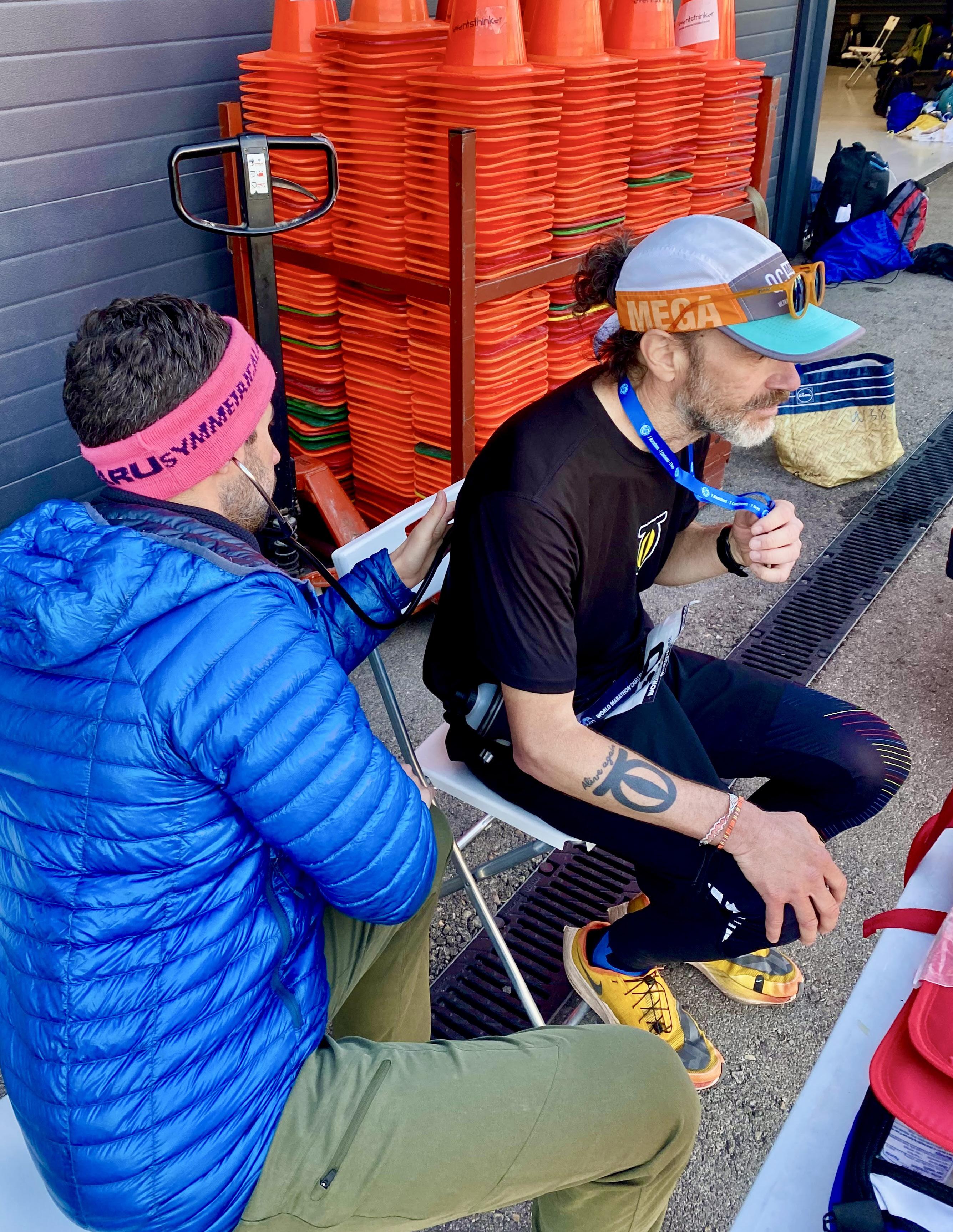
“What seems a nigh-impossible feat suited only to the fittest and most headstrong athletes proves also to be a fun and logistically unique undertaking for the medical staff lucky to be along for the journey.”
WILDERNESS MEDICINE
continued from Page 125
and we could alternate running a lap or two so we could spend some time with participants, stretch our legs between intercontinental flights and see just a bit more of our far-flung, albeit short-lived, destinations.
Screening and Early Decisions
The week started with some prerace meetings and introductions with staff and runners. Our medical decision-making began in earnest with the assessment of whether one participant was fit to join us after suffering a recent injury in a rollover ATV incident just five days prior. We did our best to sift through operative notes, handwritten in French shorthand (a task with which Google Translate proved remarkably adept), and review CT scans in analog hard copy. We determined the participant had been in hemorrhagic shock secondary to a vascular injury in the thigh, which required exploratory surgery and vascular repair. They endured a subsequent two-day ICU stay, from which they left AMA to arrive three days later in Cape Town equipped with running gear and resolve to complete seven marathons in seven days.
We had lengthy discussions among ourselves, with the race directors and with the participant, and ultimately advised the risk was too great. If the wound were to reopen, the location and severity of the injuries put the runner at risk of severe, noncompressible hemorrhage. The travel and certainly the races could be limb- or life-threatening. The vascular surgery capabilities of Novo Station,
Antarctica, are meager. Moreover, given the time constraints, money spent and logistical struggles, any deviation from race plans could also jeopardize the world-record-setting endeavor for 65 other participants. Given the unique concerns of this resource-limited venture, this runner gracefully bowed out.
First Marathon: Antarctica
The following day, after much anticipation, we boarded our aircraft bound for Novo Station. There were zero frills aboard the Russian cargo plane outfitted with passenger seats, but it proved itself a reliable vessel to ferry us to our first continent. Antarctica was pristine: an impressively protected wilderness thanks to international agreements, it is truly a place unlike any other. Being our most remote locale, we were grateful the race largely went off, medically, without a hitch. Our only mid-race intervention was to check the sanity of the Aussie running in shorts and a T-shirt.
We were approached immediately after the run by a participant who had slipped and fallen on his way back to the dining tent. Landing with an outstretched left hand, he came to us with new wrist pain. On exam, he had no deformity but tenderness at the ulnar head. Circulation, sensation and motor function were intact. Putting our portable ultrasound to use on Day 1, we were able to visualize what appeared to be periosteal edema at the ulnar head, supporting our concern for an ulnar styloid or ulnar head injury. After some acetaminophen and a prefabricated splint, we recommended he seek confirmatory X-rays upon our return to Cape Town that evening. In typical endurance-
athlete fashion, he declined to delay the expedition’s pace for X-rays and simply wore his splint for the remaining six marathons.
Hematuria in Cape Town
With the Antarctica marathon behind us, we hopped back aboard our Soviet-era aircraft. Having finished our first race in temperatures around 8 degrees Fahrenheit, we were met eight hours later with 90-degree heat and direct sun at the start of our next race in Cape Town. This race also provided our next interesting patient. During laps two and three of the Cape Town race, I was approached by another runner, an American in his 50s, who had developed painless hematuria. He had increased his fluid intake before seeking our attention with no improvement. He was not experiencing dysuria or increased frequency, and insisted his urine was intermittently dark red and bright red, but not cola-colored. He was tolerating fluid intake well. I advised him to maintain his hydration and to slow his pace. Dr. Apisa and I discussed the likelihood of this being exerciseinduced hematuria as opposed to a more concerning renal crisis or rhabdomyolysis. We counseled him on the suspected cause — continued impact of the bladder wall on the bladder base, causing contusion — and that the typical treatment is to discontinue the offending activity, particularly given the challenge in definitively excluding his symptoms as the herald of a more severe underlying pathology.
Given this was the second marathon of his seven-marathon series and
on Page 128
continued from Page 127
$50,000 endeavor, we recognized the recommendation for rest was not something our patient was likely to observe. Through shared decisionmaking, we agreed he would slow his pace for this race and the next, maintain good oral hydration and keep us updated. Impressively, the hematuria abated by the third race and was entirely resolved by the fourth.
The Long Haul: Flights, Marathons, and Care
The following four days — with races in Perth, Dubai, Madrid, Fortaleza and Miami — progressed in a strange routine. We would fly on our private jet, fully outfitted with lay-flat seats, for seven to 14 hours, arrive in-country, and kick off the marathon two to three hours later. Eight hours thereafter, we would immediately re-board the plane, destined for the next continent and race. Upon re-embarking, we would immediately be peppered with requests for ibuprofen, Tylenol, Tums and ondansetron. KT tape proved
Lessons Learned
to be an unparalleled salve, whether stabilizing joints, covering abraded skin or perhaps just providing mental reassurance to runners. About an hour before landing, we would make our rounds to check on racers who had sought us out previously and attend to blistered toes and sore knees. There was no jet lag. There were no time zones. There was simply marathon time and flight time.
Zero Dropouts, Record-Breaking Feats
It was an impressive event, to say the least. Zero runners dropped out of the race. The oldest two women to complete the feat, both 68 years old, finished with smiles on their faces.
A new world record was set for the fastest woman to run a marathon on each of the seven continents. Aside from some minor bumps and bruises, lightheadedness and nausea, the duration of the week progressed with relative medical simplicity. We were grateful our runners never required the additional resources we had packed: advanced airways, the AED, combat tourniquets and EpiPens remained stowed in our bags, and our contracted transport
This experience underscored several key principles for wilderness and expedition medicine:
• Prevention is paramount. Early intervention for blisters, dehydration and minor ailments prevented race-ending conditions.
• Be prepared, even if unused. Though our advanced equipment went untouched, readiness for worst-case scenarios is nonnegotiable.
• Resource-limited decision-making is a skill. Portable ultrasound, careful history-taking and shared decision-making often substitute for advanced diagnostics.
• Team-based care matters. Having two providers allowed us to divide duties, rest adequately and provide better continuous coverage.
• Most medicine is reassurance. Expedition care is as much about keeping athletes confident and comfortable as it is about handling acute emergencies.

teams onsite watched each event without us ever needing to call upon their services.
As is the case in much of wilderness and expedition medicine, our job is to be prepared for the true emergencies, even if, with proper prevention and a little luck, they never arrive. Equally important, it is incumbent on us to have some fun along the way. If you have the opportunity to join an expedition, and a reliable colleague whose company you enjoy, consider saying yes. It may pay dividends for your workload, your sleep hygiene and your career — and it just might change how you practice medicine going forward.
ABOUT THE AUTHORS
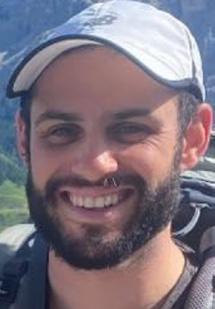
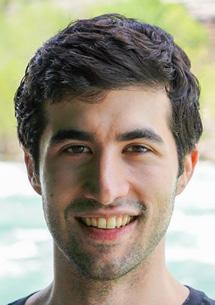
Christopher Vaudo, a physician assistant practicing clinically in the Massachusetts General Hospital emergency department. He is affiliated with the MGH wilderness medicine division in his role as a PA-2.
Dr. Apisa is the assistant fellowship director of the MGH division of wilderness medicine and the inaugural fellow of MGH’s space medicine program. He is a clinical instructor of emergency medicine at Harvard Medical School.
Thank You! 2025 Advocate and Mentor Donors of the Annual Alliance
SAEMF proudly recognizes its Advocate and Mentor donors for their commitment to advancing academic emergency medicine. Through their support of the Annual Alliance, these dedicated individuals are helping drive innovation in research and education, and shaping the future of emergency care.
Advocate Donors
Benjamin Abella, MD, Mphil
— In honor of William G. Baxt, MD
Imoigele P. Aisiku, MD, MSCR, MBA
Elizabeth Burner, MD, MPH, PhD
Danielle Campagne, MD
Christopher Robert Carpenter, MD, MSc
Jeffrey M. Caterino, MD, MPH
Ted Chan, MD
Andrew K. Chang, MD, MS
Douglas M. Char, MD
Carl Chudnofsky, MD and Keck School of Medicine of the University of Southern California
Wendy C. Coates, MD
James E. Colletti, MD
Ted Corbin, MD, MPP
John DeAngelis, MD, FAEMUS
Harinder S. Dhindsa, MD, MPH, MBA
Jeff Druck, MD
Petra Duran-Gehring, MD
— In Honor of G. Catherine Duran
Robert Eisenstein, MD
Rollin J. Fairbanks, MD, MS
Seth Gemme, MD
Katrina A. Gipson, MD, MPH
Mentor Donors
James G. Adams, MD
Christian Arbelaez, MD, MPH
Mike Baumann, MD
Jane H. Brice, MD, MPH
Linda Brown, MD, MSCE
Kathleen Cowling, DO, MS, MBA
Eitan Dickman, MD
Mary Ann Edens, MD
Marie-Carmelle Elie, MD
Robert Femia, MD, MBA
Chris Goode, MD
Steven Andy Godwin, MD
Colin F. Greineder, MD, PhD
Shayne Gue, MD, MSMEd
Richard J. Hamilton, MD, MBA
Geoffrey P. Hays, MD
Ramsey Herrington, MD
Erik P. Hess, MD
Christy Hopkins, MD, MPH, MBA
Bobby Kapur, MD, MPH, CPE
Kevin Kotkowski, MD, MBA
Nathan Kuppermann, MD, MPH
Ryan LaFollette, MD
Luan Lawson, MD
Michael Lozano Jr., MD, MSHI
Samuel D. Luber, MD, MPH
Timothy J. Mader, MD
— In honor of Dr. James Irving Raymond
Adrienne N. Malik, MD
Chad Miller, MD
Bryn Mumma, MD, MAS
Lewis S. Nelson, MD, MBA
Marquita S. Norman, MD, MBA
Brian J. O'Neil, MD
Arthur M. Pancioli, MD
Meagan R. Hunt, MD
Nicholas J. Jouriles, MD
Jeffrey A. Kline, MD
Erik Kulstad, MD, MS
Eric L. Legome, MD
Evan Leibner, MD
Philip A. Mudd, MD, PhD
Vicki E. Noble, MD
Carl Ravin — In memory of Dr. Greg Henry
Renee Riggs, DO
Emanuel P. Rivers, MD, MPH
Peter S. Pang, MD — In honor of the women faculty and leaders at IU Emergency Medicine. Their dedication to patients, colleagues, learners, and the specialty inspires me every day.
Leigh A. Patterson, MD
James Paxton, MD, MBA
Samuel J. Prater, MD
Scott W. Rodi, MD, MPH
David C. Seaberg, MD
Peter E. Sokolove, MD
Mary E. Tanski, MD, MBA
Michael J. VanRooyen, MD, MPH
Laura Walker, MD, MBA
Elizabeth Lea Walters, MD
James R. Waymack, II, MD
Scott G. Weiner, MD, MPH
Sandy Werner, MD
Dustin Blake Williams, MD
Jason W. Wilson, MD, PhD
Taneisha Wilson, MD
— In honor of ADIEM and Brown Emergency Medicine
David W. Wright, MD
Thomas E. Wyatt, MD
Carlo Rosen, MD
Robert W. Schafermeyer, MD
Megan N. Schagrin, MBA, CAE, CFRE
Kevin R. Scott, MD, MSEd
Leslie V. Simon, DO
Susan A. Stern, MD
Harsh P. Sule, MD, MPP
Benjamin C. Sun, MD, MPP
Andrej Urumov, MD
Terry L. Vanden Hoek, MD
Stephen J. Wolf, MD
Every donor makes a meaningful impact—together, Annual Alliance supporters enable SAEMF to award over $1 million each year in research and education grants. Learn more about becoming an Annual Alliance donor and see the full 2025 Annual Alliance Donor list Contact Julie Wolfe, Senior Manager of Development, for more information about SAEMF’s work and ways to get involved.
The Legacy Society: Donors Sustaining EM Research Well Into the Future
Your contributions and dedication have helped shape today's emergency medicine (EM) care, leaving a lasting impact on the field. Through your involvement in SAEM and SAEMF committees and generous giving, you have supported education, research, and training that benefit SAEM members and enhance patient care.
Today, we invite you to consider becoming a part of the Legacy Society by making a planned gift to the SAEMF. By including SAEMF in your estate plans or planned giving, you ensure that future generations of SAEM members can continue to enjoy the same opportunities and support that have been vital to your career.
Take some time to browse SAEMF’s legacy giving resources. We just added several new legacy giving video resources that you may find helpful as you consider opportunities:
• Bequests
• Qualified Charitable Distributions
• Donor Advised Funds
We recommend consulting with your financial advisor to identify a planned gift that aligns with your intentions. If you would like to hear about the experiences of other Legacy Gifts Committee members and their SAEMF planned gift journeys, we are happy to connect you with them.
Your legacy gift will ensure that the SAEMF continues to be a driving force in advancing emergency medicine education and research, benefiting countless future generations of SAEM members and their patients. Together, let's shape the future of emergency medicine and leave a lasting impact on the field we hold dear.
A Special Thanks to Our Legacy Society Donors

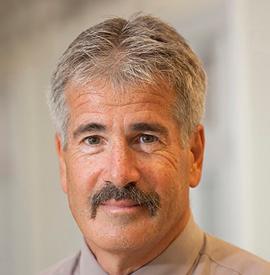

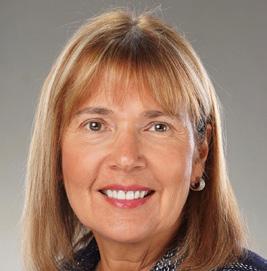
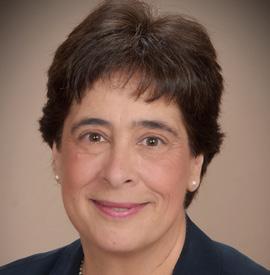
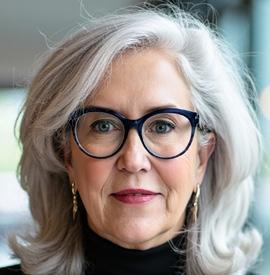
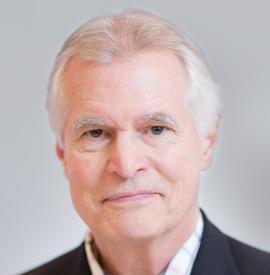
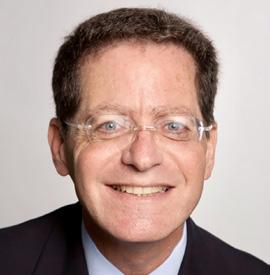

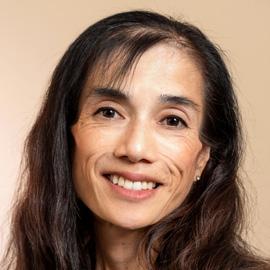
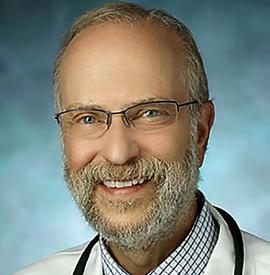
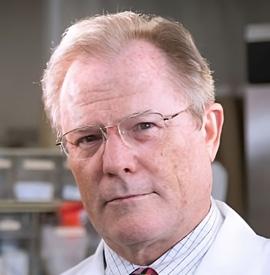
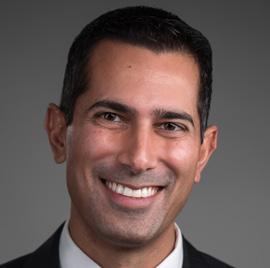
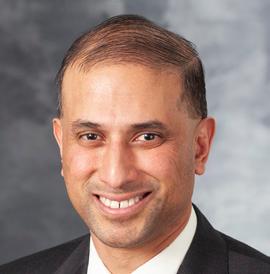
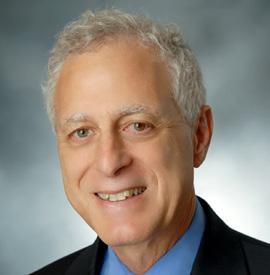
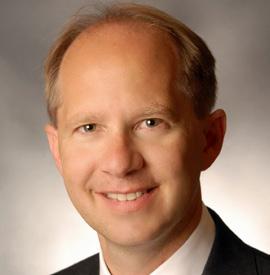
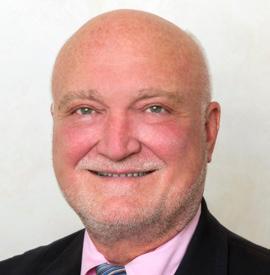
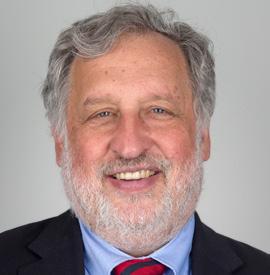

David E. Wilcox, MD, FACEP
Peter Sokolove, MD
David P. Sklar, MD
Brian J. Zink, MD
Manish N. Shah, MD, MPH
Richard E. Wolfe, MD
Robert S. Hockberger, MD
Cherri D. Hobgood, MD
Paul S. Auerbach, MD, MS Michelle H. Biros, MD, MS
Wendy C. Coates, MD
Michelle Blanda, MD
Gregory L. Henry, MD and the Henry Family
Ali S. Raja, MD, DBA, MPH
Andy S. Jagoda, MD
Edward A. Panacek, MD
Gabor D. Kelen, MD
Ken Kaji, Eugene Kaji, and Jining Wang — In memory of Amy H. Kaji, MD, PhD
Have you considered a legacy gift to benefit emergency medicine?
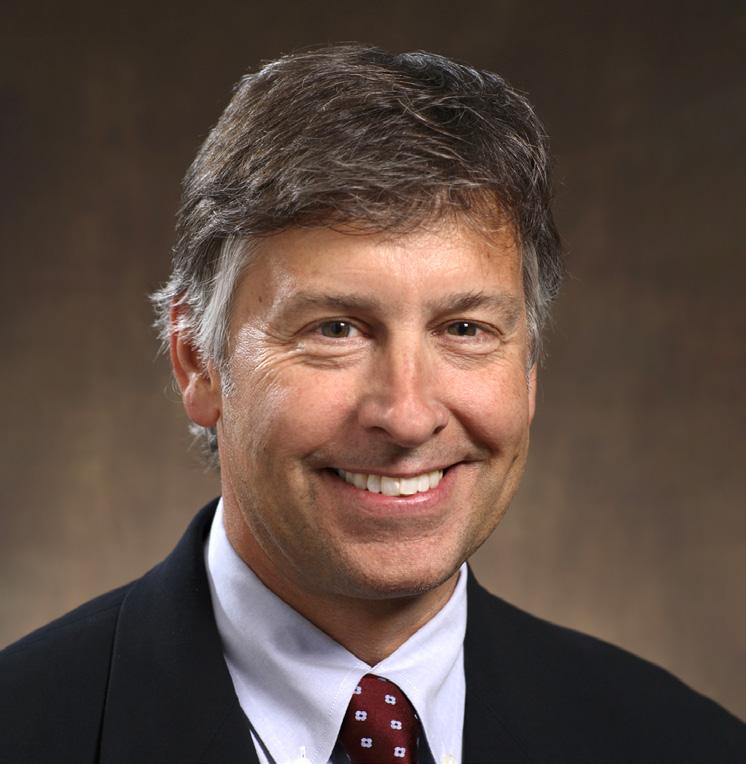
“I literally grew up with SAEM, first as a resident presenting at my first national meeting, then as a junior faculty member serving on committees, and then in leadership roles. With this strong, almost visceral connection to the organization, it seemed natural to include SAEM in my legacy planning with the hope that those funds will help the next generation of academic emergency physicians advance in their careers, with the help of SAEMF.”
Brian J. Zink, MD Legacy Society Donor
All about Legacy Giving
What is the Legacy Society?
The Legacy Society is our way of expressing gratitude to visionary donors like you who commit to supporting the SAEMF beyond their lifetime. Your thoughtful contribution solidifies the future of this organization that has been instrumental in your professional journey. We will be honored to recognize your status as a Legacy Society donor in our communications and at events.
When is the right time to make a Legacy gift?
Experts recommend reviewing your estate plan and will throughout your lifetime, especially during significant life events. When you update your will, it is an ideal time to consider including SAEMF as a beneficiary.
What is the easiest way to donate?
If you are ready to make a legacy gift decision now, a simple bequest is often the easiest, and the language to include in your bequest and/or trust is as follows:
"I give, devise, and bequeath to The SAEMF, a 501(c)(3) charitable organization having its principal offices in Des Plaines, Illinois: the sum of $_____ or _____ percent of my estate. [or all (or _____ percentage of) the rest, residue, and remainder of my estate.] This gift is to be used to further the charitable purposes of The SAEMF, the philanthropic arm of the Society for Academic Emergency Medicine, at the discretion of the foundation's board of trustees. (The SAEMF Taxpayer Identification Number is 262371803.)"
Already planning to remember SAEMF in your estate?
Let us know using the SAEMF Legacy Society Letter of Declaration. Contact Julie Wolfe, Senior Manager of Development, SAEMF for more information.

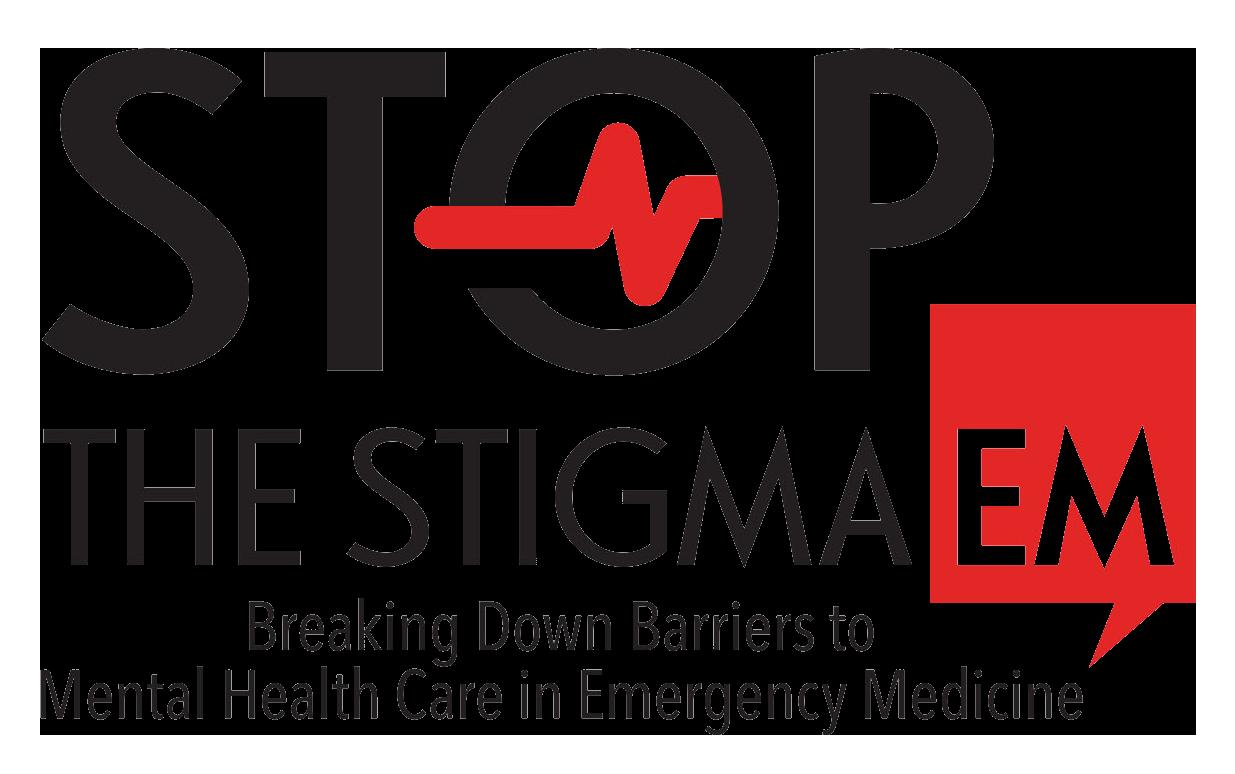
Caring for the Caregivers: A Systematic Approach to Wellness for Healthcare Providers
“Changing the future starts with training to care for each other as we care for our patients — and having honest conversations before we bury more friends.”
By Elizabeth Beaubien on behalf of the SAEM Wellness Committee
Please note: This piece contains descriptions of suicide
On Sept. 18, 2022, my former EMS partner, roommate, and close friend made her bed, sent her Wordle to her family, and drove across the state. She died by suicide. With limited signs of suicidal ideation or distress, a statewide search went out for a missing hiker. Police and her parents found her body on Sept. 21, 2022 — halfway through my first finals week of medical school.
Our story is one shared by many young healthcare providers. After meeting as teenagers, we moved in together and worked as EMTs during the early stages of COVID-19. We grew up quickly in those months, sharing joy, sadness, and everything in between — the bond of two young women who chose a hard, isolating path but learned to walk it together. Until that life-changing call, I believed we could turn to each other for anything. What went wrong? How could someone who had spent years watching the impact of suicide end her own life? How did we — her network of friends and healthcare professionals — miss the signs? And finally: How do I, a medical student struggling to find time for my own self-care, work to prevent losing more friends to suicide?
Mandated wellness modules tell me 15 minutes of yoga, catchy slogans in elevators, and stigmatized hotlines might alleviate strain on trainees. Yet we rarely discuss the everyday actions I, as part of this broken system, can take to support friends and colleagues in distress. This is a cause all physicians and trainees must embrace. Male physicians are 40% more likely than non-physicians to die by suicide. As a woman in medicine, my odds double.
Feminist philosopher Joan Tronto, in An Ethic of Care, outlines care from the perspective of care ethics. She argues that creating change requires
October is #StopTheStigmaEM Month: Conversations That Matter
Why now?
Emergency medicine professionals are facing unprecedented layers of stress, from high patient acuity and staffing shortages to political upheavals and a global polycrisis. These pressures, combined with the cultural expectation to “keep it together,” make open conversations about mental health more urgent than ever. October’s #StopTheStigmaEM Month creates space to normalize these discussions and provide actionable strategies for well-being.
What is happening.
This year, in addition to collaborating with national organizations in our specialty, we are hosting four interactive sessions that reflect real challenges in our field:
• Permission to Feel: Normalizing the Return-to-Work Struggle
• Before You Break: The Role of Peer Support in Academic Emergency Medicine
• Week 3 webinar will address program director responsibilities and physician implications regarding mental health disclosures to state medical boards. Details coming soon!
• The Case Is Over, But I’m Not Okay: Breaking the Silence on Litigation Stress in Medicine
What is in it for you.
Ten minutes from now, we want you to remember that seeking help is a sign of strength. Ten months from now, we hope you will remember that these conversations helped shift our culture toward openness, connection, and sustained support.
Call to action.
Join us for one or all sessions. Listen. Share. Take away at least one strategy to protect your own mental health and to better support a colleague.
The outcome.
By the end of October, our goal is to strengthen our community’s capacity to care for one another, reduce stigma at both the individual and organizational levels, and build a shared commitment to making mental health part of the core culture of emergency medicine.
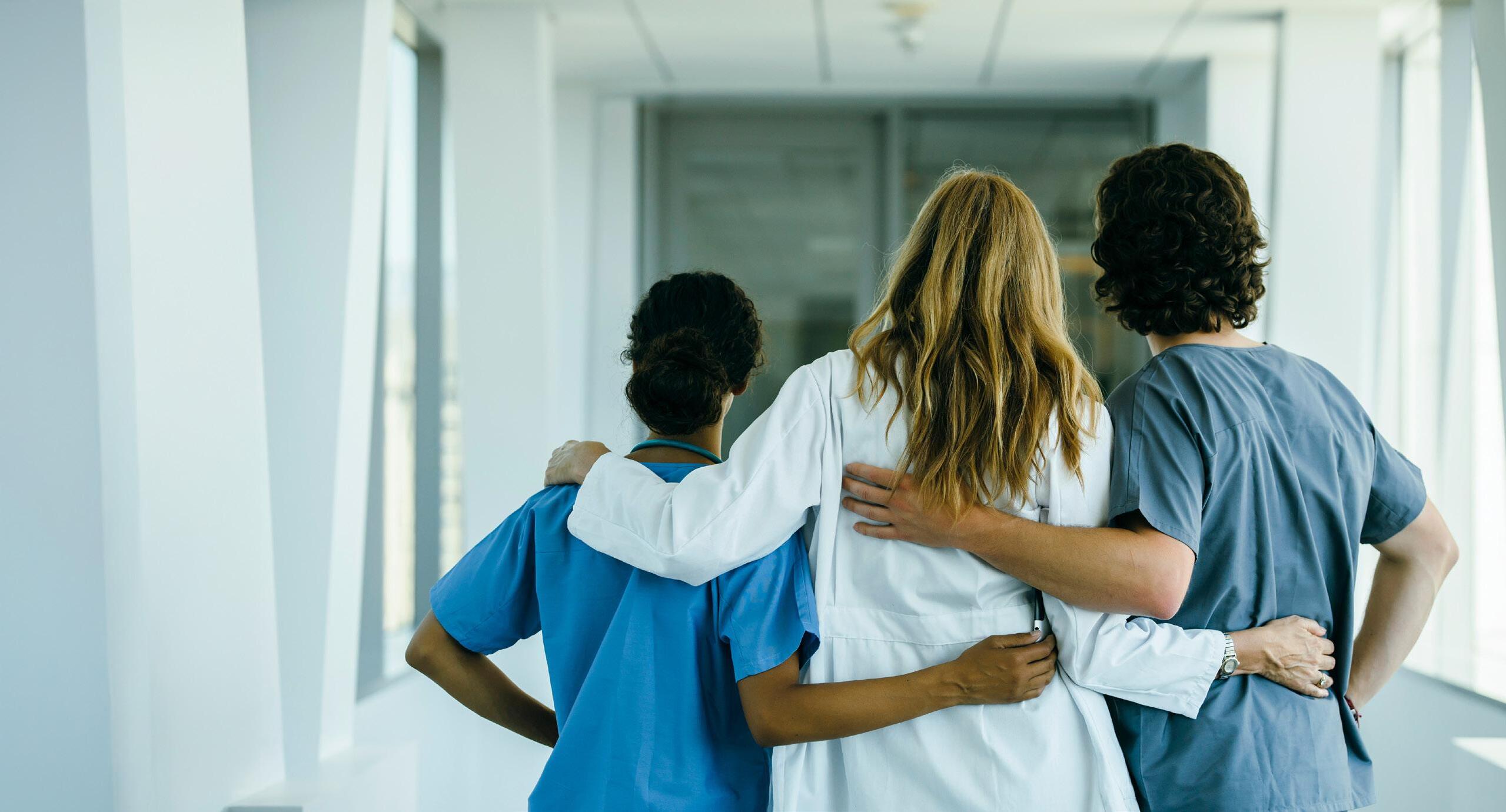
Support & Resources
Hotlines & Ongoing Support
• Crisis Text Line: Text HELP to 741741
• National Suicide Prevention Lifeline: 1-800-273-TALK (8255)
• NAMI HelpLine M-F from 10 am–10 pm ET: 1-800-950NAMI (6264) or info@nami.org or text NAMI to 741-741
• Physician Support Line 1-888-409-0141
• Federation of State Physician Health Programs
• PeerRxMed Organizations That Can Help
• Suicide Prevention Resource Center
• American Foundation for Suicide Prevention
• The Dr. Lorna Breen Heroes’ Foundation
• The Physicians Foundation
• The National Alliance on Mental Illness
• ALL IN: Wellbeing First for Healthcare
• The Schwartz Center for Compassionate Healthcare
• Vital WorkLife
• The Coalition for Physician Well-Being
STOP THE STIGMA EM continued from Page 133
understanding care — both the actions themselves and their ethical implications. Using her framework, I will show how combining wellness education with institutional support can improve mental wellness for medical trainees.
Tronto identifies four interconnected phases of care — attentiveness, responsibility, competence, and responsiveness — each with ethical implications for how we support others.
While the Accreditation Council for Graduate Medical Education (ACGME) and the Liaison Committee on Medical Education (LCME) require residencies and medical schools, respectively, to provide resources for trainee wellbeing, barriers such as limited accessibility, stigma, and lack of physician-specific mental health resources still prevent many trainees from seeking help. By
understanding these barriers and openly having conversations, we can strengthen our ability to care for each other.
Caring about (attentiveness). This is the desire and ability to recognize a need for care. Sometimes attentiveness is as simple as asking, “How are you?” The Time to Change campaign introduced the “Ask Twice” model, encouraging a second ask after the reflexive “I’m fine.” This breaks social norms and shows genuine willingness to listen and talk. Early identification and intervention significantly reduce suicide morbidity and mortality, and peers are often best positioned to notice warning signs such as mood or behavior changes. Greater attentiveness leads to proactive resource access, perhaps preventing suicidal ideation from escalating into a life-threatening emergency. Caring for (responsibility). After identifying a need, someone must accept responsibility to act.
Timeless Insights for Emergency Medicine
We’re highlighting selected past Stop the Stigma EM month feature articles that remain as relevant as ever. These pieces explore mental health, wellness, and systemic support in emergency medicine and offer actionable insights, inspiring stories, and strategies to support colleagues and build a culture of care in emergency medicine.
• Breaking Barriers: Reforming Credentialing to Support Mental Health in Emergency Medicine
• From Awareness to Embracing and Elevating Daily Well-Being
• A Call to Action for EM Leaders
• Leading With Compassion: How Stop the Stigma EM Month and WellnessCentered Leadership Support Emergency Physicians
• Redefining Mental Health Care in Emergency Medicine: An Organizational Imperative
• Giving EM Residents the Safety Net They Deserve Through Proactive Support
Barriers include stigma and fear of professional repercussions. While groups such as the Dr. Lorna Breen Heroes Foundation have pushed for licensing reform to remove stigmatizing language, only 37 of 50 states have adopted its recommendations. Hospitals must also examine and reform their individual licensing processes.
Caregiving (competence). Tronto calls competence the “moral dimension of caregiving.” Identifying peers in distress is only the first step; the next is guiding them to competent resources such as true peer-support, therapy, or psychiatric care.
Care receiving (responsiveness). The caregiver must respond to the recipient’s feedback. In medical training, this means asking: Has the need been met, or is further
care required? Responsiveness closes the circle, requiring attentiveness once again. Care receiving also demands “moral attention” — caregivers themselves need recognition and support.
Tronto also emphasizes the nuances of caregiving. Healthcare providers often ignore our own needs while caring for others. Emergency workers, conditioned to function without basics like food, rest, or bathroom breaks, may appear resilient while silently struggling. Instead of assuming silence equals coping — ask. Create space for honesty. Share responsibility for what friends disclose. You don’t need all the answers, only knowledge of accessible, competent resources
In response to trainee feedback, many programs, including mine,
Be the Change: Break the Silence Around Mental Health
Changing a culture of stigma starts with one person — you. Speak up, reach out, learn, and care for yourself. Every action and word matters.
Tips to Get Started:
• Open Your Heart: Be willing to listen and share.
• Start the Conversation: Ask, check in, and keep talking.
• Learn and Grow: Educate yourself about mental health and resources.
• Take Care of Yourself: Your well-being matters too.
have partnered with teletherapy providers such as Marvin, designed for physicians with unpredictable schedules. Yet stigma still keeps many of my peers from seeking help.
As I near the end of medical school, each day brings its own joys and challenges. My school tries to support us, but trainees still slip through the cracks. Until large-scale systemic reform arrives, we remain each other’s best support system.
When my world collapsed on Sept. 21, I had a community of mentors, friends, and school resources who cared about my pain, cared for me when I couldn’t, gave care during my hardest moments, and responded with continued support. By Tronto’s definition, I experienced care at its strongest.
But what about when care is weakest? That was the reality for Dr. Jing Mai, who entered residency as I began medical school. She died by suicide two weeks before my friend, and her partner’s grieving social media post went viral, drawing attention to medical trainee mental health. It is the reality for classmates who may never admit how close they came to succumbing to pain.
Maybe we can change the future. Let’s train to care for each other as we care for our patients — and have honest conversations before we bury more friends.
ABOUT THE AUTHOR
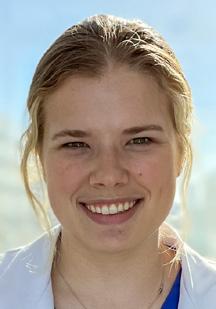
Elizabeth Beaubien is a fourthyear medical student at Wayne State University School of Medicine applying to emergency medicine residency in 2026. Prior to medical school, she worked as an emergency medical technician and paramedic in Texas, Michigan, Sierra Leone, and Jordan.
BRIEFS & BULLET POINTS
FEATURED NEWS
Sign Up for an SAEM Committee: Drive Change, Elevate Your Impact, Expand Your Network!
A valuable benefit of SAEM membership is the opportunity to serve on an SAEM committee. This involvement fosters leadership and teamwork skills, connects you with diverse professionals, and expands your network. Through committee participation, you can enhance your knowledge, stay updated on the latest innovations and best practices, and drive positive change within SAEM and the specialty. Your unique committee signup link for the 2025-2026 term was sent to your SAEM membership email on Sept. 8, 2025. If you didn’t receive it or have any questions, please contact us at governance@ saem.org Committee signups close on October 10, 2025.
Step Up for Leadership in 2025-2026! Nominations Open September 22
Nominations open for soon for key leadership positions on the SAEM Board of Directors, RAMS Board, SAEM Nominating and Bylaws committees, AACEM and SAEM academy executive committees, and the SAEM Foundation Board of Trustees. We’re looking for dynamic leaders who are not just committed but truly passionate about fostering growth and innovation within our community. If you or someone you know bring diverse perspectives, exceptional skills, and the experience to lead effectively, this is the perfect opportunity to step forward. This is your opportunity to make a lasting impact. Do you have what it takes? Or do you know someone who does? Visit our nominations webpage for more details on the nomination process. The deadline for submissions is November 7, 2025. Don’t miss this chance to lead and inspire!
Celebrate Excellence: Submit Your Nominations for SAEM and RAMS Awards
SAEM awards season opens October 1, and we invite you to join us in recognizing excellence in emergency medicine by nominating a colleague, mentor, or yourself for an SAEM or RAMS award. SAEM Awards celebrate excellence, honor achievements, and acknowledge the very best in academic emergency medicine research, education, and leadership. Check out the award categories and the nomination process and plan to submit your nomination by December 9! Your involvement is the key to making this season of recognition truly special.
STOP THE STIGMA EM
October is #StopTheStigmaEMMonth — Join the Movement!
SAEM Wellness Committee Announces Stop the Stigma EM Month Calendar of Events
Supporting physicians’ mental health is crucial in emergency medicine. By focusing on proactive care, we can foster well-being, enhance job satisfaction, and improve patient outcomes. Addressing issues like imposter syndrome and reducing stigma will help make mental health a priority. This October, during #StopTheStigmaEM Month, join us in promoting mental health in emergency medicine. Visit the Stop the Stigma EM Month webpage for a calendar of upcoming events and follow SAEM's social media for updates.
ANNUAL MEETING UPDATES
SAEM26 Submission Dates
Announced
SAEM26 is set for May 18–21, 2026, in Atlanta, Georgia! Submission
season is officially underway, and now is the time to plan ahead. Whether you’re proposing a workshop, didactic session, abstract, or other content, all key dates and submission links are available in one place: SAEM26 Submission Deadlines. Don’t miss your chance to be part of emergency medicine’s premier academic event!
Now Accepting Submissions for:
• Advance EM Workshops — due Sept.17, 2025
• Didactic s — due Oct. 2, 2025
• AEMP26 Year in Review —due Oct.2, 2025
Submissions Open Sept. 4 for:
• Education Keynote — due Nov. 6, 2025
SAEM25 Content Now Available on SOAR!
Great news for SAEM members — SAEM25 educational content is now live on the SAEM Online Academic Resources (SOAR) platform! Enjoy unlimited, on-demand access to hundreds of sessions presented by top experts in academic emergency medicine. This high-value resource is free for all SAEM members and available anytime, anywhere. Revisit your favorite sessions or explore something new — start watching today on SOAR
SAEM JOURNALS
Applications for AEM Editor-inChief Are Now Open!
The SAEM Board of Directors is seeking a visionary leader to succeed Dr. Jeffrey A. Kline, who will step down as editor-in-chief of Academic Emergency Medicine at the end of December 2026. Applications are officially being accepted, and we encourage leaders passionate about emergency medicine research to apply. Join us in shaping the future of this flagship publication. Learn more about this exciting opportunity!
Applications for AEM Editor-inChief Are Now Open!
The SAEM Board of Directors is seeking a visionary leader to succeed Dr. Jeffrey A. Kline, who will step down as editor-in-chief of Academic Emergency Medicine at the end of December 2026. Applications are officially being accepted, and we encourage leaders passionate about emergency medicine research to apply. Join us in shaping the future of this flagship publication. Learn more about this exciting opportunity!
Call for Papers: Special Issue on Geriatric Emergency Medicine
Academic Emergency Medicine journal announces a call for papers for a Special Issue on Geriatric Emergency Medicine. We welcome original research, reviews, case studies, and clinical guidelines on topics such as:
• Innovative models of geriatric ED care
• Polypharmacy and multimorbidity
• Risk stratification and screening tools
• Age-friendly health systems and the 4Ms
• Delirium, dementia, falls, and elder mistreatment
Deadline is October 31, 2025. Contact Elyssa.grogan@nyulangone.org for inquiries. Find full details and submission instructions here.
SAEM EDUCATIONAL COURSES
Accepting Applications for eLead and ARMED MedEd!
SAEM educational courses are designed to support and advance the careers of professionals in emergency medicine. Whether you’re looking to deepen your expertise in medical education research or enhance your leadership skills, these programs offer tailored experiences to help you achieve your goals.
• Advanced Research Methodology Evaluation and Design: Medical Education (ARMED MedEd): builds on foundational knowledge to help health professions education researchers design high-quality medical education research projects and grant proposals. Scholarships are available. Deadline: October 31.
• Emerging Leader Development Program (eLEAD): aimed at developing foundational leadership skills in emerging leaders within academic
UNLOCK YOUR POTENTIAL WITH THESE SAEM MEMBER RESOURCES
Whether you’re just starting out or advancing in your academic EM career, these resources are here to guide and support your journey:
• CDEM Mentorship Program
Now accepting applications through September 5! This revitalized program pairs earlycareer educators with experienced mentors to support professional growth, leadership development, and academic advancement.
• Residency Directory
Easily search, compare, and save top emergency medicine training programs. Filter by region, setting, and more. A must-use tool for students and residents exploring their next steps.
• AEUS Narrated Lecture Series
Boost your ultrasound skills with a comprehensive library of narrated
lectures. Members get full access through the AEUS portal; nonmembers can view select content on YouTube and Vimeo.
• Roadmap to Emergency Medicine Research Funding
New to research? This essential guide helps you navigate funding opportunities, from departmental and foundation grants to federal sources like the NIH.
• RAMS Roadmaps
Follow career-specific paths for med students, residents, and fellows. With 24 curated guides covering key focus areas, RAMS Roadmaps help you build a successful future in academic EM.
emergency medicine. Offers a structured, longitudinal experience to help participants build a meaningful career network and open new opportunities in their field. Deadline: October 31.
RESIDENTS & MEDICAL STUDENTS
Congratulations to the 2025-26 SAEMF Resident Reviewers
The Resident Reviewer Program (RRP) provides residents invaluable insight into the grant review process, mentorship on evaluating and scoring grants, and opportunities to engage with the SAEM Grants Committee. SAEMF is pleased to announce the 2025-26 Resident Reviewers:
• Mahlaqa Butt, DO, MPH
• Hannah Claire Edelson, MD, MPH
• Leyla Farshidpour, MD
• Anh Hoang, MD, MPH
• Henry Li, MD
• Emilia Ling, MD
• Grace Mosley, MD PhD
• Nabiha Nuruzzaman, MD
• William Reis, MD
• Laura Szczesniak, MD
Nominate a Senior Medical Student for Excellence in Emergency Medicine
Honor a graduating student who has shown exceptional promise in emergency medicine with SAEM’s Medical Student Excellence in Emergency Medicine Award. Each medical school may nominate one student annually. Recipients receive a certificate, free SAEM membership, journal subscriptions, and more. Submit nominations at least four weeks before the certificate is needed. Click Here to learn more and apply.
WEBINARS
New Month, New Webinars: September is Packed with Learning!
September kicks off strong with brandnew webinars packed with practical takeaways and timely insights on today’s
continued on Page 138
BRIEFS & BULLET POINTS
continued from Page 137
most relevant topics. And there’s more on the way — new webinars are added regularly! Explore the full lineup of live events and browse our ever-growing collection of recorded sessions in the SAEM Webinar Library.
• Education Committee Journal Club, Sept. 23
• Behind the Scenes of Academic Emergency Medicine: What it Really Means to Work in Academia, Sept. 24
• Leadership Unlocked: SAEM Nominations and Opportunities, Sept. 25
EM JOBS
Searching for That Next Job in Your EM Career? We Can Help!
Are you ready to take the next step in your career or broaden your professional network? Look no further than SAEM’s EM Job Link, your ultimate resource for
employment opportunities within the academic emergency medicine community. You’ll discover a curated selection of featured jobs and gain access to insightful tidbits that can help shape your career path. Elevate your career aspirations with SAEM’s EM Job Link!
NIH NEWS
Call for NIH Study Section Reviewers
Emergency Medicine faculty currently represent just 0.3% of NIH study sections. We need to change that! In addition to the Early Career Reviewer (ECR) program, the NIH is now inviting scientific societies to recommend expert reviewers from all career stages for study sections through its new Scientific Society – Reviewer Recommendations program. Let’s increase emergency medicine representation by nominating yourself or another expert for a study
section by September 30. More EM investigators on study sections mean more opportunities for success in emergency care research. Learn More
Accepting Applications: NeuroEM K12 Scholars Program
The Neuro-EM Scholars Program empowers early career emergency medicine physicians to lead transformative research in the neurological sciences. The program is committed to recruiting, training, mentoring, and supporting emerging physician-investigators across the United States. Its goal is to increase the number of emergency physicians conducting NIH-funded research on neurological disorders commonly seen in prehospital and emergency department settings. Now in its second year, the program is accepting applications for the 2025 cohort. The application period will close this fall. Take The Next Step
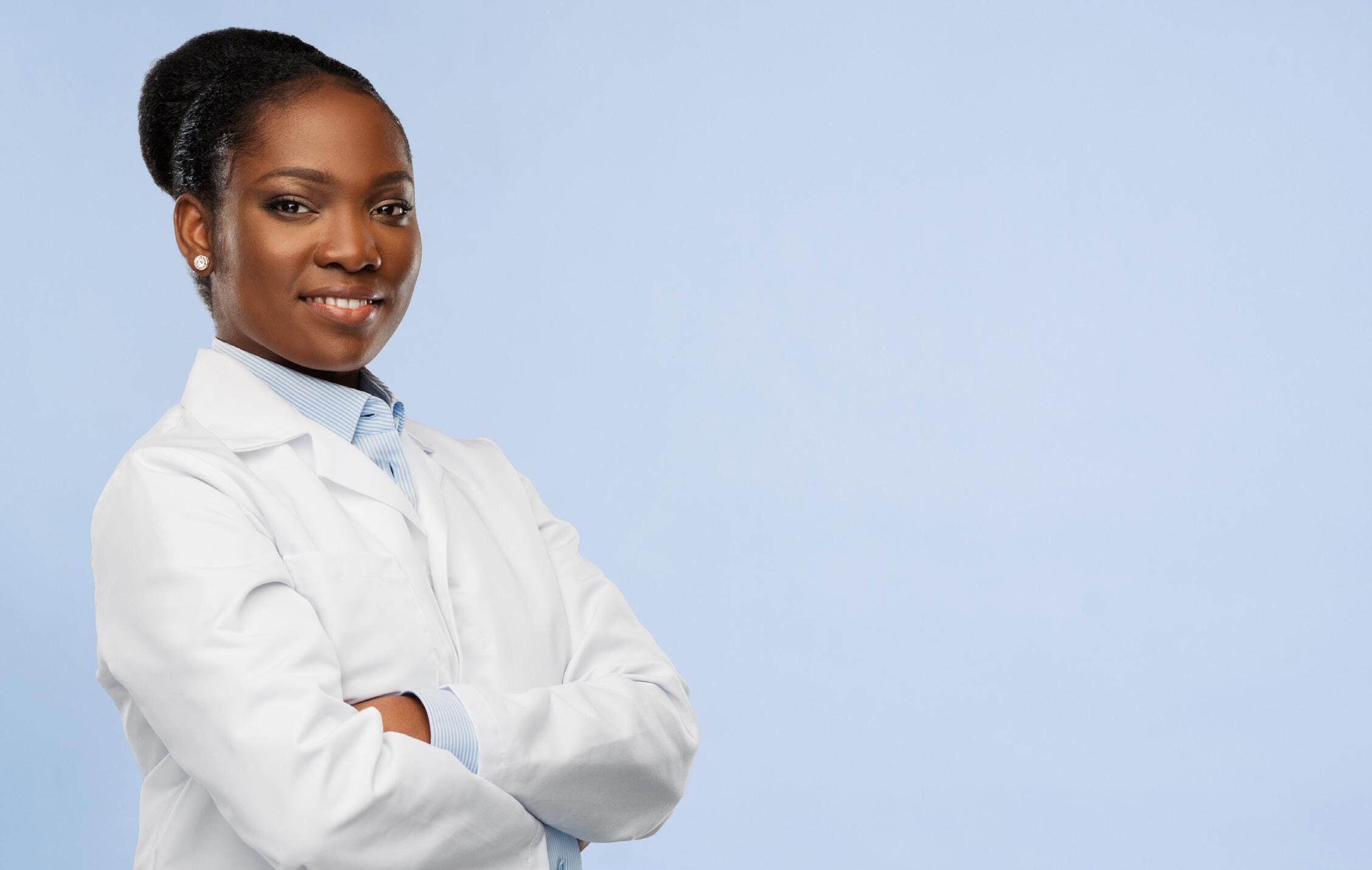
SAEM ACADEMY EXECUTIVE COMMITTEES 2025-2026
SAEM is pleased to announce your academy executive committees for 2025-2026. Congratulations to these newly elected academy leaders who were installed at SAEM25 in Philadelphia, Penn. in May.
Academy of Administrators in Academic Emergency Medicine (AAAEM)
President: Jennifer Patton Muir, EdD, MBA
President- Elect: Stephen G. Maxwell, MSM
Treasurer: Brendan Russell, MBA
Secretary: Frank Jurkiewicz, MBA
Immediate Past President: Becky McGowan, MBA
Members-at-Large: Cali Myers, MHA; Kashwayne Williams, MBA, MHA
Academy for Diversity & Inclusion in Emergency Medicine (ADIEM)
President: Sreeja (Sree) Natesan, MD
President-Elect: Ryan Ellis Tsuchida, MD
Secretary-Treasurer: Jason M. Rotoli, MD
Immediate Past President: Katrina A. Gipson, MD, MPH
Members-at-Large: Eliot Blum, MD; Moises Gallegos, MD, MPH; Tiffany Mitchell, MD
Development Officer: Melanie F. Molina, MD, MAS
Academy of Emergency Medicine
Pharmacists (AEMP)
President: Megan A. Rech, PharmD, MS
President-Elect: Kyle DeWitt, PharmD, BCEMP
Treasurer: Lance Ray, PharmD
Secretary: Evan Zahn
Academy of Emergency Ultrasound (AEUS)
President: Meera Muruganandan, MD
President-Elect: Liang Liu, MD
Treasurer: Andrew Goldsmith, MD, MBA
Secretary: Zachary Boivin, MD
Immediate Past President: Petra Duran-Gehring, MD
Research Officer: Youyou Duanmu, MD, MPH
Member-at-Large: Laura Oh, MD; Trent She, MD
Education Officer: Robert Stenberg, MD, FPD
Resident Member : Yusuke Kishimoto, MD
Academy of Geriatric Emergency Medicine (AGEM)
President: Kei Ouchi, MD, MPH
President-Elect: Cameron Gettel, MD
Treasurer: Anita Chary, MD, PhD
Secretary: Surriya Ahmad, MD
Immediate Past President: Katie Hunold Buck, MD
Members-at-Large: Ari Friedman, MD, PhD; Angel Li, MD; Adrian Haimovich, MD, PhD; Rachel Michelle Skains, MD, MSPH
Resident Rep: Sara Hurley, MD
Medical Student Rep: Audrey Lam; Erin Hunt
Academy for Women in Academic Emergency Medicine (AWAEM)
President: Margaret Samuels-Kalow MD, MPhil, MSHP
President-Elect: Laura Walker, MD, MBA
Treasurer: Rebecca Barron, MD
Secretary: Kellie McKenzie, MD
Immediate Past President: Amy Zeidan, MD
VP of Membership: Taylor Stavely, MD
VP of Education: Jennifer Love, MD
VP of Communications: Lauren Walter, MD, MSPH
VP of Corporate Develop.: Ynhi Thomas, MD, MPH, MSc
Resident Member: Alexa Van Besien (Baughan), MD
Clerkship Directors in Emergency Medicine (CDEM)
President: Amy Cutright, MD
President-Elect: Bradley S. Hernandez, MD
Treasurer: Alejandro Palma, MD
Secretary: Navdeep Sekhon, MD
Immediate Past President: Keme Carter, MD
Members-at-Large: Jennifer Carey, MD; Moises Gallegos, MD, MPH; Corlin Jewell, MD; Mark Olaf, DO; Jose V. Nable, MD
Global Emergency Medicine Academy (GEMA)
President: Megan Rybarczyk, MD, MPH
President-Elect: Vinay N. Kampalath, MD, DTM&H
Treasurer: Meagan Barry, MD, PhD
Secretary: Oriane Longerstaey, MD
Immediate Past President: Stephanie Chow Garbern, MD, MPH, DTM&H
Members-at-Large: Catalina Gonzalez Marques, MD, MPH; Emma Cortes, DO
Medical Student/Resident Rep: Adebisi Adeyeye, MD
Development & Grants Officer: Taylor Burkholder, MD, MPH
IT Chair: Rmaah Memon, MD
Program Committee Liaison: Florian Schmitzberger, MD
Simulation Academy
President: Tiffany Moadel, MD
President-Elect: Tina Chen, MD
Treasurer: Stephanie Stapleton, MD
Secretary: Alaa Aldalati, MD
Immediate Past President: Suzi Bentley, MD, MPH
VP of Membership: Stephanie Cohen, DO
VP of Research/Scholarship: Alexander Croft, MD
VP of Social Media & Comm.: Aga De Castro, MD, MPH
VP of Education: Julie Rice, MD
Fellow: Sarah Rabinowitz, MD; Katherine Stewart, MD
SAEM REPORTS
COMMITTEES
Introducing the SAEM Federal Funding Committee
SAEM is proud to announce the launch of its new Federal Funding Committee, a strategic initiative designed to help our members engage more effectively with federal research funding agencies. This committee was created to strengthen the bridge between academic emergency medicine investigators and the National Institutes of Health (NIH) and other federal partners, ensuring our community remains at the forefront of innovation and discovery.
Our Mission and Goals
The Federal Funding Committee is committed to building strong, strategic relationships with federal agencies and organizations, engaging directly with agency representatives, and promoting targeted funding opportunities, programs, and resources for SAEM members. By creating a direct line of communication with our federal partners, we aim to expand opportunities for emergency medicine investigators to contribute meaningfully to advancing science and improving patient care.
Committee Structure
To best align with the breadth of NIH’s institutes and centers, the committee is organized into focused subcommittees, each chaired by a leader in our field:
• National Institute on Aging (NIA): Tony Rosen
• National Institute on Drug Abuse (NIDA): Stephanie Carreiro
• National Heart, Lung, and Blood Institute (NHLBI): Jeff Kline
• National Institute of Mental Health (NIMH): Bernard Chang
• National Institute of General Medical Sciences (NIGMS): Faheem Guirgis
• National Institute on Alcohol Abuse and Alcoholism (NIAAA): Catherine Staton
• Eunice Kennedy Shriver National Institute of Child Health and Human Development (NICHD): Manish I. Shah
• National Institute on Minority Health and Health Disparities (NIMHD): Dowin Boatright
• National Institute of Neurological Disorders and Stroke (NINDS): Ope Adeoye
This structure allows our committee to provide institute-specific updates, insights, and guidance. In the months ahead, SAEM members can expect to see regular updates in SAEM Pulse highlighting new programs, upcoming funding opportunities, and strategic initiatives emerging from these agencies.
Looking Ahead
Our committee is excited to serve as a resource for SAEM members and to help guide the next generation of emergency medicine researchers toward impactful funding opportunities. We are committed to ensuring that our specialty is well represented in federal research priorities and to supporting investigators in navigating the funding landscape.
Stay tuned for updates in upcoming issues of SAEM Pulse as we share news and insights directly from our federal partners. Together, we can strengthen the voice of emergency medicine in the national research agenda.
Submitted by Manish N. Shah, MD, MPH, chair, SAEM Federal Funding Committee.
Bylaws and Governance
The
Evolving Role of the SAEM Bylaws and Governance Committee
The SAEM Board of Directors has undergone significant changes in recent years, driven by advances in the practice of emergency medicine (EM), the evolving needs of its members, and the integration of artificial intelligence in multiple facets of academic EM.
In response to these developments, the Board has called upon its Bylaws Committee to take a more active role in creating greater standardization and synergy with other SAEM committees. With this expanded mandate, the committee has undergone a pivotal transformation.
Recently renamed the Bylaws and Governance Committee (B&G), the group now has a broadened scope that extends beyond maintaining and revising bylaws. It is charged with shaping and supporting the structural and procedural governance of SAEM, positioning it for a more strategic and influential role within the organization.
The newly constituted B&G Committee includes an engaged team of elected members: Drs. Michael Gottlieb, Edgardo Ordoñez, Ronny Otero (chair), and Michelle Lall (SAEM president and Board liaison). Together, they bring diverse perspectives and deep institutional knowledge to ensure SAEM’s governance practices remain forward-looking, inclusive, and responsive to the needs of academic EM.
Among the committee’s most significant updates is the creation of a permanent seat on the SAEM Board for the past president of the Association of Academic Chairs in Emergency Medicine (AACEM). This initiative strengthens collaboration between SAEM and AACEM while promoting continuity of leadership. The first to occupy this position is Lewis Nelson, MD, dean of the Charles E. Schmidt College of Medicine at Florida Atlantic University. The aim is to align the missions of SAEM and AACEM in advancing academic EM nationwide.
The committee has also added a rotating, nonvoting seat for a Residents and Medical Students (RAMS) liaison. Sarah Schulwolf, MD, currently serves in this role, attending meetings to provide perspective from SAEM’s RAMS membership—a vital viewpoint, as many policies affect student and resident physicians.
Beyond these structural updates, the B&G Committee is expanding its oversight to include legislative developments. Over the coming year, it will provide timely updates on legislative proposals that may affect SAEM members and the broader EM field, ensuring the organization remains informed and agile in the face of shifting health care policy and regulation.
Internally, the B&G Committee, with the SAEM Board, recently developed and implemented a standardized template for committee agendas. This initiative aims to improve consistency, clarity, and efficiency across all SAEM committees, supporting stronger communication and decision-making within the Society’s leadership and volunteer structure.
As SAEM continues to grow and adapt in a complex academic and health care environment, the expanded role of the B&G Committee underscores the Society’s commitment to strong governance and strategic foresight. With the Board’s guidance and the collaborative work of its members, the coming year promises meaningful advances that will shape the future of both the organization and the specialty it serves.
The B&G Committee will host a webinar this fall to share information about its role and the application process for committee positions. Details will be announced soon.
ACADEMIES
Academy of Emergency Medicine Pharmacy
From 3 to 340: AEMP Takes Off!
In just three years, the Academy of Emergency Medicine Pharmacists (AEMP) has grown from three members to more than 340, making it both the newest SAEM academy and the fastest-growing in more than a decade. SAEM encourages anyone who works with an EM pharmacist to share information about AEMP and invite them to join.
Upcoming Events (with Continuing Pharmacist Education):
• ACLS Pearls: September 30 at 1 p.m. Central Time
• JeopaRxdy: EM Pharmacist Takeover: November 19 at 2 p.m. Central Time
New Committees:
• Pharmacy Student & Trainee Advancement Team (RxSTAT): Focused on engaging pharmacy students, residents, and fellows in emergency medicine, critical care, clinical toxicology, and related specialties. A national RxSTAT Chapter Coordination Call is planned for late fall. Those interested in supporting or launching a chapter can contact AEMP_RxSTAT@saem.org.
• Research Committee: Provides a platform for collaborative research and academic initiatives among EM pharmacists, physicians, residents, and students. The committee also supports professional development through mentorship in research funding, study design, data analysis, and scientific writing. Meetings are held monthly. Those interested can contact AEMP President Megan Rech at megan.a.rech@gmail.com
AEMP recently hosted a record-breaking PharmERgency Conference at SAEM25, with members, speakers, moderators, and attendees contributing to its success.
AEMP is currently regrouping committee members for the year. Those interested in joining can sign up here: AEMP 2025-2026 Committee Interest Form
INTEREST GROUPS
Educational Research
Advancing Emergency Medicine Education: SAEM’s Educational Research Interest Group
The Educational Research Interest Group of the Society for Academic Emergency Medicine (SAEM) is a community of more than 800 members dedicated to advancing education research in emergency medicine. The group’s mission is to foster innovation, collaboration, and excellence in educational scholarship by providing a platform for networking, mentorship, and the sharing of best practices.
The group supports researchers at all career stages, from early-stage investigators to established scholars, offering guidance on study design, methodology, and funding opportunities. Through workshops, collaborative projects, and didactic sessions, the group works to improve the quality and impact of educational research in emergency medicine.
By bridging the gap between theory and practice, the Educational Research Interest Group helps shape the future of emergency medicine education. Researchers and educators at any career stage are invited to engage with the group, share insights, and contribute to the advancement of knowledge in this critical field.
Membership in the SAEM Educational Research Interest Group is free and you can join anytime!
continued from Page 141
Evidence Based Healthcare and Implementation
Announcing the Winner of the Inaugural Rakesh Engineer Award
In honor of Rakesh Engineer, MD (1970–2019), a leader in emergency medicine implementation and knowledge translation, the SAEM Evidence Based Healthcare and Implementation Interest Group established the Rakesh Engineer Award at SAEM22. The award recognizes outstanding presentations in implementation science that drive meaningful change.
The inaugural winner was “Implementing an InstitutionSpecific Guideline for Febrile Neonates at a Community Hospital” by Alisha Ching, MD, and colleagues. Their multidisciplinary project created hospital-specific guidelines for managing febrile neonates, based on the 2021 AAP recommendations.
Insights from the Team
What inspired this project?
After the 2021 AAP guidelines revealed variation in managing febrile neonates, Dr. Ching and colleagues set out to promote consistent care, streamline workflow, and standardize trainee education.
How was the team formed?
Mentors, residents, hospitalists, and research support collaborated to ensure continuity of care and data analysis.
Key takeaway
Even with an easy-to-use guideline, changing provider practice proved challenging, with only modest improvements in adherence.
Future plans
Conduct focus groups to identify barriers and refine EHR alerts for abnormal labs.
Advice for others
Build a balanced team early—curiosity, openness, and flexibility matter more than prior expertise.
Sustaining the project
Residents sustain the effort by teaching incoming interns the febrile neonate guidelines year after year.
Submitted by Alisha Ching, MD, and Sangil Lee, MD, MS on behalf of the SAEM Evidence Based Healthcare and Implementation Interest Group.
Shape the Future of Academic
SAEM invites members passionate about academic emergency medicine (EM) to take the next step in their professional journey by serving as leaders within the organization.
SAEM seeks thoughtful, dedicated individuals who can navigate diverse perspectives, prioritize collective goals, and lead with integrity, vision, and collaboration to guide the future of the specialty.
Leadership Development
SAEM leadership does not require having all the answers on day one. Effective leaders listen, collaborate, and grow alongside peers. Those who believe in SAEM’s mission, have been engaged with the organization, are ready to invest time and energy, and want to support colleagues and the broader specialty are encouraged to step forward. Leadership is cultivated through mentorship, humility, and experience.
Qualities of an Effective Committee or Board Member
• Active involvement in SAEM interest groups, committees, academies, or workgroups
• Commitment to shared governance and SAEM’s mission
• Willingness to collaborate across diverse perspectives
• Clear, timely, and respectful communication
• Ability to synthesize input and make thoughtful, balanced decisions
• Respect for established processes, deadlines, and institutional knowledge
• Consistent preparation and engagement in meetings

Academic Emergency Medicine: Become a Leader in SAEM
• Transparency, accountability, and follow-through
• Openness to feedback and commitment to continuous learning
• Strategic thinking with a long-term perspective
• A spirit of service, humility, and collaboration over self-promotion
Opportunities to Get Involved
• SAEM Nominating Committee (Two-Year Term): Identifies and nominates candidates for elected positions, including the Board of Directors, ensuring diverse and qualified representation.
• SAEM Bylaws Committee (Three-Year Term): Reviews and updates SAEM’s governing rules, ensuring policies align with best practices, legal guidance, and the evolving academic mission.
• SAEM Board of Directors – Members-at-Large (Three-Year Term): Guides strategic priorities, supports committees and interest groups, sets the annual budget, and evaluates the chief executive officer. Many directors serve in this role, with some progressing to officer positions.
• SAEM Board of Directors – Resident Representative (One-Year Appointment): Provides insight from residents in ACGME-accredited EM programs. This position requires endorsement from residency leadership and offers mentorship alongside experienced leaders.
Responsibilities of the SAEM Board of Directors
1. Shape the strategic vision for academic emergency medicine
2. Oversee the fiduciary health of SAEM, including SAEM Foundation (SAEMF) and the Association

of Academic Chairs in Emergency Medicine (AACEM)
3. Partner with professional societies within and outside emergency medicine
4. Provide oversight and guidance for educational programming
5. Support initiatives related to diversity, equity, inclusion, and wellness
6. Guide long-term financial planning to ensure organizational stability
7. Evaluate the performance of the chief executive officer
8. Cultivate and mentor future leaders at all career stages
9. Oversee recruitment and hiring of editors-in-chief for Academic Emergency Medicine and AEM Education & Training
10. Address staff needs related to compensation, recruitment, and wellness
Key Dates
• September 22, 2025: Nominations open
• September 25, 2025: “Leadership Unlocked” webinar at 6 p.m. Central Time to learn more about SAEM leadership opportunities
• November 7, 2025: Nominations close
SAEM encourages members to nominate themselves or colleagues and help ensure a vibrant, inclusive, and innovative future for academic emergency medicine.
Submitted by Jeff Druck MD, Ali Raja MD, MPH and Angela Jarman MD, MPH on behalf of the 20252026 SAEM Nominating Committee.

“No other field offered the breadth of experience that EM does while allowing me to pursue other interests.”
Part 1: An Interview with RAMS Board Member-At-Large, Dr. Sara Schulwolf
By Mel Ebeling, MD on behalf of the SAEM Membership Committtee
My SAEM Journey is a new series highlighting residents and students who serve on the RAMS Board. In each installment, Mel Ebeling, an emergency medicine resident physician at the University of Cincinnati and RAMS Board Member-At-Large, interviews a board member about how they became involved in SAEM, what keeps them engaged, and how others can follow a similar path.
The first installment features Sara Schulwolf, MD, resident physician at the Harvard Affiliated Emergency Medicine Residency at Mass General Brigham, sharing her journey into leadership and involvement in academic emergency medicine.
Q: Tell us a little about your background and your path to emergency medicine?
Dr. Schulwolf: “I didn’t always know I wanted to go into emergency medicine, but there were signs pointing me in that direction during undergrad at Amherst College. I got involved in a student EMT group that worked with the fire department on campus and eventually served on its board. That first piqued my interest in medicine.
After college, I did research for a few years and then worked as a scribe in the emergency department where I am now a resident. Seeing emergency physicians in action from that vantage point really sparked my interest.
In medical school, I tried to keep an open mind about specialty choice. As I progressed, I realized that no other field offered the breadth of experience that EM does while allowing me to pursue other interests like public health and ultrasound.”
Q. What inspired you to join the RAMS Board and how has that experience shaped your medical school and residency experience?
Dr. Schulwolf: “When I started medical school, I participated in several ultrasound-related research projects, some of which were presented at SAEM during my first year. That was 2020, so the conference was virtual, but it got me on SAEM’s email list.
Later, while taking a year off to earn a master’s in public health, I realized I missed clinical medicine. When I saw the email about applying to the RAMS Board, I decided to apply to stay connected to EM. I also sought advice from mentors who had been involved with SAEM. Two years later, I’m still here!”
Q. Highlight some initiatives you have been involved with on the Board and the impact you hope they’ll have on members.
Dr. Schulwolf: “I was one of a few RAMS representatives
on a task force through CORD about changing the residency application platform from ERAS to ResidencyCAS. We provided the learner perspective on what was important, potential gaps in ERAS, and anticipated challenges with the new platform.
This led to a webinar that walked students through ResidencyCAS, which we’ll repeat this year. Information like this can be really powerful, especially for students who don’t have strong advising at their home institutions.
I also serve as a liaison to the Research Committee, writing SAEM Pulse articles highlighting emerging researchers and residents involved in research. This helps trainees see how research can fit into residency and early career paths.”
Q. What are the biggest challenges for EM trainees today and how RAMS help address them?
Dr. Schulwolf: “Generating interest in EM is a challenge, especially with fluctuations in competitiveness for residency applications. Some students may not see themselves as typical EM applicants, particularly those interested in research. RAMS highlights diverse career paths—research, wilderness medicine, ultrasound—to show that there isn’t just one type of EM doctor.
The changing landscape of assessment, including updates to ACGME requirements and board examinations, can also be confusing. RAMS works to stay on top of these updates and share accurate information so members are well-informed.”
Q. What does being on the RAMS Board involve?
Dr. Schulwolf: “Because the RAMS Board is composed of residents and students, we all recognize how busy everyone is. Being a board member isn’t a huge daily lift. It mainly involves checking emails, sending updates to colleagues, and attending meetings, such as monthly board or project-specific meetings.
It’s also a great way to practice time management and stay organized while contributing meaningfully to the organization.”
Q. What’s one thing you wish more people knew about RAMS or SAEM?
Dr. Schulwolf: “There are many opportunities for residents and students to get involved in research and other initiatives—it’s never too early. Also, RAMS is a lot of fun! The SAEM Board of Directors is made up of extremely accomplished individuals who are approachable and willing to mentor. It’s a welcoming and engaging community.”
ACADEMIC ANNOUNCEMENTS
UT Southwestern Faculty Members Receive Promotions






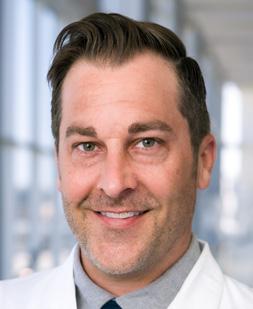
Congratulations to the following University of Texas Southwestern Department of Emergency Medicine faculty members who recently received academic promotions: Nathaniel Bonfanti, MD; Alexander Koyfman, MD; Mary McHugh, MD; Prayag Mehta, MD; Brian Miller, MD; Joby Thoppil, MD; and Dustin Williams, MD. Dr. Williams was promoted to professor, while Drs. Bonfanti, Koyfman, McHugh, Mehta, Miller, and Thoppil were promoted to associate professor.
Dr. Kristine Nañagas Promoted to Professor at Indiana University
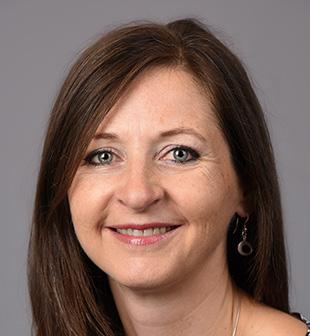
Kristine Nañagas, MD, has been promoted to professor of clinical emergency medicine at the Indiana University School of Medicine. She is division chief of medical toxicology and has served nearly two decades as medical director for the Indiana Poison Center. One of only six board-certified medical toxicologists in Indiana, Dr. Nañagas also serves on the Medical Toxicology Consult Service for Indiana University Health.
Dr. Nancy Glober Promoted to Associate Professor With Tenure at Indiana University
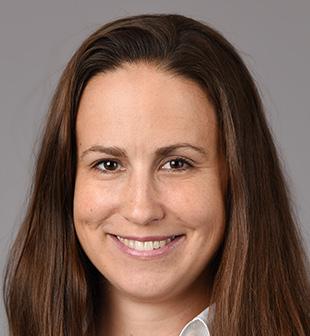
Nancy Glober, MD, has been promoted to associate professor of emergency medicine, with tenure, at the Indiana University School of Medicine. She serves as medical director for the Indiana University Health Transfer Center and deputy medical director for Indianapolis EMS. In 2021, Dr. Glober received the national CPR Foundation’s 40 Under 40 Award for significantly impacting out-of-hospital cardiac arrest outcomes in the United States.
University of South Florida Faculty Promoted to Associate Professor
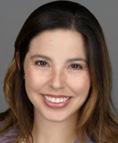
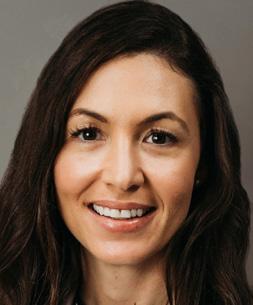


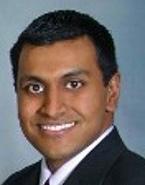
Congratulations to the following University of South Florida Department of Emergency Medicine faculty members who were recently promoted to associate professor: Melissa Leming, MD; Jasmine Patterson, MD; Stephanie Tershakovec, MD; Anish Zachariah, MD; and Enola Okonkwo, MD. All five faculty were promoted through the Appointment, Promotion, and Tenure process.
Dr. Daniel O’Donnell Promoted to Professor at Indiana University
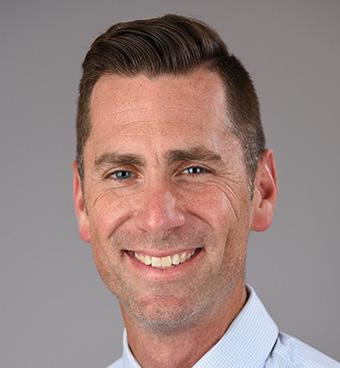
Daniel O’Donnell, MD, has been promoted to professor of clinical emergency medicine at the Indiana University School of Medicine. Dr. O’Donnell is division chief for out-of-hospital care (EMS), chief of Indianapolis Emergency Medical Services (IEMS), and medical director for the Indianapolis Metropolitan Police Department (IMPD). He also serves as lead physician for the Indianapolis Motor Speedway Snake Pit.
Dr. Robinson Ferre Promoted to Professor at Indiana University
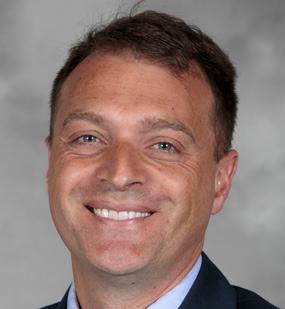
Robinson Ferre, MD, has been promoted to professor of clinical emergency medicine at the Indiana University School of Medicine. Dr. Ferre serves as division chief of emergency ultrasound and director of the IU School of Medicine Point-of-Care Ultrasound initiative. He has been recognized for his contributions to medical education with the Indiana University Trustees Teaching Award and the IU School of Medicine Scholar Educator Award.
Dr. Carl Pafford Promoted to Associate Professor at Indiana University
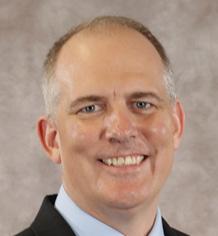
Carl Pafford, MD, has been promoted to associate professor of clinical emergency medicine at the Indiana University School of Medicine. He has served as Indiana University Health executive director of quality and safety, chair of the IU Health System Controlled Substances Stewardship Committee, and medical director of quality for community
Dr. Robinson Ferre
Dr. Nancy Glober
Dr. Daniel O’Donnell
Dr. Kristine Nañagas
Dr. Carl Pafford
Dr. Nathaniel Bonfanti Dr. Alexander Koyfman
Dr. Prayag Mehta
Dr. Mary McHugh
Dr. Brian Miller Dr. Joby Thoppil Dr. Dustin Williams
Dr. Melissa Leming Dr. Jasmine Patterson Dr. Anish Zachariah Dr. Stephanie Tershakovec
Dr. Enola Okonkwo
emergency medicine. Dr. Pafford has also served as a military physician with the Air Force Reserves and Air National Guard since 2013.
Dr. Benjamin Nti Promoted to Associate Professor With Tenure at Indiana University
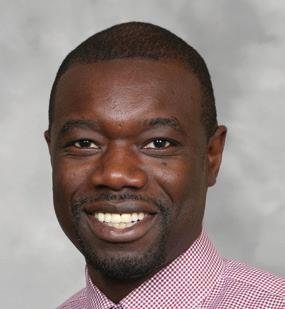
Benjamin Nti, MD, MSc, has been promoted to associate professor of emergency medicine and pediatrics, with tenure, at the Indiana University School of Medicine. Dr. Nti is associate director for the statewide pediatrics clerkship and has served as director of the pediatric ultrasound fellowship. He is a member of the Pediatric POCUS P2 Network Consortium and a national consultant for GE Ultrasound Software.
Dr. Nicholas Pettit Promoted to Associate Professor With Tenure at Indiana University
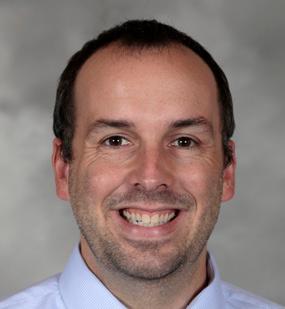
Nicholas Pettit, DO, PhD, MPH, has been promoted to associate professor of emergency medicine, with tenure, at the Indiana University School of Medicine. He serves as medical director for the Sidney and Lois Eskenazi Hospital Clinical Decision Unit. Dr. Pettit was the first to characterize the emergency department’s role in diagnosing lung cancer— particularly in advanced cases among patients without primary care physicians—in the American Journal of Emergency Medicine.
Dr. David H. Jang Awarded Second Active R01 Grant
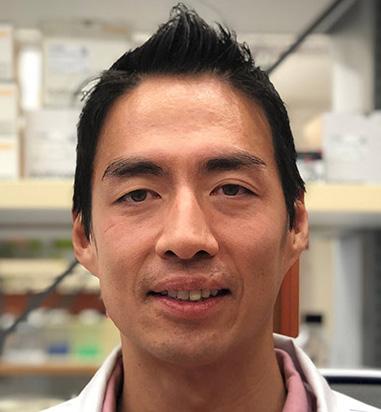
David H. Jang, MD, MSc, assistant professor of emergency medicine at the University of Pennsylvania School of Medicine, has been awarded his second active R01 grant from the National Institute of Environmental Health Sciences. His project, “Cell-free DNA Methylation Patterns and Mitochondrial Therapeutics in a Rodent Model of Organophosphate Poisoning,” will utilize a translational rodent model to study novel biomarkers and mitochondrial-based therapeutics. Dr. Jang is also director of biomolecular research at The Resuscitation Science Center at the Children’s Hospital of Philadelphia.
Dr. Laurel O’Connor Awarded K23 Grant

Laurel O’Connor, MD, associate professor of emergency medicine at UMass Chan Medical School, has been awarded a K23 career development grant from the National Heart, Lung, and Blood Institute. Her project, “Paramedic Evaluation for Acute COPD Exacerbation (PEACE),” will test and refine a community-based intervention for managing COPD exacerbations. The study aims to improve care delivery, reduce ED visits, and enhance quality of life for patients.
Dr. Cassandra Bradby Named Assistant Dean at East Carolina University
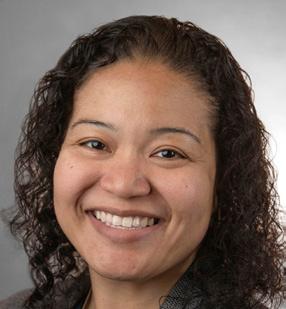
Cassandra Bradby, MD, has been appointed assistant dean for graduate medical education at The Brody School of Medicine at East Carolina University. Dr. Bradby has served as program director for the emergency medicine residency since 2019, been an active member of the GME Committee, contributed to special reviews, and participated in both CORD and SAEM on the national level. In her new role, she will lead special reviews, advance professional development, and spearhead institutional initiatives.
Dr. Michael DeFilippo Promoted to Assistant Professor at Washington U

Michael DeFilippo, MD, has been promoted to assistant professor of emergency medicine and EMS at Washington University in St. Louis. In his new role, he will focus on medical education, prehospital obstetric and cardiac arrest research, and improving research literacy and engagement for EMS clinicians.
James F. Holmes Appointed Chair of Emergency Medicine at UC Davis
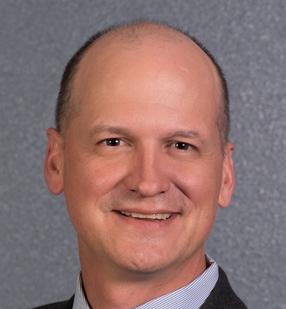
James F. Holmes, MD, MPH, has been named chair and Bo Tomas Brofeldt Endowed Chair of the Department of Emergency Medicine at the UC Davis School of Medicine, after serving as interim chair since July 2024.
Dr. Holmes is a distinguished clinical epidemiologist whose research focuses on the initial evaluation and care of injured patients, particularly children, including work validating prediction rules for intra-abdominal and traumatic brain injuries in the Pediatric Emergency Care Applied Research Network (PECARN), which has safely reduced unnecessary CT scans.
He founded the UC Davis Emergency Medicine Research Fellowship, co-directed the department’s K12 Research Training Program, and currently directs the Clinical Translational Science Center’s KL2 Research Training Program.
Dr. Holmes served as president of the Society for Academic Emergency Medicine in 2020–21, guiding the organization through the first year of the COVID-19 pandemic.
Dr. Benjamin Nti
Dr. Laurel O’Connor
Dr. Michael DeFilippo
Dr. Nicholas Pettit
Dr. David H. Jang
Dr. Cassandra Bradby
Dr. James F. Holmes
NOW HIRING
POST YOUR OPEN JOBS IN FRONT OF OUR QUALIFIED CANDIDATES!

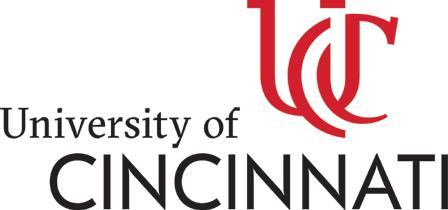
Associate Professor / Professor, Geo, Vice Chair of Research, Department of Emergency Medicine
Founded in 1819, the University of Cincinnati ranks among the nation’s best urban public research universities. Home to 53,235 students, more than 11,000 faculty and staff and 350,000+ living alumni, UC combines a Top 35 public research university with a physical setting the New York Times calls “the most ambitious campus design program in the country.”
With the launch of Next Lives Here, the Cincinnati Innovation District, a $100 million JobsOhio investment, three straight years of record enrollment, worldwide leadership in cooperative education, a dynamic academic health center and entry into the Big 12 Conference, UC’s momentum has never been stronger. UC’s annual budget stands at $1.85 billion, and its endowment totals nearly $1.8 billion.
Job Overview
The Department of Emergency Medicine at the University of Cincinnati College of Medicine is seeking an accomplished and visionary leader for the position of Vice Chair of Research. This role will provide strategic oversight of all research initiatives within the department, fostering a collaborative, innovative, and impactful research environment. The Vice Chair will work closely with faculty, fellows, and residents to elevate the department’s research portfolio, secure external funding, and promote the department’s national reputation in emergency medicine research. Faculty Appointment Rank, Endowed Chair and tenure – track will be commensurate with experience.
Essential Functions
• Develop and implement the department’s strategic research vision, aligned with institutional goals and national priorities.
• Promote a culture of mentorship by guiding junior faculty and trainees in developing research skills, securing funding, and achieving scholarly success.
• Identify, pursue, and secure external funding opportunities, including NIH, foundation, and industry grants.
• Collaborate with the Office of Research to support sponsored programs, budgeting, and regulatory approvals.
• Strengthen the department’s partnerships with other research entities within the College of Medicine and UC Health.
• Build and maintain relationships with external partners, including other academic institutions and funding agencies.
• Promote research innovation through partnerships with clinical trials, translational research, and community-based initiatives.
• Lead the development of research curricula for residents and fellows.
• Mentor faculty and trainees to advance their scholarly activity, publications, and grant submissions.
• Provide leadership and oversight of research infrastructure and resources, including budget management and compliance.
• Represent the Department of Emergency Medicine at national conferences and meetings, promoting the department’s research achievements.
Minimum Requirements
• M.D., D.O. or foreign equivalent.
• Successful completion of an Emergency Medicine Residency.
• A demonstrable record of success in academic achievement, with incrementally increased regional and national reputation and funding.
Compensation and Benefits
UC offers a wide array of complementary and affordable benefit options, to meet the financial, educational, health, and wellness needs of you and your family. Eligibility varies by position and FTE. Competitive salary range dependent on the candidate’s experience.
For full description and to apply, please visit https://bit.ly/3ZooK8J
To learn more about why UC is a great place to work, please visit our careers page at https://www.uc.edu/careers.html
FOR ALL FACULTY HIRES OFFICIAL ACADEMIC TRANSCRIPTS WILL BE REQUIRED AT THE TIME OF HIRE
For questions about the UC recruiting process or to request accommodations with the application, please contact Human Resources at jobs@uc.edu
The University of Cincinnati is an Equal Opportunity Employer.


Penn State Health Emergency Medicine
About Us: Penn State Health is a multi-hospital health system serving patients and communities across central Pennsylvania. We are the only medical facility in Pennsylvania to be accredited as a Level I pediatric trauma center and Level I adult trauma center. The system includes Penn State Health Milton S. Hershey Medical Center, Penn State Health Children’s Hospital and Penn State Cancer Institute based in Hershey, Pa.; Penn State Health Hampden Medical Center in Enola, Pa.; Penn State Health Holy Spirit Medical Center in Camp Hill, Pa.; Penn State Health Lancaster Medical Center in Lancaster, Pa.; Penn State Health St. Joseph Medical Center in Reading, Pa.; Pennsylvania Psychiatric Institute, a specialty provider of inpatient and outpatient behavioral health services, in Harrisburg, Pa.; and 2,450+ physicians and direct care providers at 225 outpatient practices. Additionally, the system jointly operates various healthcare providers, including Penn State Health Rehabilitation Hospital, Hershey Outpatient Surgery Center and Hershey Endoscopy Center.
We foster a collaborative environment rich with diversity, share a passion for patient care, and have a space for those who share our spark of innovative research interests. Our health system is expanding and we have opportunities in both academic hospital as well community hospital settings.
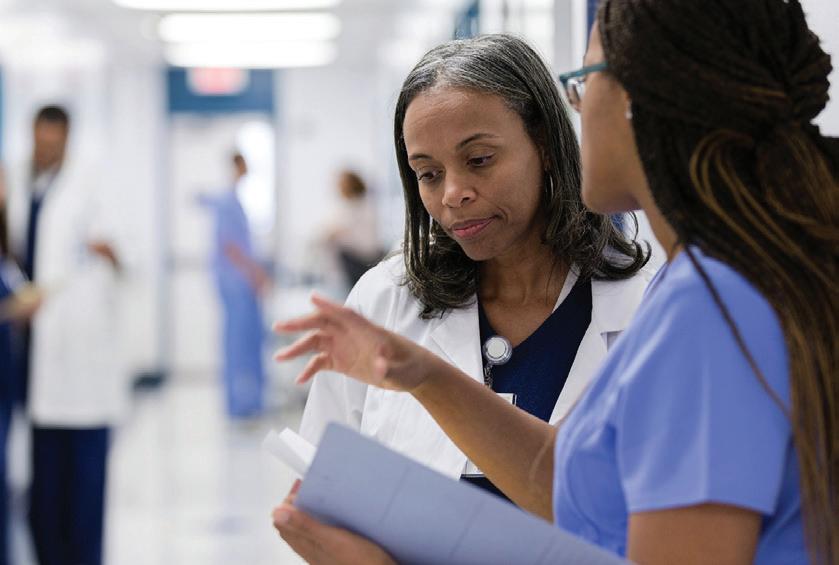
Benefit highlights include:
• Competitive salary with sign-on bonus
• Comprehensive benefits and retirement package
• Relocation assistance & CME allowance
• Attractive neighborhoods in scenic central Pennsylvania



May 18-21, 2026 | Atlanta Marriott Marquis
